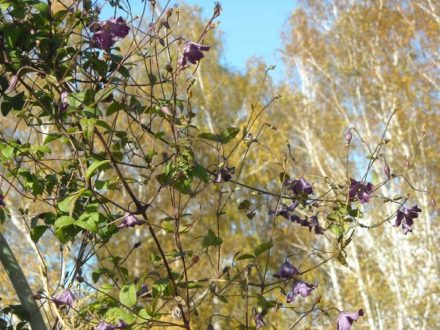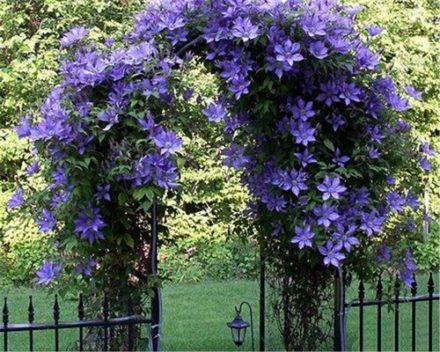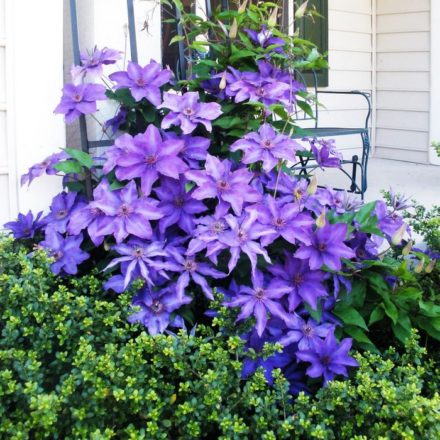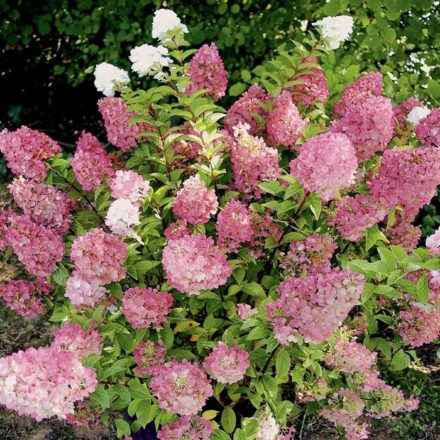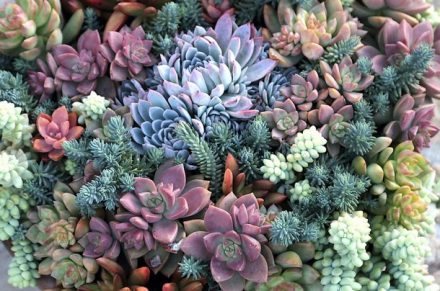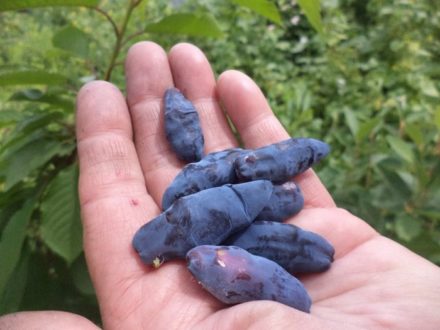Perennial plants of the ranunculaceae family are known for their resistance to frost. Clematis are grouped into groups and species for which agrotechnical care is performed. The maintenance of indoor and outdoor flowers has its own nuances that must be taken into account when growing.

- Botanical description
- Escapes
- Leaves
- Flowers
- Popular varieties
- Multi Blue
- Blue Light
- Purpurea Plena Elegance
- Rouge Cardinal
- Cardinal Vyshinsky
- Ville de Lyon
- Searing white cloud
- Taiga
- Manchurian
- Super Nova
- Pink Beauty
- The president
- Red Star
- Princess Diana
- Princess Kate
- Comtesse de Bouchaud
- Ernest Markham
- John Paul 2
- Hegley Hybrid
- Nellie Moser
- Blue Angel
- Lemon Dream
- Piilu
- Etoile Violet
- Innocent Blush
- Innocent Glance
- Arabella
- Ashwa
- Dr. Ruppel
- Maria Skłodowska-Curie
- Maria Kachinskaya
- Madame Julia Correvont
- Madame le Cultre
- May Darling
- Jacquemin Alba
- Niobe
- Kaiser
- Little Mermaid
- Utopia
- Warsaw night
- Duchess of Edinburgh
- Violet Elizabeth
- Miss Bateman
- Andromeda
- Rubens montana mountain
- Solidarity
- Pink Fantasy
- Alyonushka
- Etoile Violet
- Luther Burbank
- Sweet Summer Love
- Veronica Choice
- Snow Stormy
- Westerplatte
- Mazuri
- Barbara Jacqueman
- Beautyful Bride
- Daniel Deronda
- Viva Polonia
- Flower Ball
- Prince Charles
- Star of India
- Patricia Ann Fretwell
- Kiri Te Kanawa
- What colors does clematis come in?
- White
- Light blue and blue
- Violet
- Pink
- Yellow
- Others
- House conditions
- Humidity indicators
- Lighting
- Where to keep
- Home care
- Soil
- Container
- Watering
- Spraying
- Fertilizer
- Pruning
- Transplanting
- Dormant period
- Growing in open ground
- Choosing a place
- Soil
- Planting dates
- Planting
- Watering
- Fertilizer
- Pruning by groups
- Group 1
- Group 2
- Group 3
- Supports
- Dormant period
- Preparing for winter
- Spring processing
- Features of caring for a plant in the first year
- Reproduction
- Cuttings
- Bush division
- Layers
- Grafting
- Seeds
- Pests
- Beet aphid
- Snails
- Nematodes
- Spider mite
- Night moth
- Slug garden
- Bugs
- Rodents
- Scale insects
- Mole crickets
- Diseases
- Wilt or Wilt
- Phomopsis wilt
- Yellow mosaic
- Powdery mildew
- Rust
- Gray rot
- Growing problems
- Clematis does not bloom
- "Physiological" problems"
- Clematis in landscape design
- Reviews
- Where to buy
Botanical description
Clematis is known as clematis, or vine. There are about 300 species worldwide, differing in color, shape and size. Modern classification defines large-, medium- and small-flowered.
Shoots
Stems grow from dormant buds or roots at the base. Most varieties cling to supports and reach more than 4 m (some grow up to 5-8 m).
Vines that grow with a supporting structure, but do not cling, grow up to 2.5 - 3 m. Clematis with straight petioles grows independently and does not exceed 1 m in height.
Leaves
The foliage is simple (pinnate or entire) with one plate or complex (twice triple, odd-pinnate). Among the vines there are unique varieties with purple leaves.
Flowers
They grow singly or are collected in small inflorescences (shield, panicle, umbrella).
Semi-double clematis have 6-10 petals, double ones have up to 70 pieces.When flowering, they emit a light aroma of primrose, almond, jasmine or citrus.
Popular varieties
Among the wide variety of varieties, there are unique specimens that attract gardeners.
Multi Blue
A perennial herbaceous hybrid of the Patens group reaches up to 2.5 m in height. It blooms on young and last year's shoots in early spring. The leaves are dark green, with a pointed end. Plate length up to 10 cm. Matte surface.
As the season progresses, the flexible green vines take on a brown tint. Double blue-violet flowers (up to 20 cm in diameter) appear on them. The sepals are arranged in two rows. The upper petals are oval with a sharp end, the lower ones are pubescent. Their number varies from 6 to 8 pieces.
Average resistance to frost.
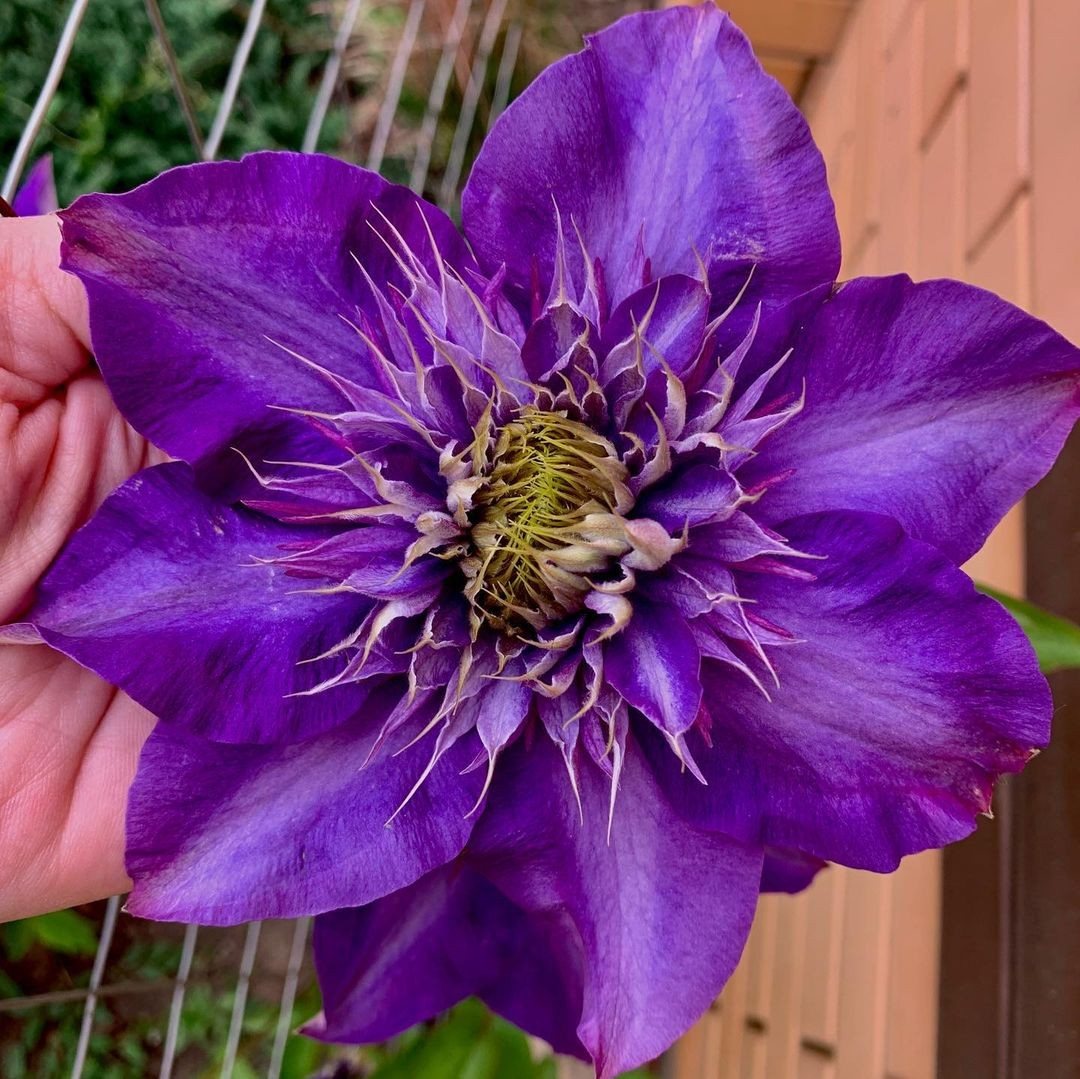
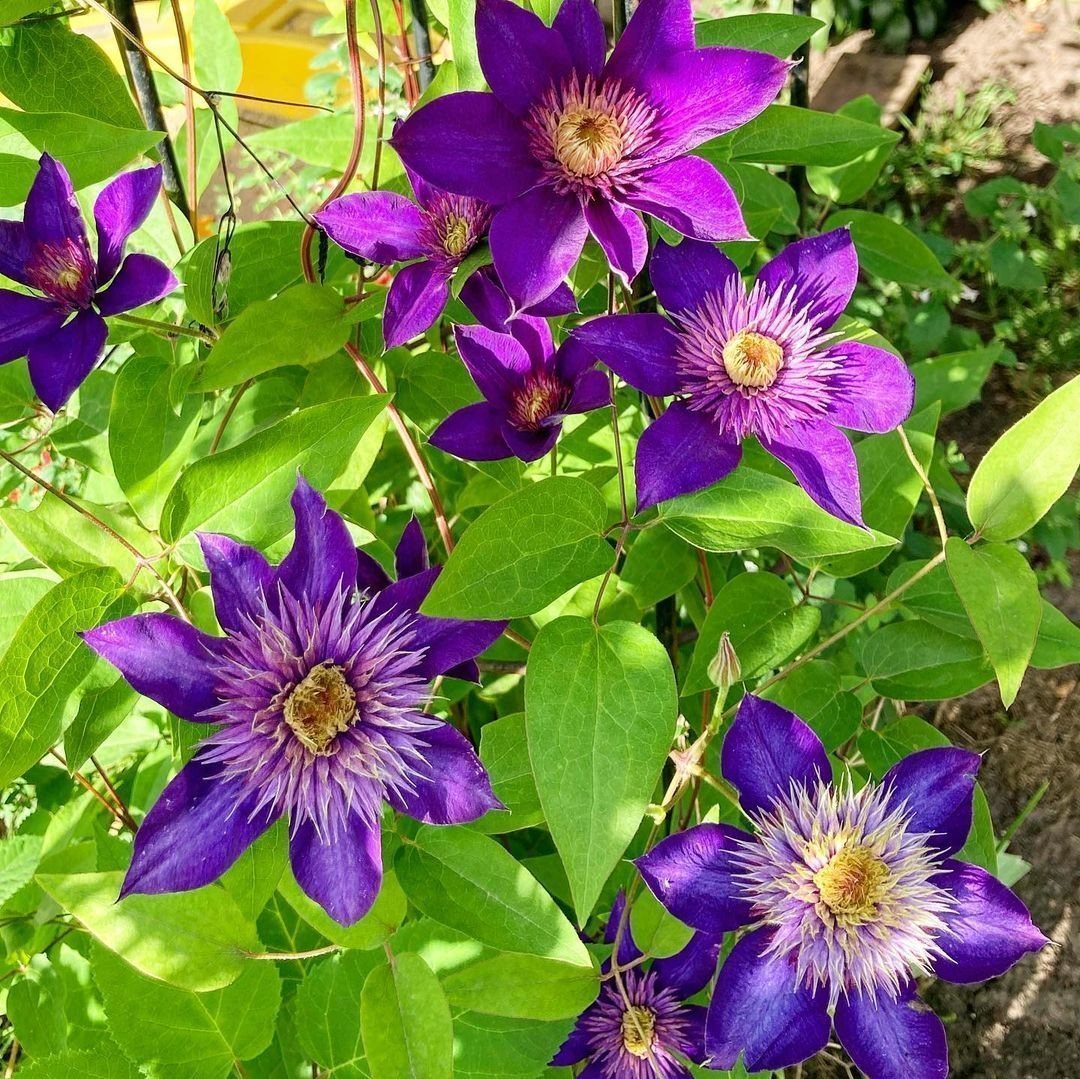
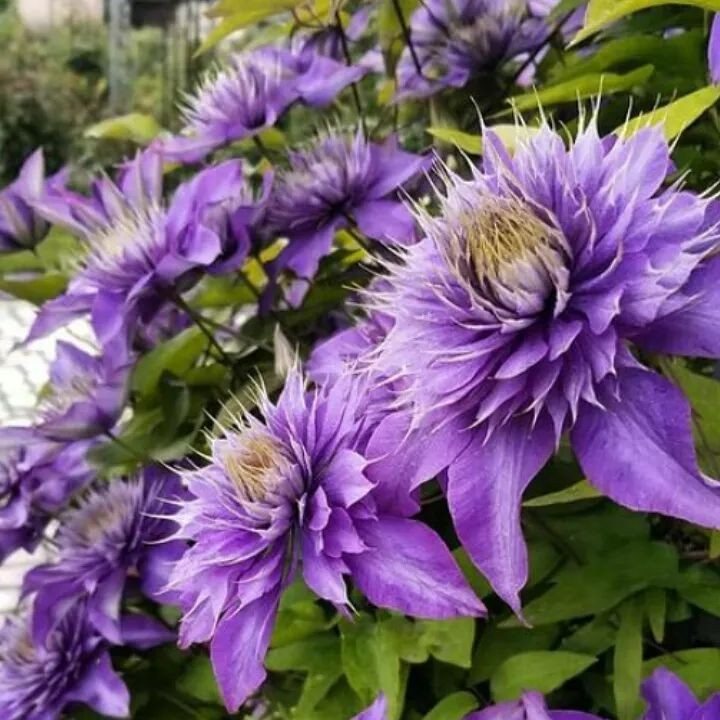



Blue Light
The climbing plant blooms twice per season: from May to June and from July to October. Buds develop from last year's shoots. Terry lilac flowers 15 cm long have a spherical shape.
The plates are dark green, matte. The structure is complex and trifoliate.
Clematis grows up to 2 m. Resistant to severe frosts and diseases.
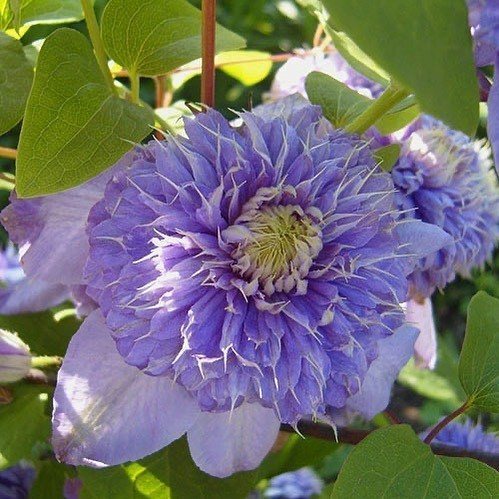
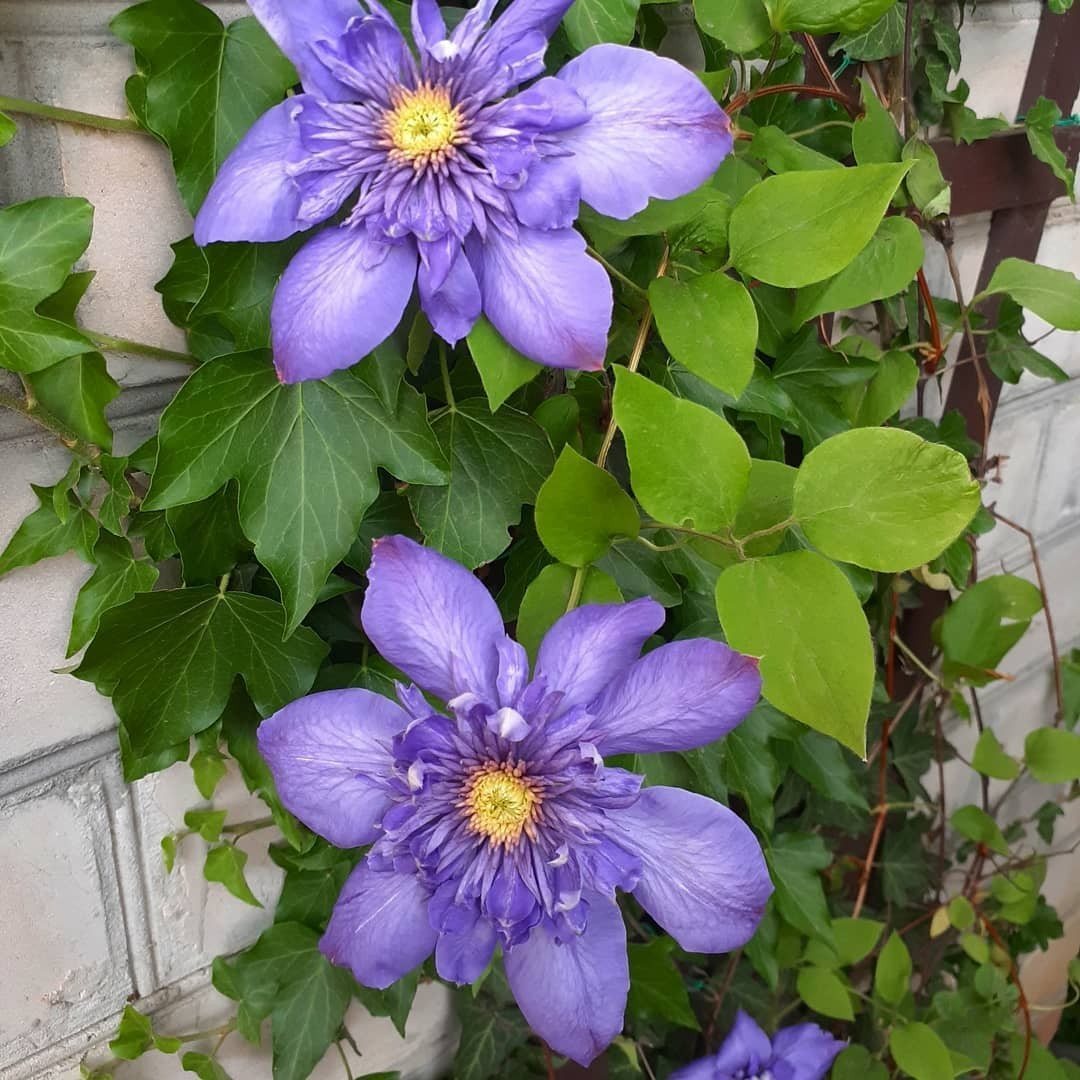
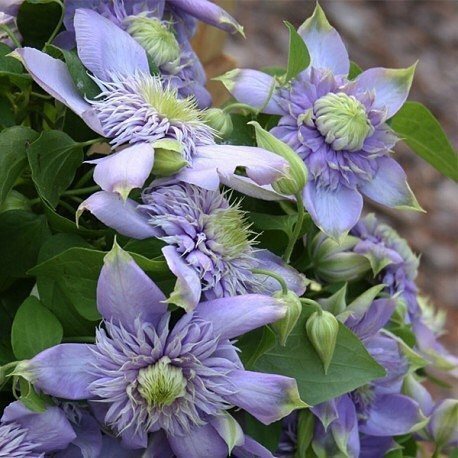



Purpurea Plena Elegance
A herbaceous plant with small flowers belongs to the Viticella group. Double buds develop on young shoots from late June to September. Up to 130 buds with a diameter of 5 cm open on one stem.
They begin to ripen cherry-colored, then turn dark crimson or purple-violet.
Ellipsoidal plates with a glossy surface.
Purpurea grows up to 3.5 meters in height. Withstands severe frosts down to -40°C.
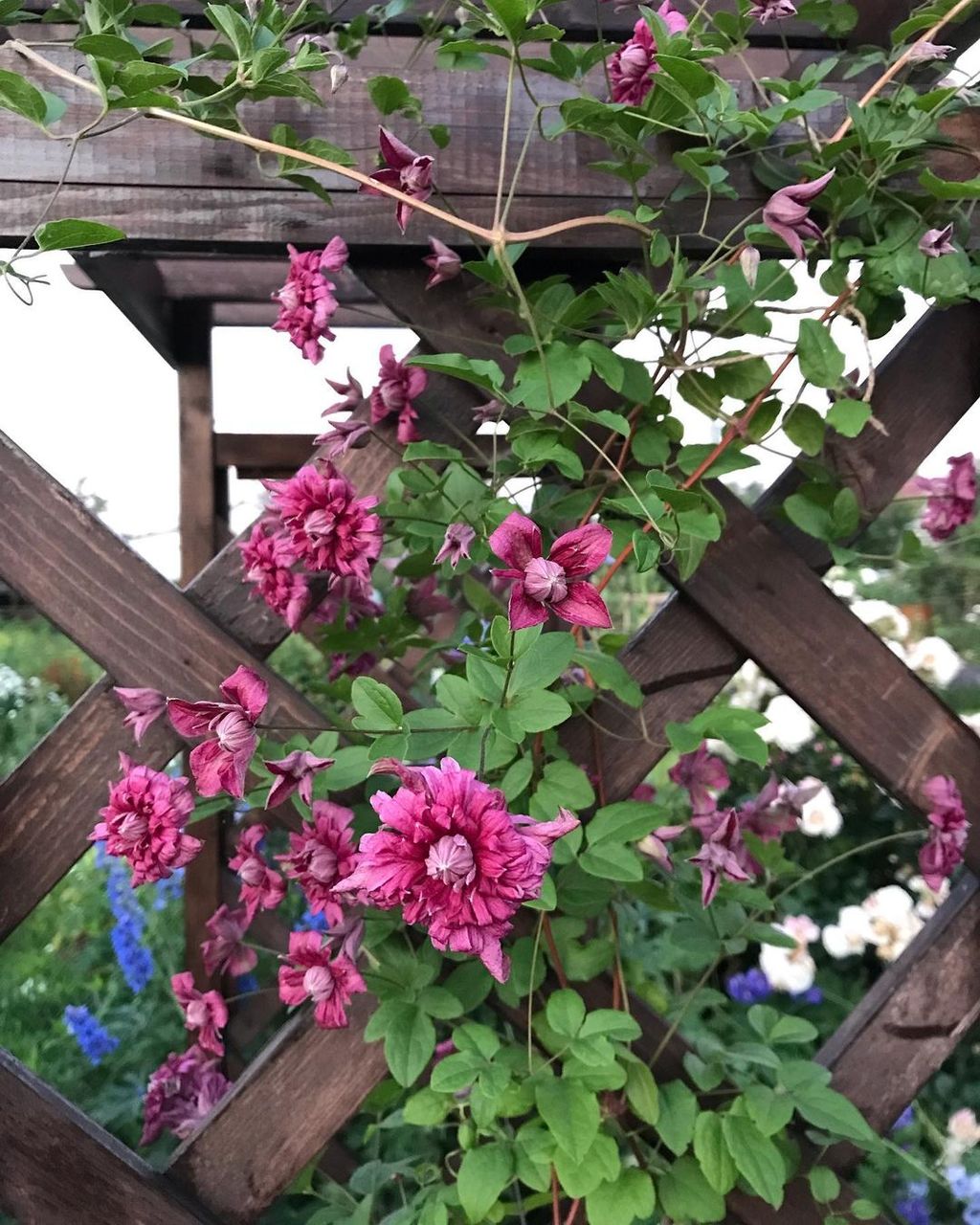
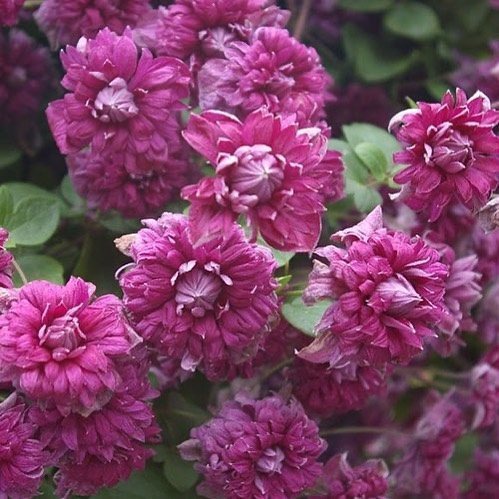
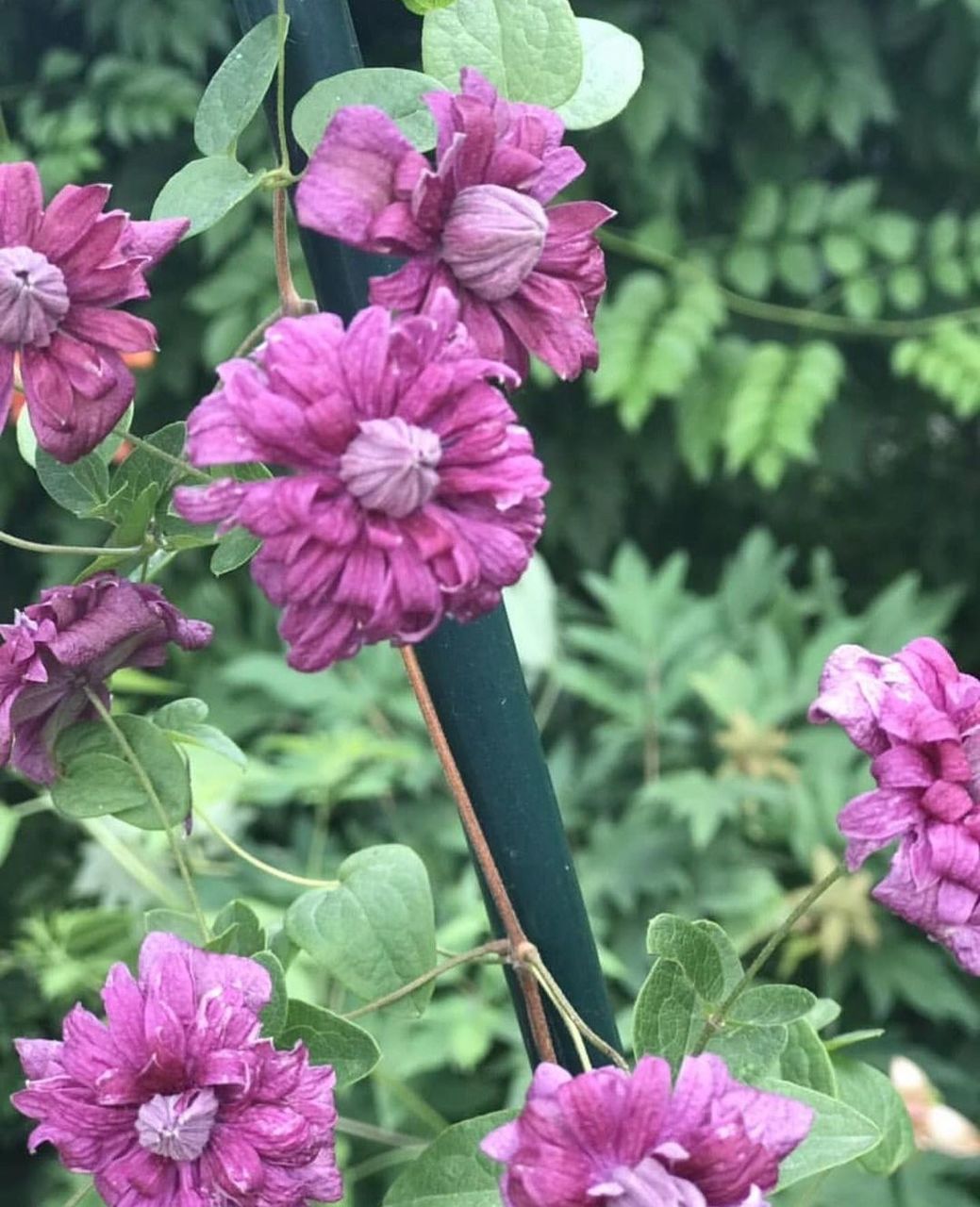



Rouge Cardinal
The bush liana is part of the Jacqueman group and grows up to 3 m in height. Large burgundy or purple sepals (15 cm) with oval petals bloom in June-July.Trifoliate, pinnate leaves of medium size. The leaf plate is glossy.
Variety Rouge Withstands temperatures down to - 34°C. Grows in light or partial shade on the south side.
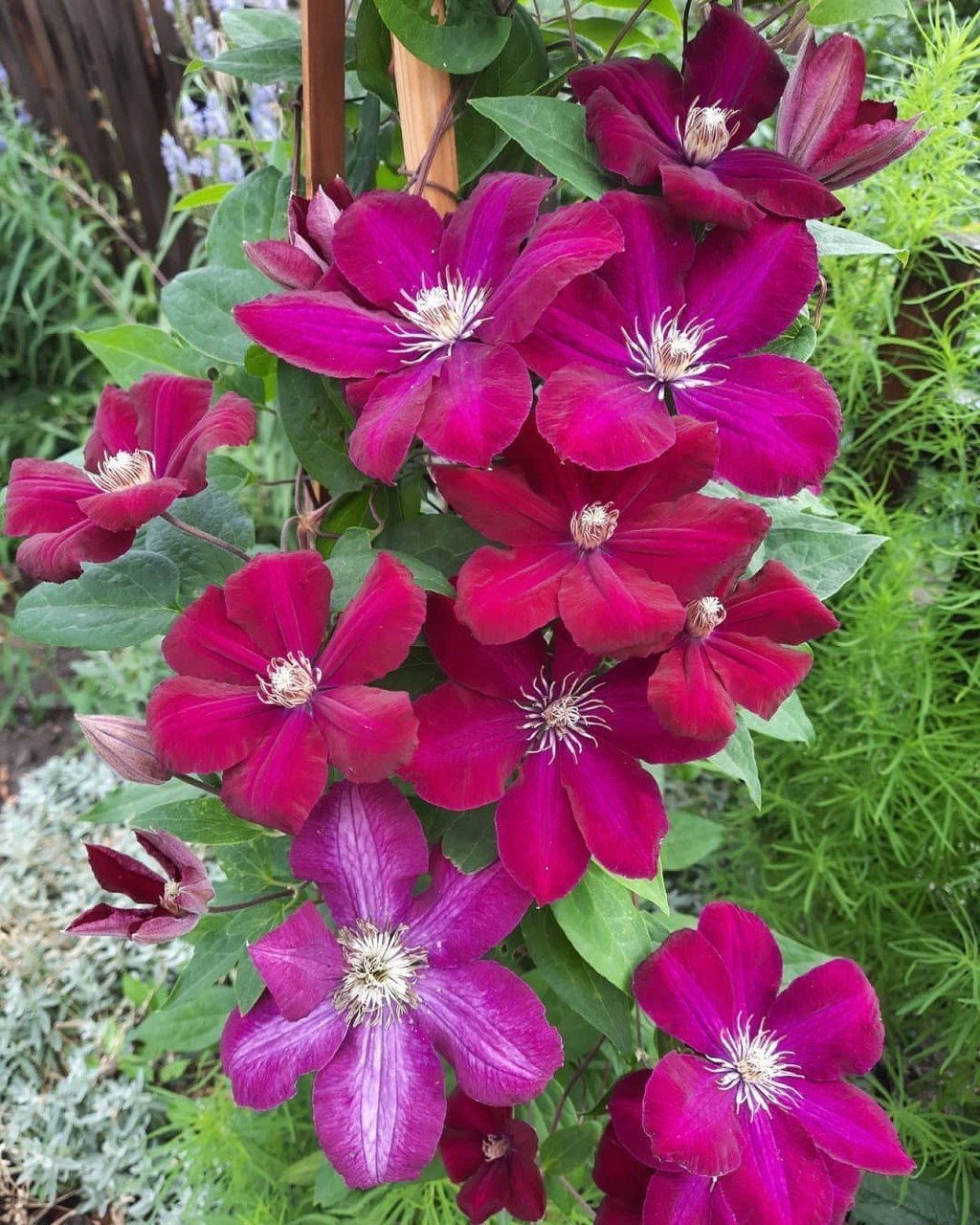
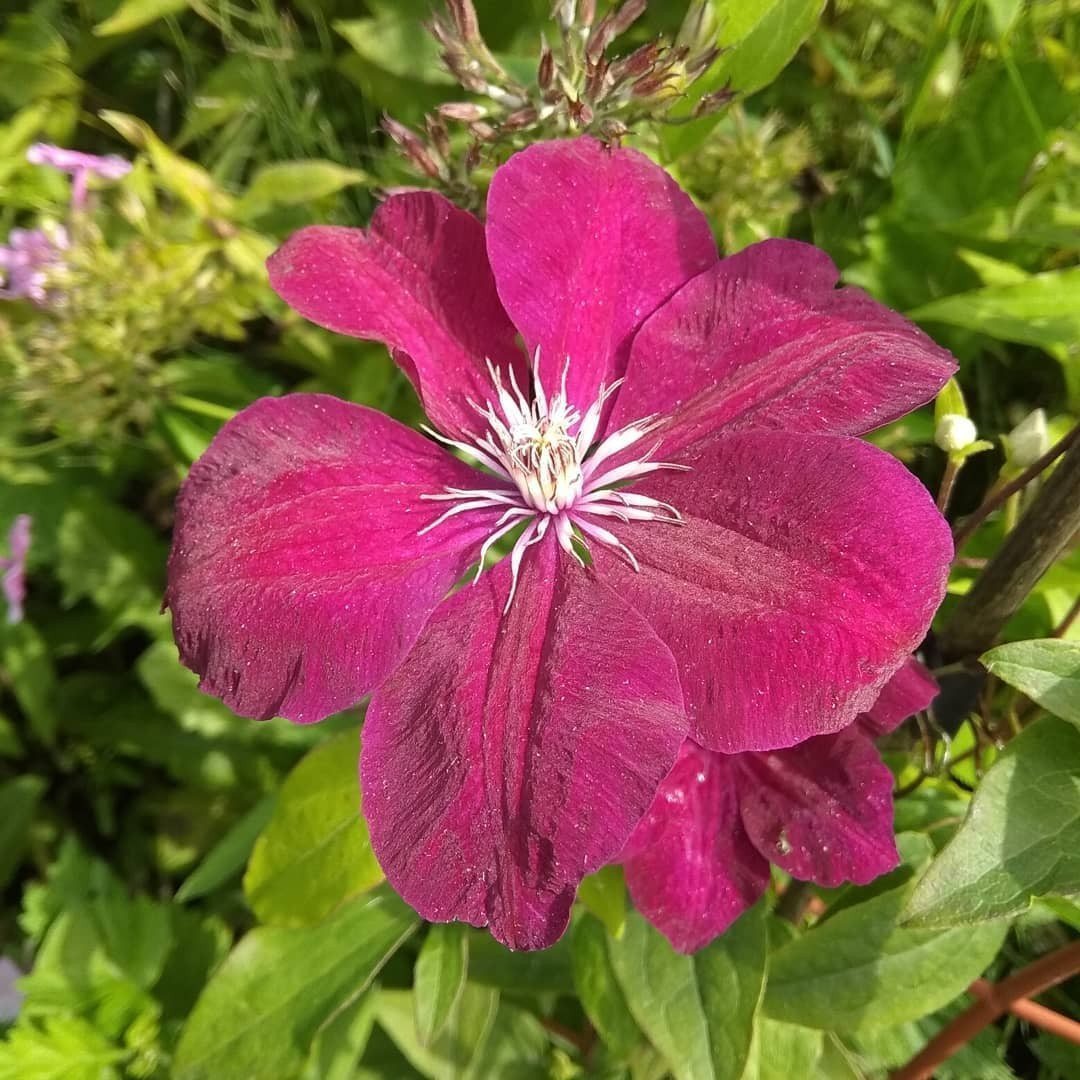
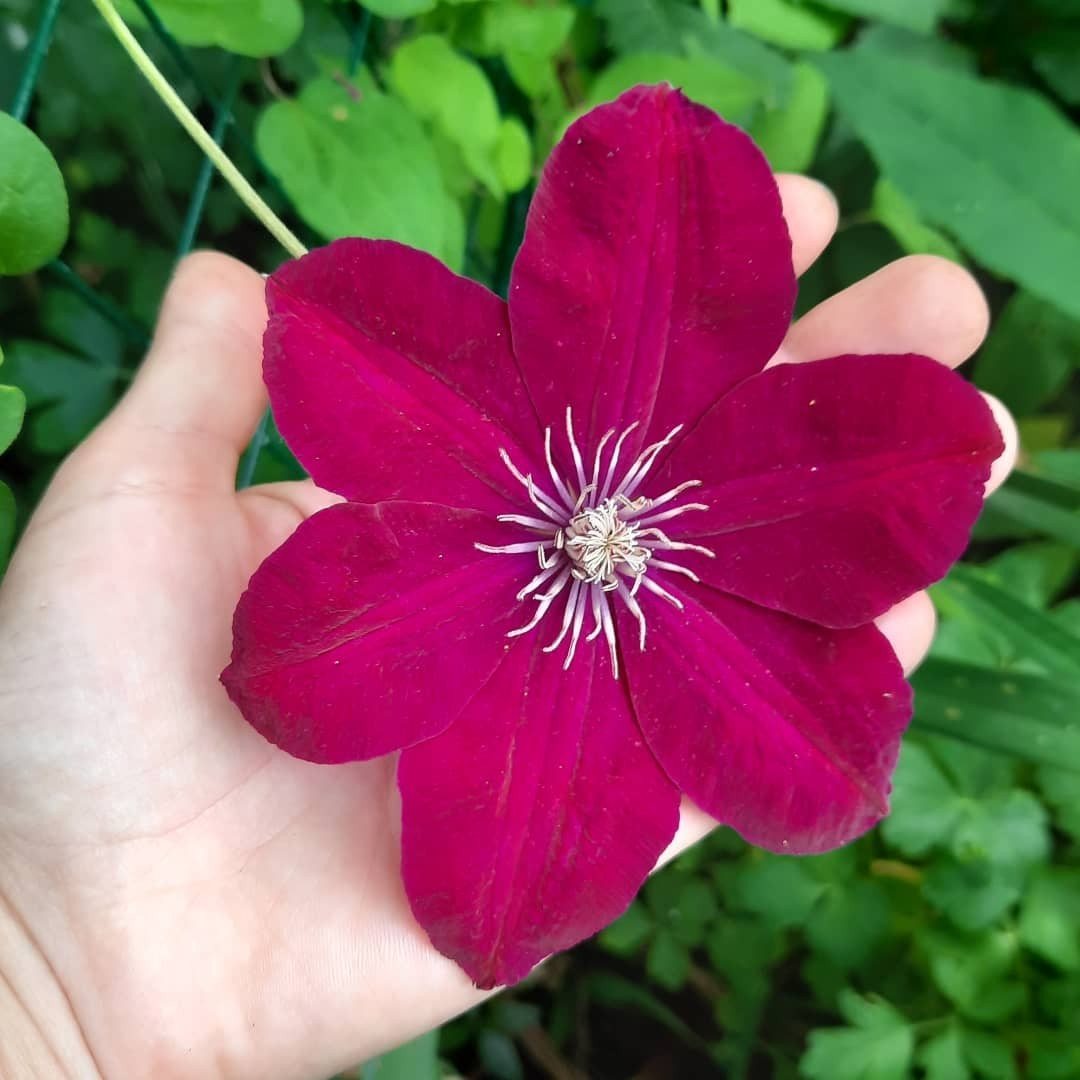



Cardinal Vyshinsky
Belongs to herbaceous vines. Hybrid flowers are formed on young shoots that grow up to 3 meters. The sepals consist of 6 petals, diameter 20 cm. The dark red tips turn purple at the base. Growing season: June-September.
Elongated leaves with a pointed end up to 8 cm wide. The leaf blade is emerald green, with pointed edges.
Plants are not afraid of drought, excess moisture and frost. Frost resistance is high, up to -35 ℃.
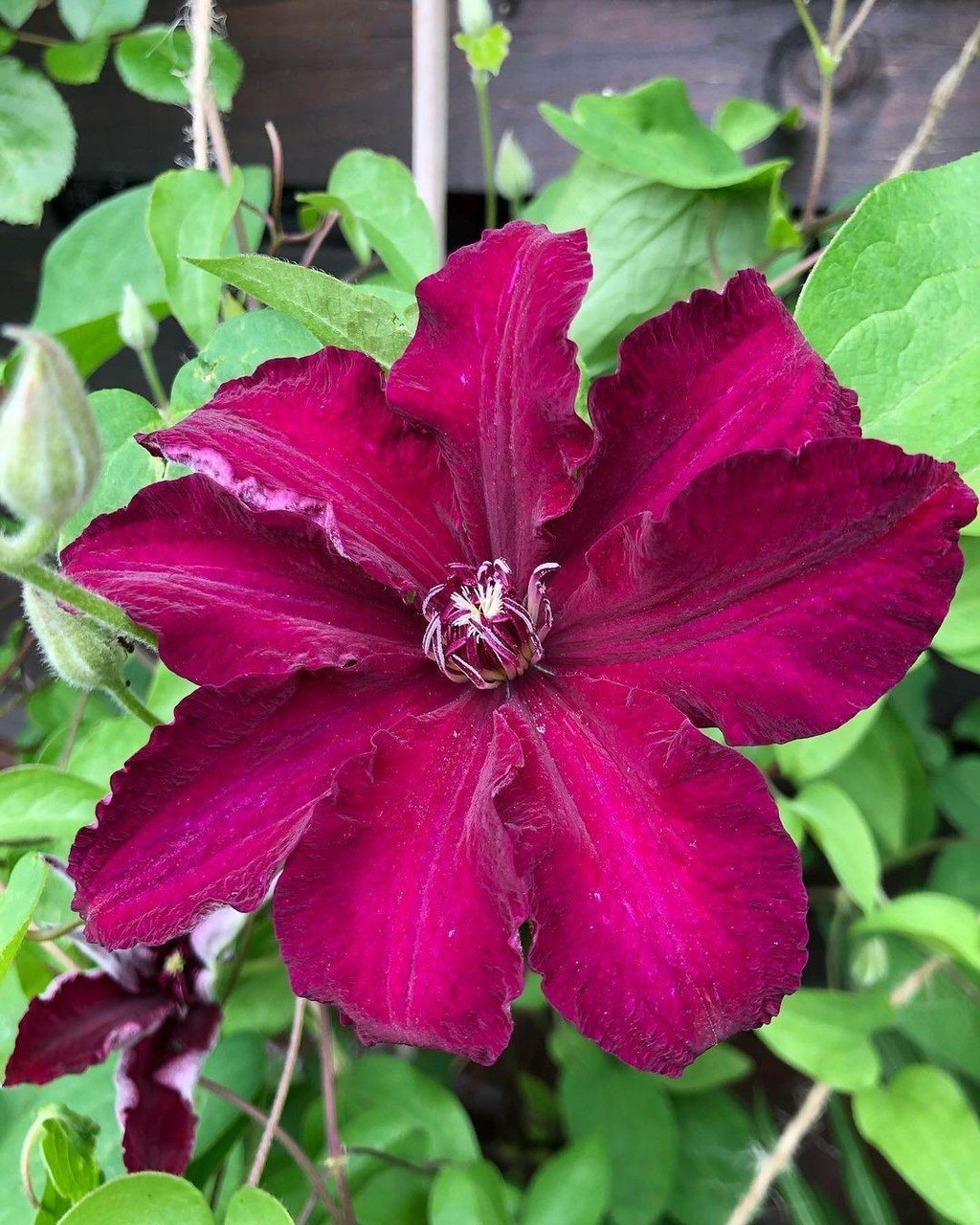
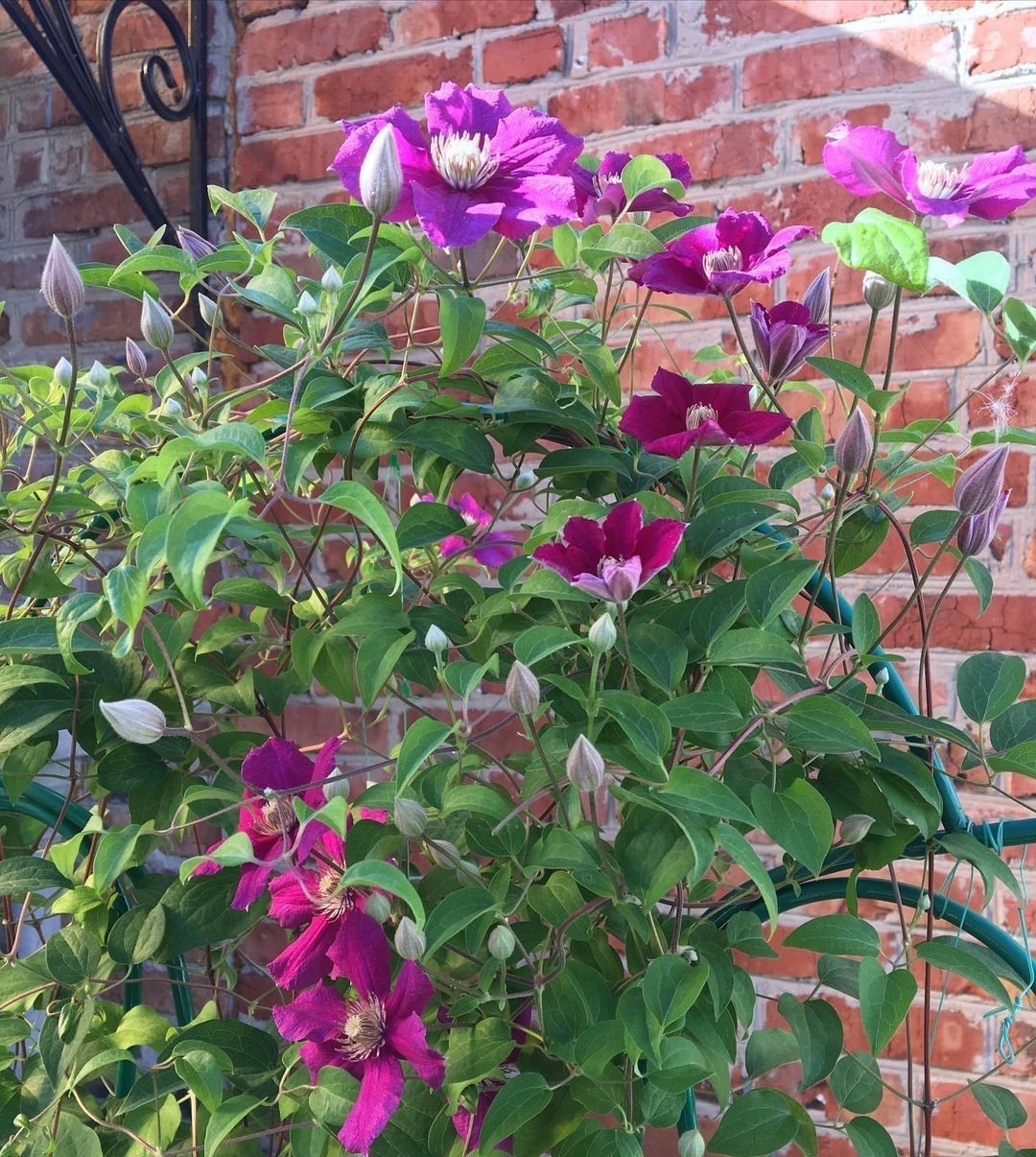
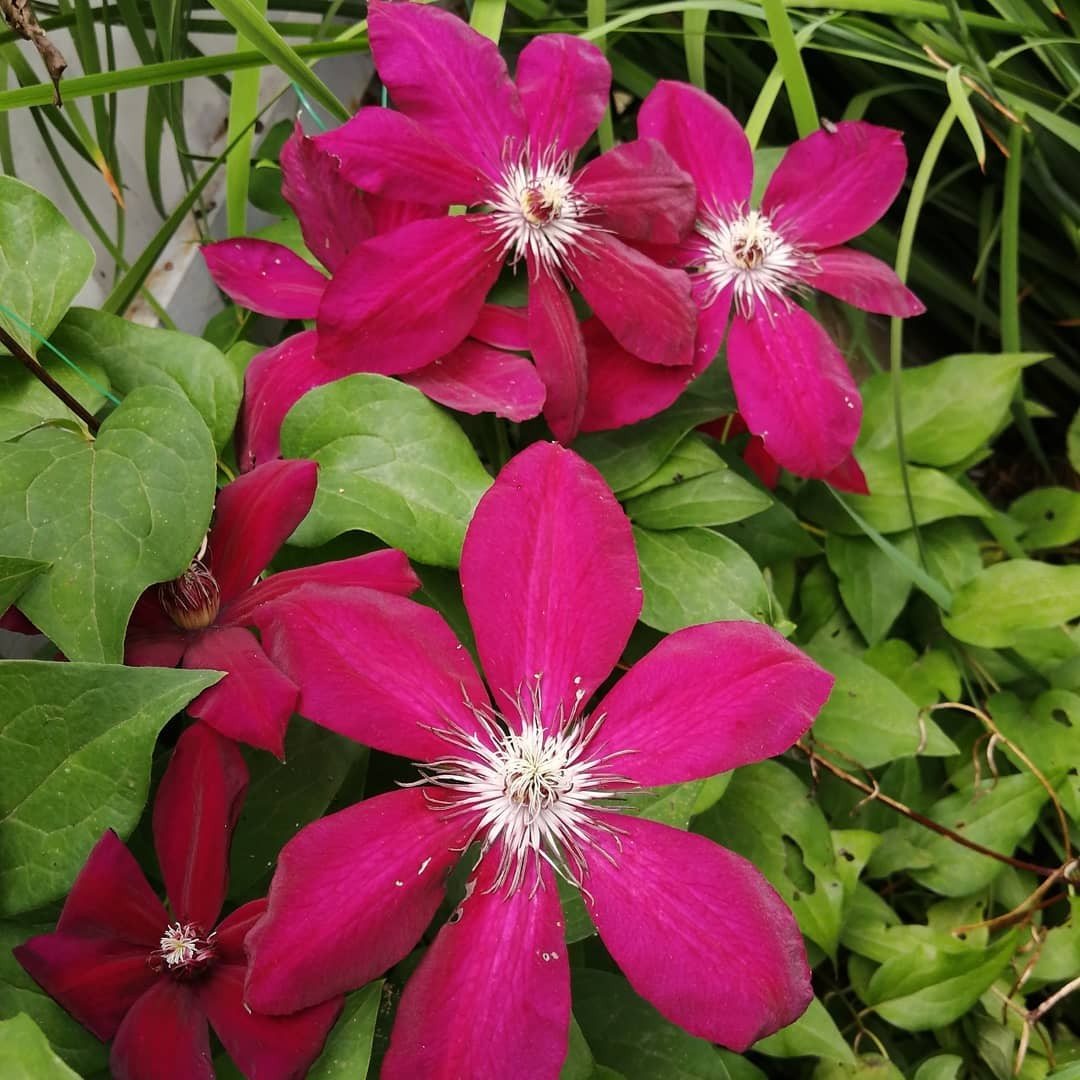



Ville de Lyon
The bush liana belongs to the Viticella group. Large inflorescences up to 20 cm bloom on young shoots from July until late cold weather. The sepals consist of 5-7 rounded petals of bright pink color with a purple tint at the ends.
The leaves are small, oval, alternate.
Clematis grows on the south side, in partial shade. It grows up to 3-4 m. It can withstand frosts down to -25℃ without shelter. With proper care, it does not get sick for several years.
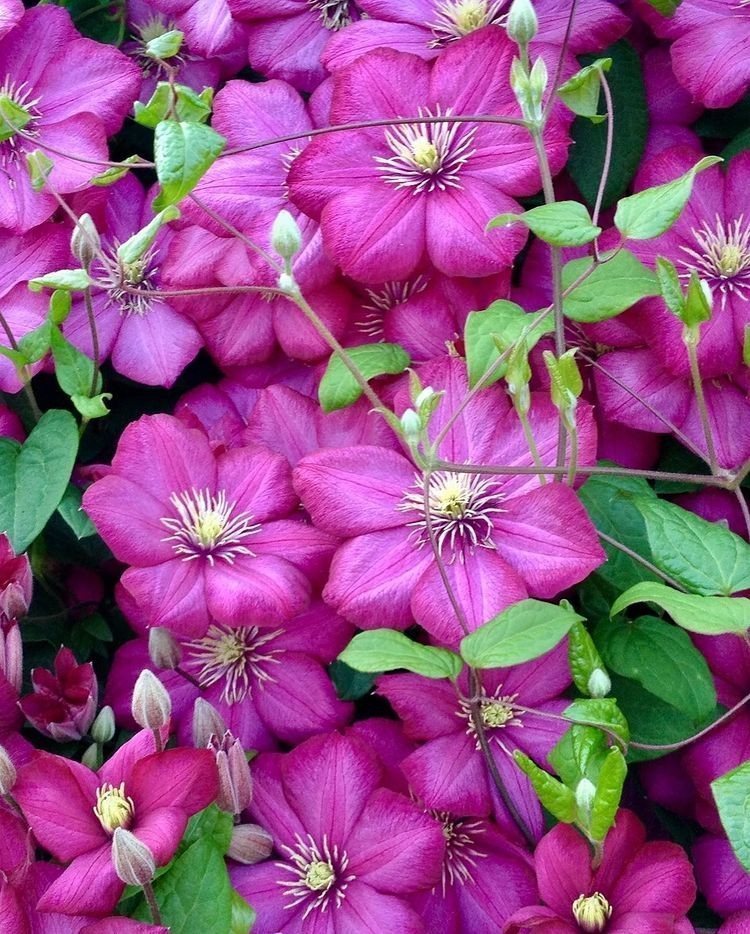
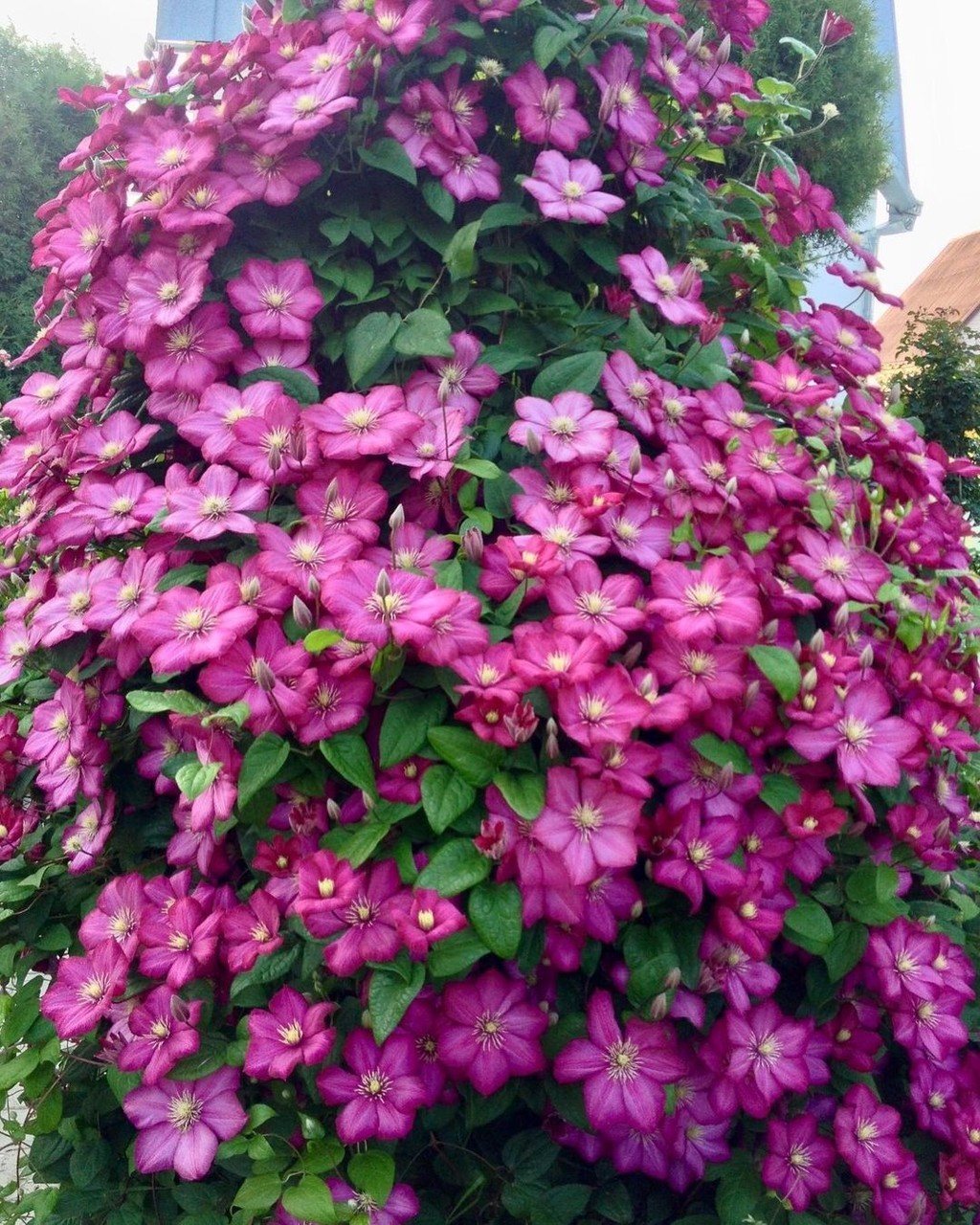
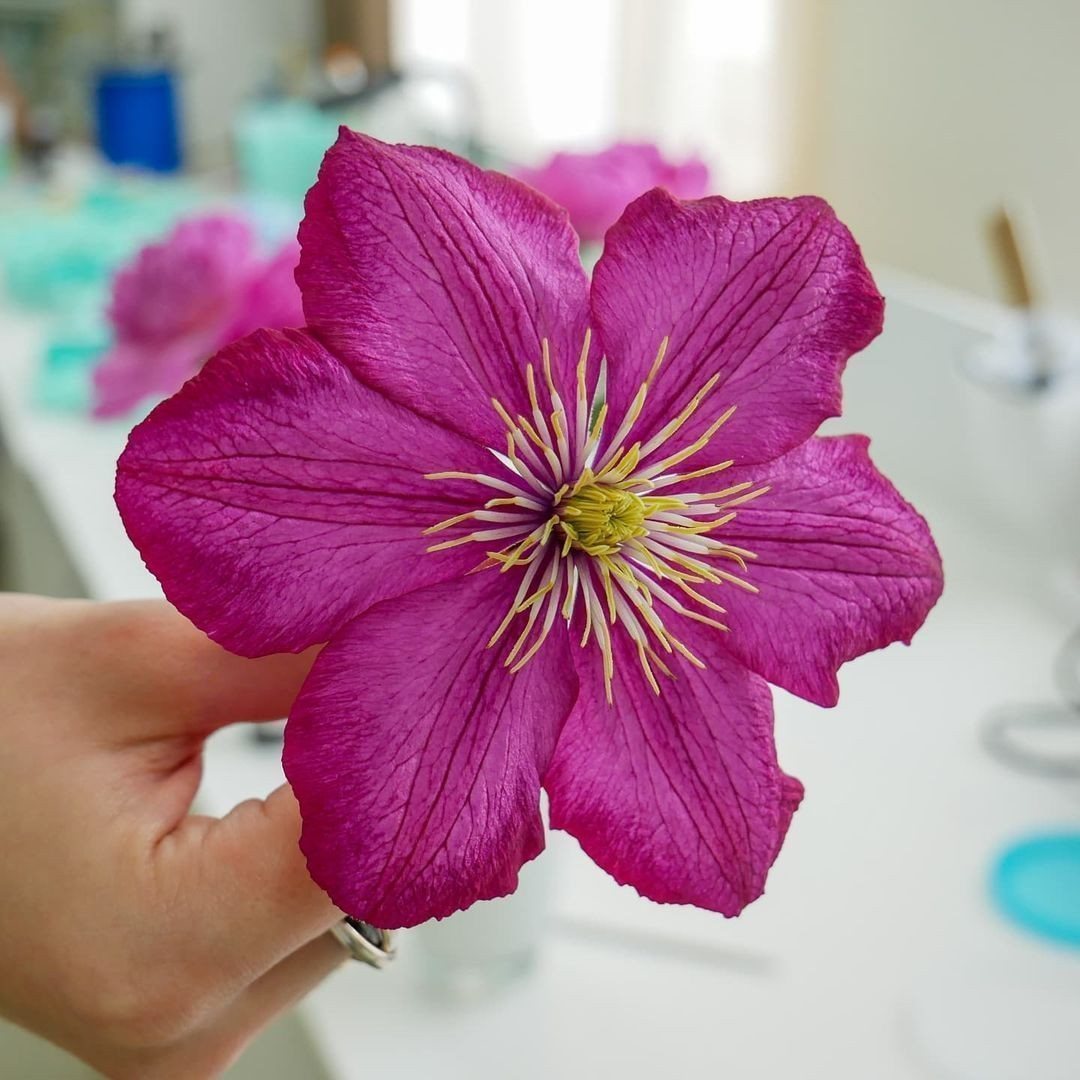



Searing white cloud
A small-flowered plant of the Flamula group grows up to 5 m. The white petals with a green tint are very small (no more than 3 cm). They have a cruciform shape and grow on current shoots with many inflorescences collected in a panicle. An adult bush forms up to 400 inflorescences on one shoot.
They bloom from July to August in the middle zone. They exude vanilla aroma with notes of honey and almond.
Emerald broad oval leaves up to 4 cm in length. The plate is smooth with slight roughness.
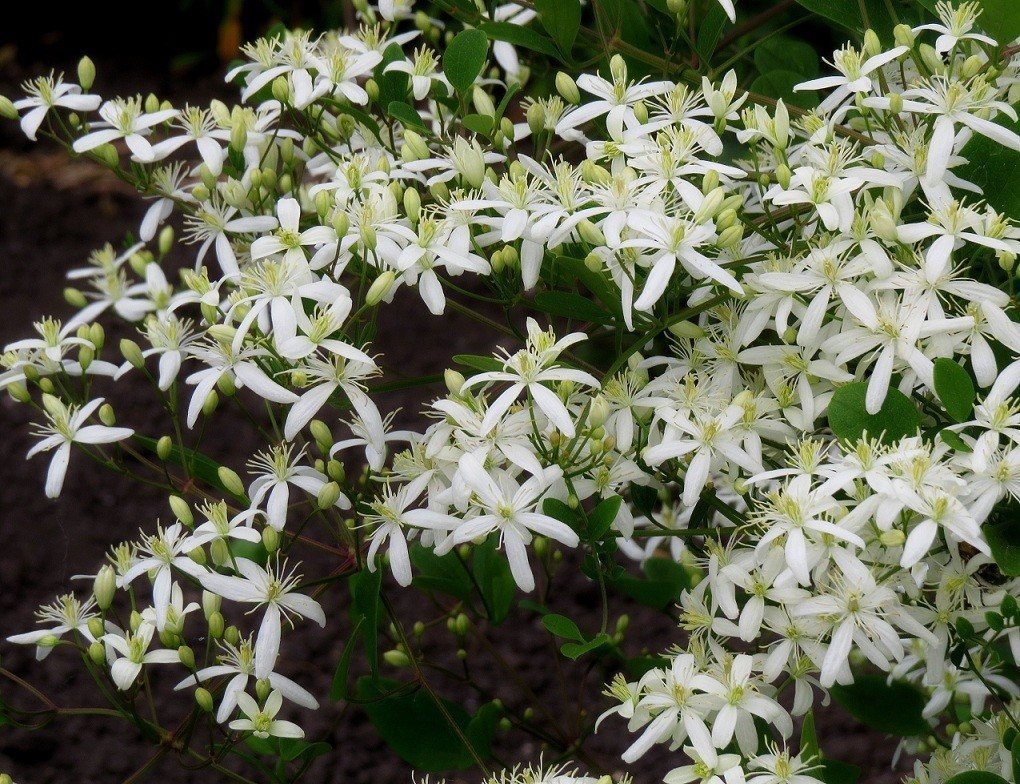
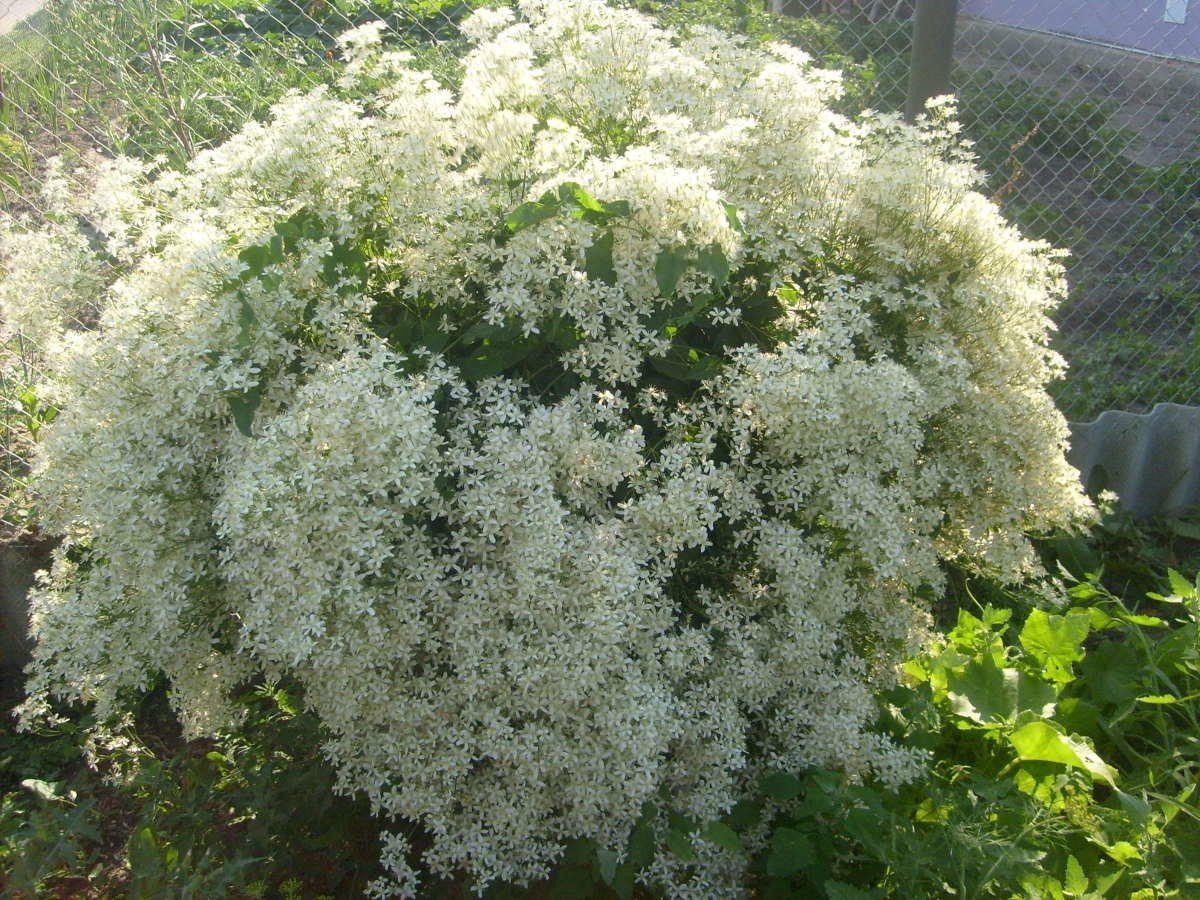
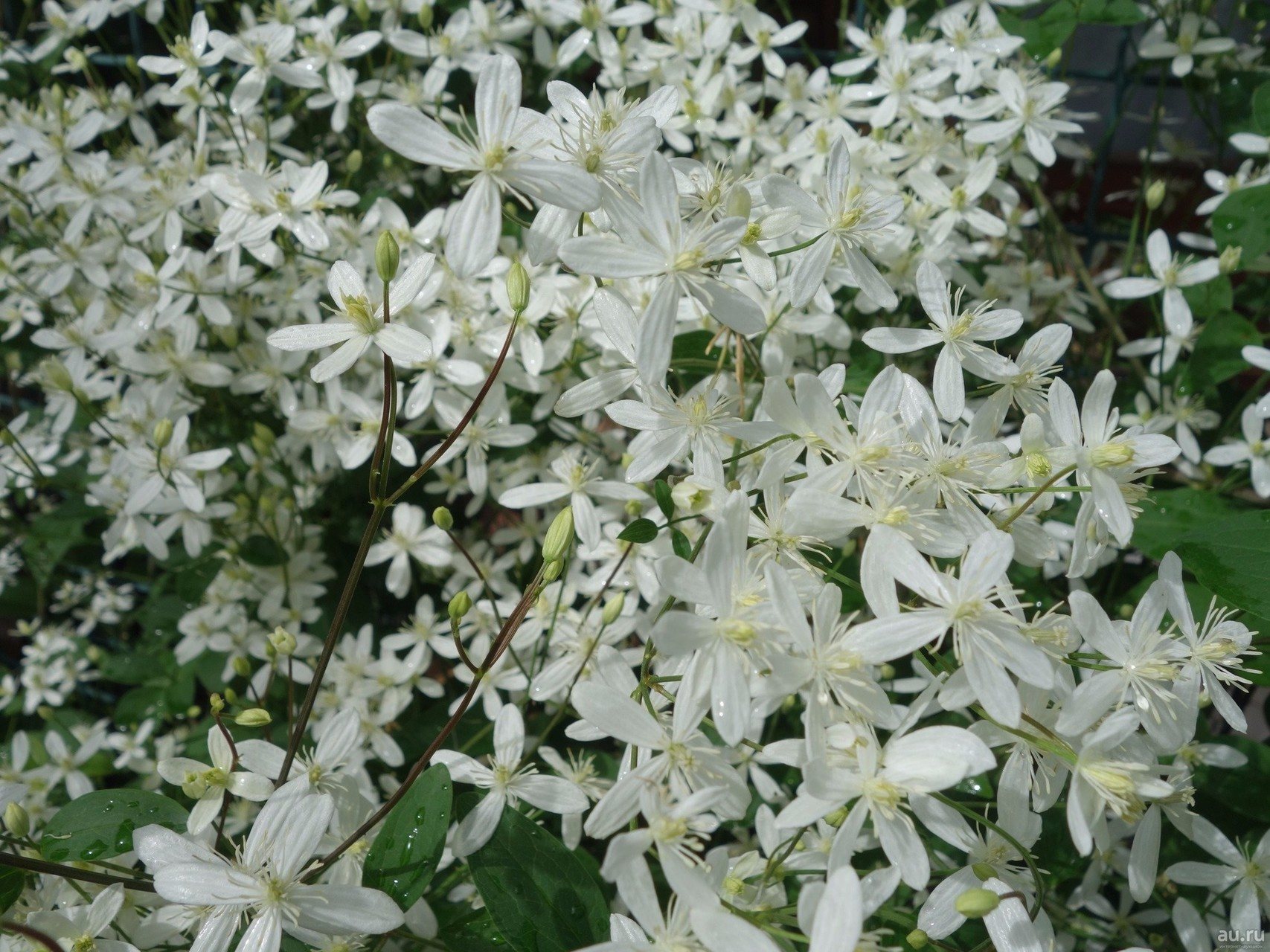



Taiga
A climbing, large-flowered plant that belongs to the Jacqueman group. It grows 2-3 meters in height and about one meter in width.The growing season lasts from June to August.
The diameter of one double flower varies from 13 to 15 cm. The tips of the petals are lemon colored, smoothly turning into a mixture of pink, blue and purple shades.
The leaf blades are trifoliate or cordate, connected to each other.
Without shelter, the variety can withstand up to - 25 ℃.
Manchurian
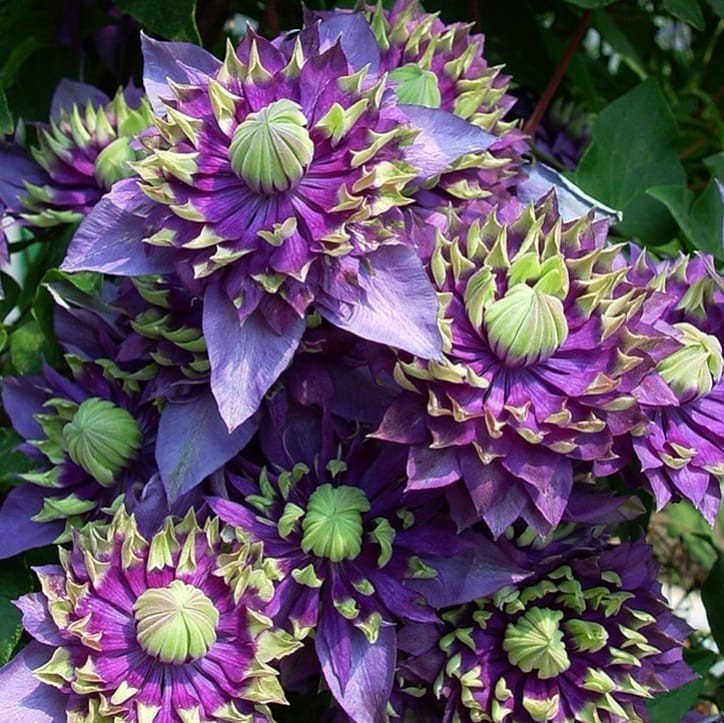
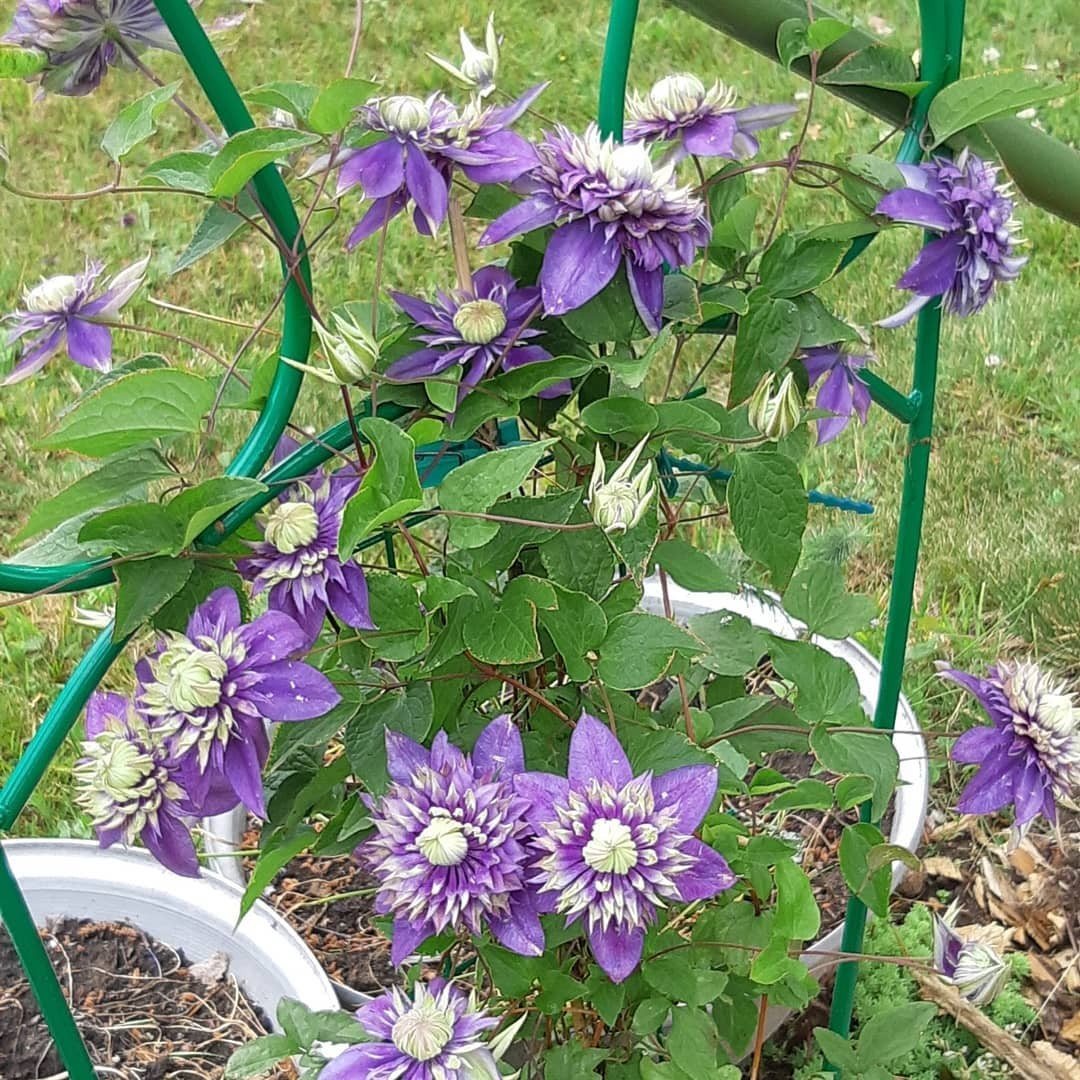
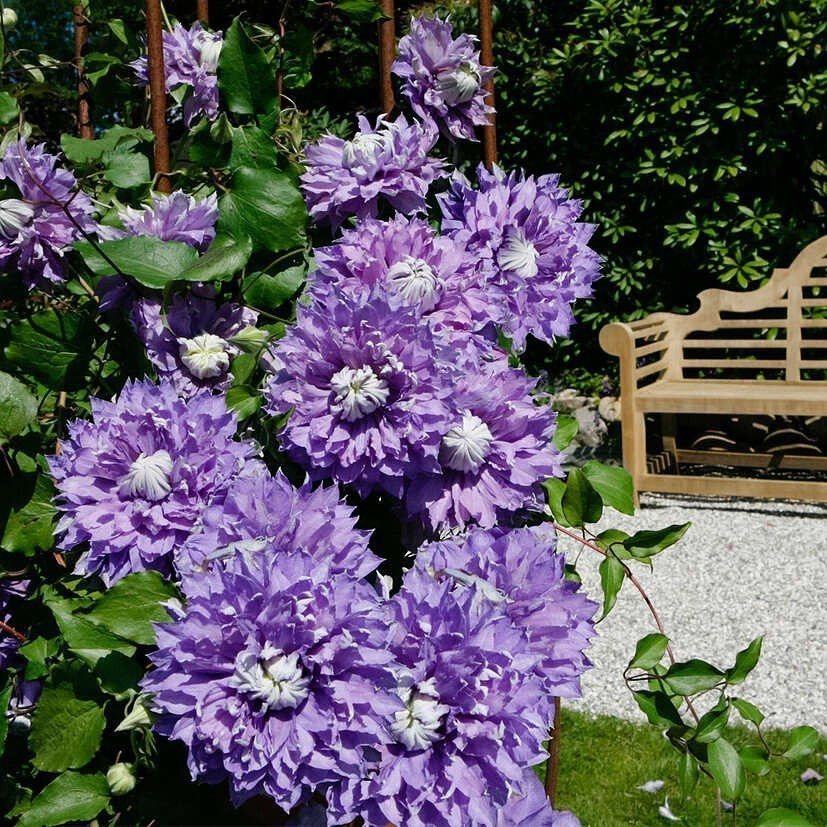



A wild species of the Flamula group is one of the most unpretentious. Grows up to 1.5-2 m.
From July to August, small inflorescences with a diameter of 2 cm, collected in a brush, develop from young shoots. White oblong petals are arranged crosswise. In hot weather, the buds have a pronounced honey aroma.
The dark green foliage is complex, odd-pinnate.
The variety takes root well in any conditions, withstands frosty winters. Weak resistance to most diseases.
Super Nova
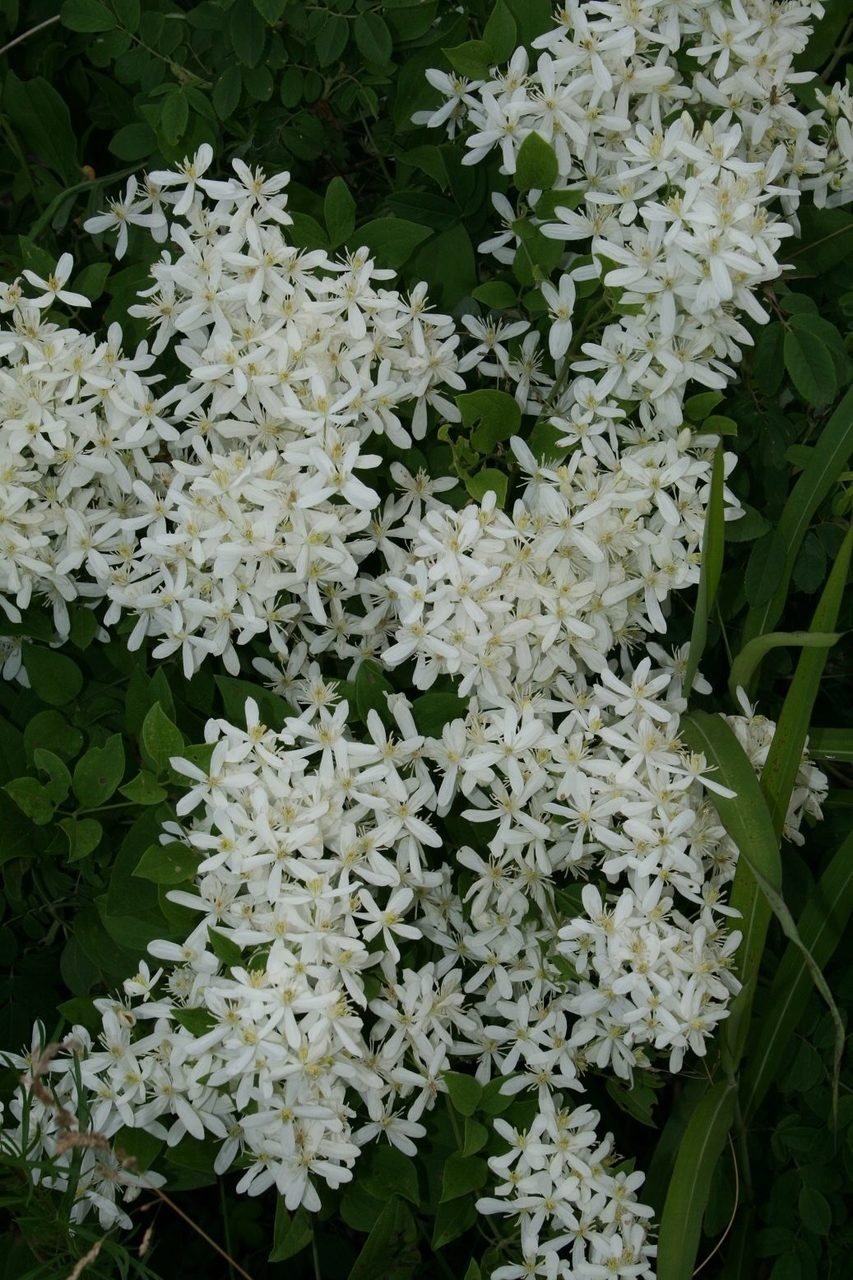
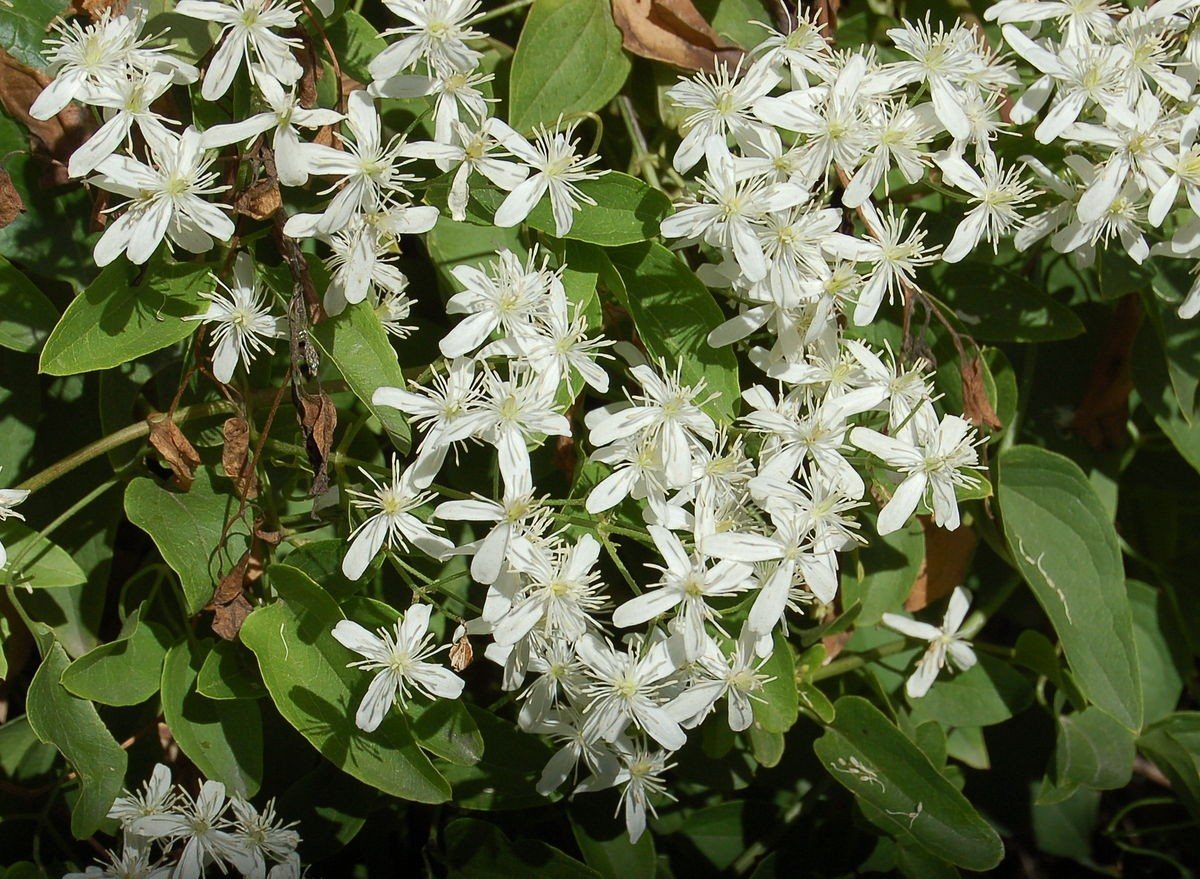
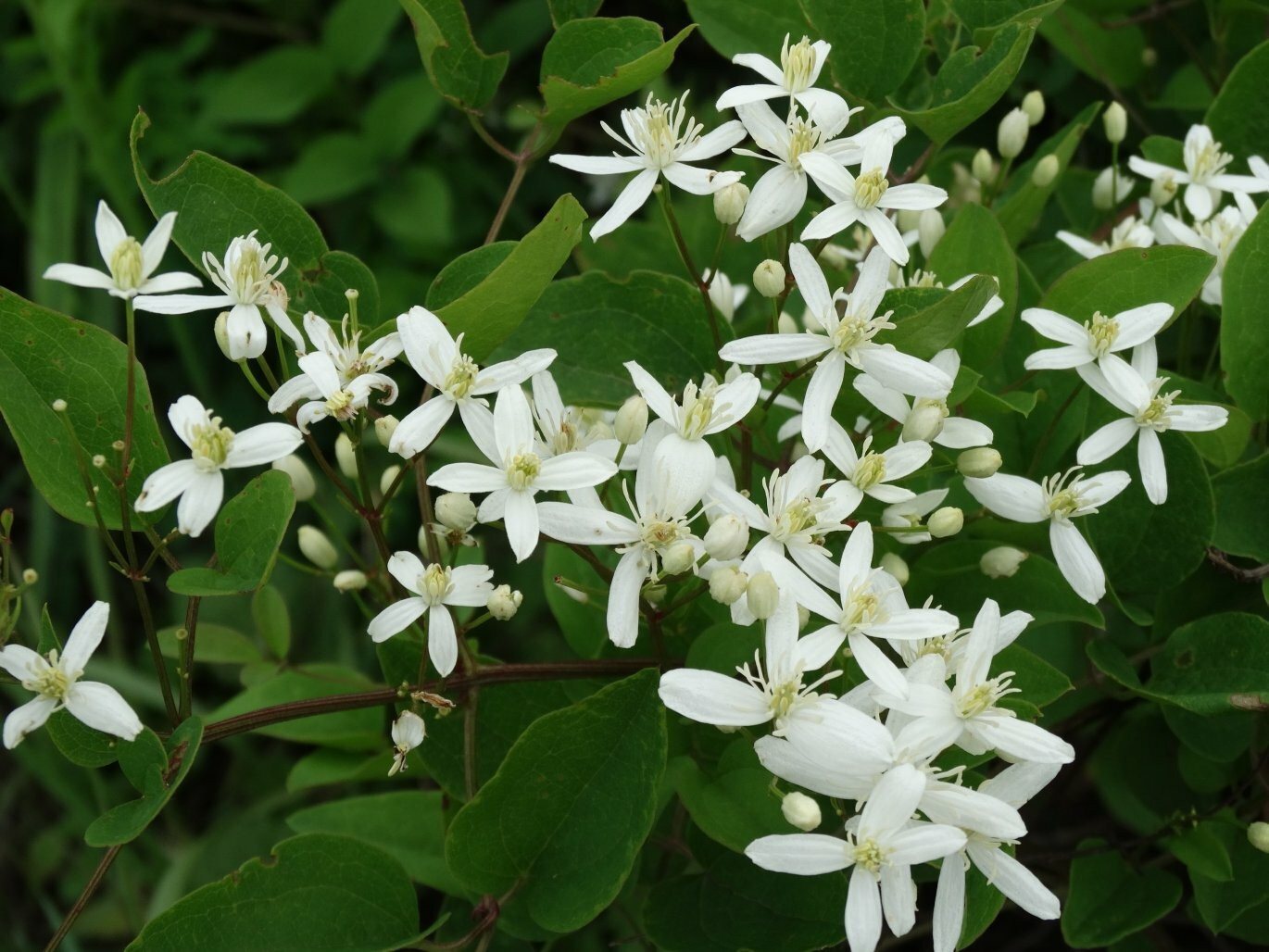



A late-flowering shrub of the Viticella group grows up to 3 m. Flowering occurs at the end of June. White petals with a purple border and veins are formed on new shoots until September. The buds do not exceed 8 cm in diameter.
In winter, the plant needs shelter. Average resistance to diseases.
Pink Beauty
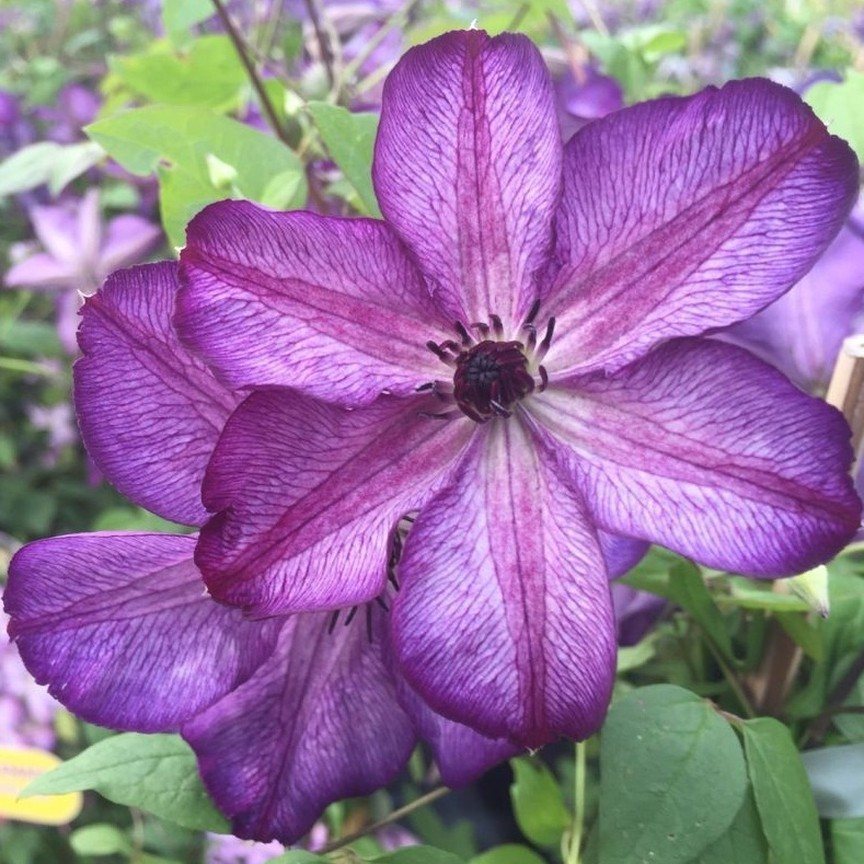





Belongs to the Lanuginosa group. In June, buds with 6-8 sepals develop abundantly from last year's shoots, in September - from young ones. The flowers are star-shaped (up to 17 cm), bright pink with a dark vein in the middle. The leaves are dark green, heart-shaped.
A liana-like shrub grows up to 2 m. Without shelter, it can withstand prolonged cold down to -30 ℃. President
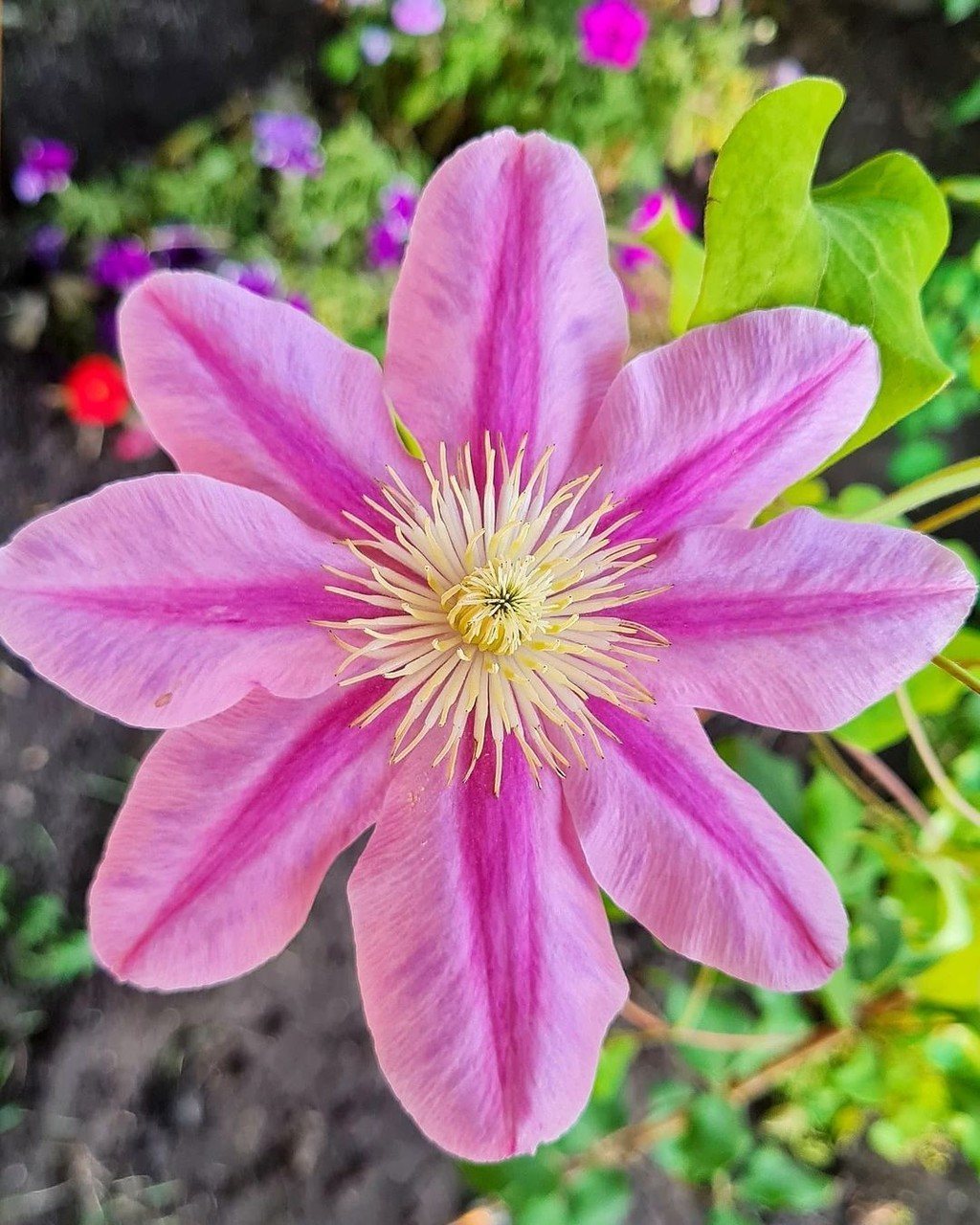
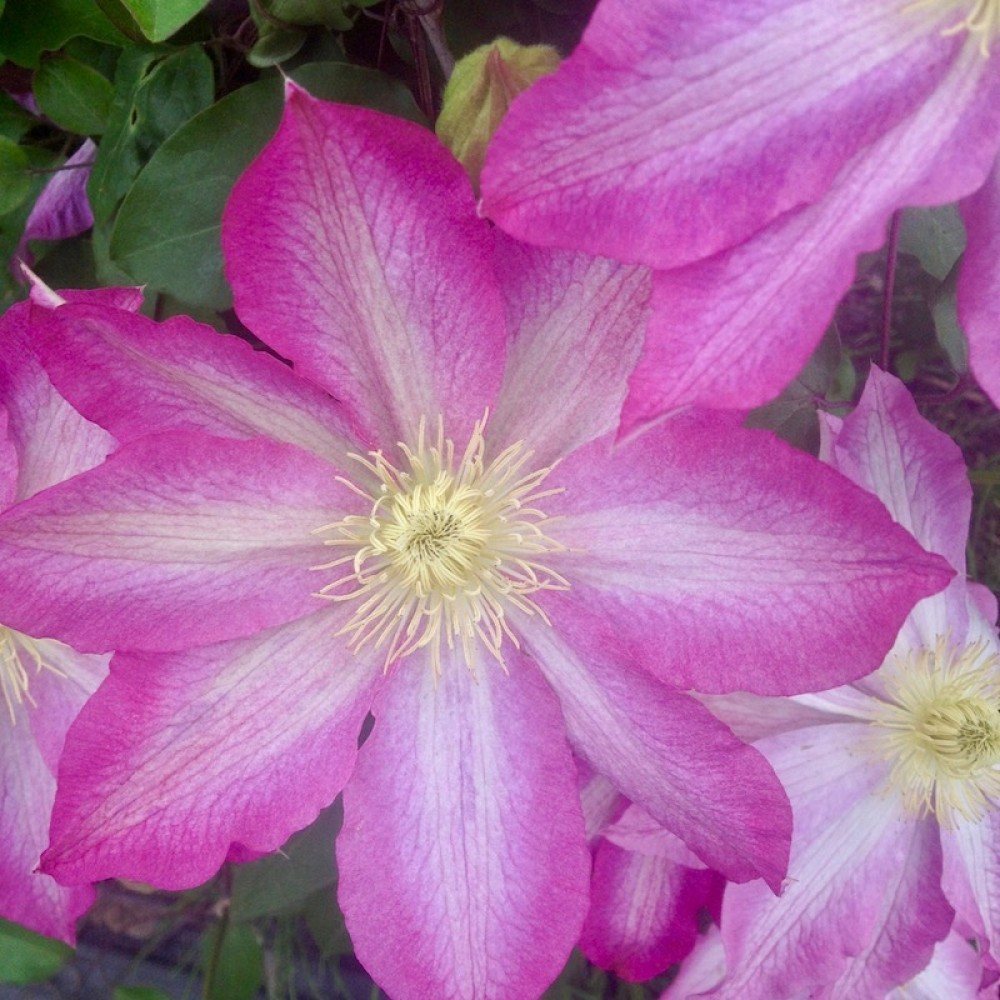
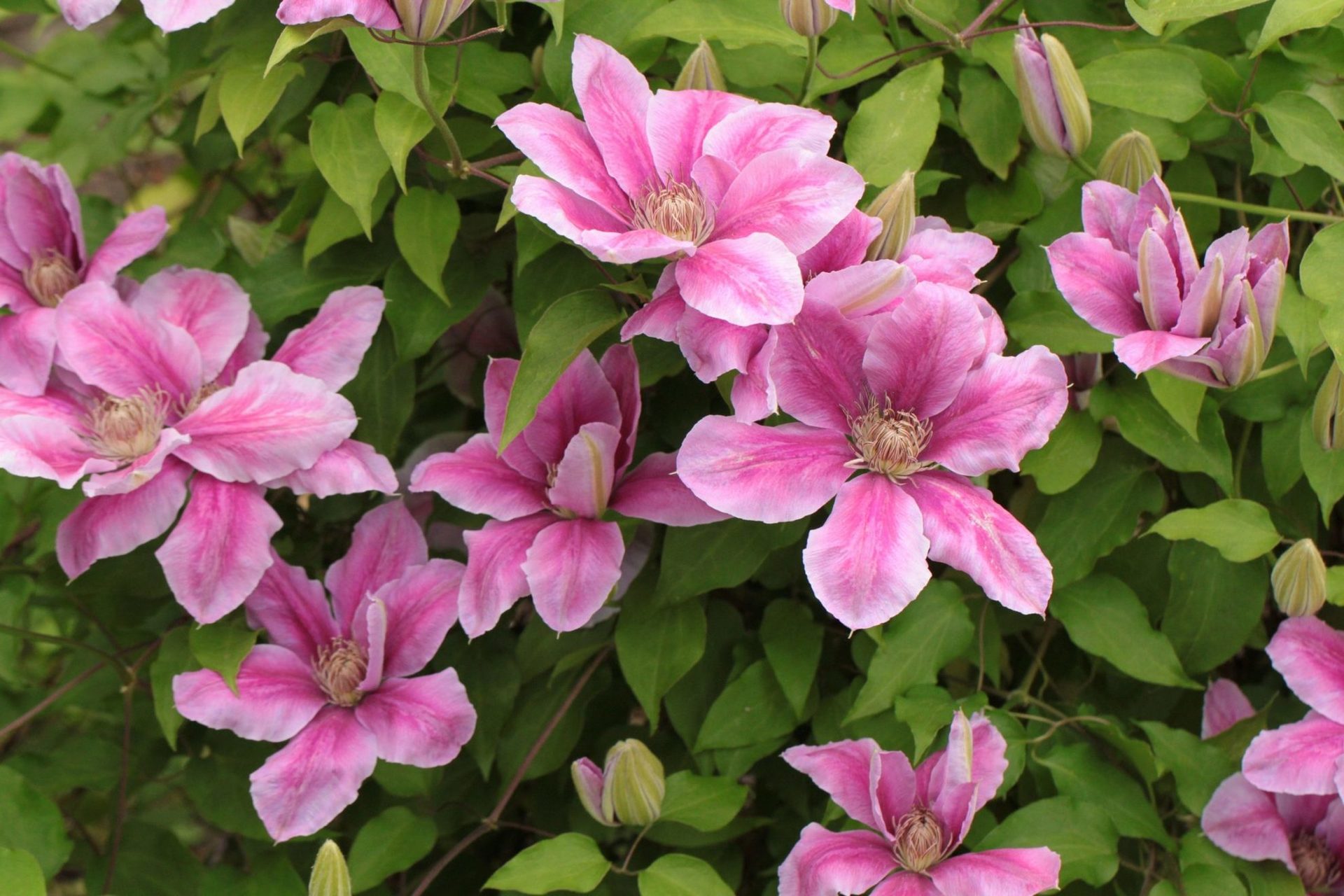



A large-flowered, abundantly growing variety of the Patens group grows more than 3 m. The first flowering begins at the end of April. The buds open on last year's stems.
Star-shaped sepals (up to 18 cm) are located on long peduncles.The growing season lasts from June to August.

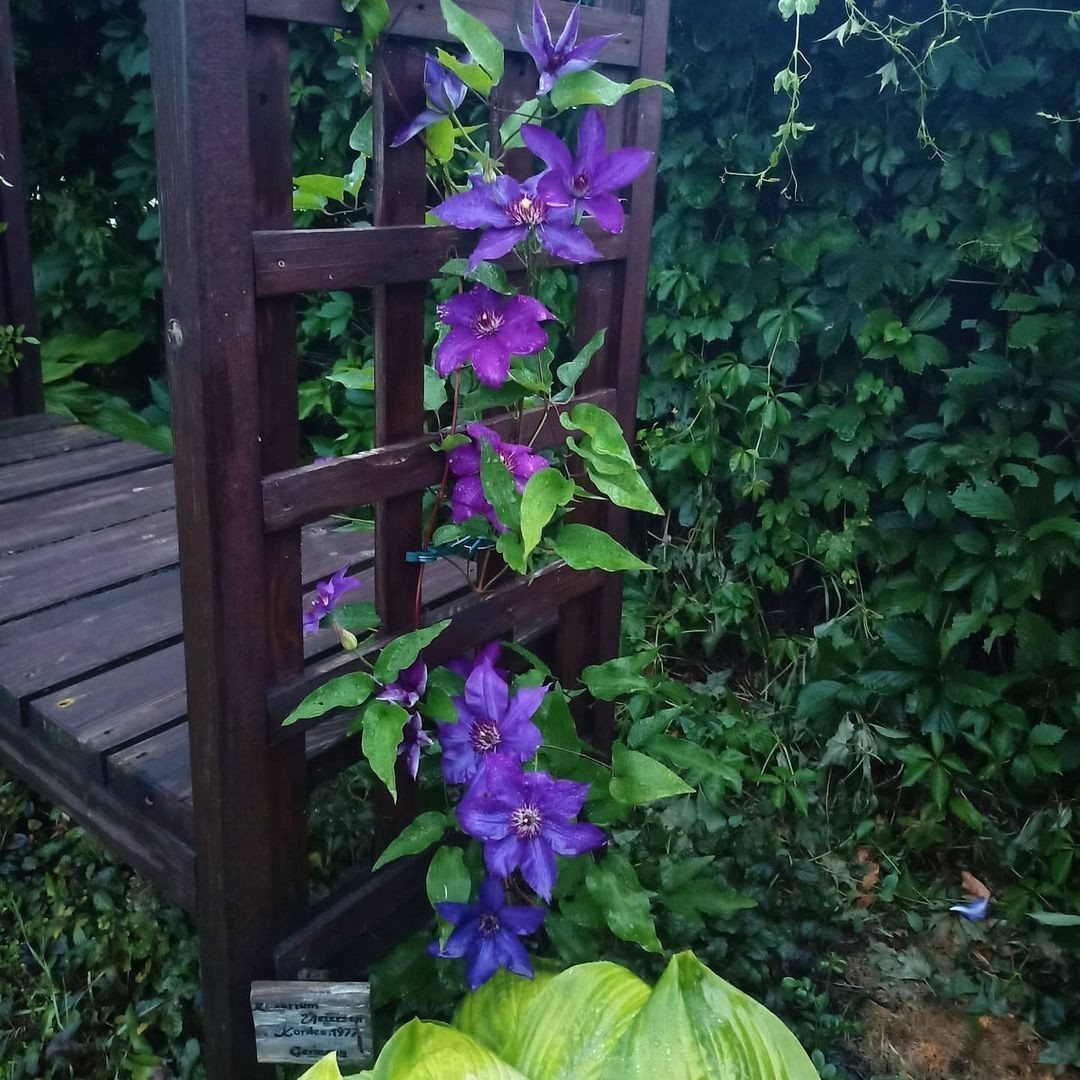
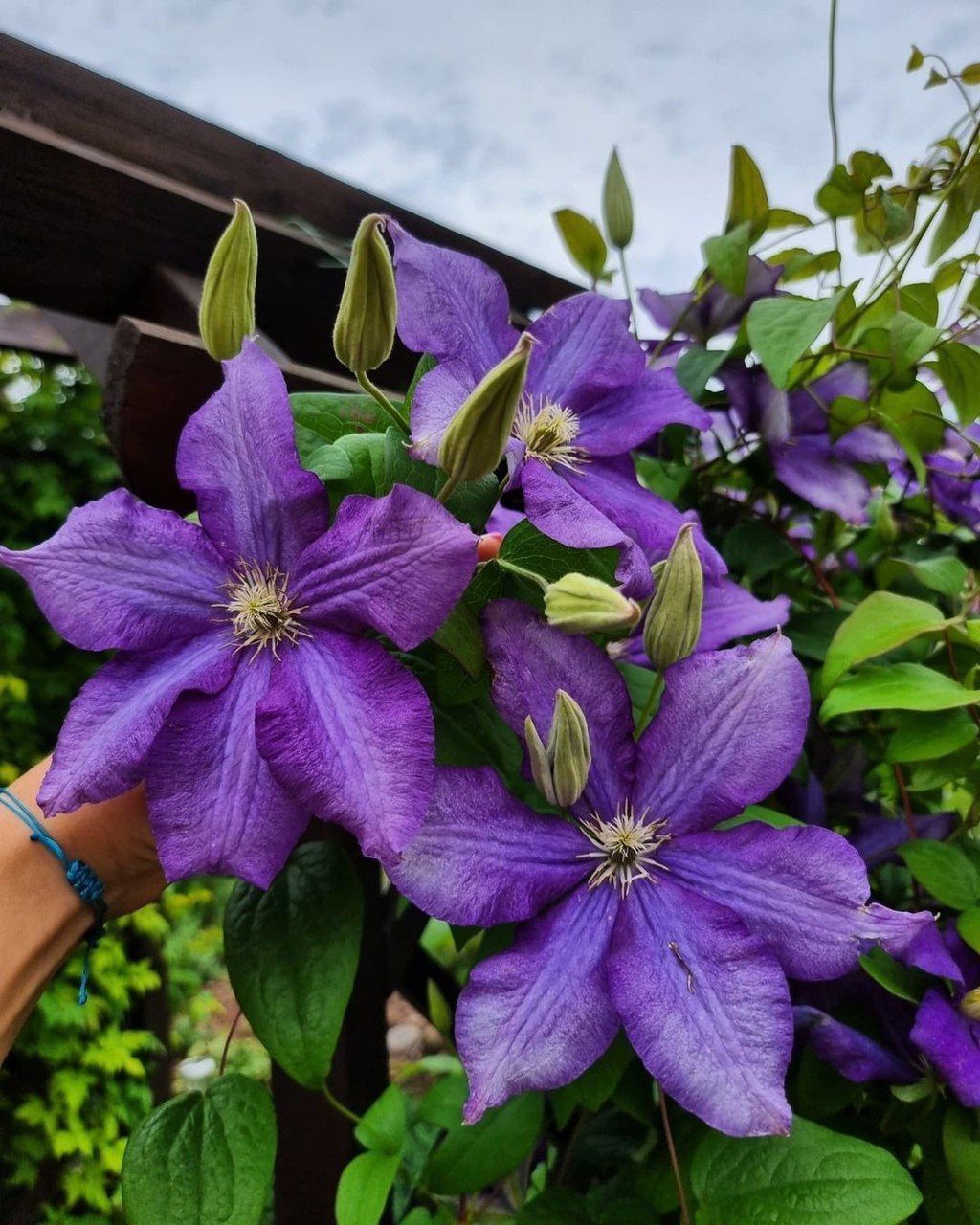



The diameter of one double flower varies from 13 to 15 cm. The tips of the petals are colored lemon, gradually turning into a mixture of pink, blue and purple shades.
The leaf plates are trifoliate or heart-shaped, interconnected.
Without shelter, the variety can withstand temperatures down to -25℃.
Manchurian
The wild species of the Flamula group is one of the most unpretentious. Grows up to 1.5-2 m.
From July to August, small inflorescences with a diameter of 2 cm, collected in a brush, develop from young shoots. The white petals are oblong and arranged crosswise. In hot weather, the buds have a pronounced honey aroma.
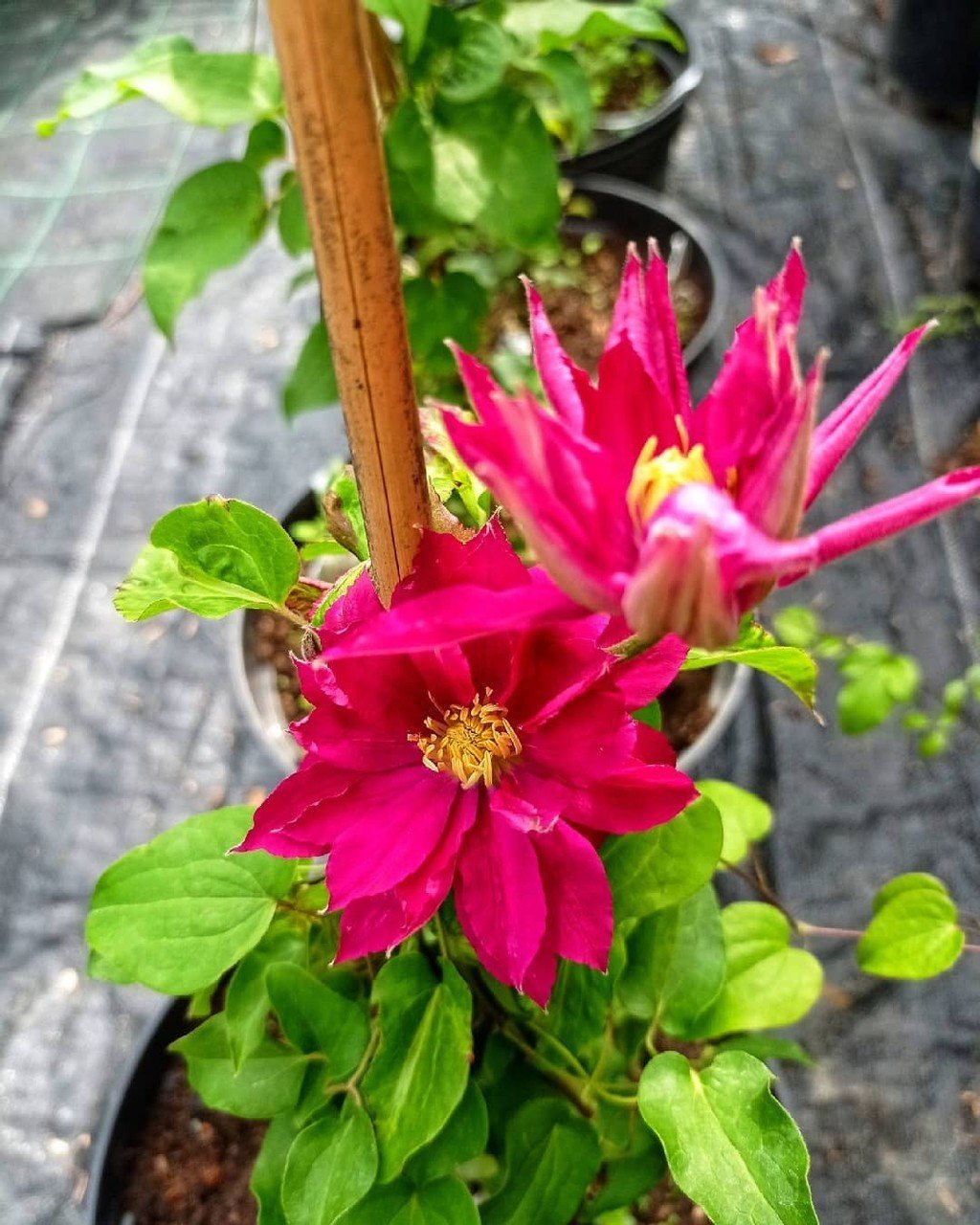
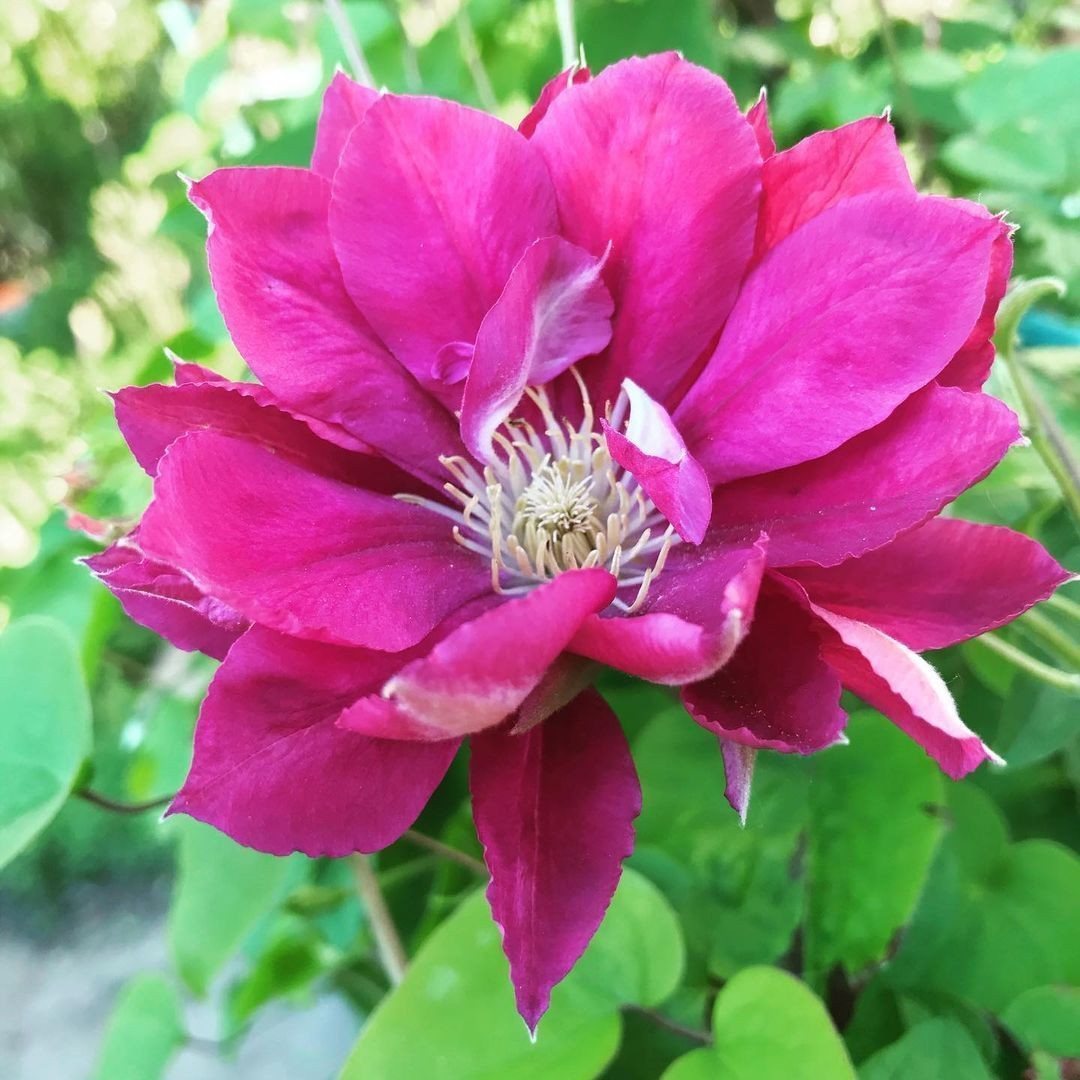
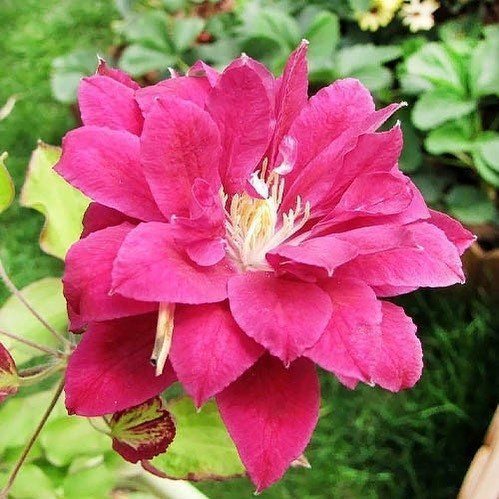



The dark green foliage is complex and imparipinnate.
The variety takes root well in any conditions and can withstand frosty winters. Weak resistance to most diseases.
Super Nova
A late-flowering shrub of the Viticella group grows up to 3 m. Flowering occurs at the end of June. White petals with a purple border and veins form on new shoots until September. The buds do not exceed 8 cm in diameter.
In winter, the plant needs shelter. Average resistance to diseases.
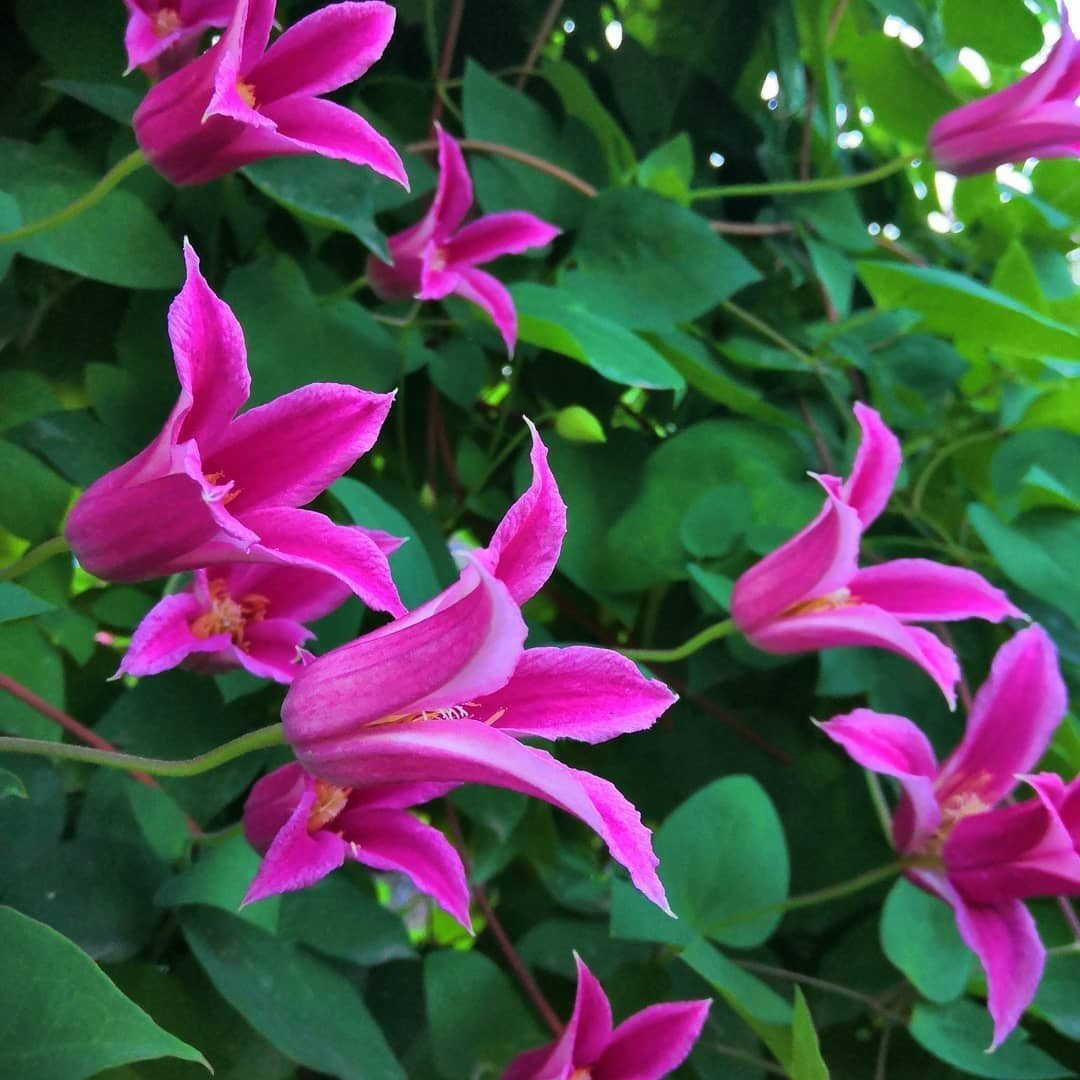
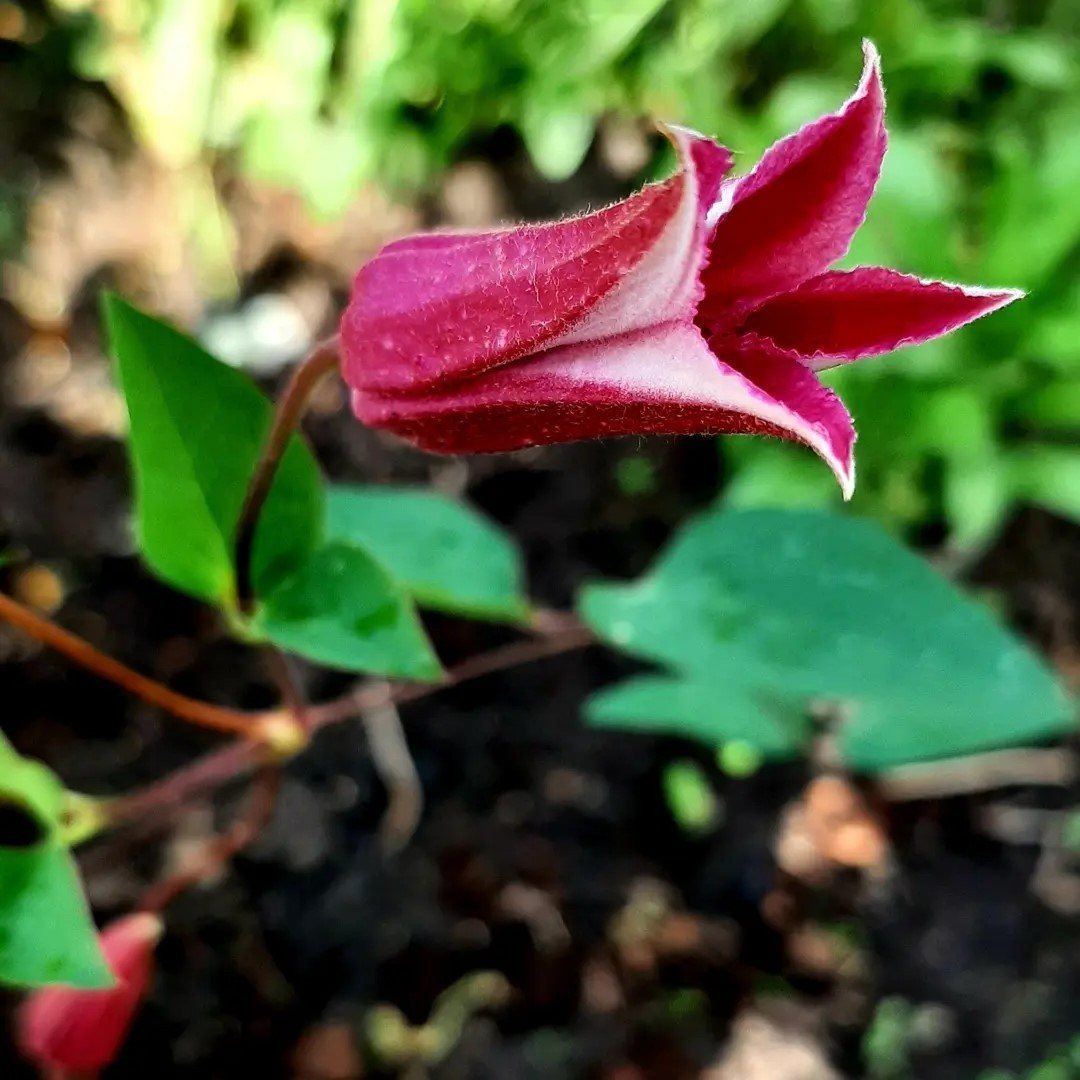
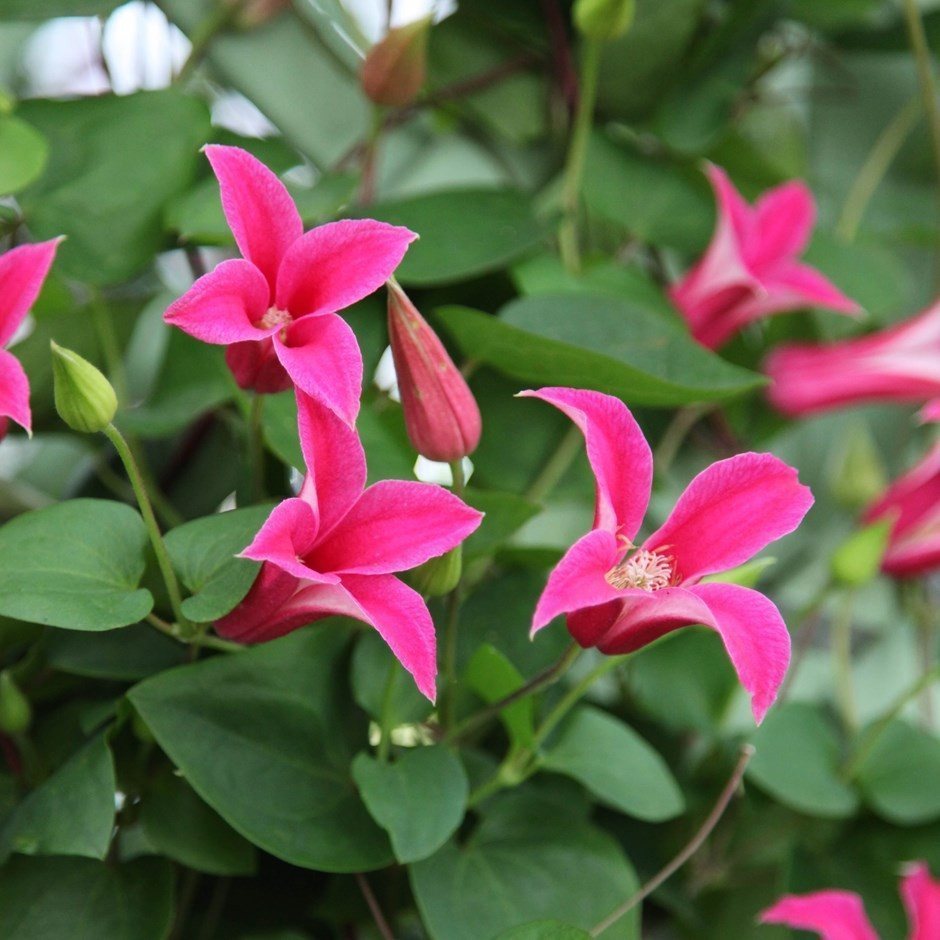



Pink Beauty
Belongs to the Lanuginosis group. In June, buds with 6-8 sepals develop abundantly from last year's shoots, in September - from young shoots. The flowers are star-shaped (up to 17 cm), bright pink with a dark streak in the middle. The leaves are dark green, heart-shaped.
The liana-like shrub grows up to 2 m. Without shelter it can withstand prolonged cold temperatures down to -30 ℃.
The president
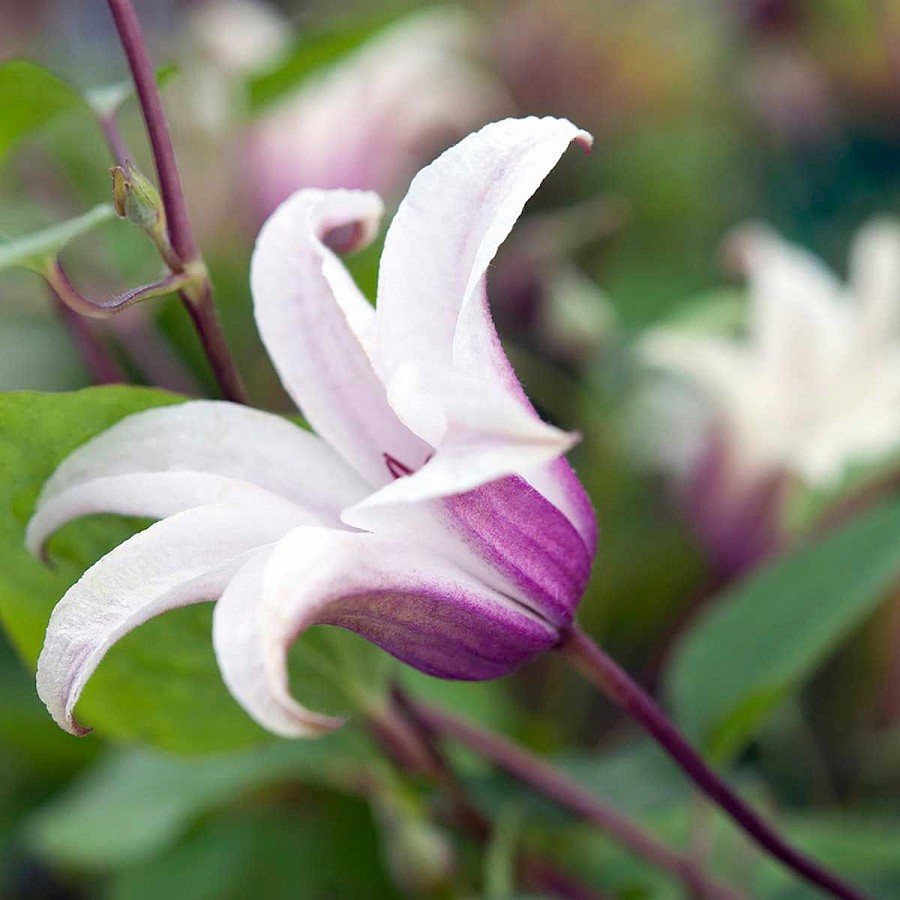
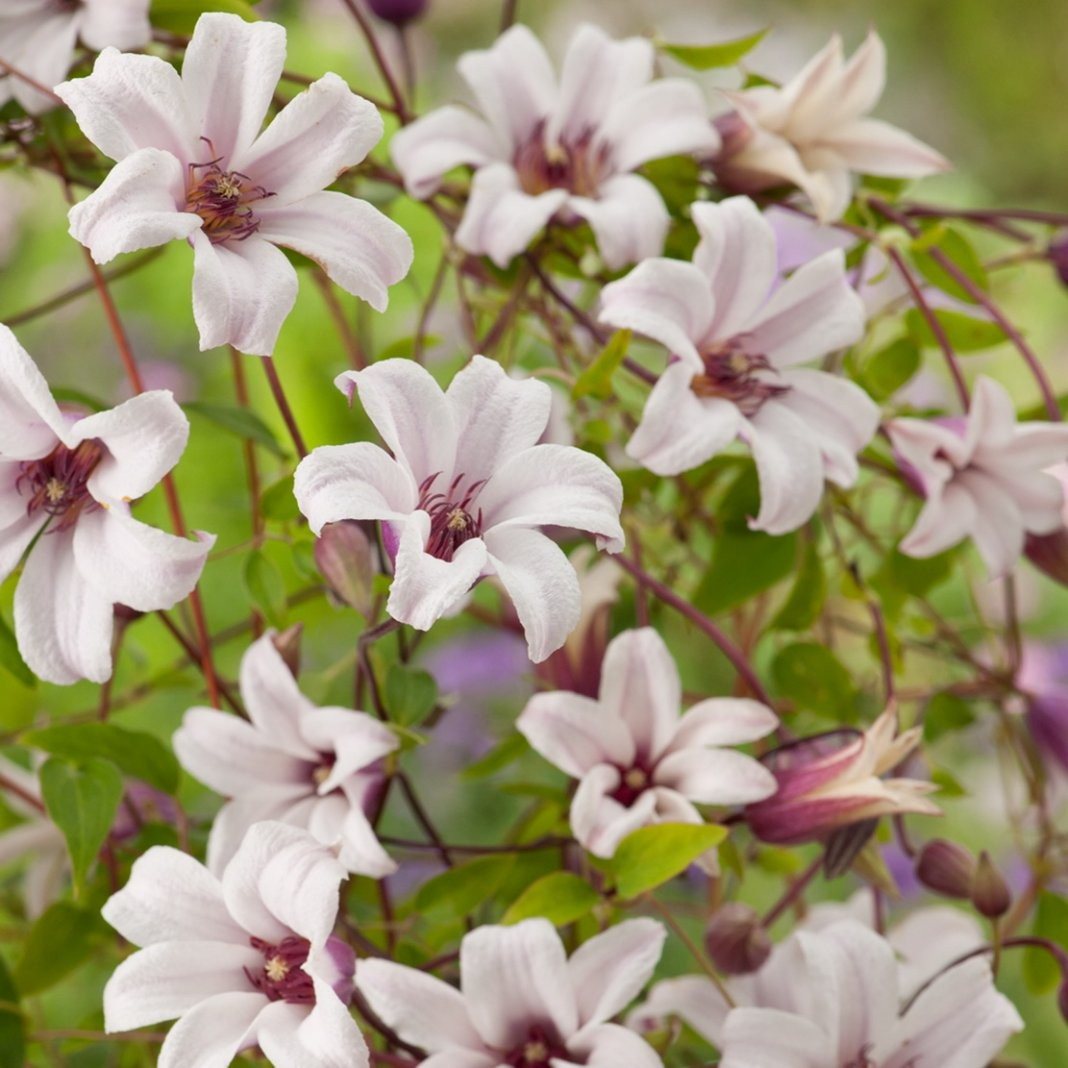
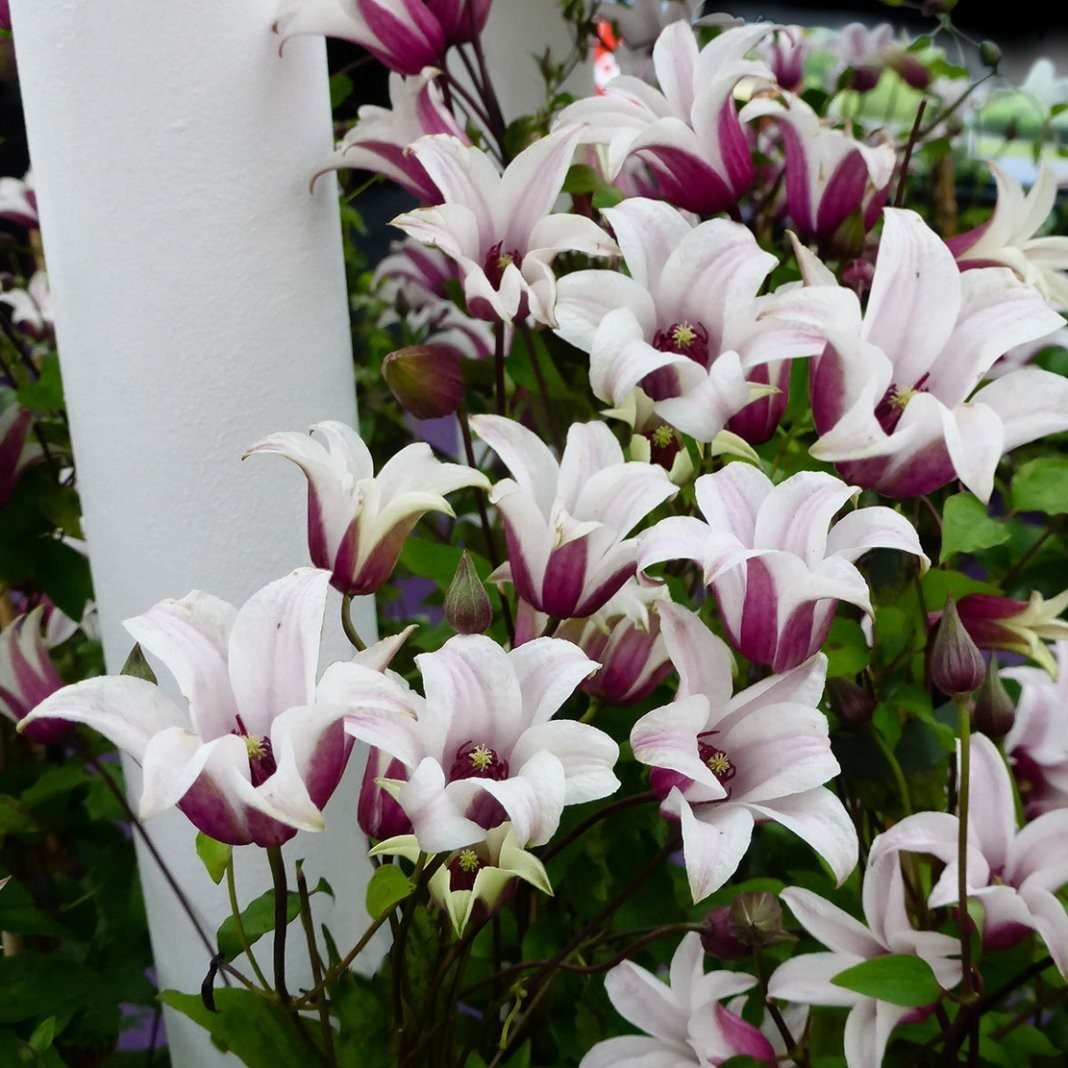



A large-flowered, abundantly growing variety of the Patens group grows more than 3 m. The first flowering begins at the end of April. The buds open on last year's stems.
Star-shaped sepals (up to 18 cm) are located on long peduncles.The petals are purple with wavy edges. The second bloom begins in the fall.
An adult shrub can withstand temporary frosts, while a young one needs shelter.
Red Star
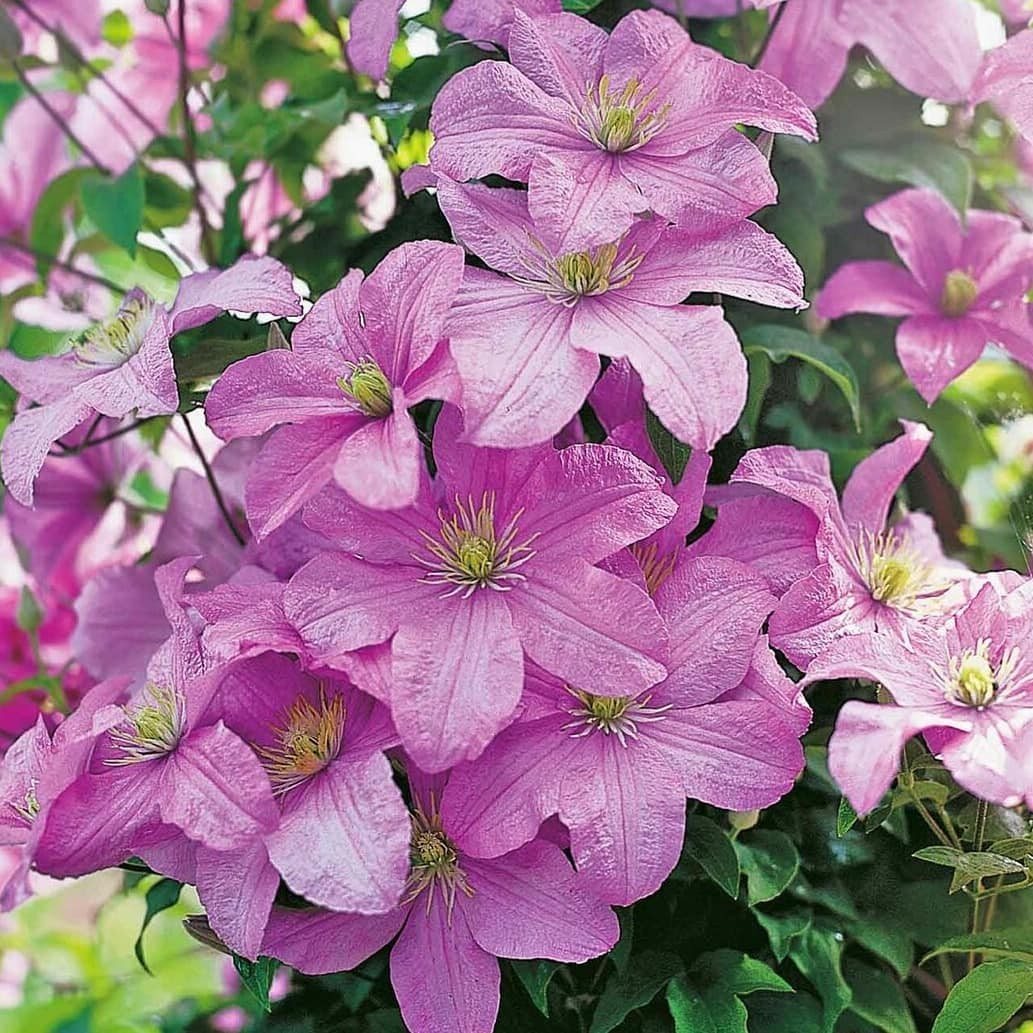
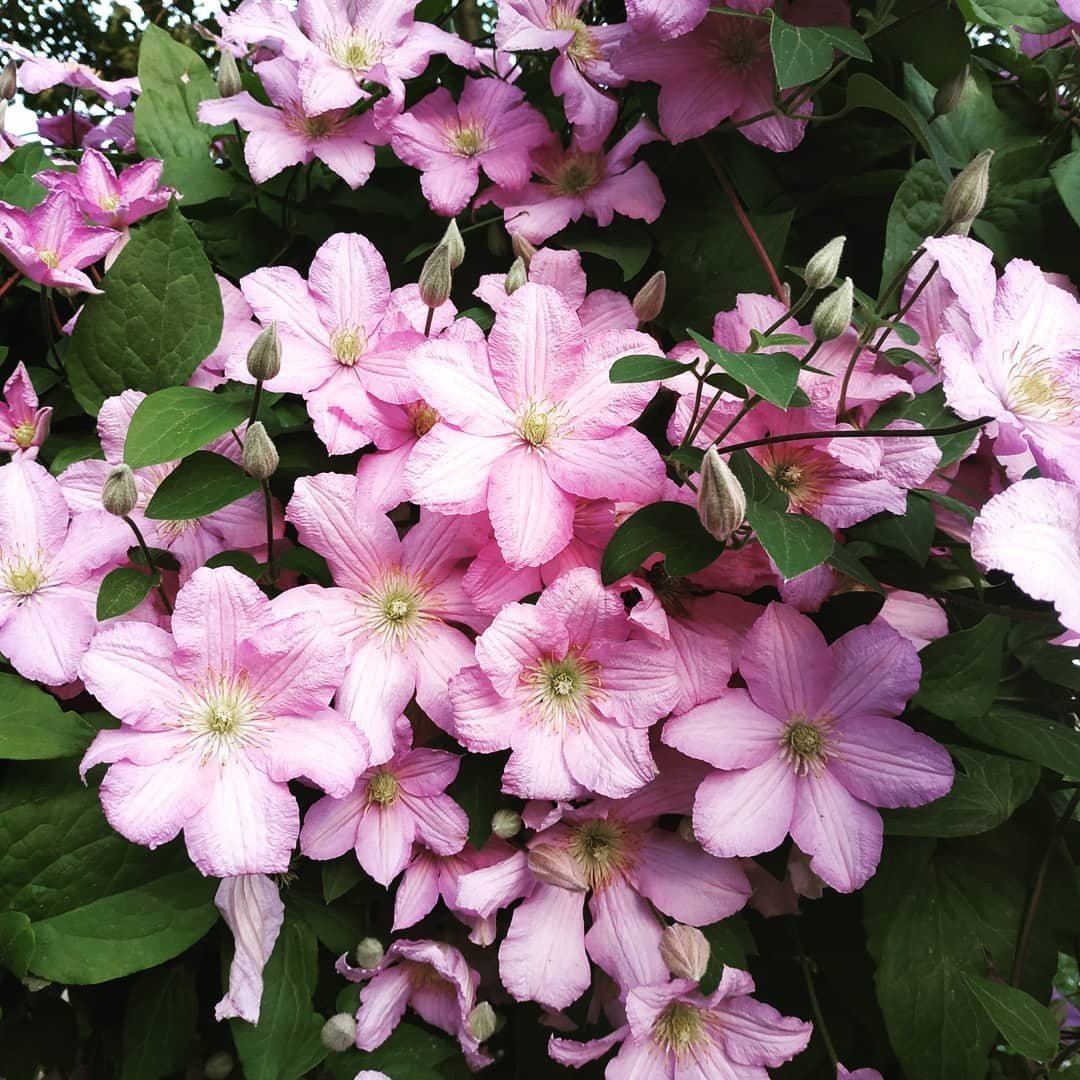




Shrub vines belong to the Florida group. Grows up to 2.5 m.
It blooms twice per season - June-August and August-September. The first wave brings large double and semi-double flowers 15 cm in diameter. The buds exude a light vanilla aroma. In the northern part, re-blooming is less common than in the southern part.
The foliage is dense, ovate.
The shrub does not tolerate heat above 30℃, but feels good at sub-zero temperatures. Resistant to diseases.
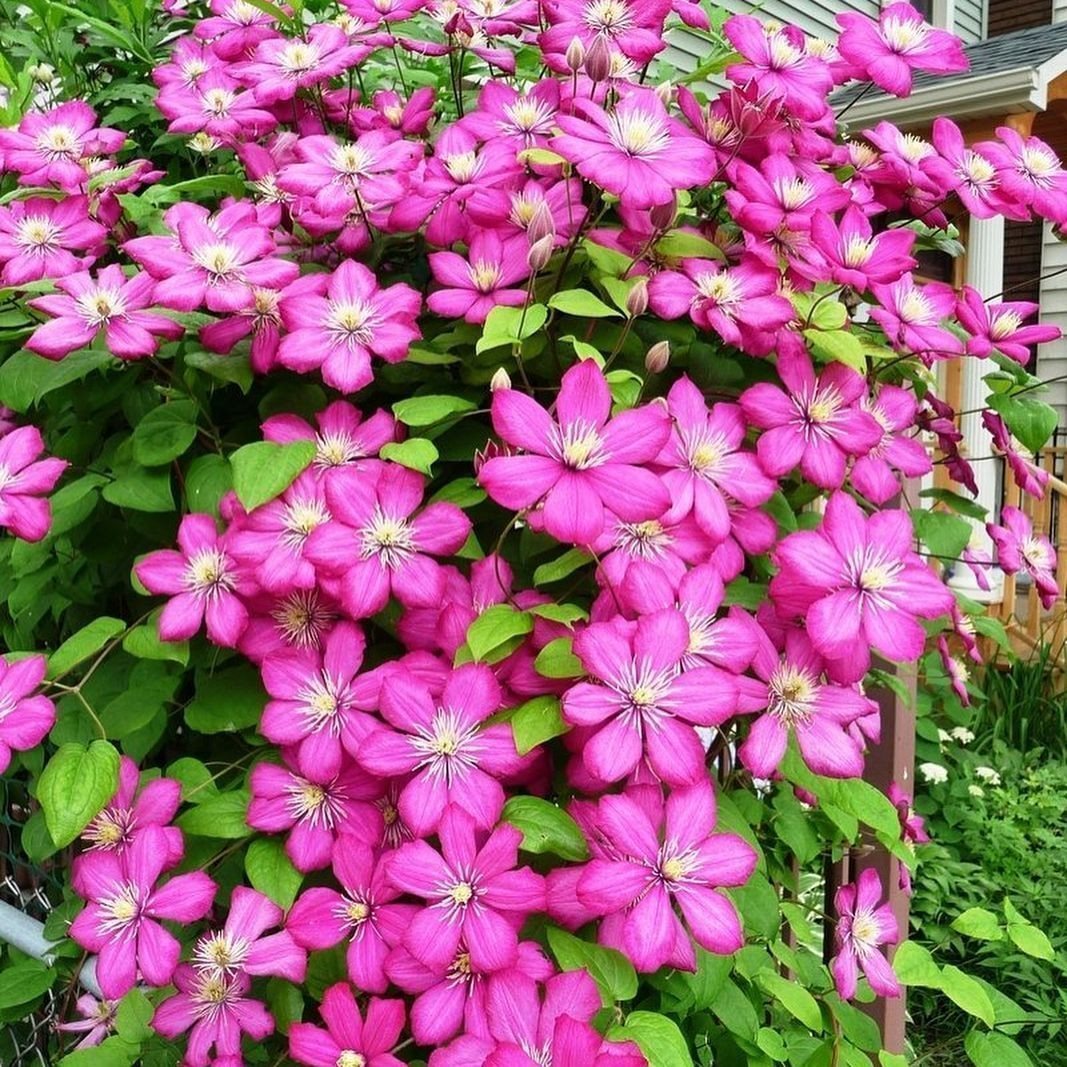

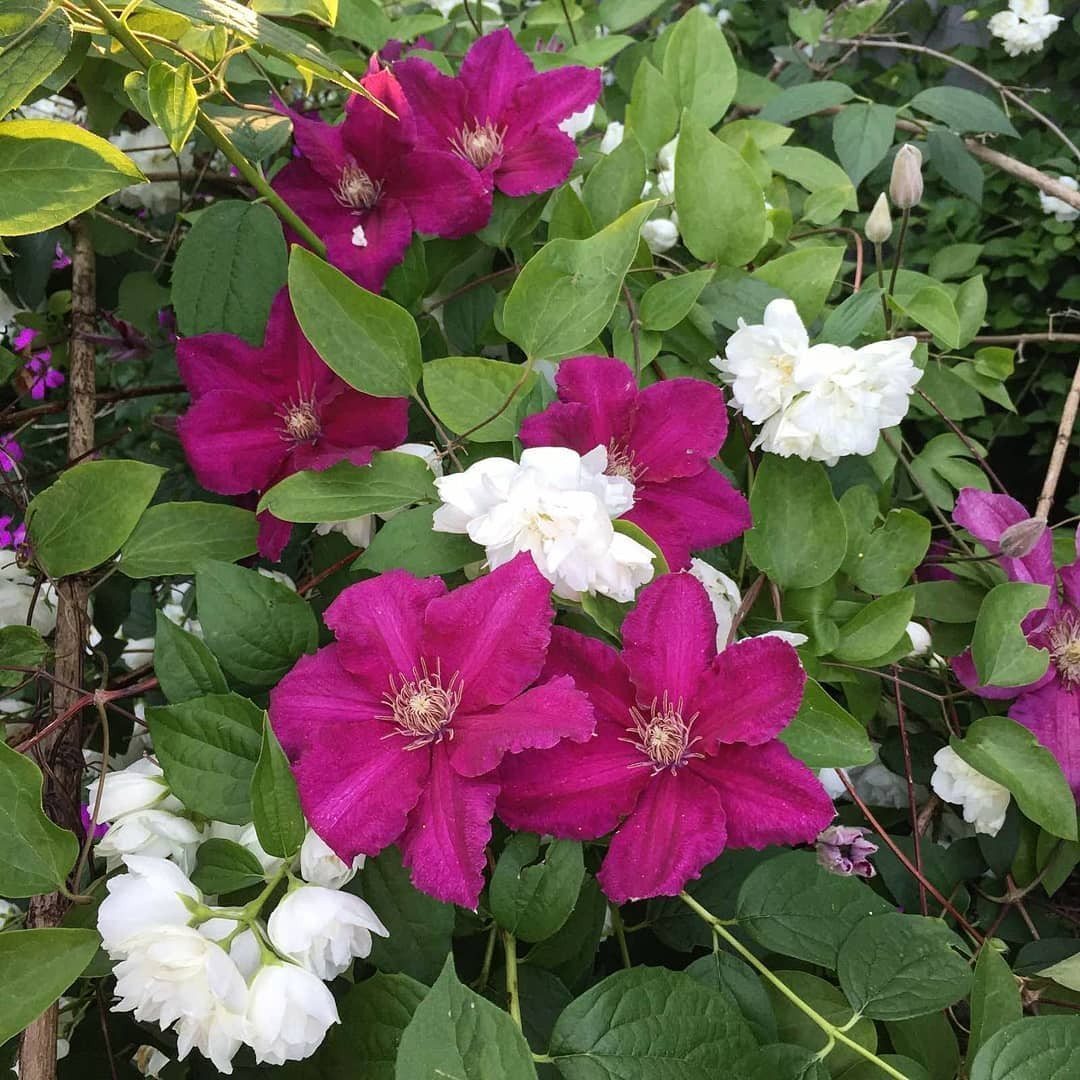



Princess Diana
The late-blooming large-flowered clematis blooms from June to September. Belong to the Texas group.
Flowers of 4 pointed crimson-pink bell-shaped petals are formed on last year's stems. The size of the buds is about 9 cm.
Compound, heart-shaped leaves with a pointed end are located one on each branch.
Grows up to 3 m. In the middle zone it is covered with mulch for the winter. Susceptible to wilt, but tolerates other diseases well.
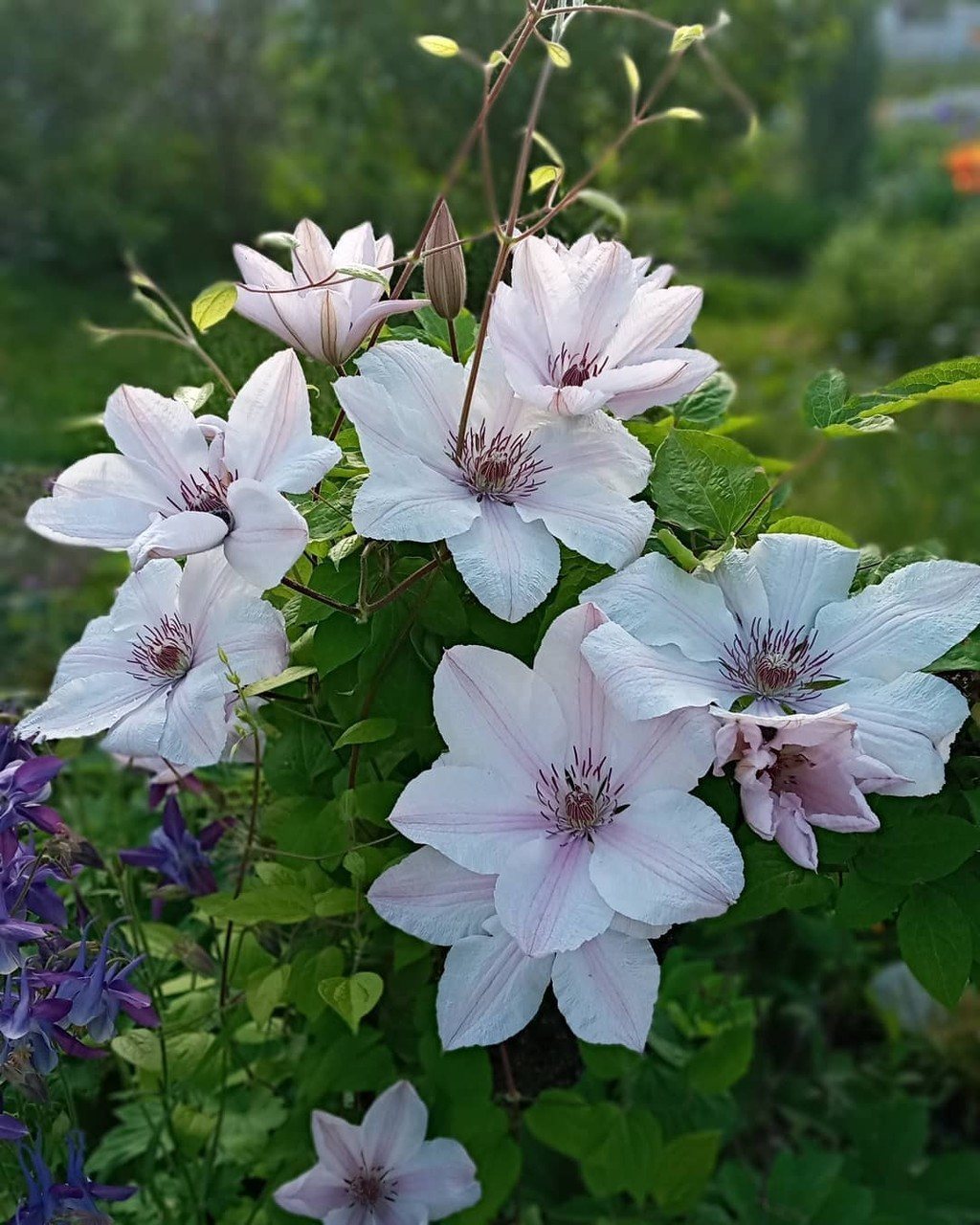
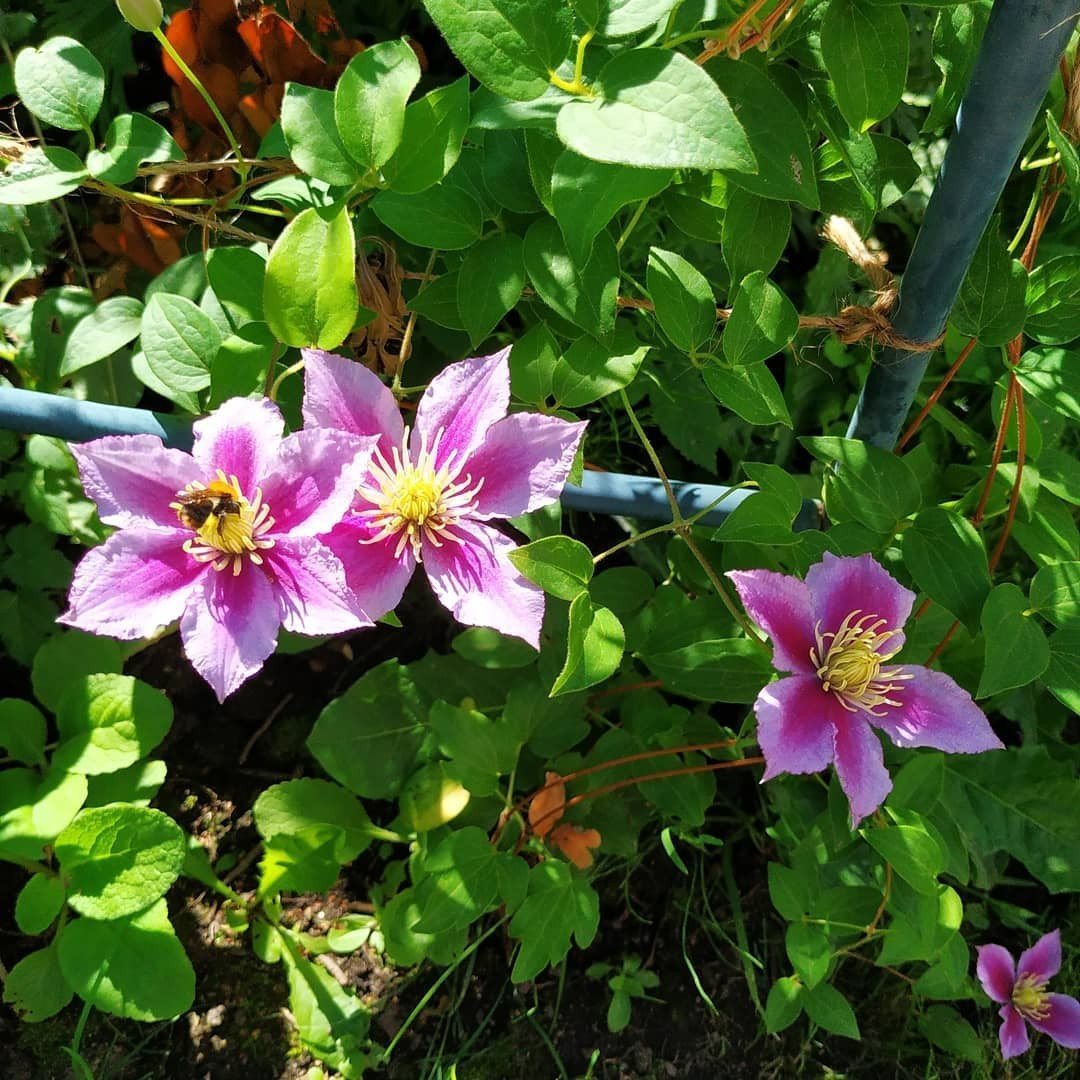




Princess Kate
The height of the perennial hybrid reaches 4 m. It belongs to the Texas group.
The small-flowered plant blooms from June to September. The flowers are 4-6 cm in size and consist of 6 white or pale pink petals. Bell-shaped buds develop on current shoots and are directed upward.
The frost-resistant crop survives freezing temperatures down to -29℃. Increased resistance to diseases and bacteria.
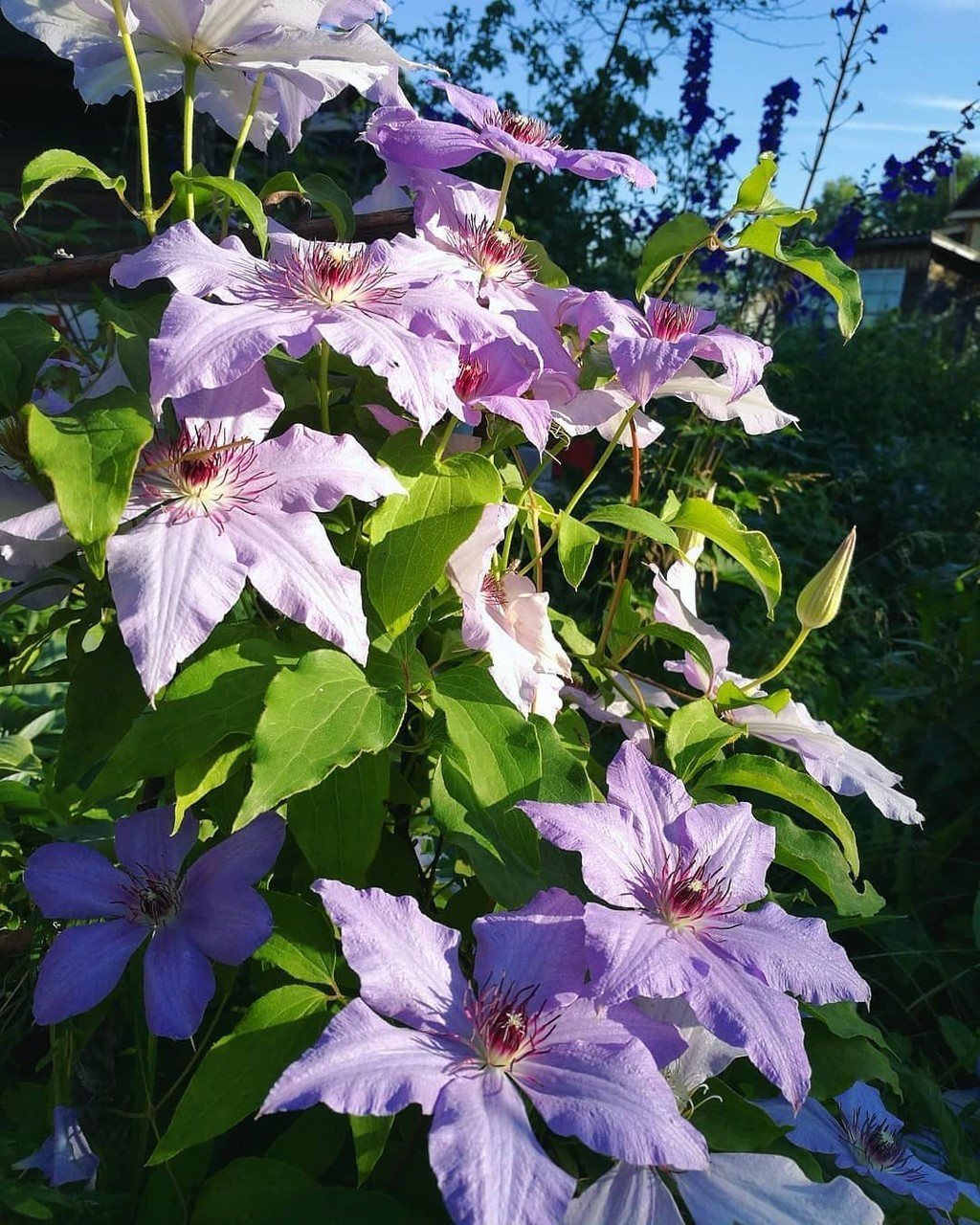

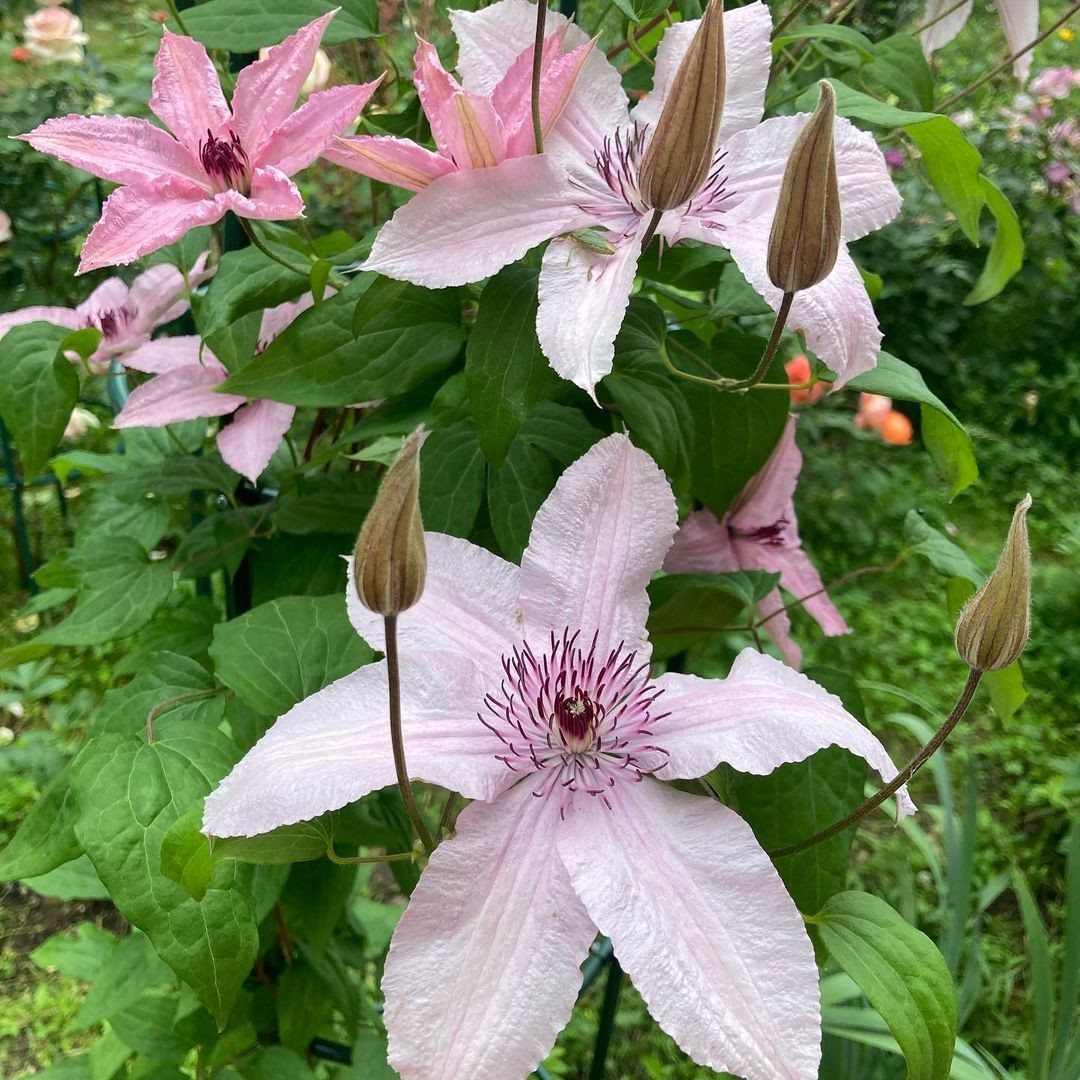



Comtesse de Bouchaud
The large-flowered vine from the Jacquemman group blooms profusely in the first ten days of July.On young shoots, lilac-pink flowers about 15 cm in diameter are formed. The buds are directed upward, the tips of the petals are downward.
The leaves are pinnate and bright green. There are three leaves on one branch.
The shrub tolerates low temperatures down to -35℃. Does not tolerate stagnation of liquid. Average resistance to infections.
Ernest Markham
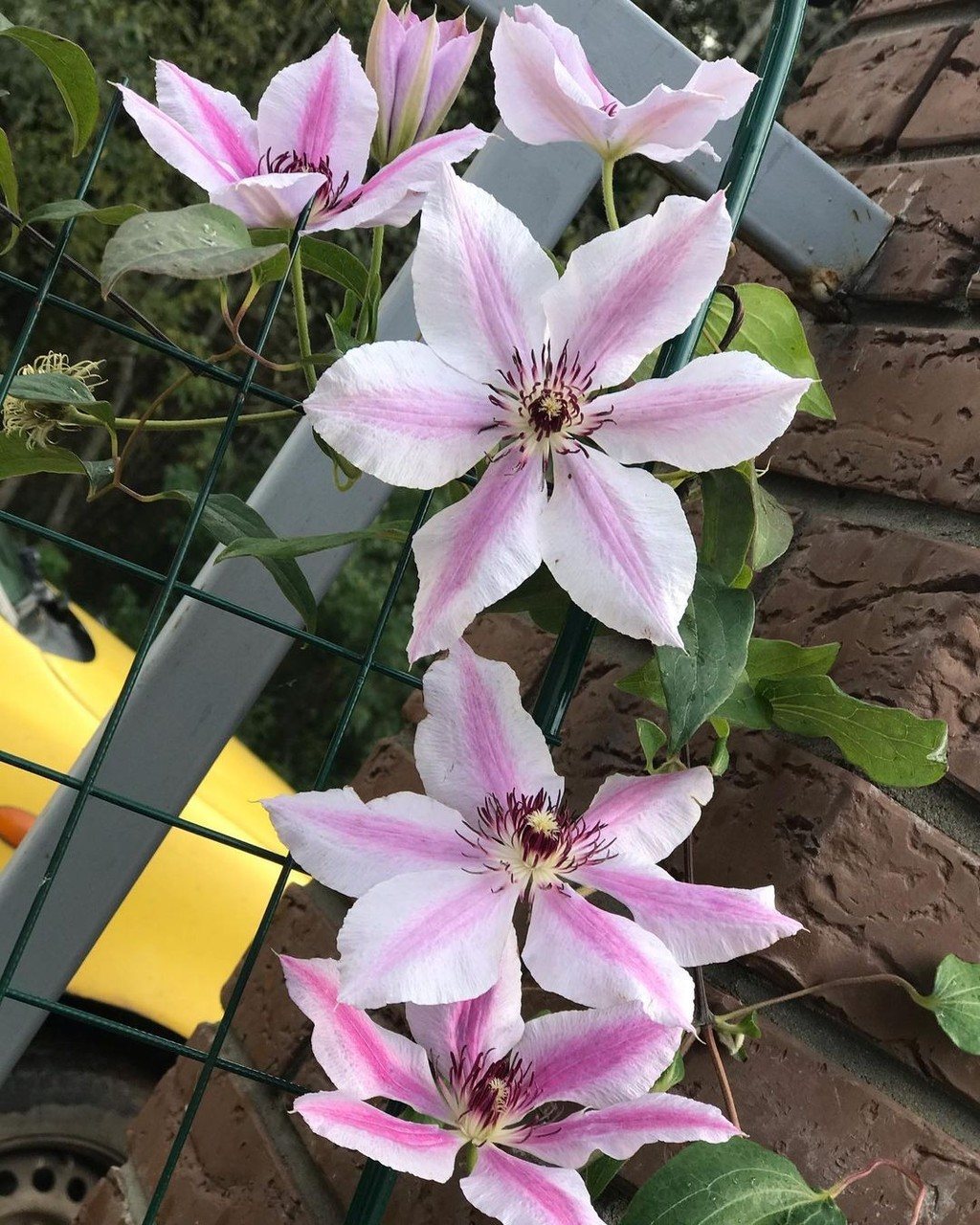
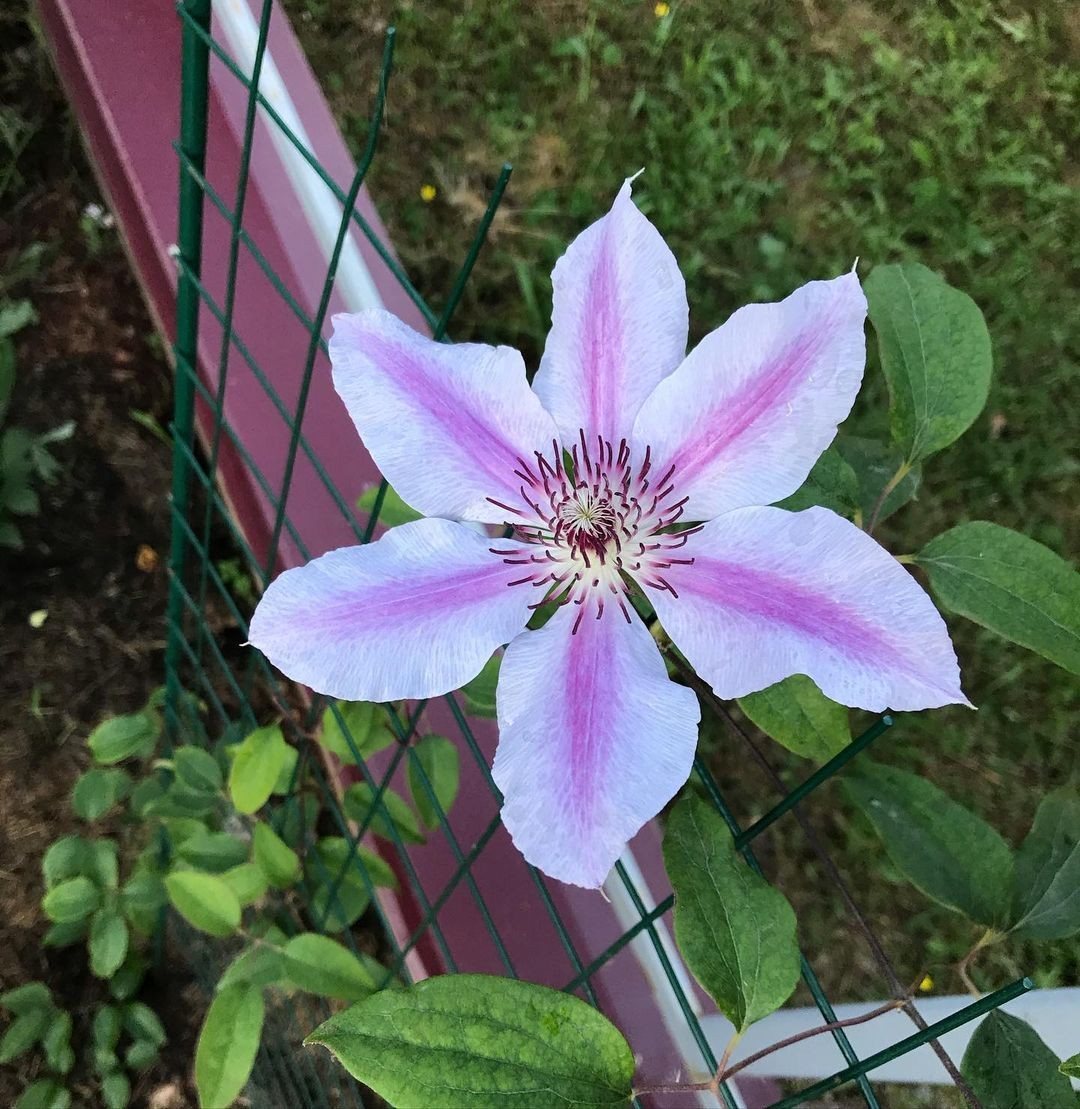
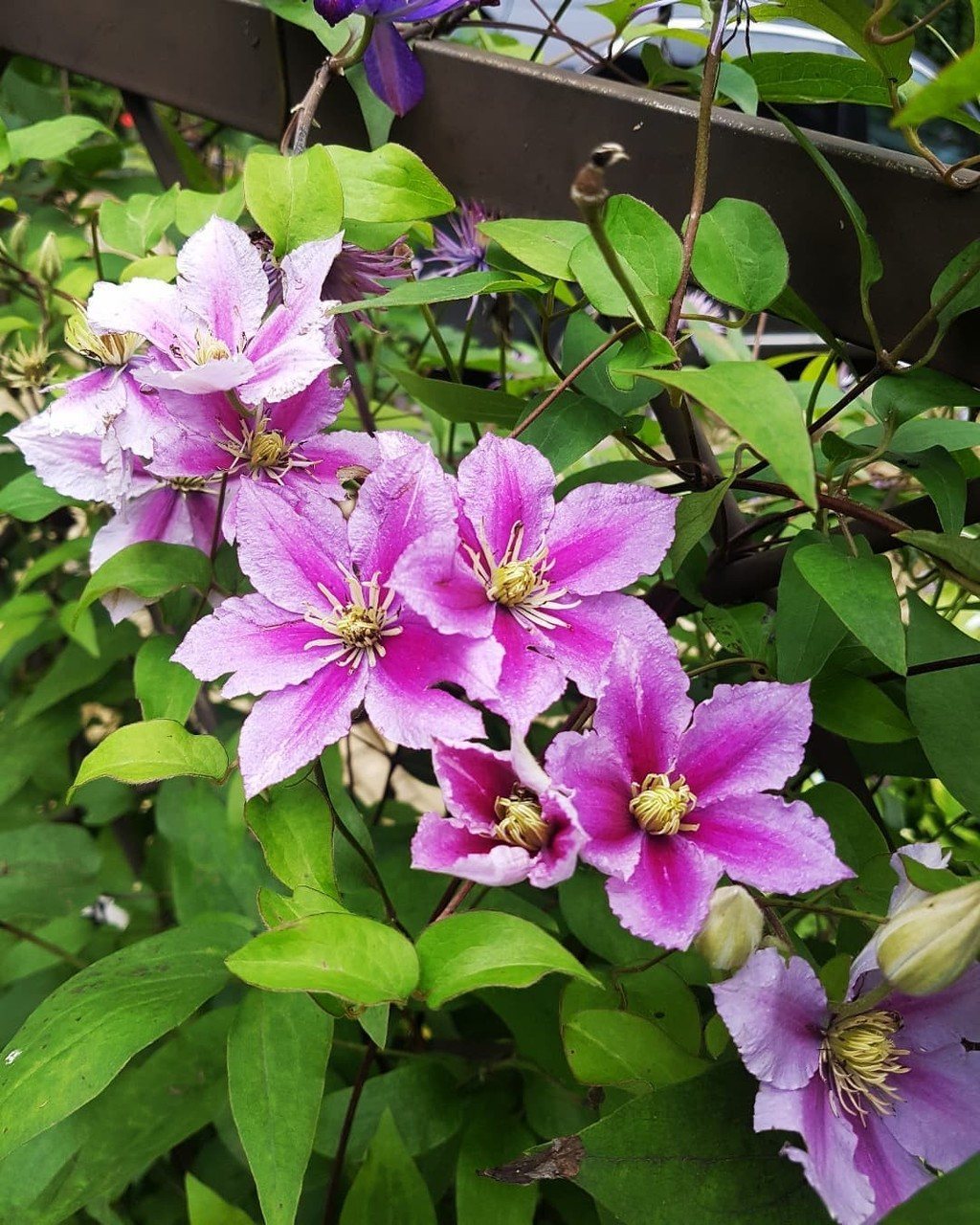



A variety from the Jacquemman group blooms flowers in July on new stems. The petals are red, semi-double with elongated ends, wavy edges.
How to cover clematis for the winter and not ruin the plant by making mistakes: 4 useful tips
The leaves are compound-trifolate, oval with elongated pointed ends.
Tolerates heat and cold. Disease resistance is average.
John Paul 2
The large-flowered clematis from the Jacquemman group blooms from June to September inclusive. Buds form on current and last year's shoots.
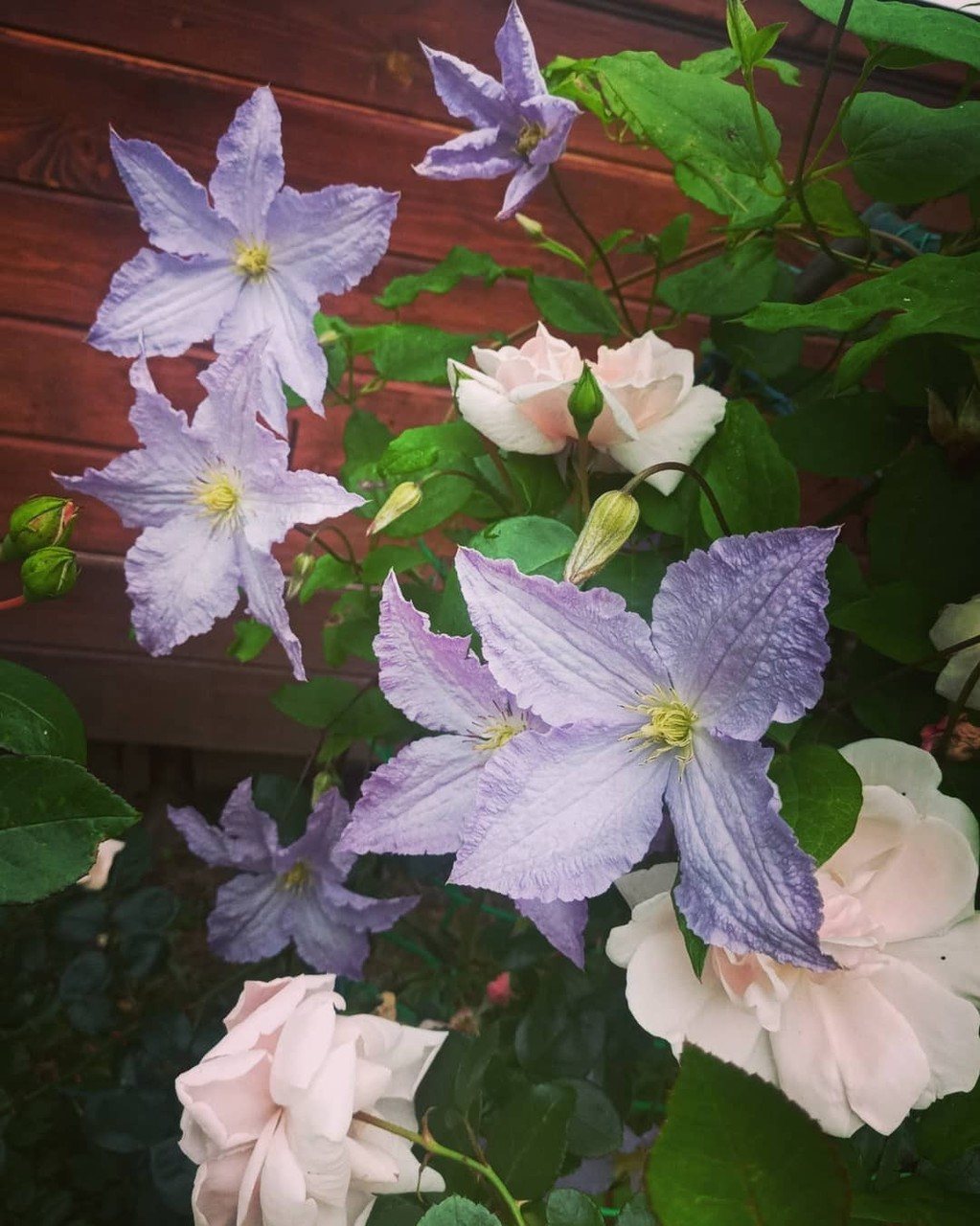
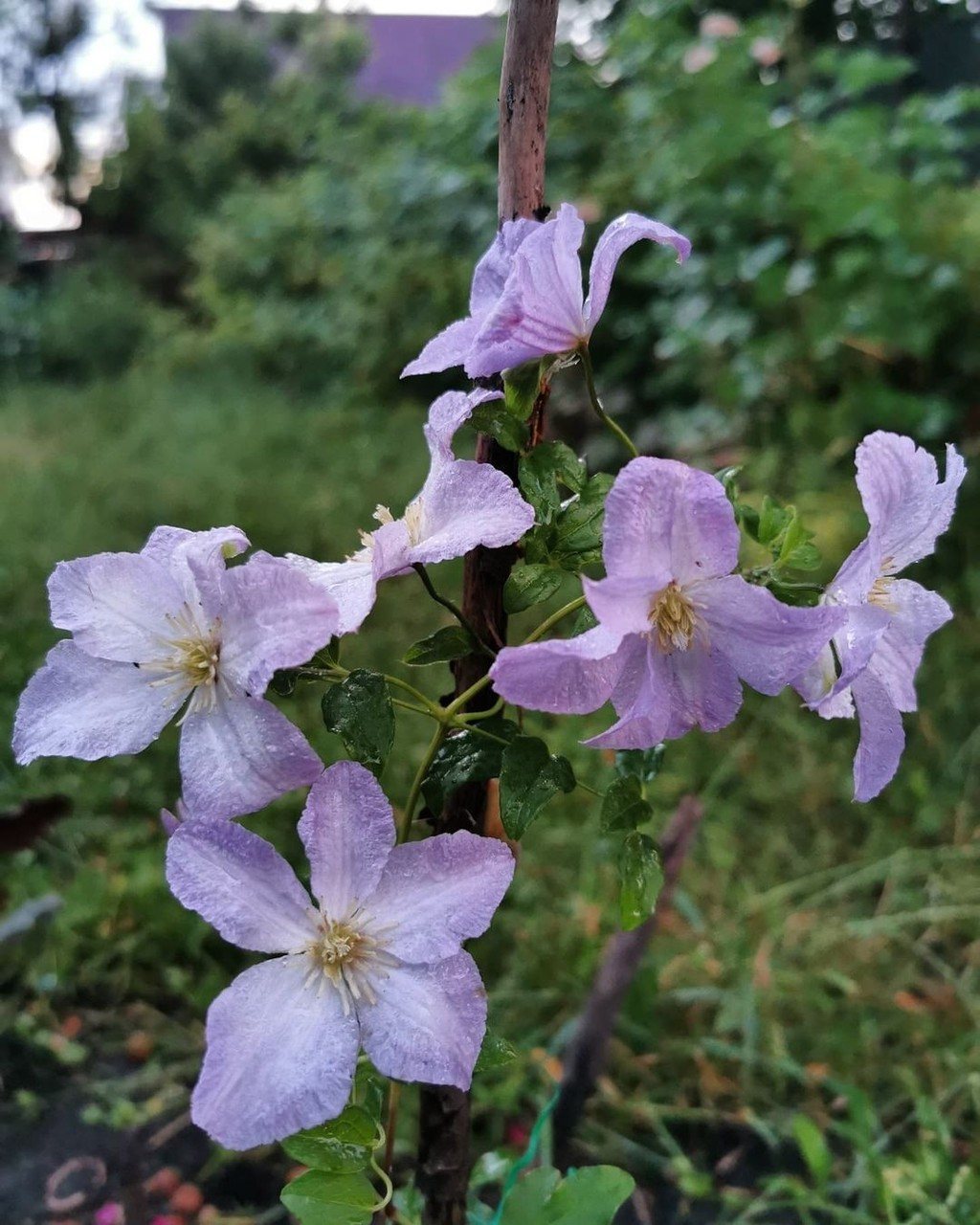
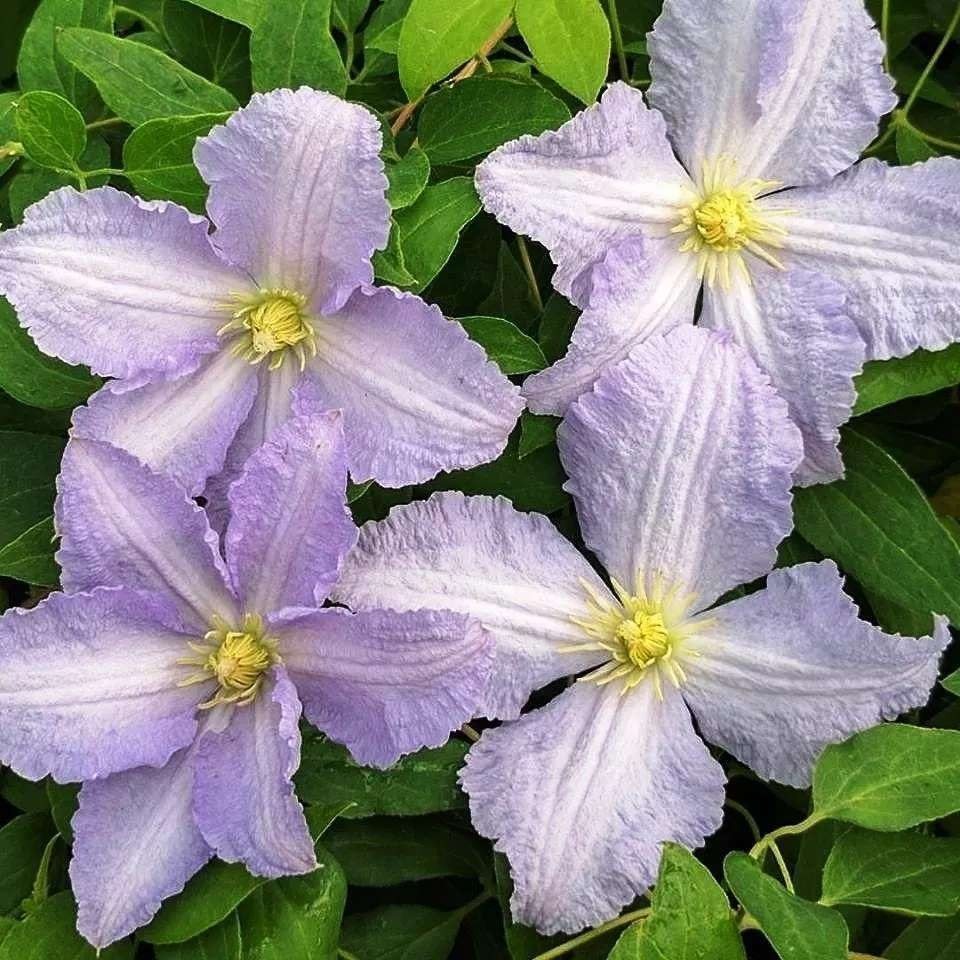



The flowers are pale pink or white with a longitudinal pink stripe. The ovoid sepals are curved downwards and wavy.
Not resistant to wilting. Tolerates winter well without shelter.
Hegley Hybrid
The shrub belongs to the Jacqueman group. Large flowers up to 18 cm develop on young shoots. Abundant inflorescences open from the third decade of June until the first frost. The petals are pearlescent with a bright pink frame. The edges are wavy, bent upward. The flowers are fully open and consist of 6 star-shaped petals with wavy, pointed edges. The buds are light pink with a pearlescent tint. The foliage is complex, ovate.
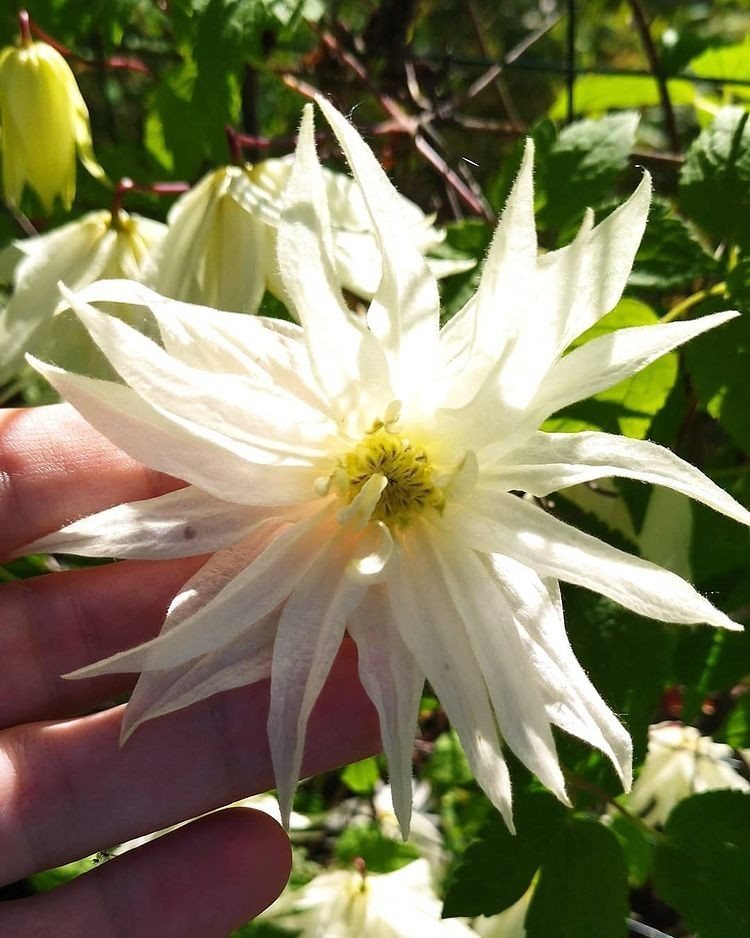
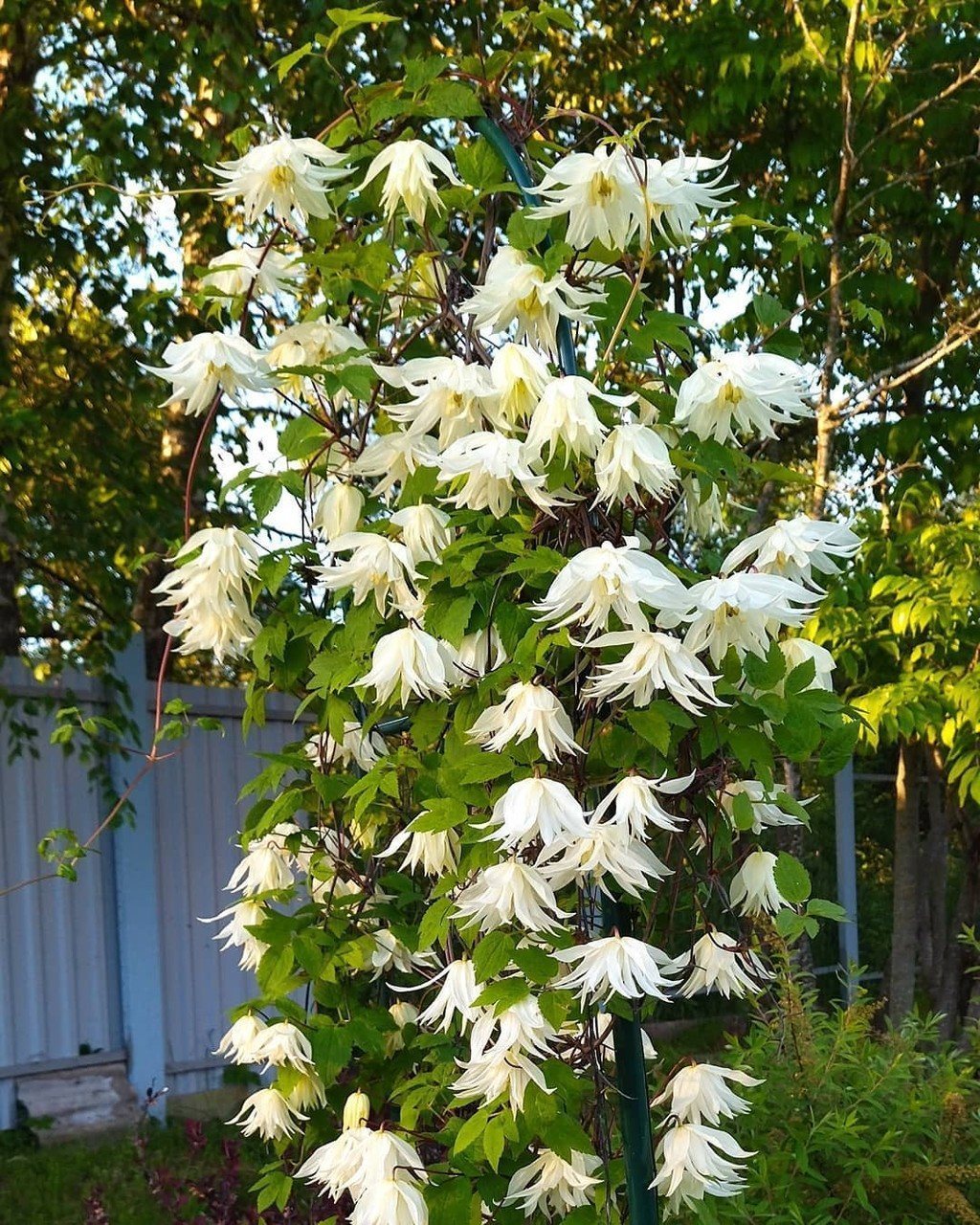
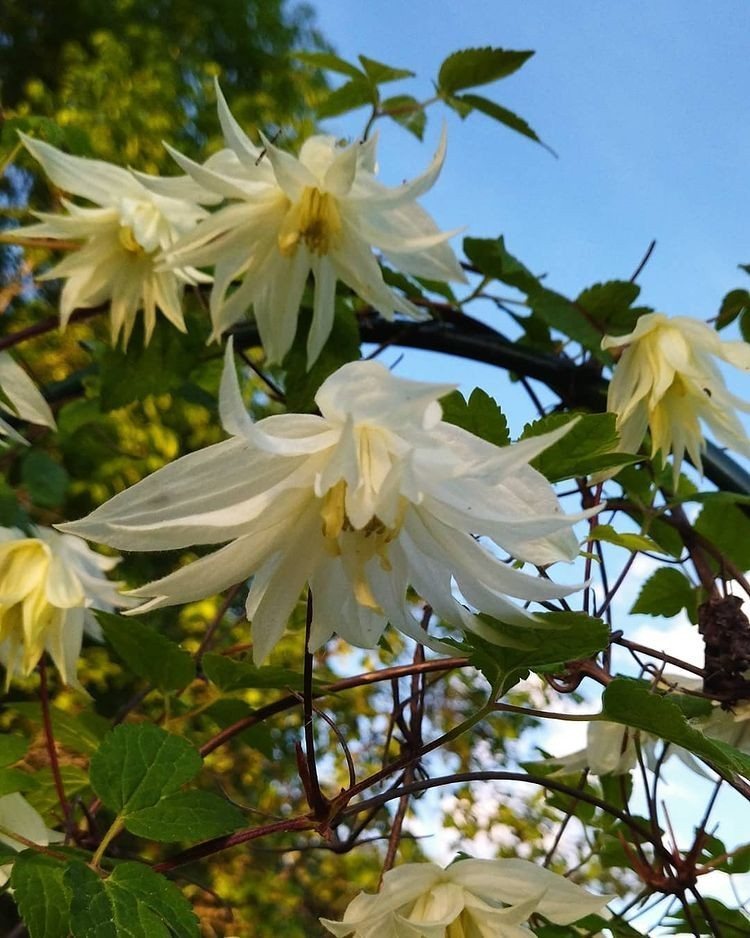



The hybrid variety is frost-resistant, but in the middle zone it needs light cover (mulching). Loves cool weather, does not tolerate extreme heat.
Not resistant to rot, wilt, rust and powdery mildew.
Nellie Moser
The Patens group variety blooms in two waves.The first wave is the most abundant and begins in June on last year's shoots.
Star-shaped sepals 20 cm, directed upward. They have 6-8 wide petals with sharp wavy tips. The color is lilac with a purple stripe. Some buds are semi-double. On the second wave, buds with a diameter of 16-17 cm open from new growths.


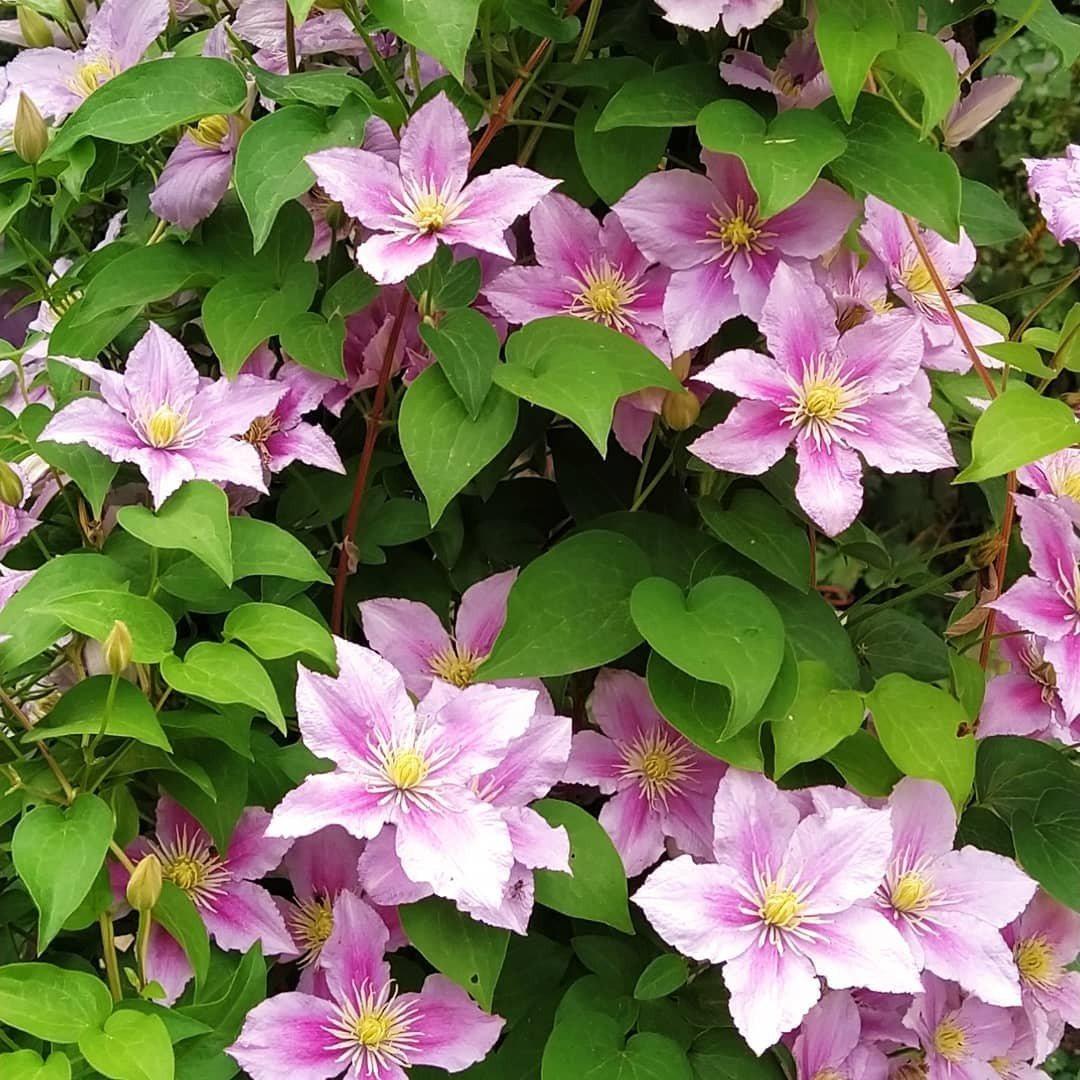



The leaves are bright green, trifoliate.
Nellie Moser loves partial shade. The height of the bush during the season reaches 1.5 m. It is not frost-resistant; it is covered with a dense layer of mulch for the winter.
Blue Angel
Large-flowered shrub of the Integrifolia group. Known under the names "Blue Angel" and "Blekitni Aniol".
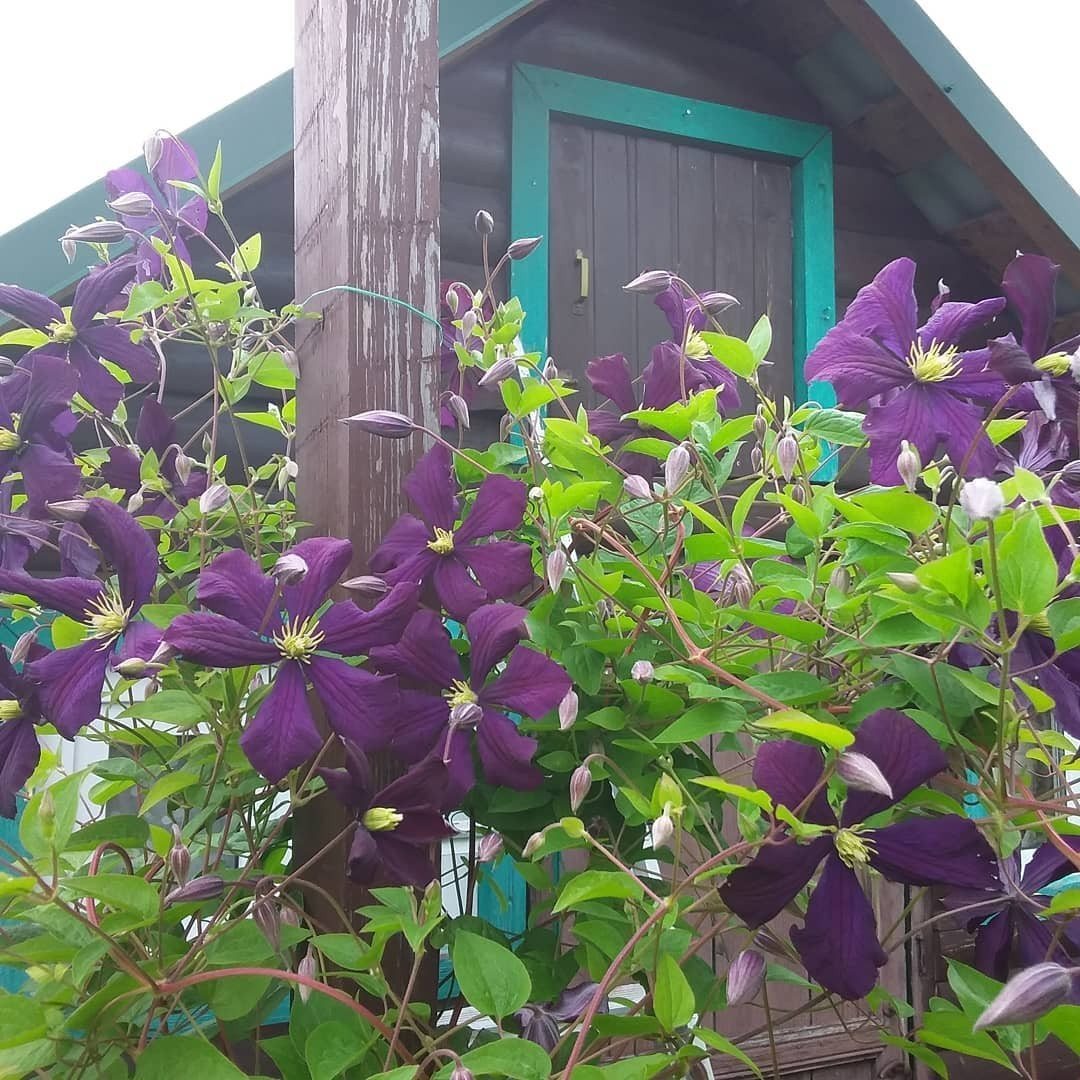
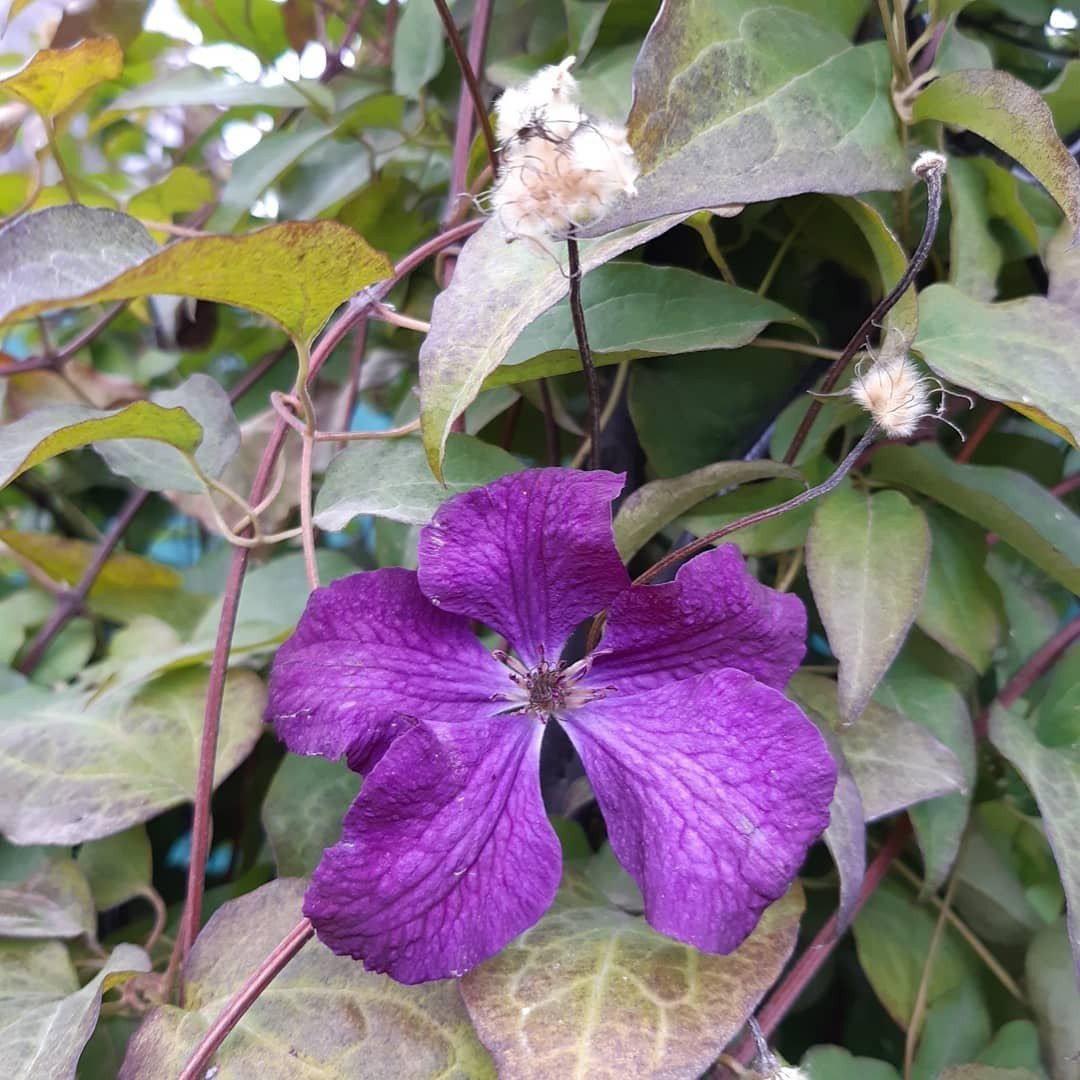




Late-flowering vine develops from young shoots. Abundant flowering begins from the end of July until the first frost. The inflorescences are large, 15 cm in diameter. The petals are light blue, consisting of 5-6 sepals with drooping ends. The buds last for more than 3 months.
The leaves are compound, trifoliate, glossy. The plate is dark green, asymmetrical.
By the end of the season it grows up to 4 m in height. The immunity of the lozinka is weak. It is susceptible to wilt, spider mites and fungal infections.
Tolerates winter without shelter.
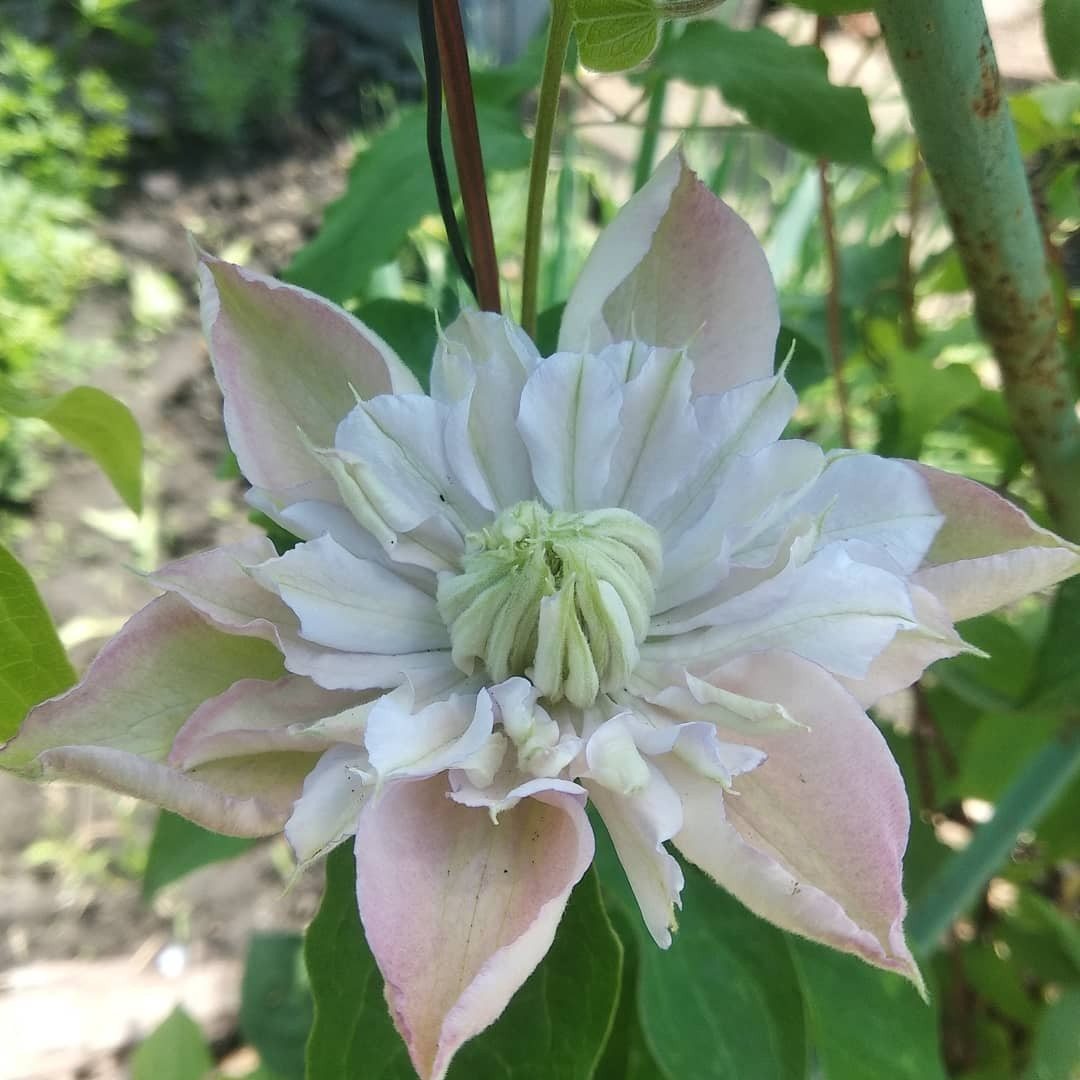
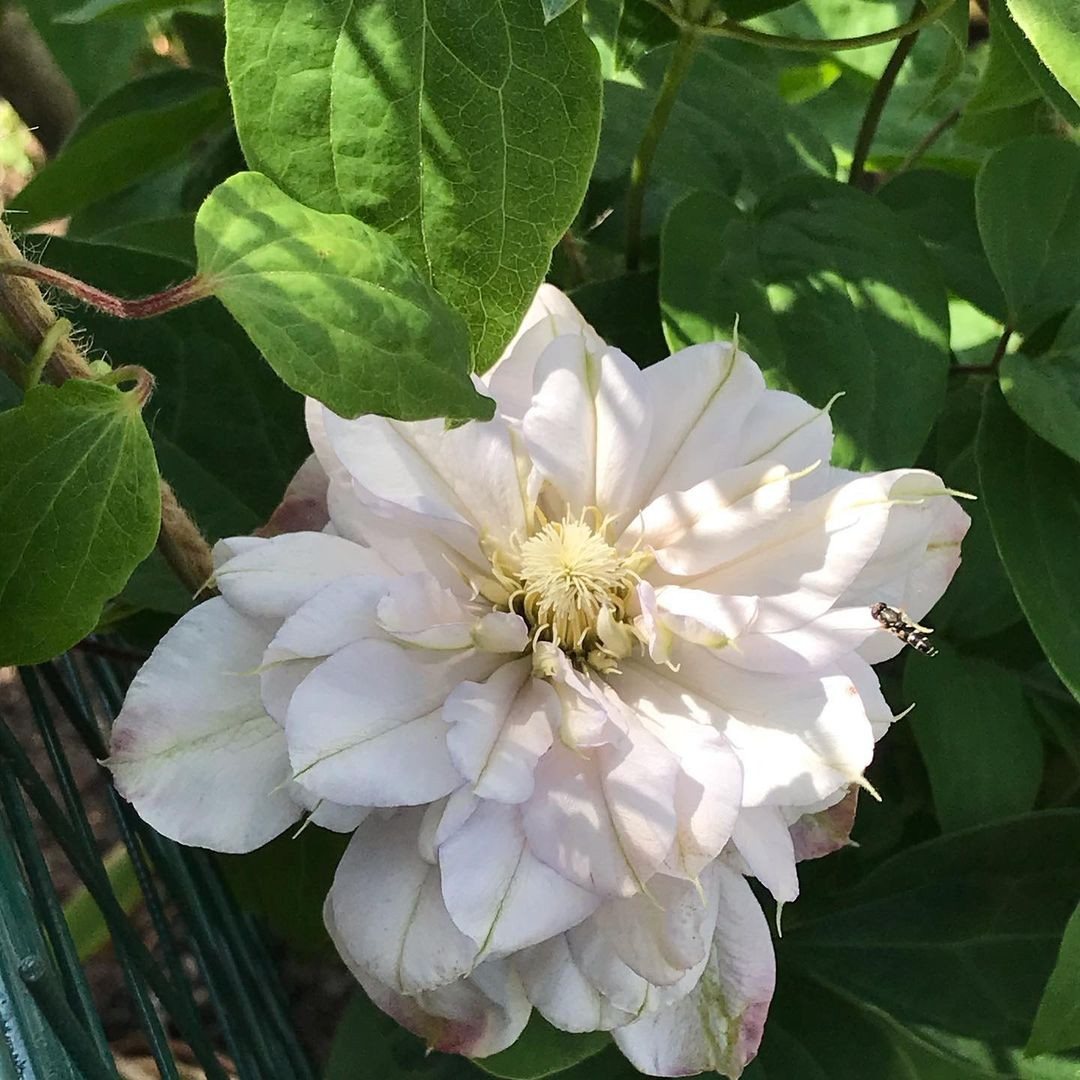




Lemon Dream
A large-flowered variety from the Atragene group grows up to 3 m. It blooms twice per season - in mid-May and in the second decade of July.
The bell-shaped buds are pale yellow and consist of 8-15 elongated double petals. During the growing season they smell like grapefruit.
The leaves are dark green with serrated edges.
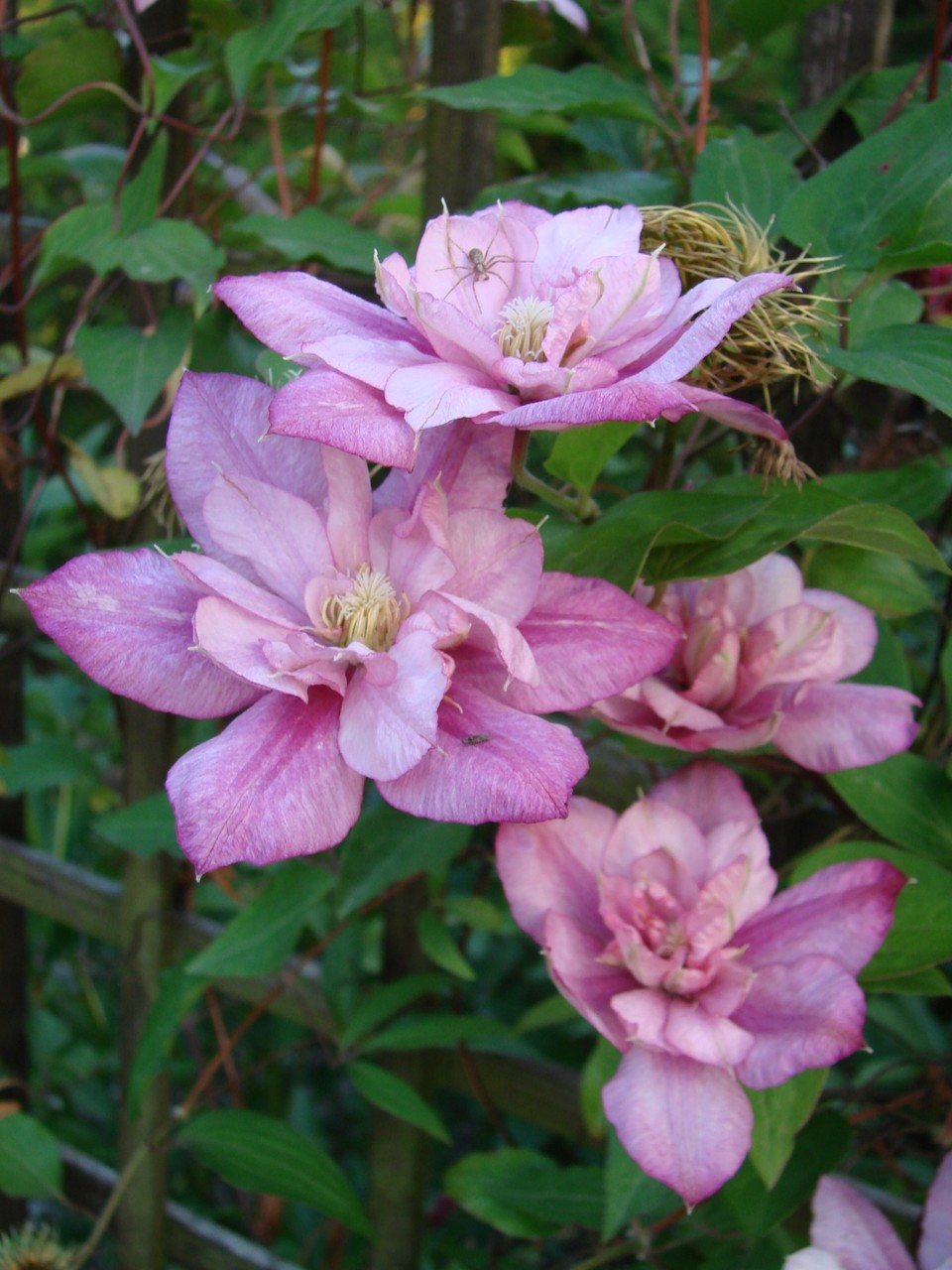
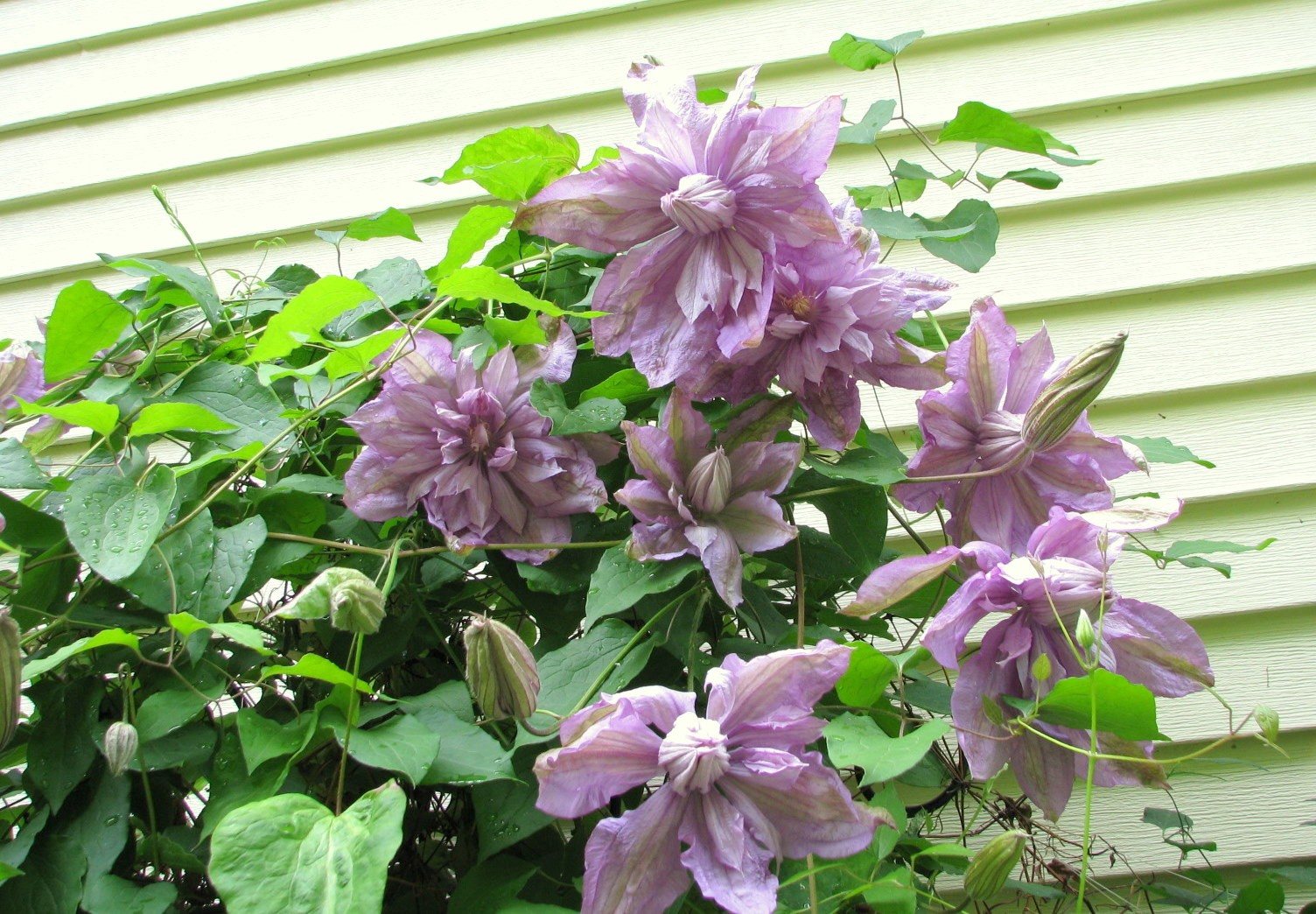


Resistant to frost and disease.
Piilu
Patens Group. It grows up to 1 m in the middle zone, in the south - up to 2 m. The shape of the flowers on one bush is different.
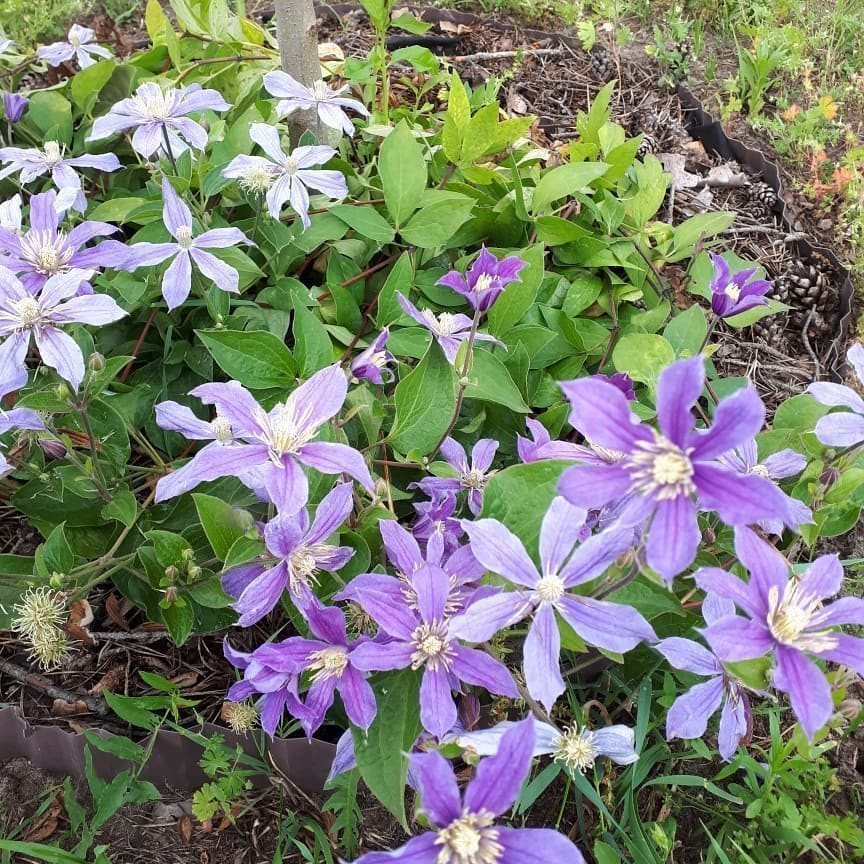
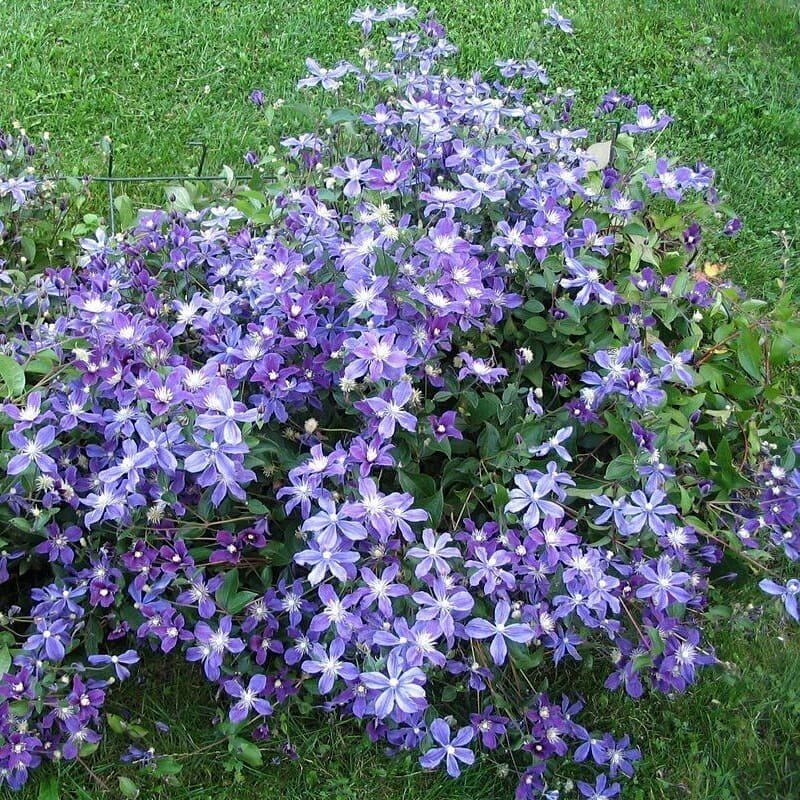




Piilu blooms twice. In June, double star-shaped flowers up to 12 cm, with a purple tint, appear. Inflorescences of the main bush.In July, larger (up to 14 cm), simple, non-double inflorescences of 6 petals bloom. They develop from young shoots.
The leaves are light green, elongated.
Does not tolerate stagnant moisture and heat. Weakly susceptible to diseases and pests.
Etoile Violet
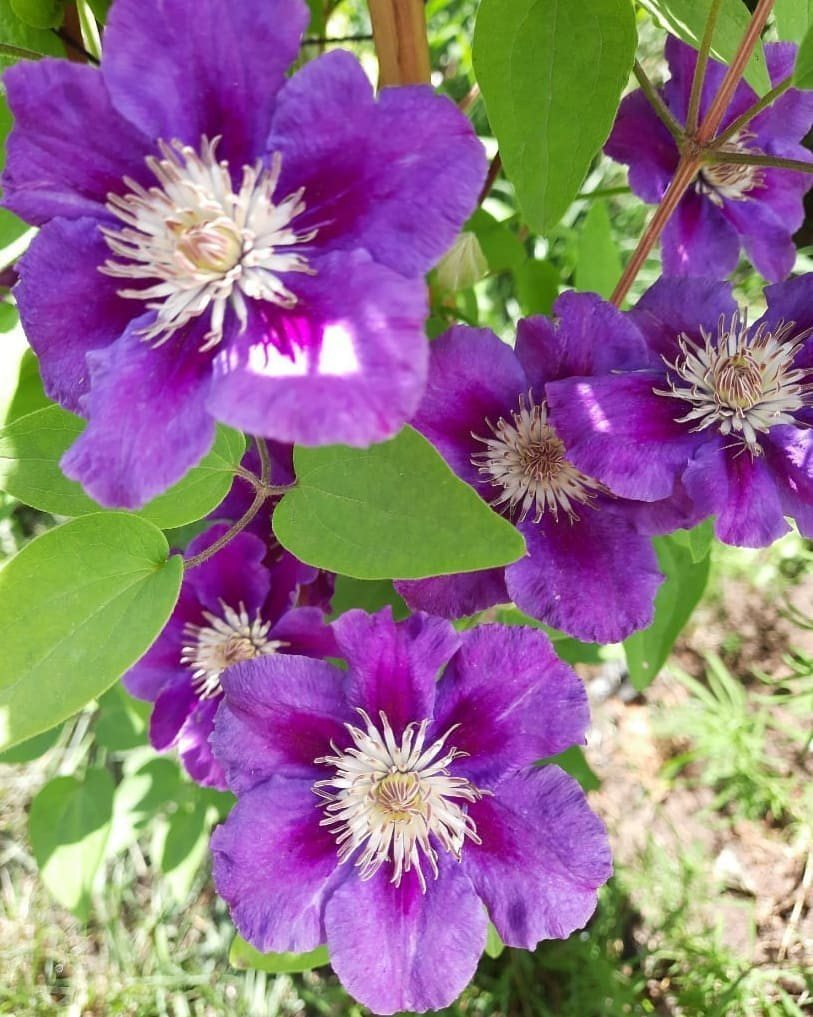
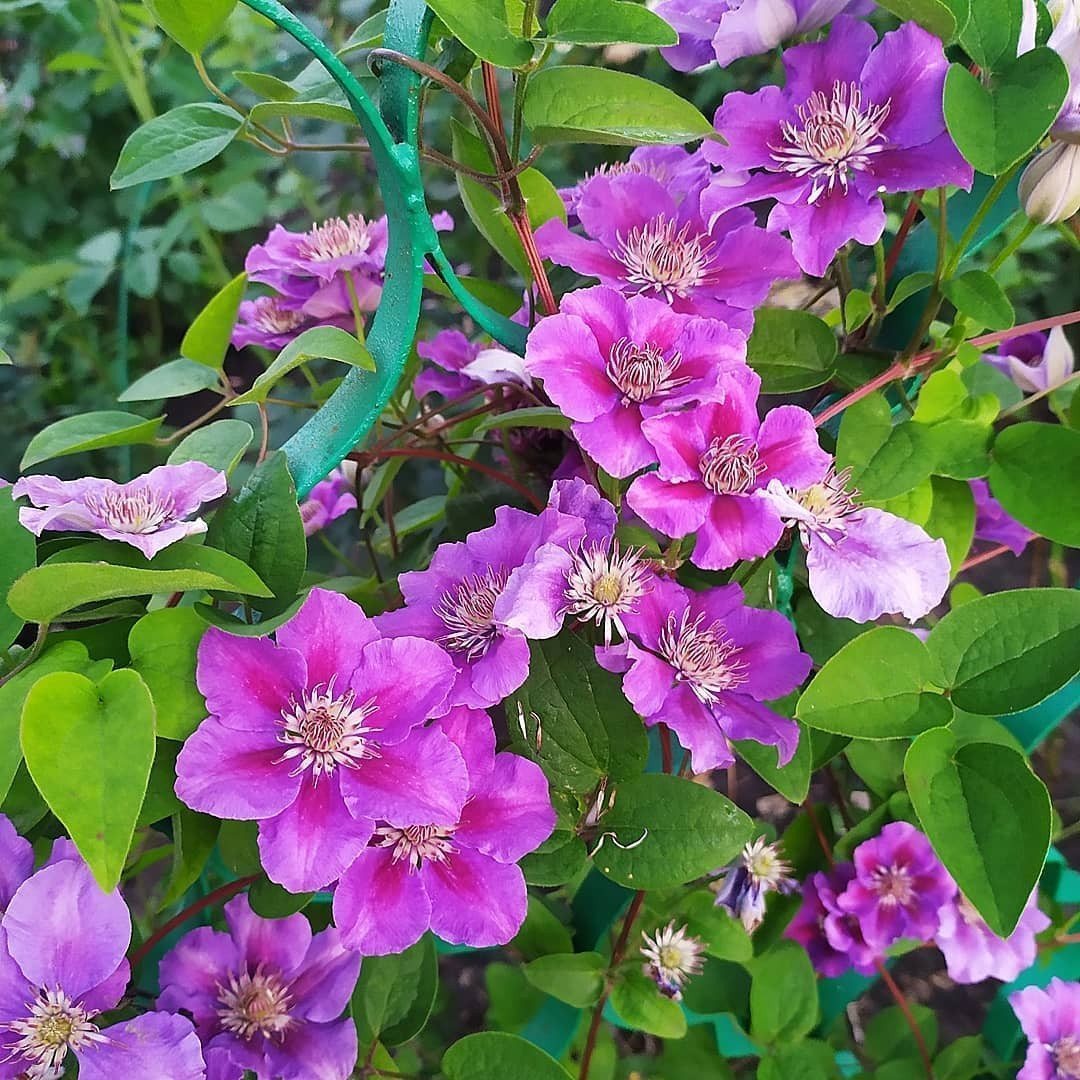
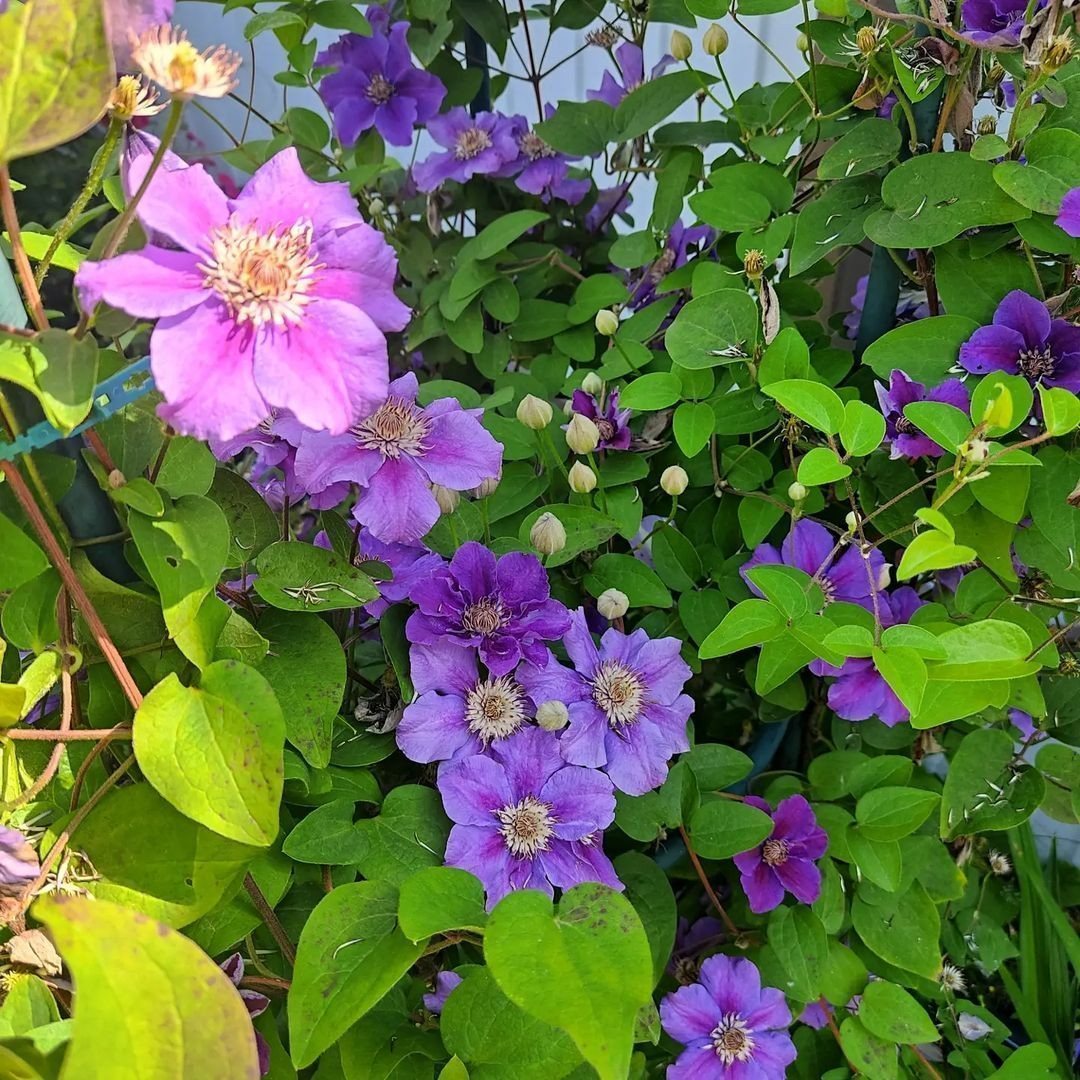



A liana-like shrub from the Viticella group grows up to 3-4 m. Star-shaped velvety buds are formed on the stems of the current year from July to September. The petals have a purplish-violet tint and wavy edges, the ends droop down. The size of the flowers varies from 9 to 15 cm.
The leaves are opposite, ternate, with an elongated blade. There are three leaves on one branch.
The shrub does not like heat and can withstand frosts down to -34˚C.
Innocent Blush
An early flowering large-flowered plant does not exceed 2 m. Belongs to the Florida group.
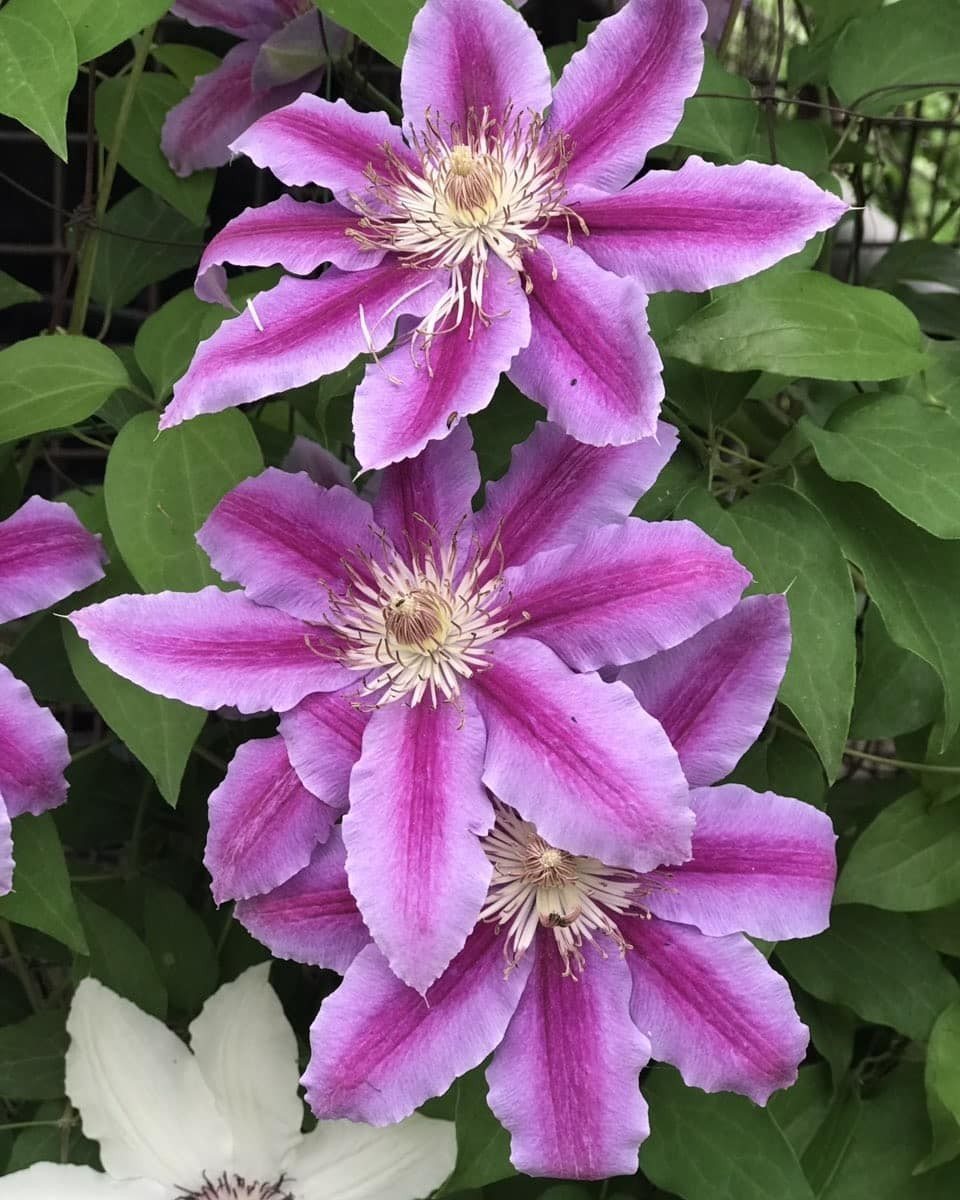
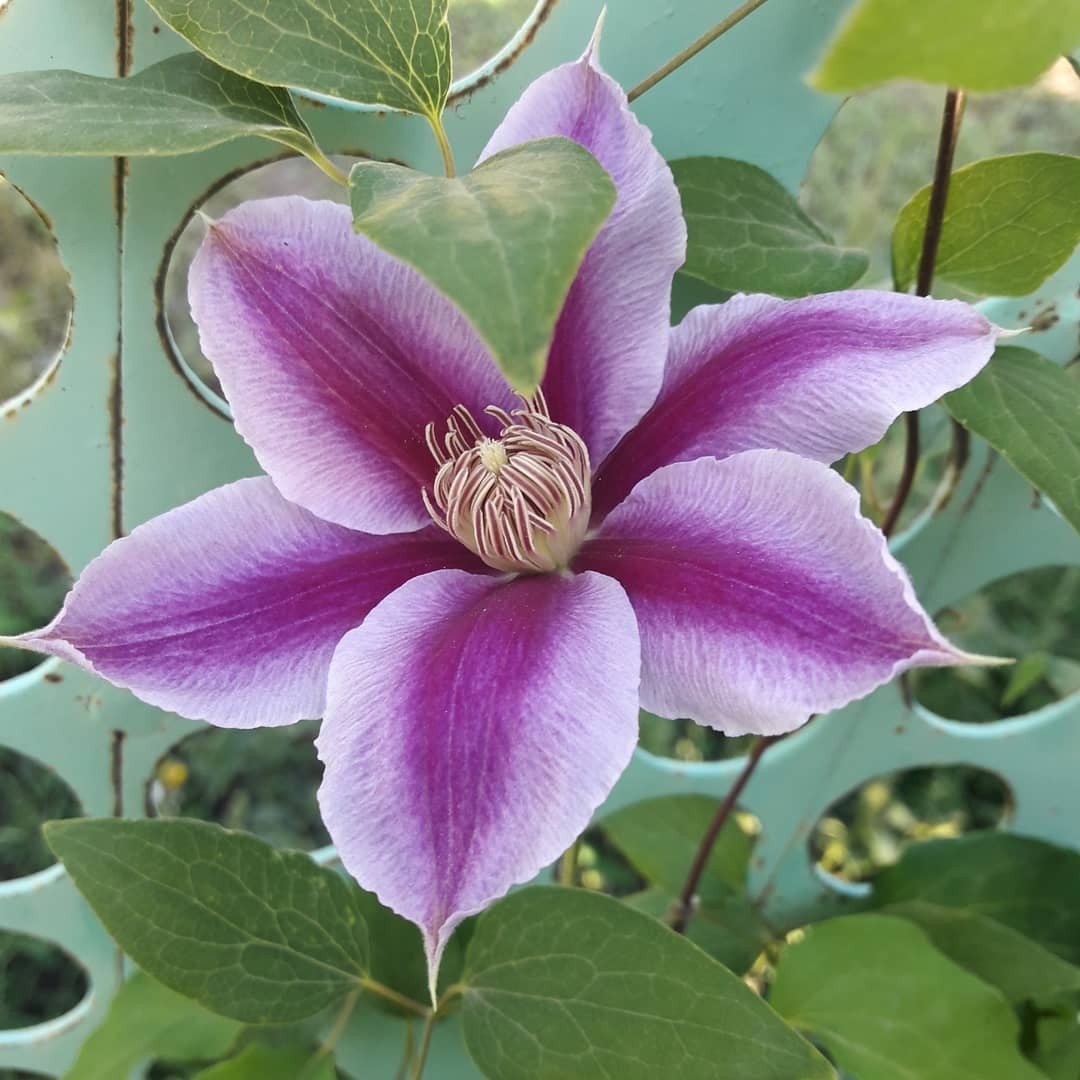
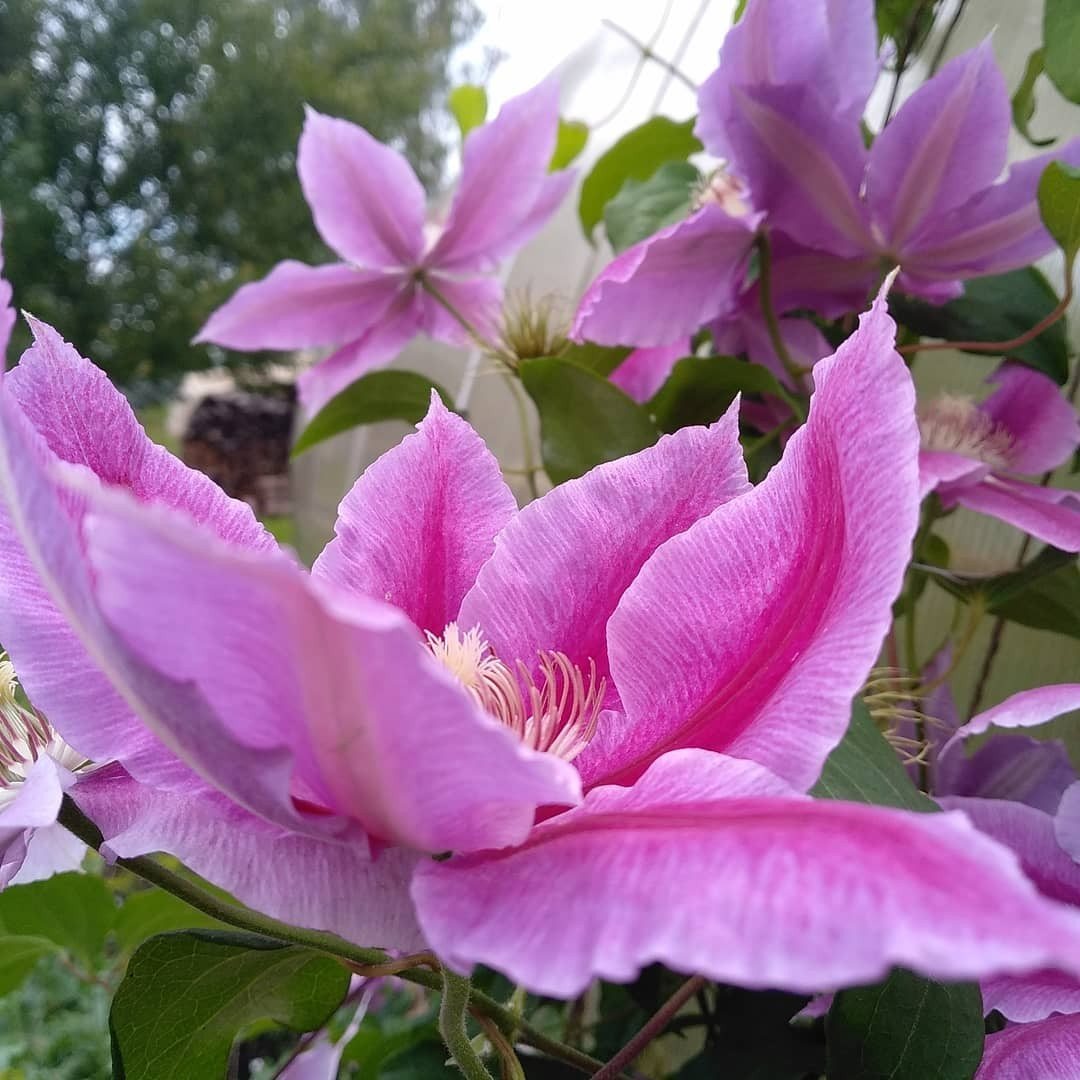



Semi-double twisted sepals are formed on last year's shoots in the third decade of May. In September, simple inflorescences with 6 wide ovate sepals bloom on young stems. The flowers are white or light purple with a pink frame. Leaves are ovate, opposite.
Susceptible to fungal diseases. They need light shelter for the winter.
Innocent Glance
The large-flowered species with double petals belongs to the Florida group. Blooms twice. In May-June, double buds open on old stems; in August-September, simple or semi-double inflorescences bloom.
One flower contains up to 60 light pink elliptical parts with sharp lilac ends.
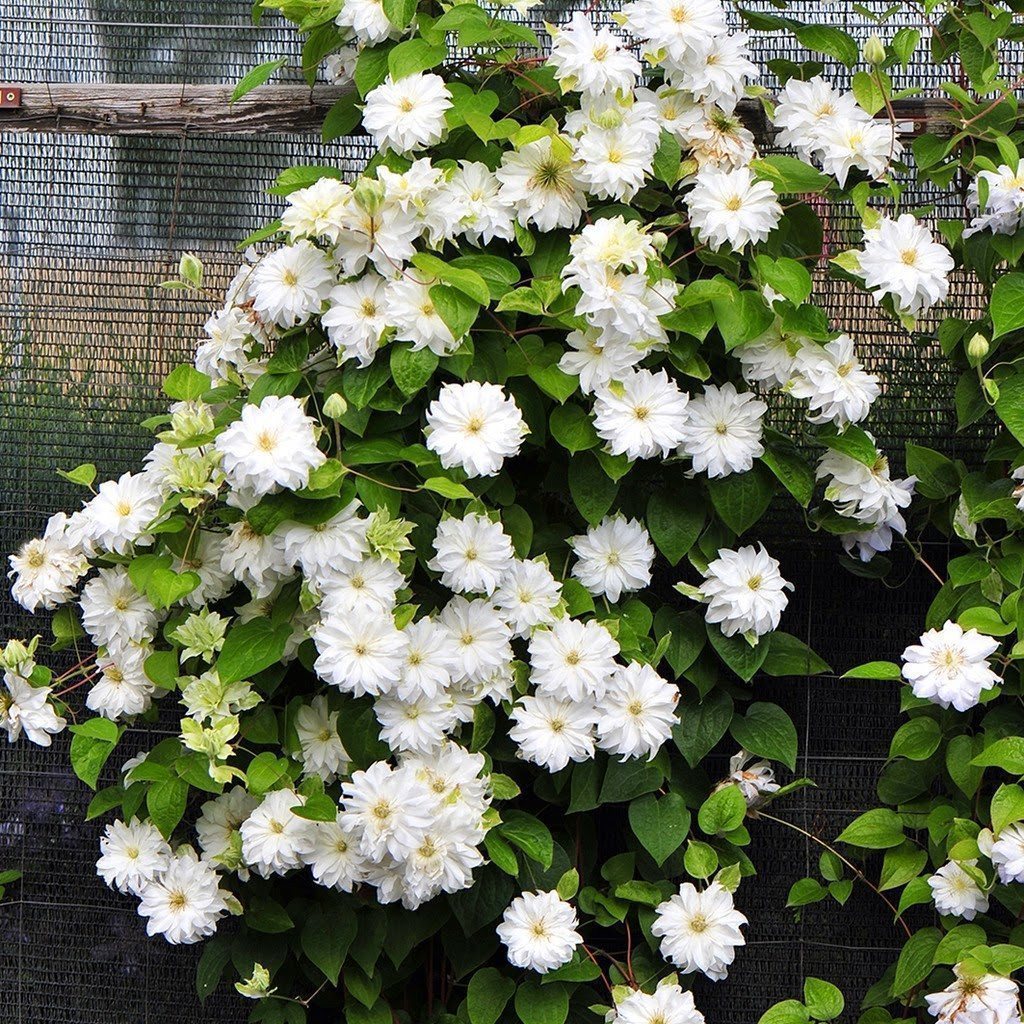
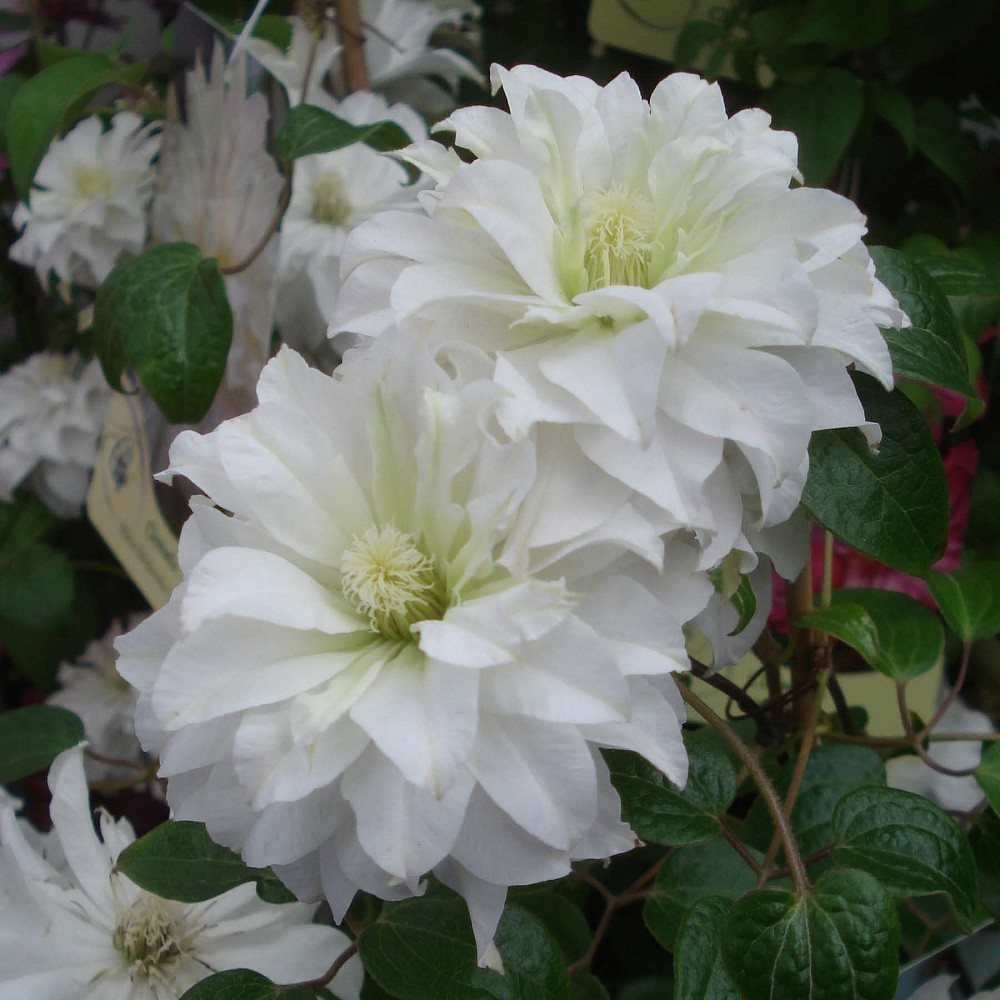
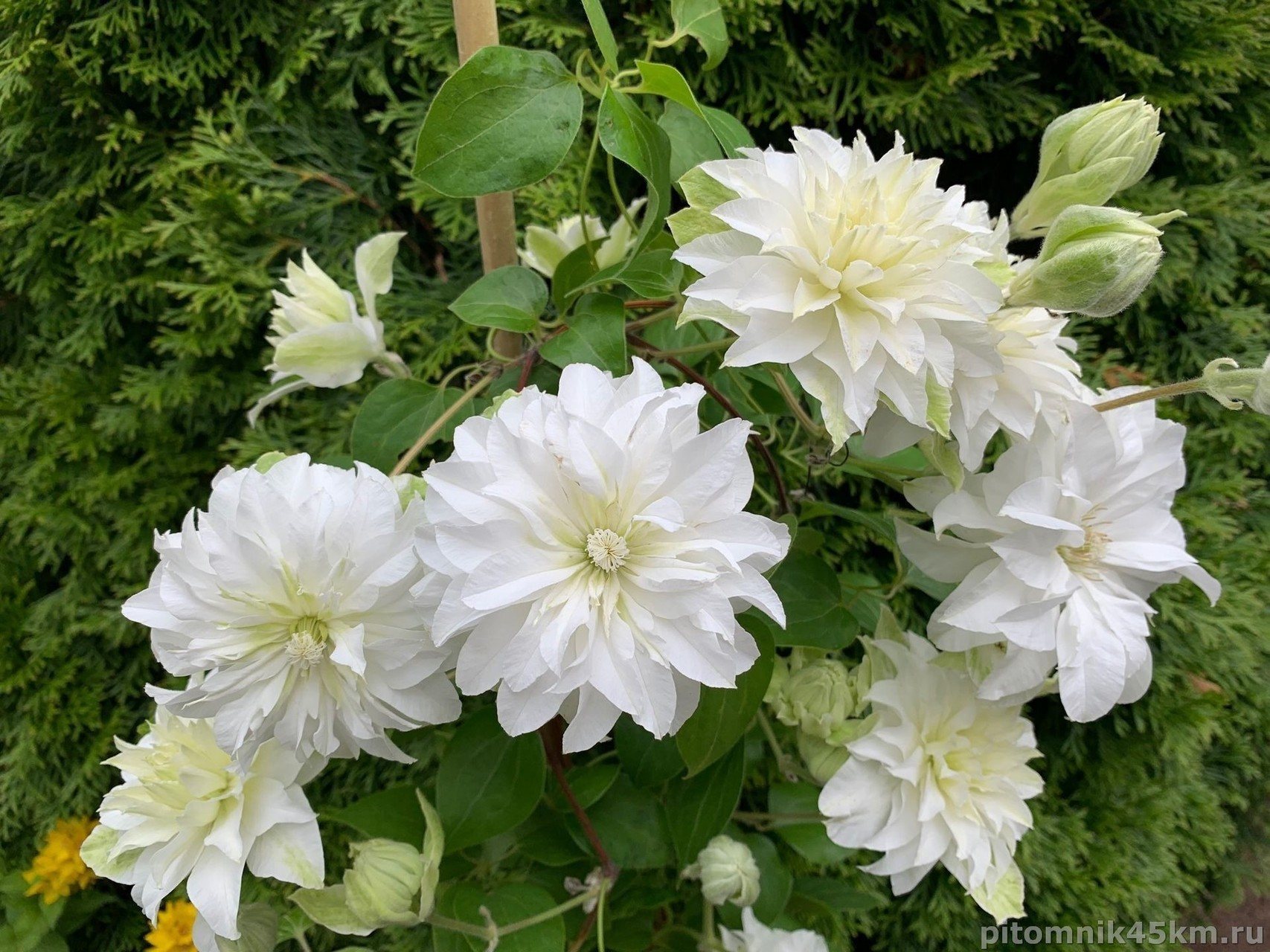



Resistant to frost and disease.
Arabella
Subshrub of the Intergrifolia group. Buds with 6 petals (diameter 9 cm) are formed on young shoots in mid-June. Opened blue-violet buds fade to pale blue in the sun. The leaves are entire, pubescent.
Resistant to frosts down to -30˚С. Average resistance to diseases.
Ashva
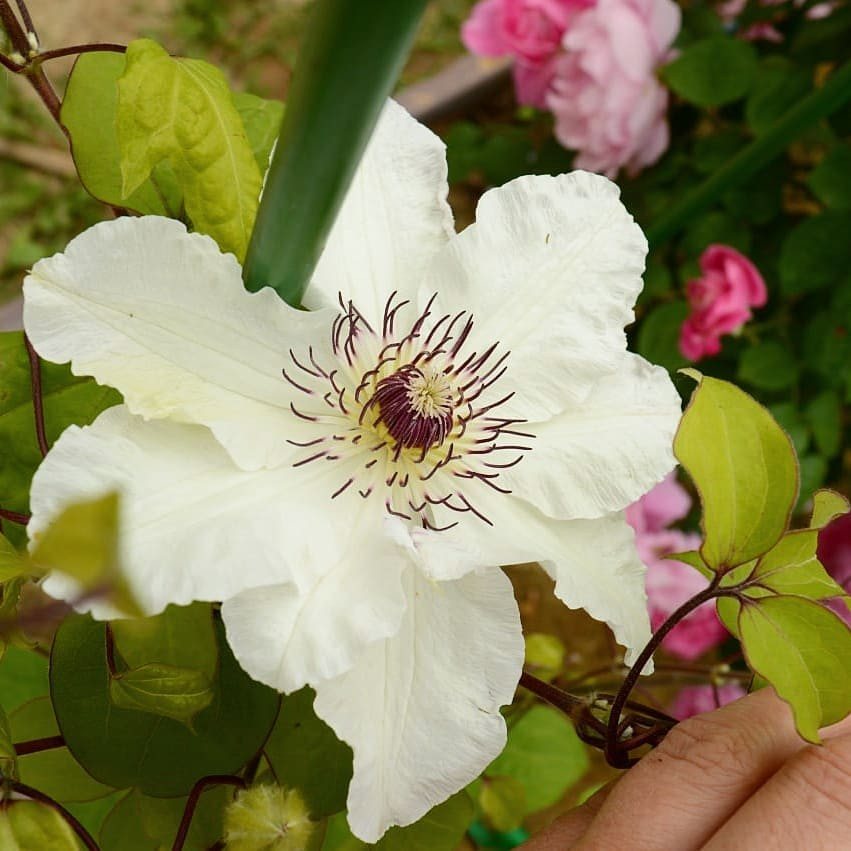
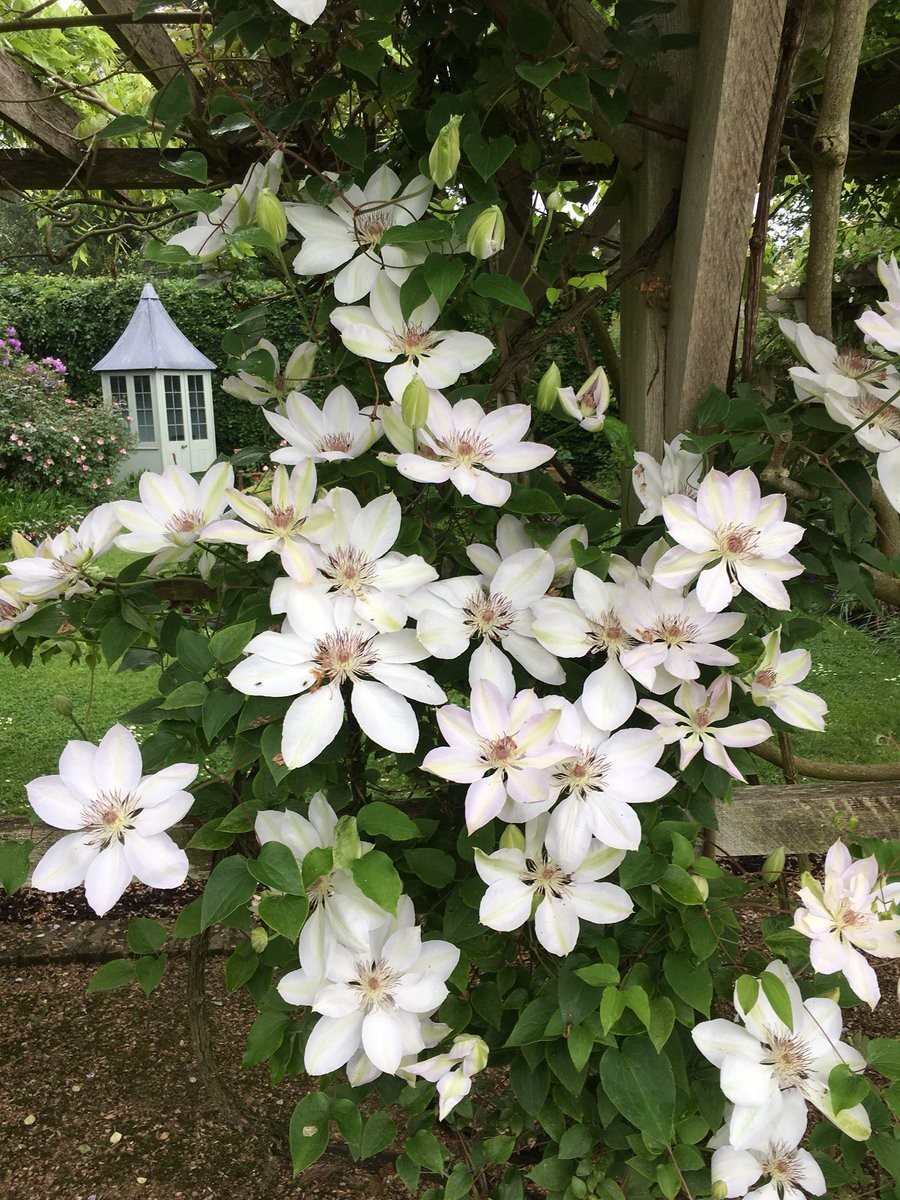




A large-flowered shrub is found in the Patens and Jackman group. It blooms from the first year. In the middle zone, buds develop in early July and continue until September. In the southern regions, they bloom from May and last until the first cold weather.
The petals are round. Among this species, there are shades of white, crimson, and blue.
Depending on care, the size of the bud is from 8 to 12 cm. The height of an adult plant does not exceed 2 m. Resistant to cold, not susceptible to pests and diseases.
Doctor Ruppel
A large-flowered plant of the Patens group. A small climbing shrub grows up to 3-4 m. In central Russia, flowering begins from May to June and in August-September. In the first wave, semi-double leaves with a diameter of up to 18 cm bloom.
The flowers are pink with a blue tint, with a crimson stripe in the center. Oval, pointed petals (6-8 sepals) are arranged in a star-shaped form. The second flowering brings simple flowers of crimson color with a white tint along the edges.

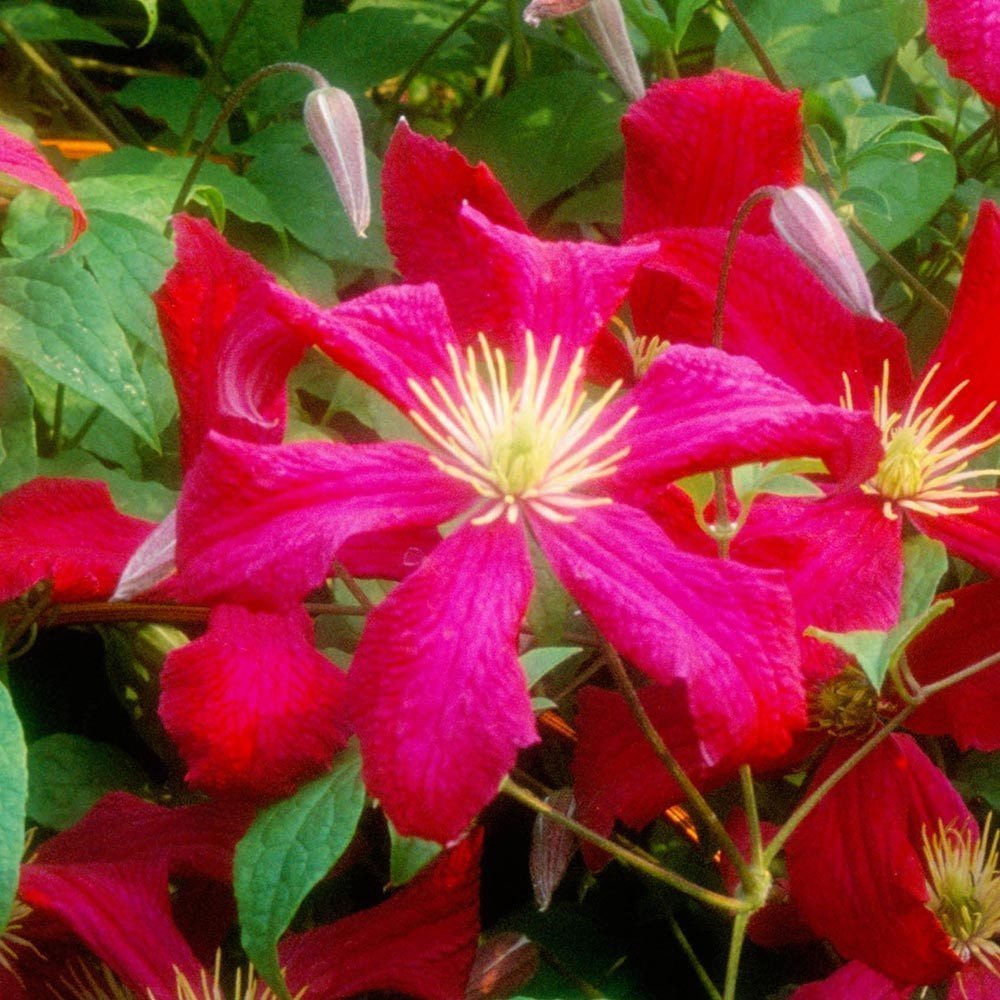
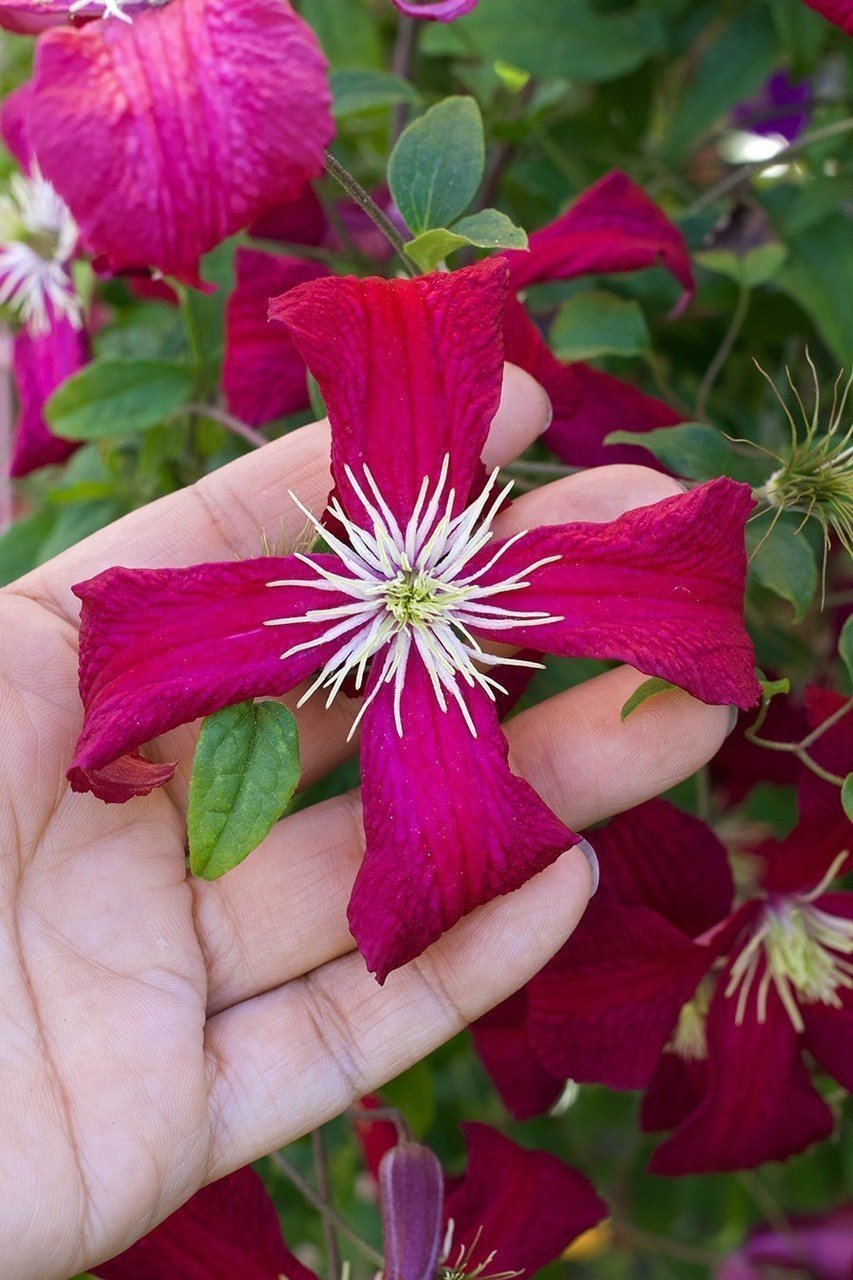



The leaves are odd-pinnate, opposite.
The vine is resistant to viruses and diseases. It tolerates frosty winters well.

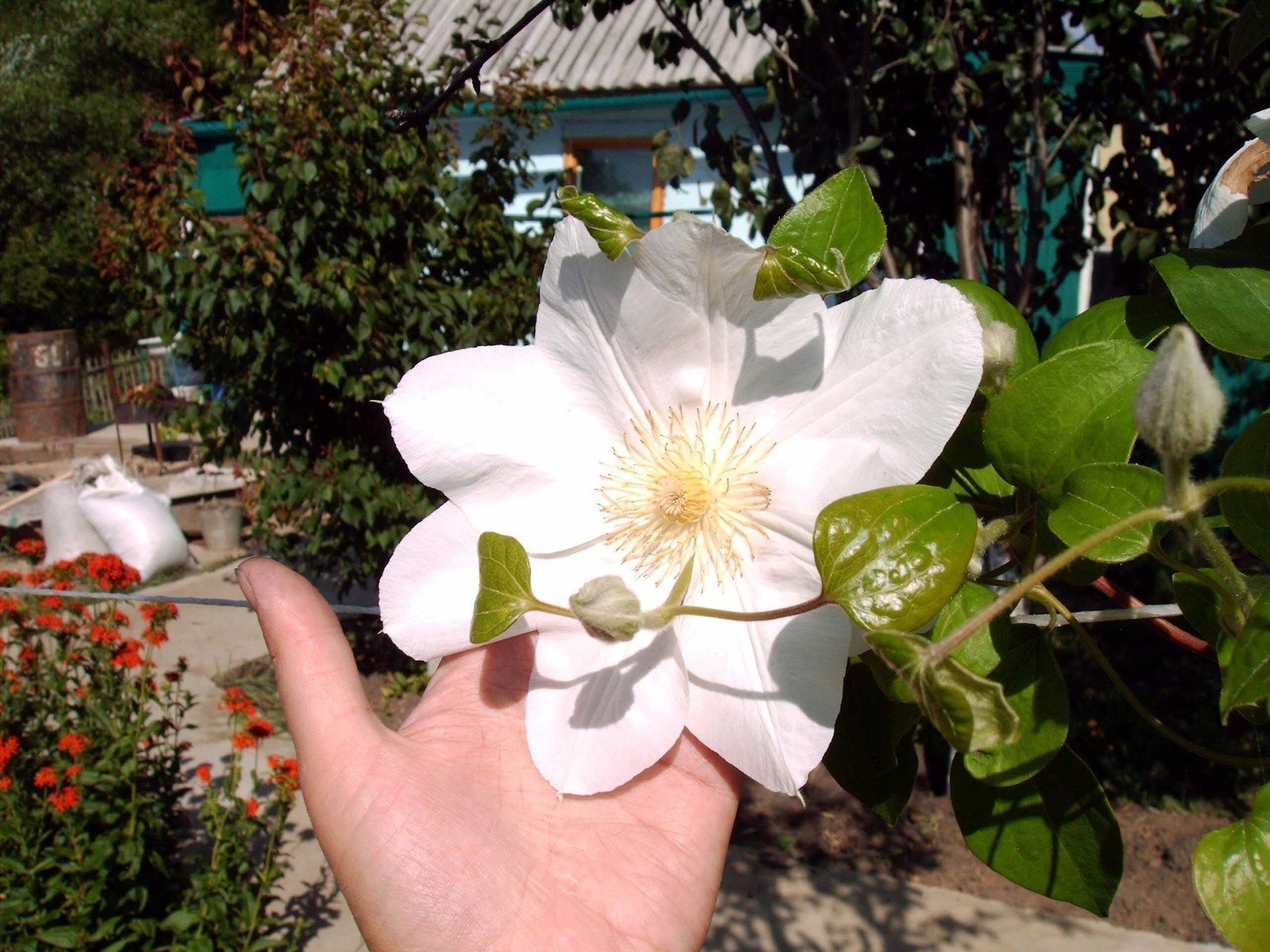
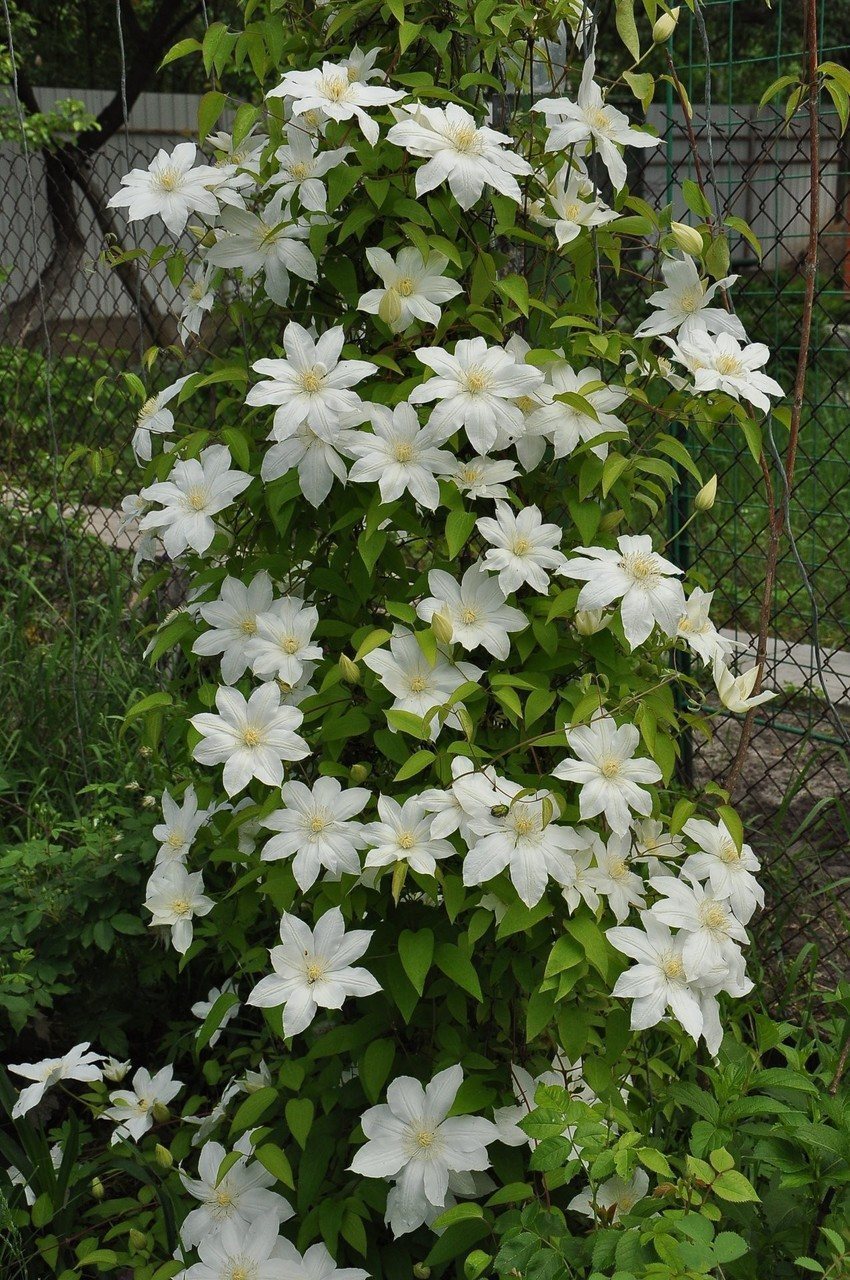



Maria Sklodowska-Curie
The vines develop up to two meters. It blooms in June-July, completely covering the plant. Double and semi-double sepals are formed on old and new shoots.
The size of the buds is 13-15 cm in diameter. The flowers are spherical, white. When it gets cold, a greenish tint appears. One flower has 35-40 petals with wavy twisted ends, arranged in several rows.
The foliage is rich green, triple. The glossy plate is ellipsoidal.
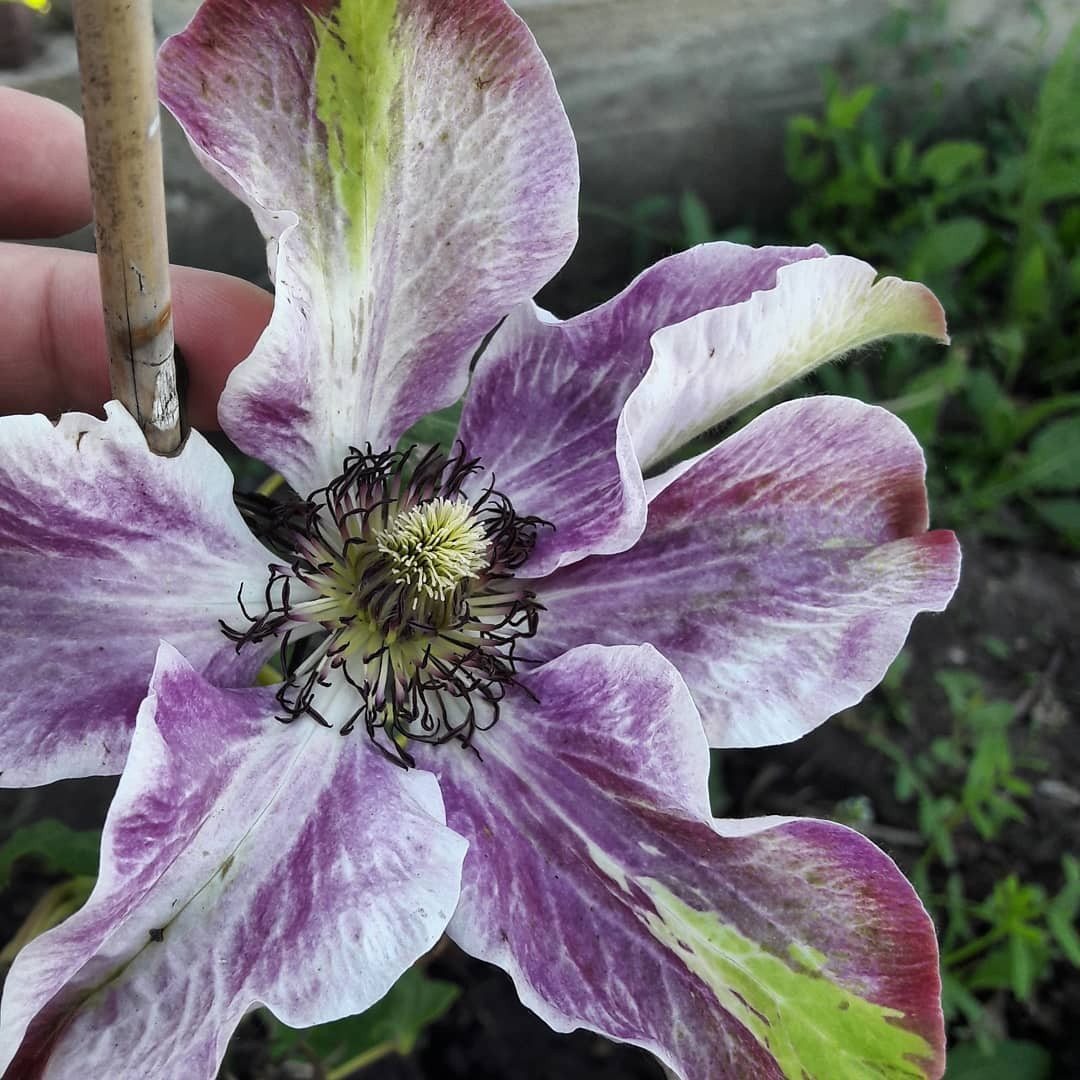

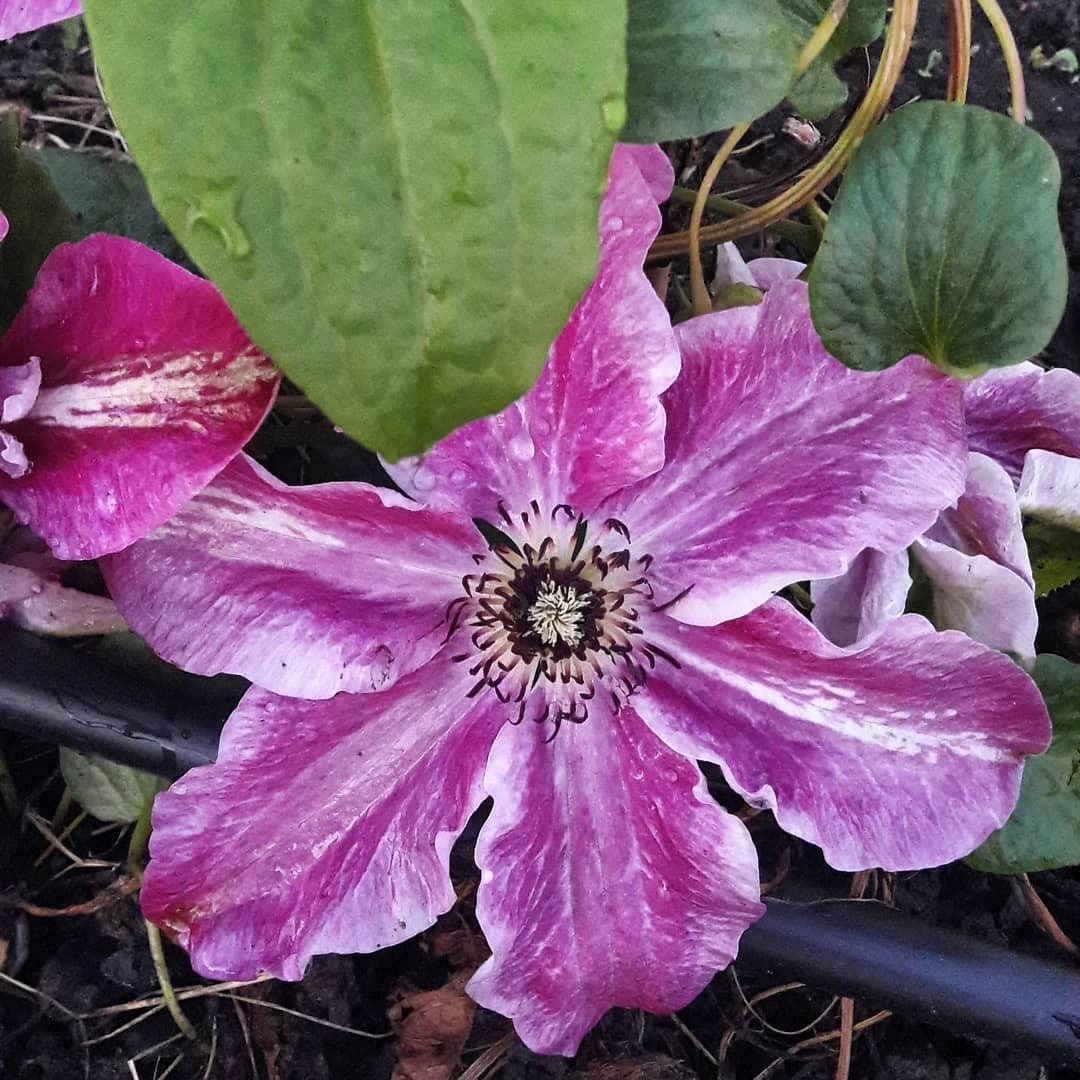



It blooms on the sunny side, in the shade. It tolerates frosts well under light cover.Resistant to frost down to -30˚C. Average resistance to diseases.
Ashwa
The large-flowered shrub is found in the Patence and Jacquemin group. Blooms from the first year. In the middle zone, buds develop in early July and continue until September. In the southern regions they bloom from May and last until the first frost.
Petals are rounded. Among this species there are shades of white, crimson, and blue.
Depending on care, the size of the bud is from 8 to 12 cm. The height of an adult plant does not exceed 2 m. It is resistant to cold and is not susceptible to pests and diseases.
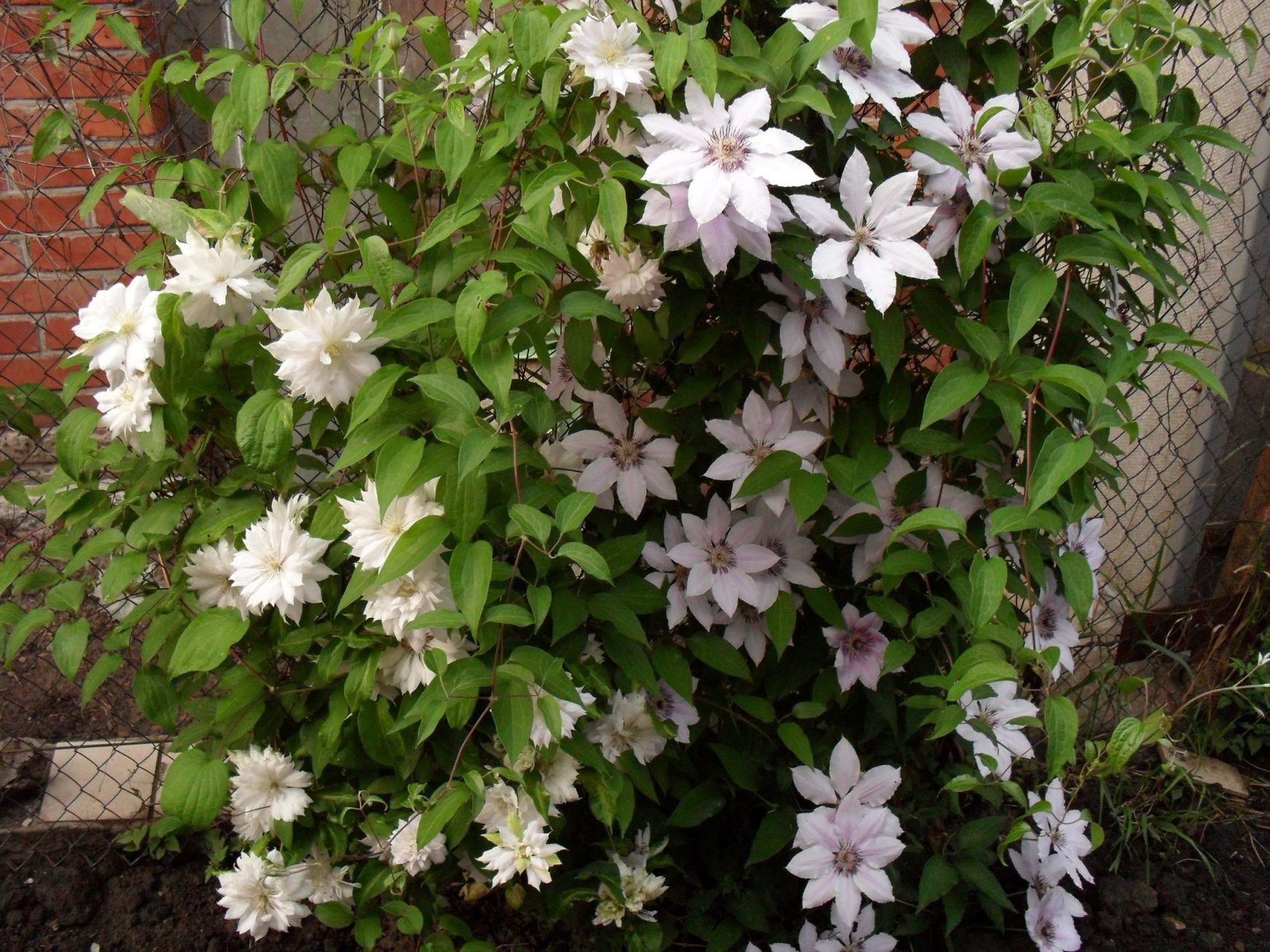

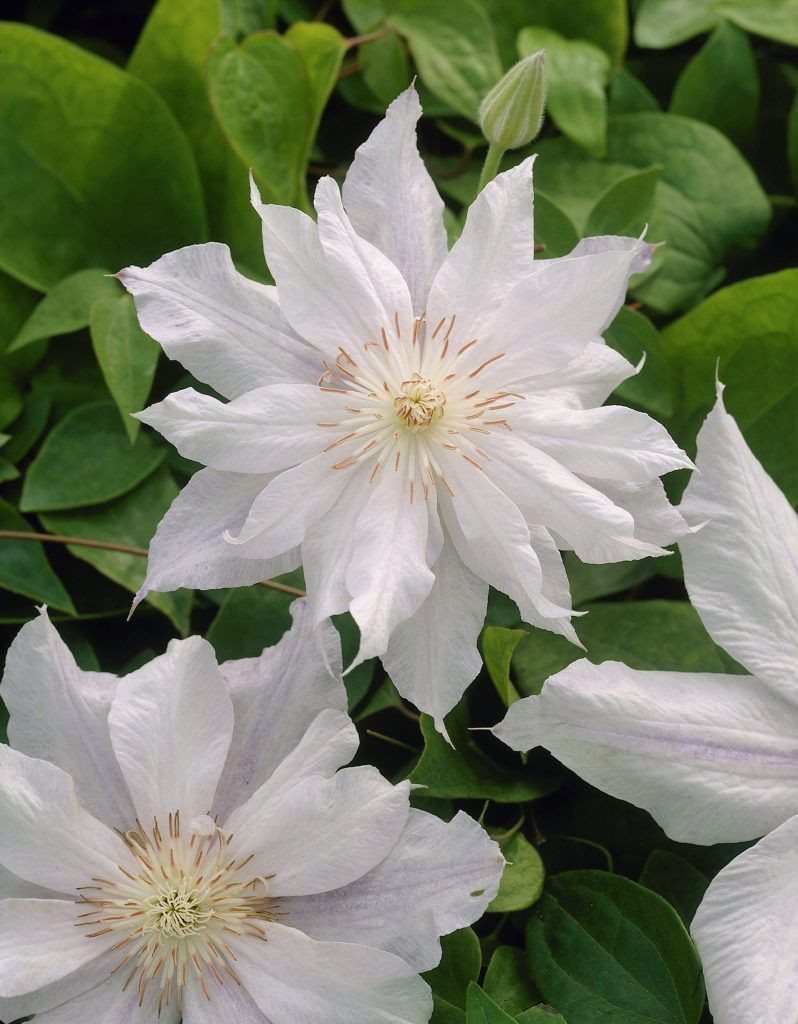



Dr. Ruppel
Large-flowered plant of the Patens group. A small climbing shrub grows up to 3-4 m. In central Russia, flowering begins from May to June and in August-September. In the first wave, semi-double leaves with a diameter of up to 18 cm bloom.
The flowers are pink with a blue tint, with a crimson stripe in the center. Oval, pointed petals (6-8 sepals) are arranged in a star-shaped shape. The second bloom produces simple crimson-colored flowers edged with white.
The leaves are imparipinnate, opposite.
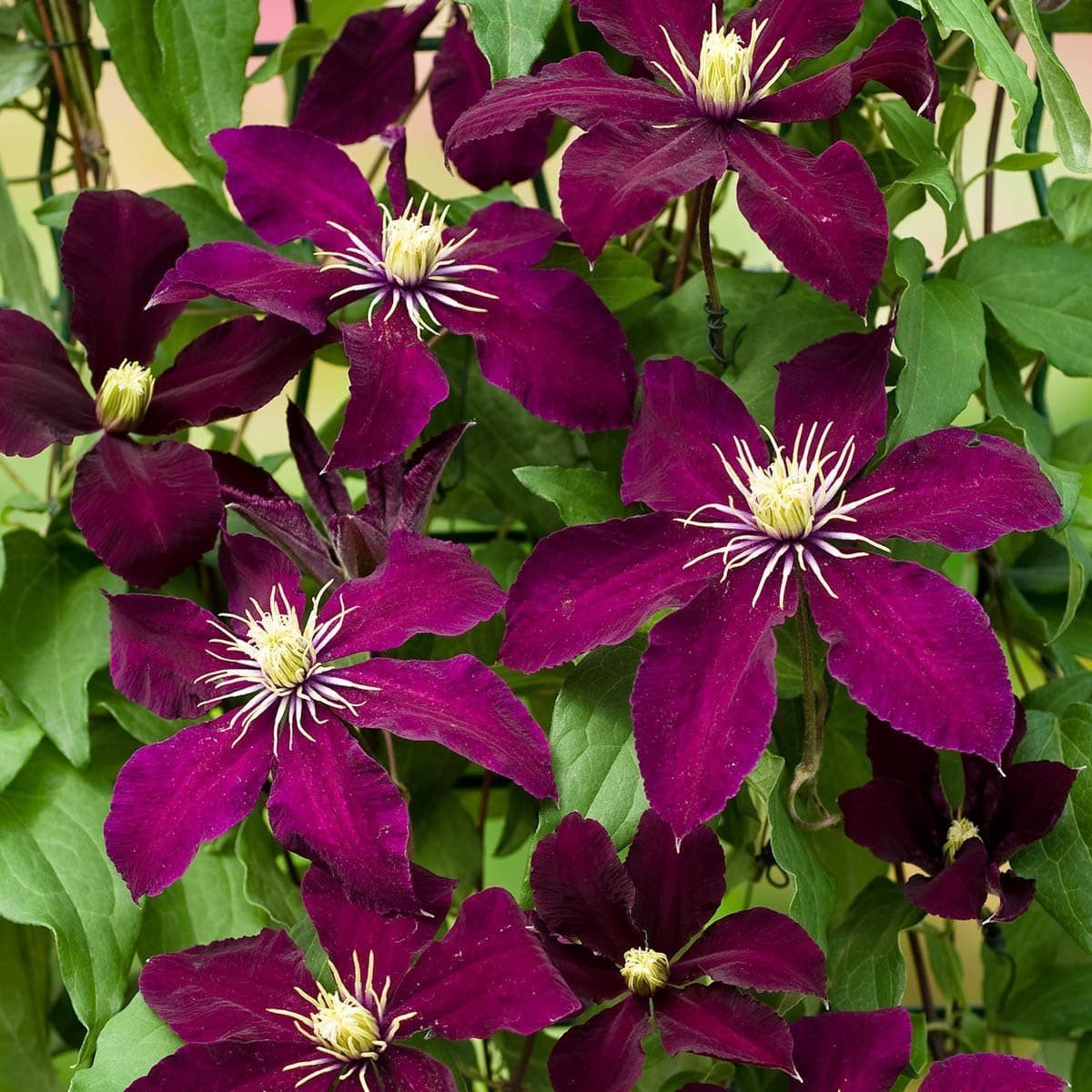
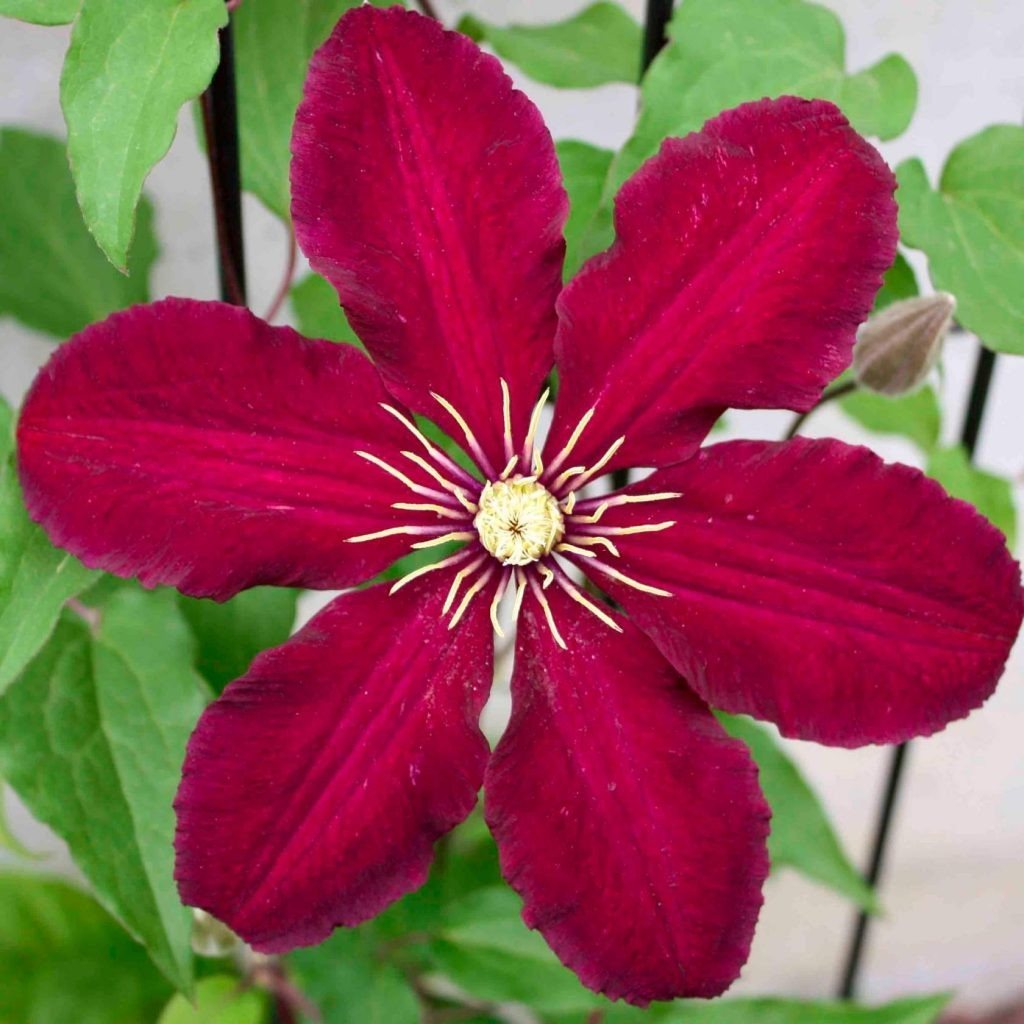
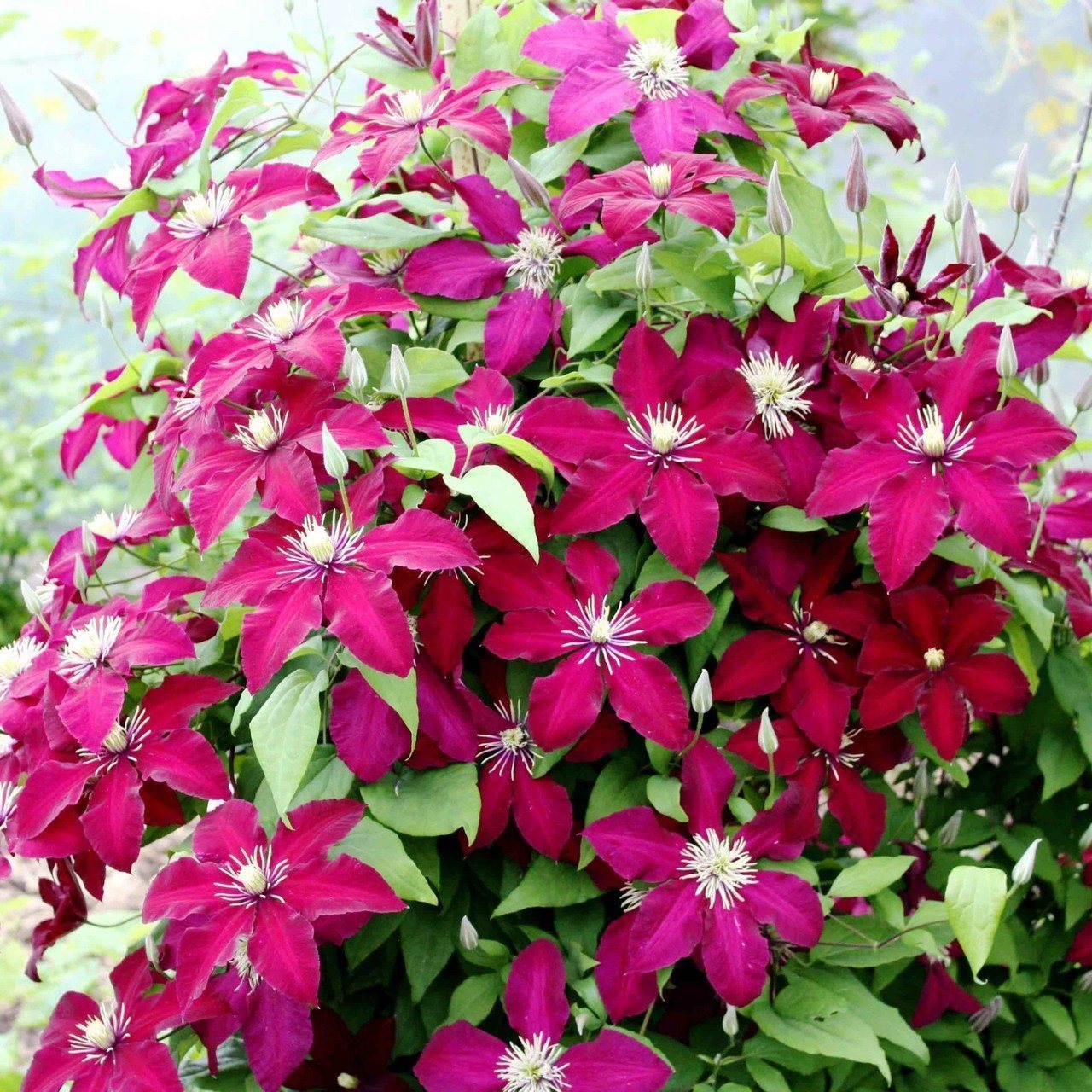



Lozinka is resistant to viruses and diseases. Tolerates frosty winters well.
Maria Skłodowska-Curie
Lianas grow up to two meters. It blooms in June-July, completely covering the plant. Double and semi-double sepals are formed on old and new shoots.
The size of the buds is 13-15 cm in diameter. Flowers are spherical, white.When it gets colder, a greenish tint appears. One flower has 35-40 petals with wavy twisted ends, arranged in several rows.
The foliage is rich green, triple. Glossy ellipsoidal plate.
Blooms on the sunny side, under the shade. Tolerates frost well under light cover. In the first year after planting, it needs reinforced shelter.
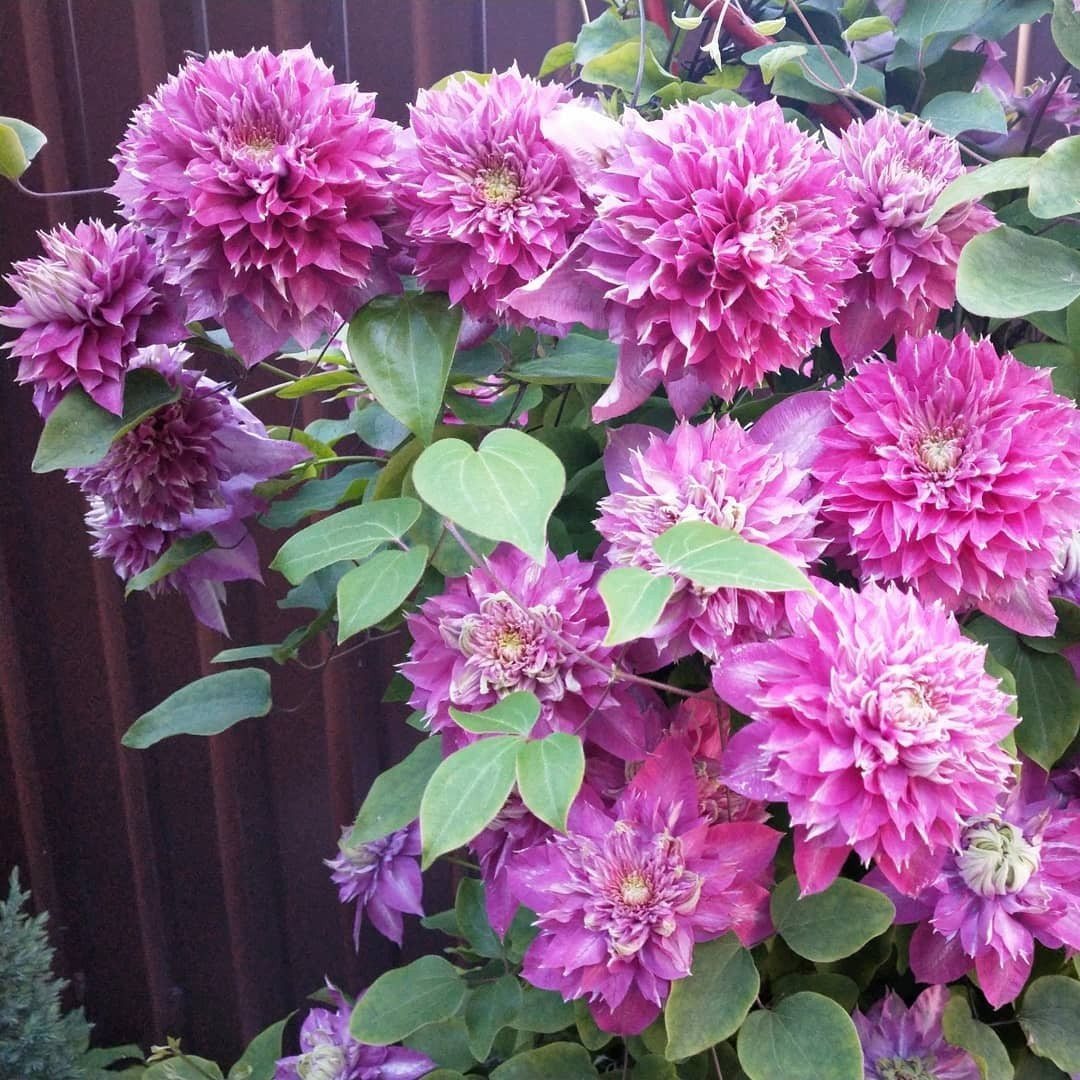
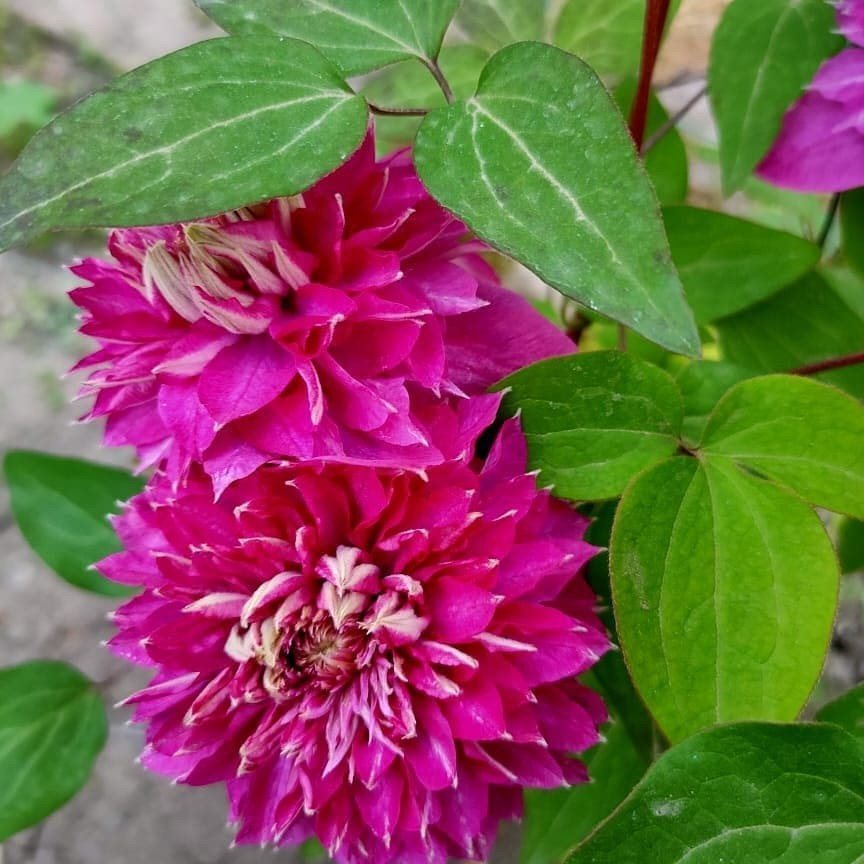




Maria Kachinskaya
An early flowering variety from the Florida group grows from 2.5 m. The flowers are white, double. They develop on old shoots throughout the bush. It blooms once per season - in May.
The leaves are dark green, with a red stripe around the blade.
Light-loving clematis tolerates severe frosts down to -30°C. Resistant to diseases.
Madame Julia Correvont
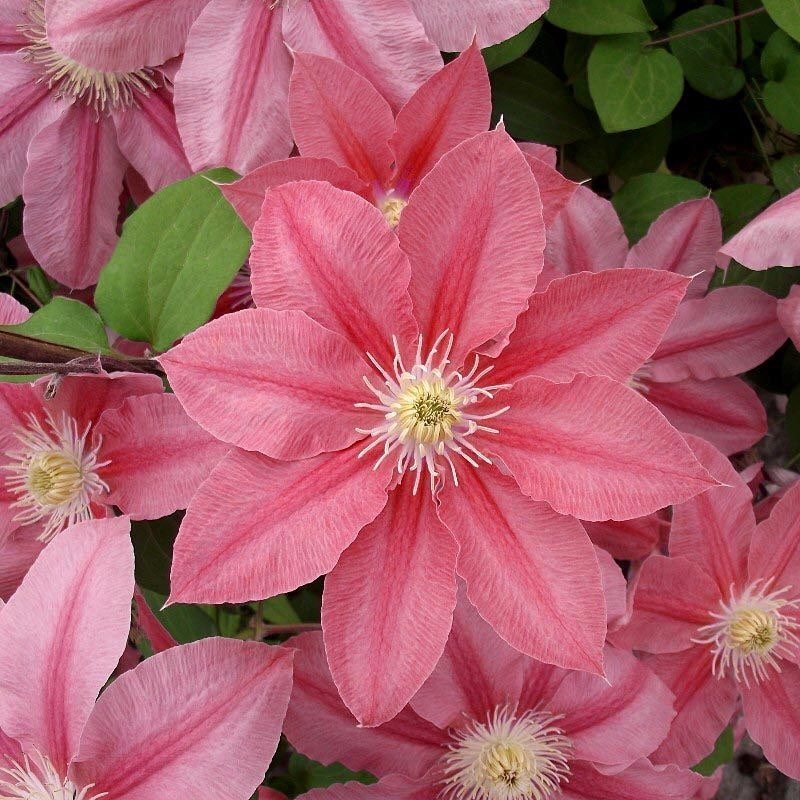
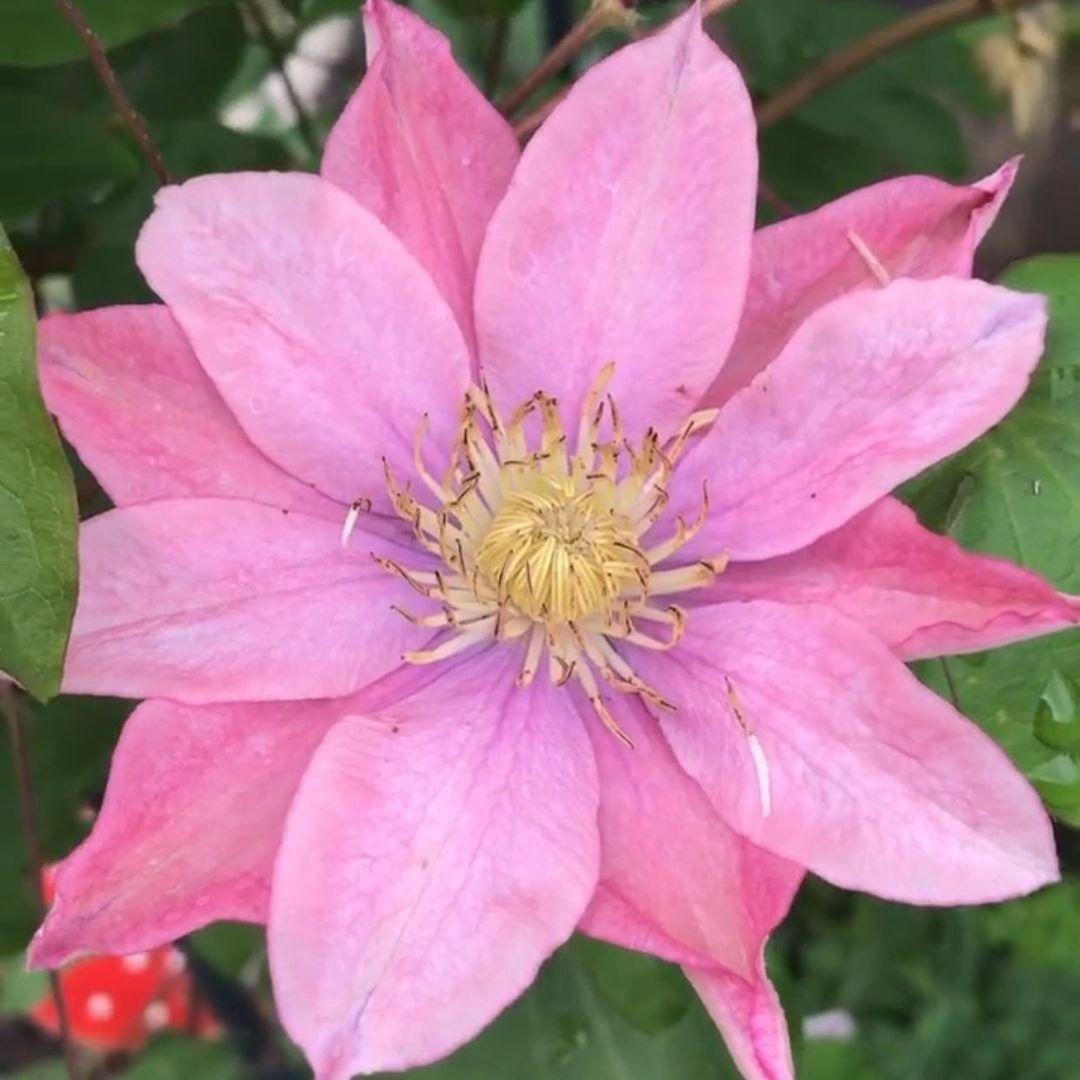
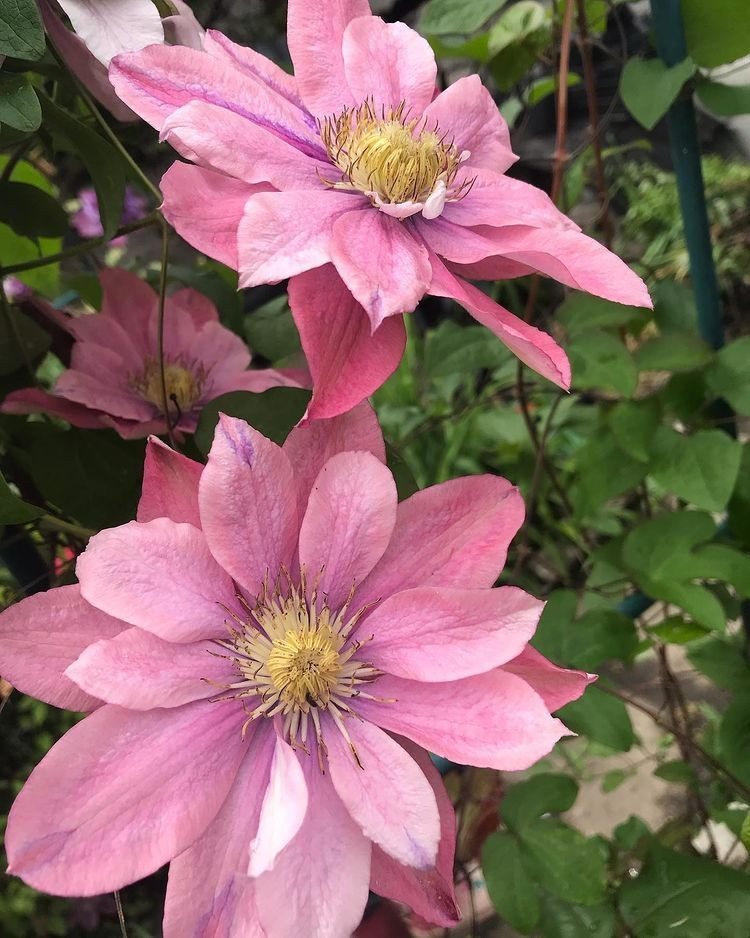



Clematis Viticella, small-flowered species.
Liana-like stems grow up to 4 m in height. The large-flowered shrub blooms from July to September on young shoots.
The size of the sepals varies from 3 to 12 cm. The petals are burgundy-red with a bright longitudinal stripe in the center and noticeable veins. The stamens are yellow.
Bell-shaped flowers curl downward. They have 4-6 diamond-shaped petals.

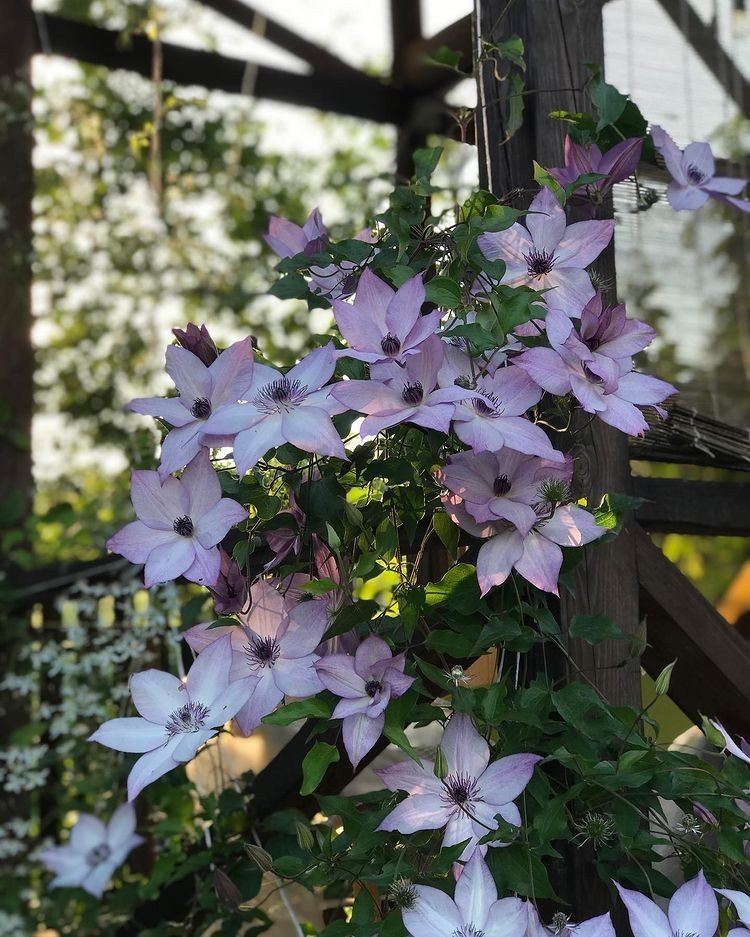
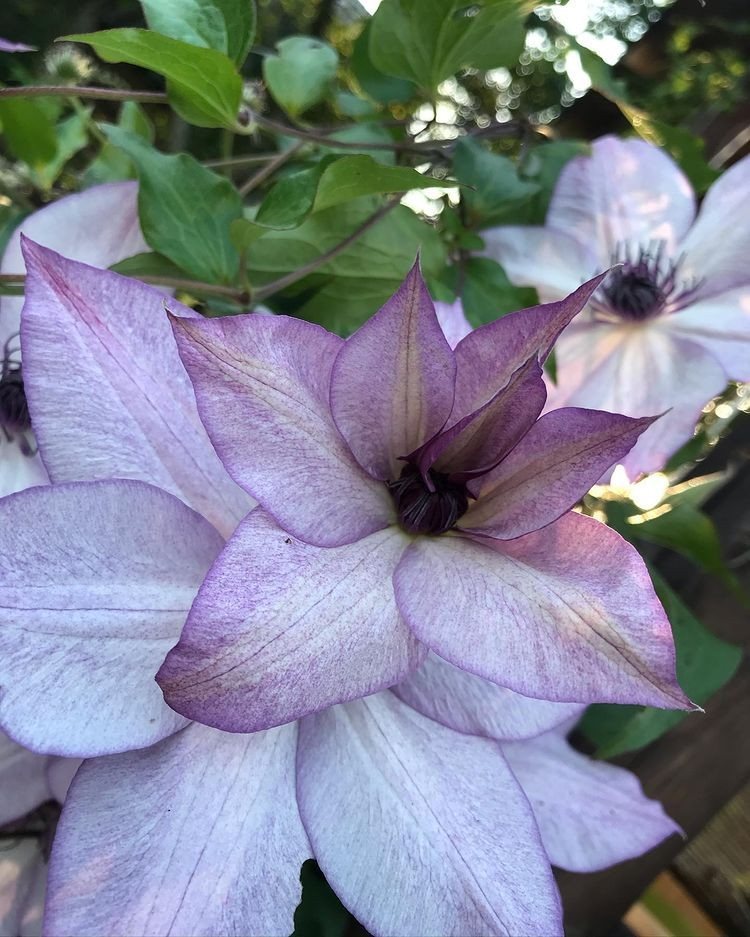



The fast-growing plant loves partial shade and fades in the sun. Tolerates frost and is slightly susceptible to disease.
Madame le Cultre
A variety from the Lanuginosa group blooms twice per season. The stems stretch along the support to 2-3 m in height.
The large-flowered shrub blooms twice per season. In the first wave, from June to July, 15-20 cm buds bloom profusely. During the second flowering, the sepals bloom less frequently, but do not lose size.
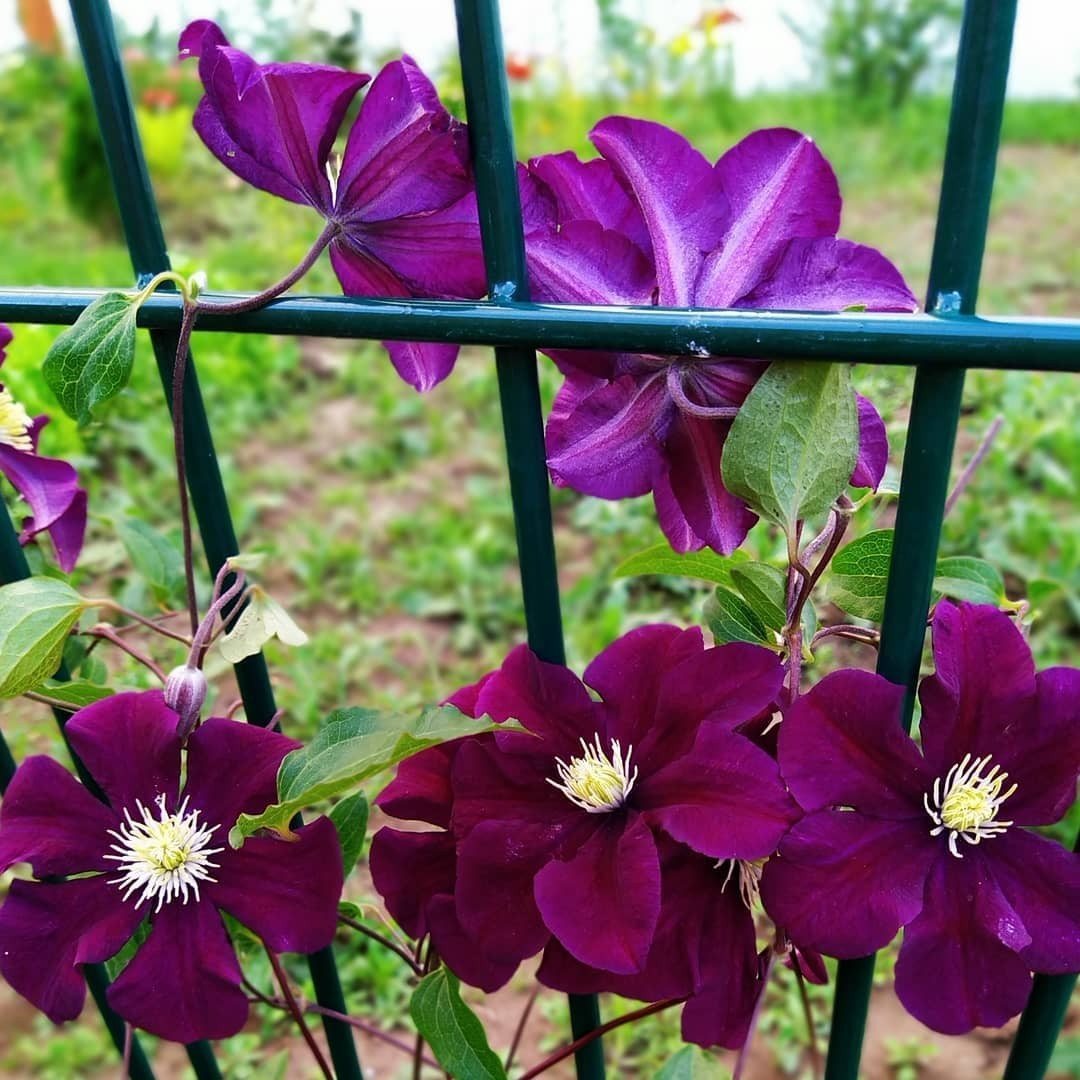
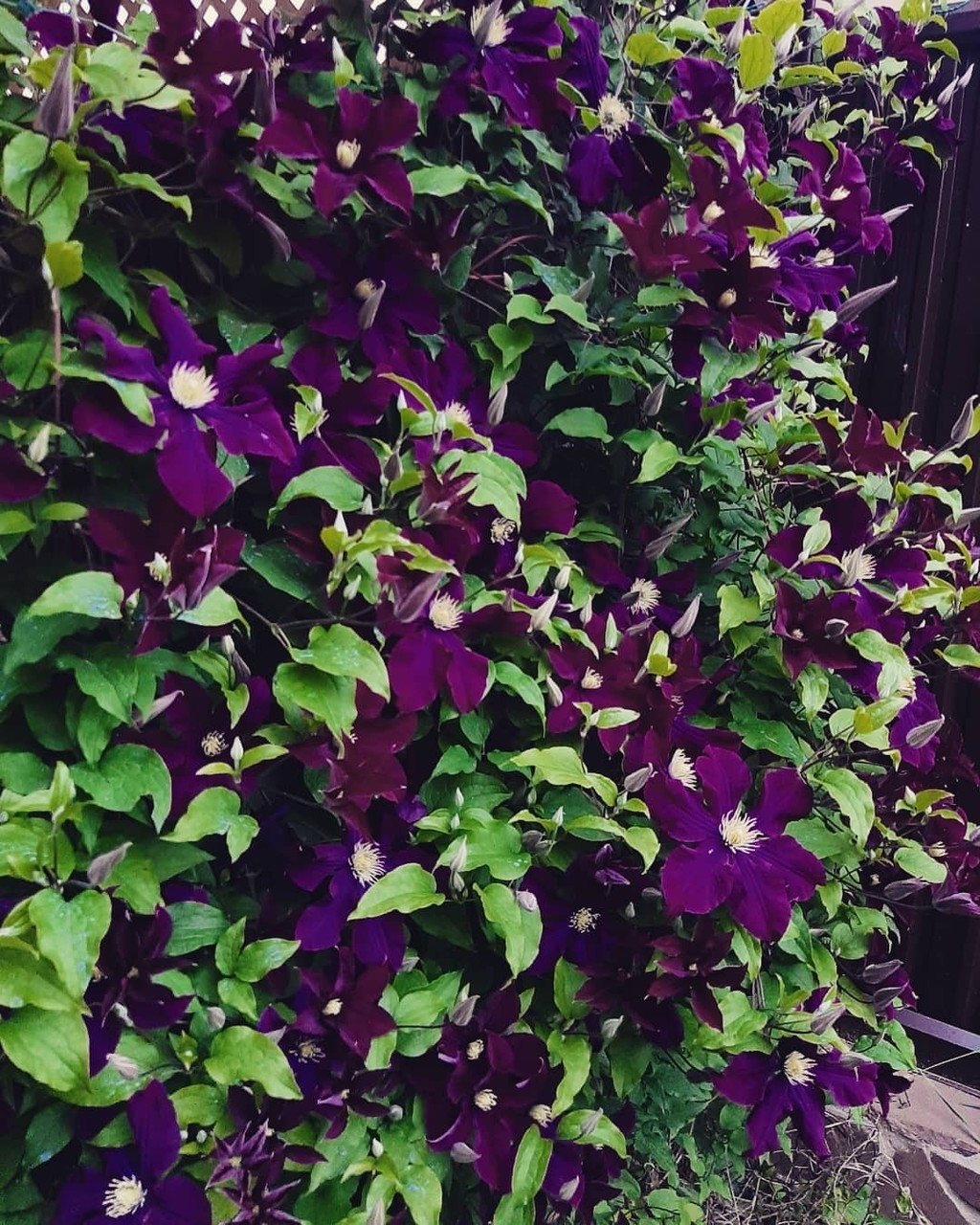
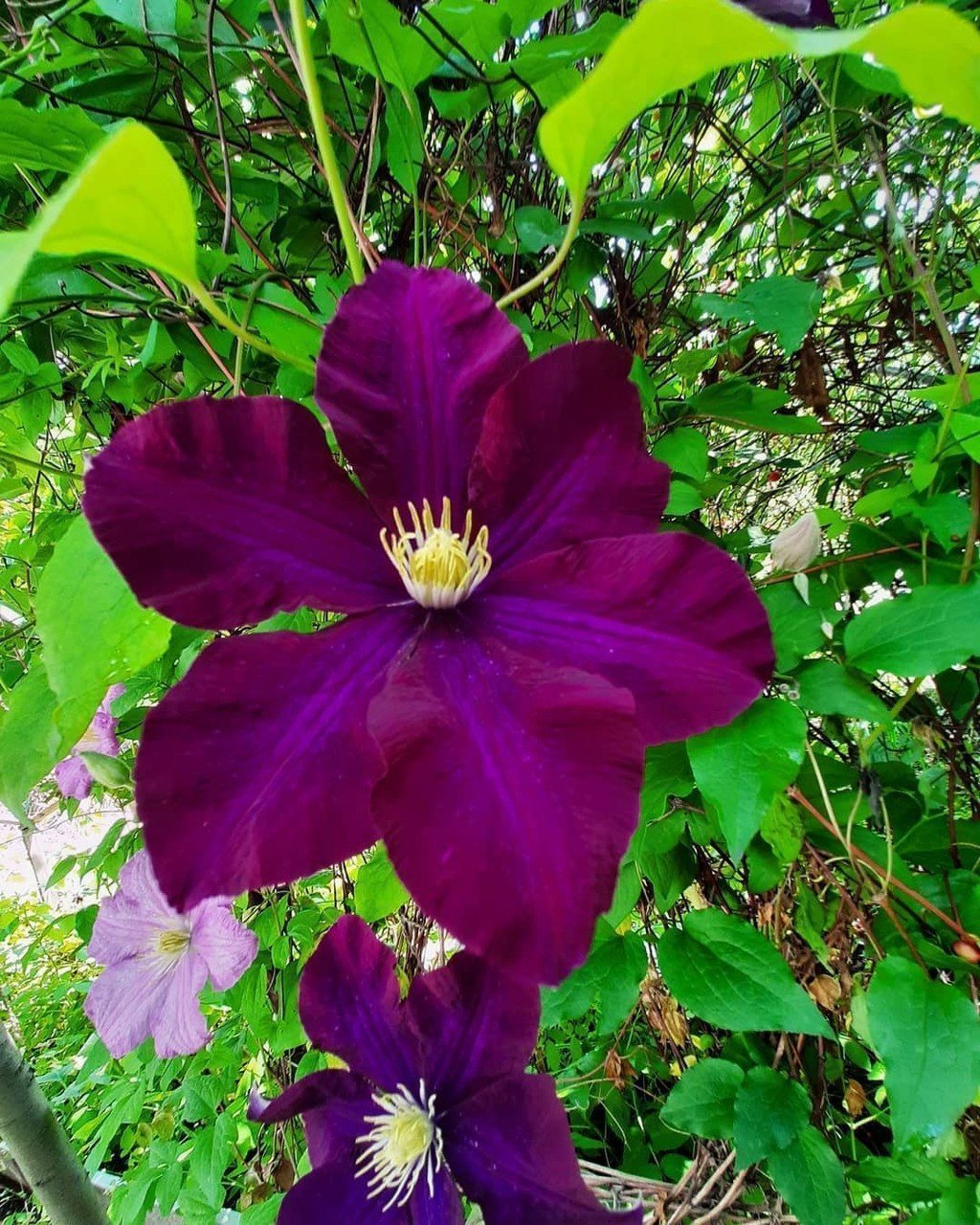



The bud has 8 snow-white petals. The leaves are oblong-lanceolate, rich green.
The shrub actively develops on the south side in partial shade. Tolerates frosts down to -34°C.
May Darling
The height of the liana-like shrub of the Lanuginosa group is 1.5-2 m. It blooms in two waves. Terry spherical buds open in June-July on old shoots. In August, the flowers are semi-double or simple, 17-20 cm in diameter. They develop on young shoots.
The petals are oval in shape. The color is purple, with a white gradient around the edges and a pale pink towards the center.
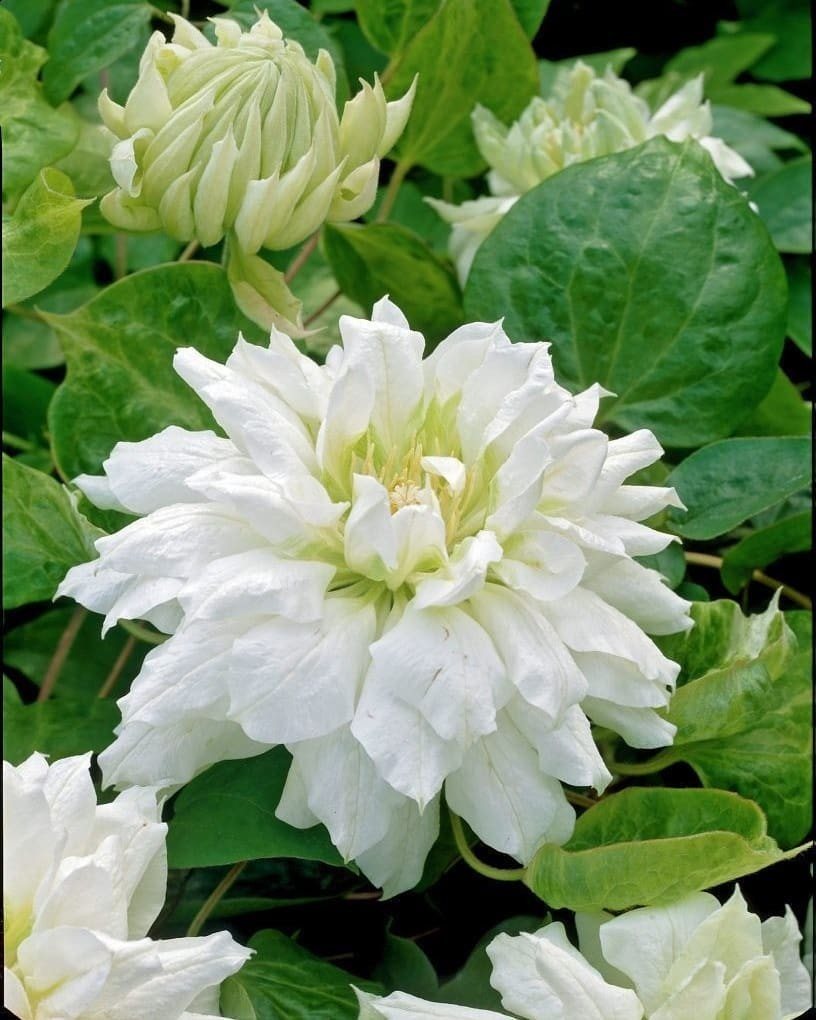
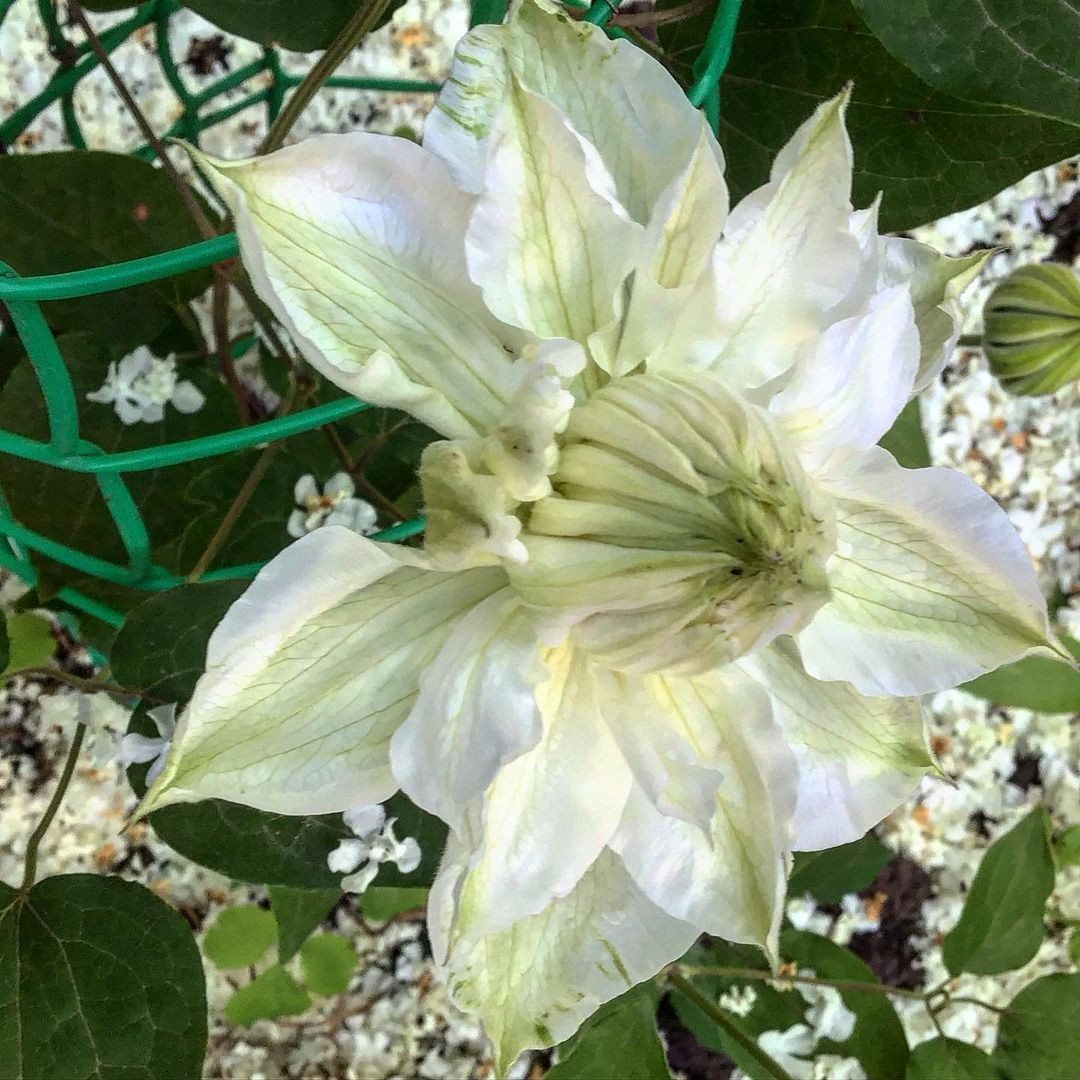
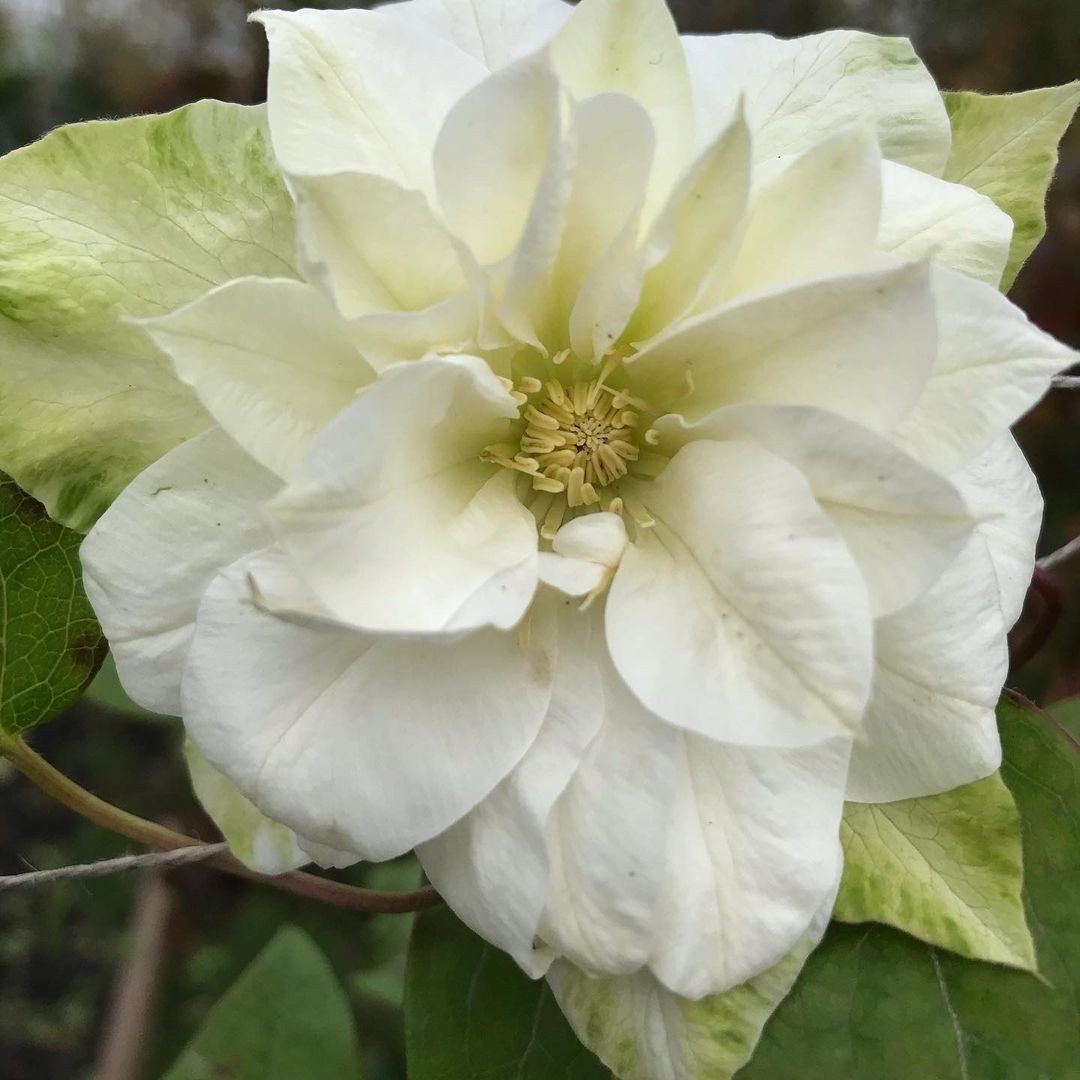



The foliage is regular and wide. The plates are ovoid with pointed ends.
The May Darling variety is light-loving and frost-resistant. In the middle zone it requires shelter for the winter.
Jacquemin Alba
An abundantly flowering large-flowered variety reaches up to 4 m by the end of the season. It blooms on new shoots at the end of May and lasts until September inclusive (in warm climates).
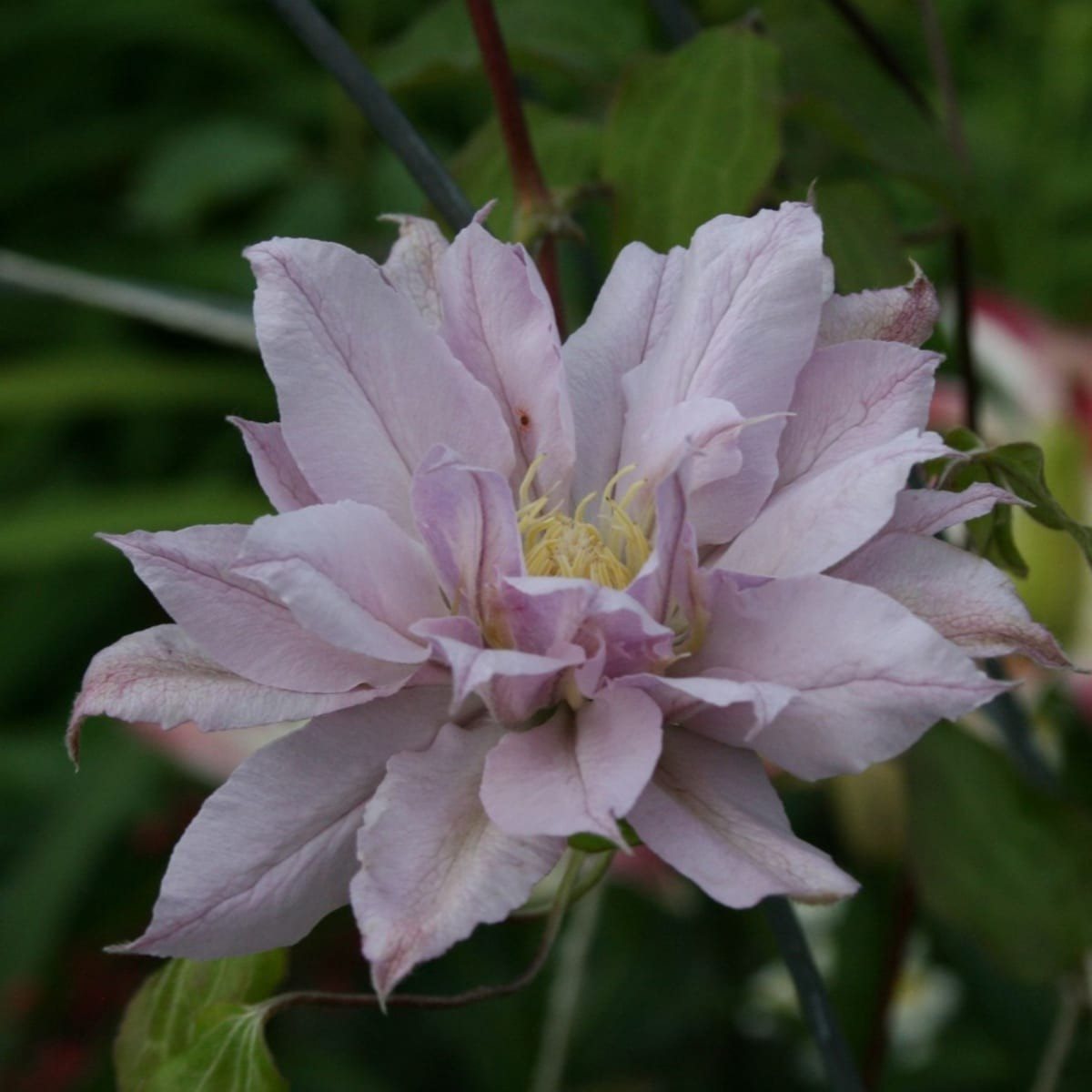
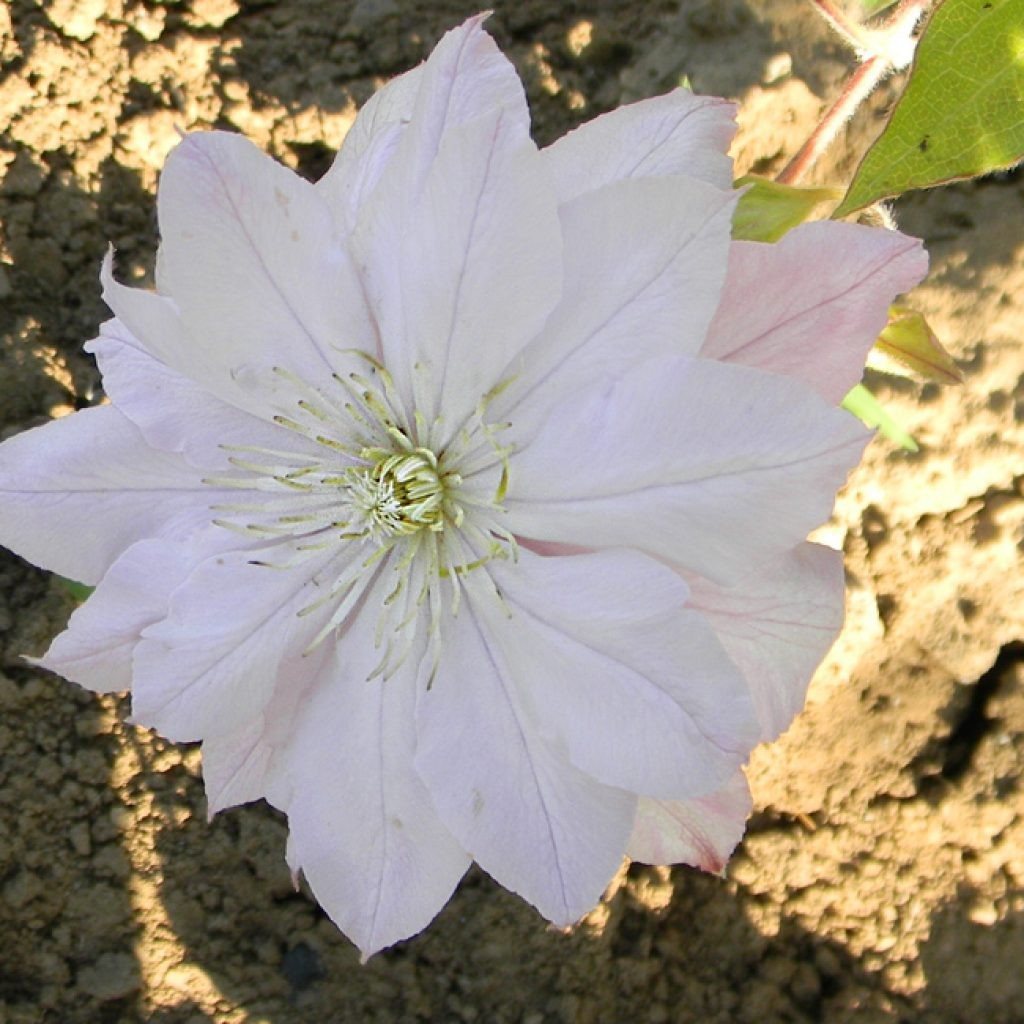
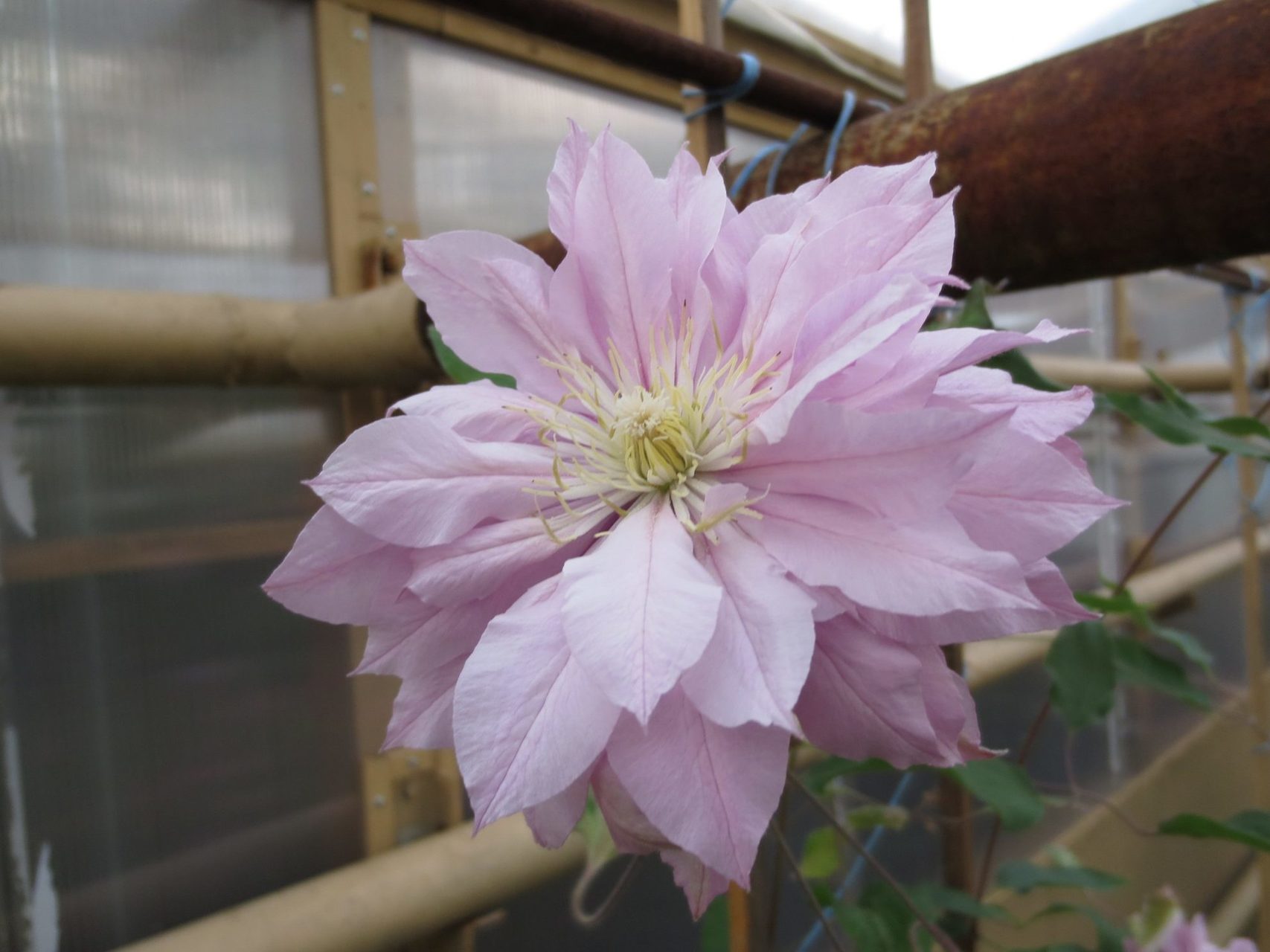



Simple flowers 8-20 cm, shades of blue or purple. The buds look up, slightly tilted. Each sepal has up to 7 ellipsoidal petals with pointed ends.
The leaves are light green, opposite. Plate with deep veins.
Lozinka needs shelter for the winter. Resistance to pests and diseases is average.
Niobe
The medium-sized shrub belongs to the Jacqueman group. The height of the shoots is up to 2.5 m. Flowers with a diameter of 9-15 cm consist of 5-6 elongated ellipsoidal petals. Flowering lasts July-September on young shoots. The petals are purple, velvety with grooved stripes.
The leaves are compound-trifolate, dark green.
The plant is frost-resistant and is rarely affected by disease.
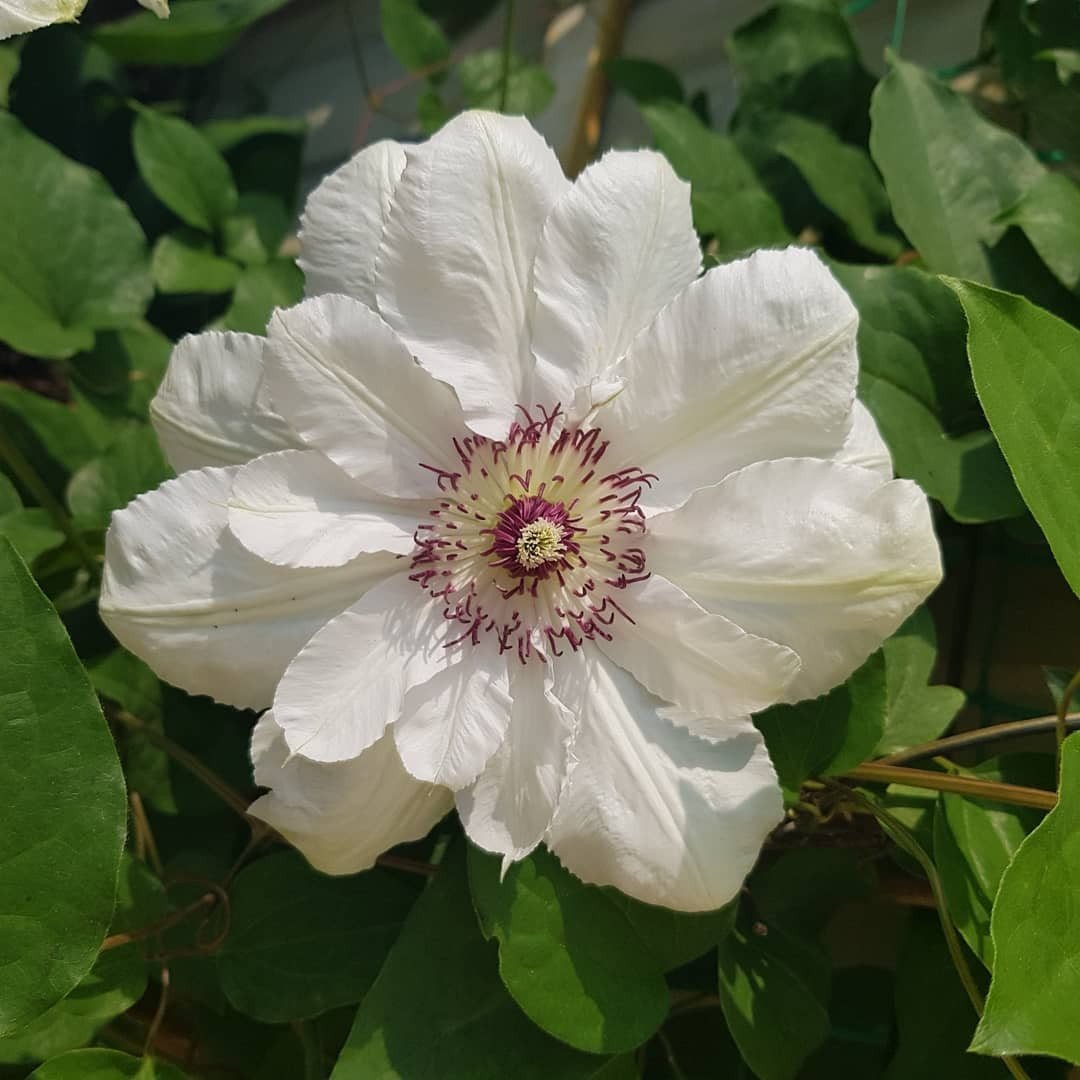
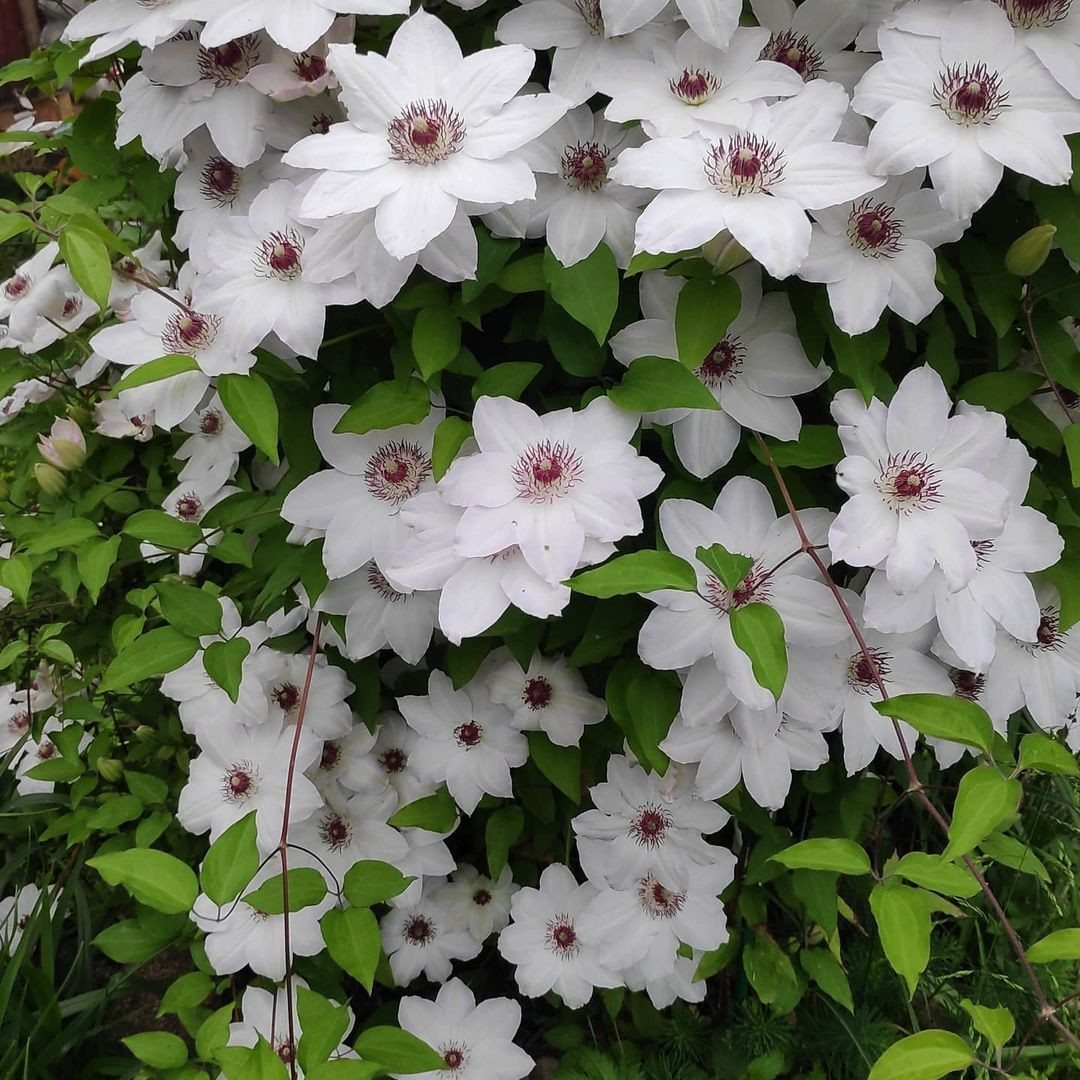
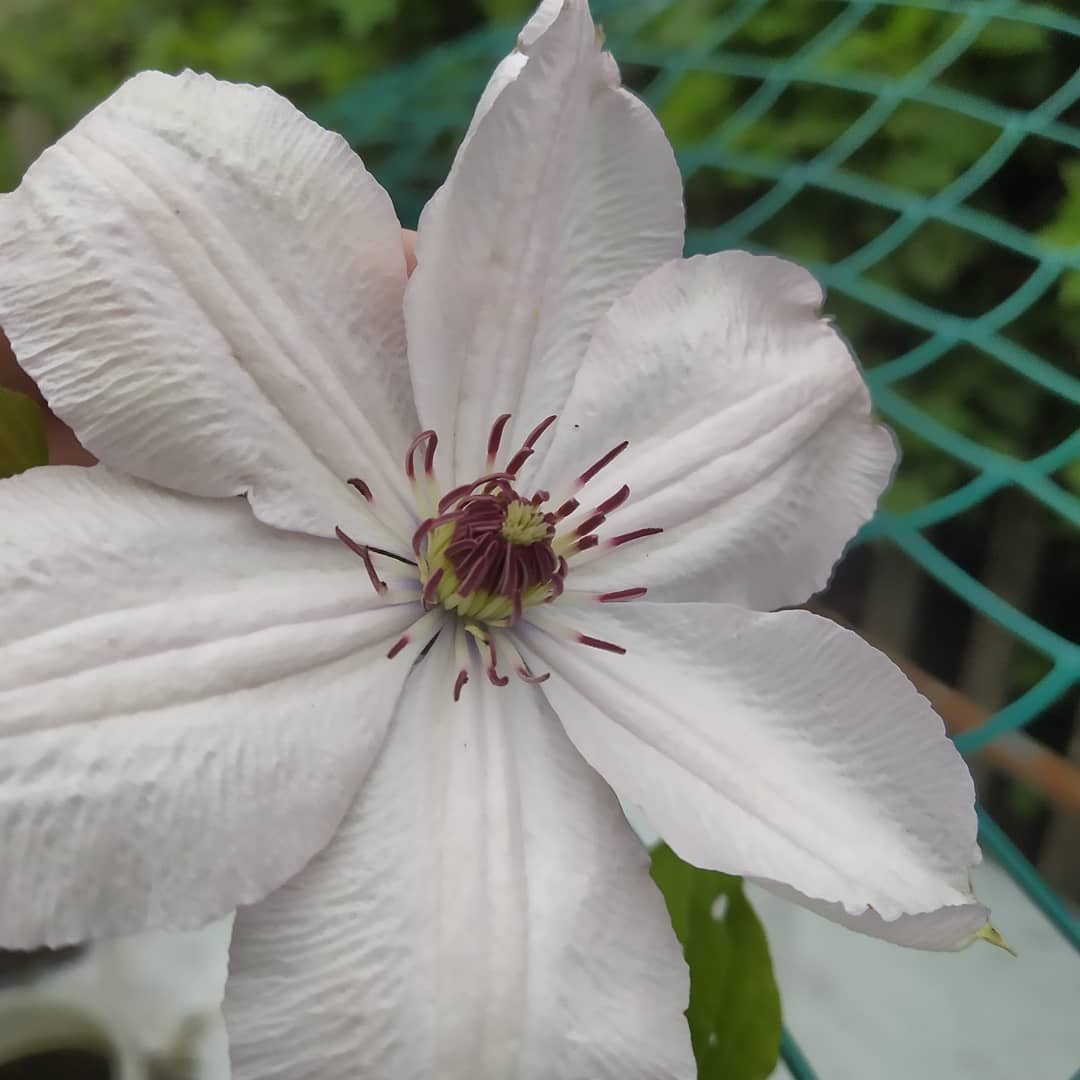



Kaiser
The large-flowered variety is not classified as a morphological group. The climbing vine grows up to 2 m. It develops from old and young shoots in May-June and July-September, respectively.
The bush grows buds of different colors and sizes (9-14 cm). There are sepals in red, pink, lilac or blue tones. When it gets colder, they take on a green tint.
The petals are arranged on top of each other in several rows. Closer to the center the shape is needle-shaped, the outer rows are oblong-rounded. Towards the end of flowering, the sepals acquire more saturated colors.
Kaiser has a weak immune system. It is susceptible to gray rot, powdery mildew and wilt.
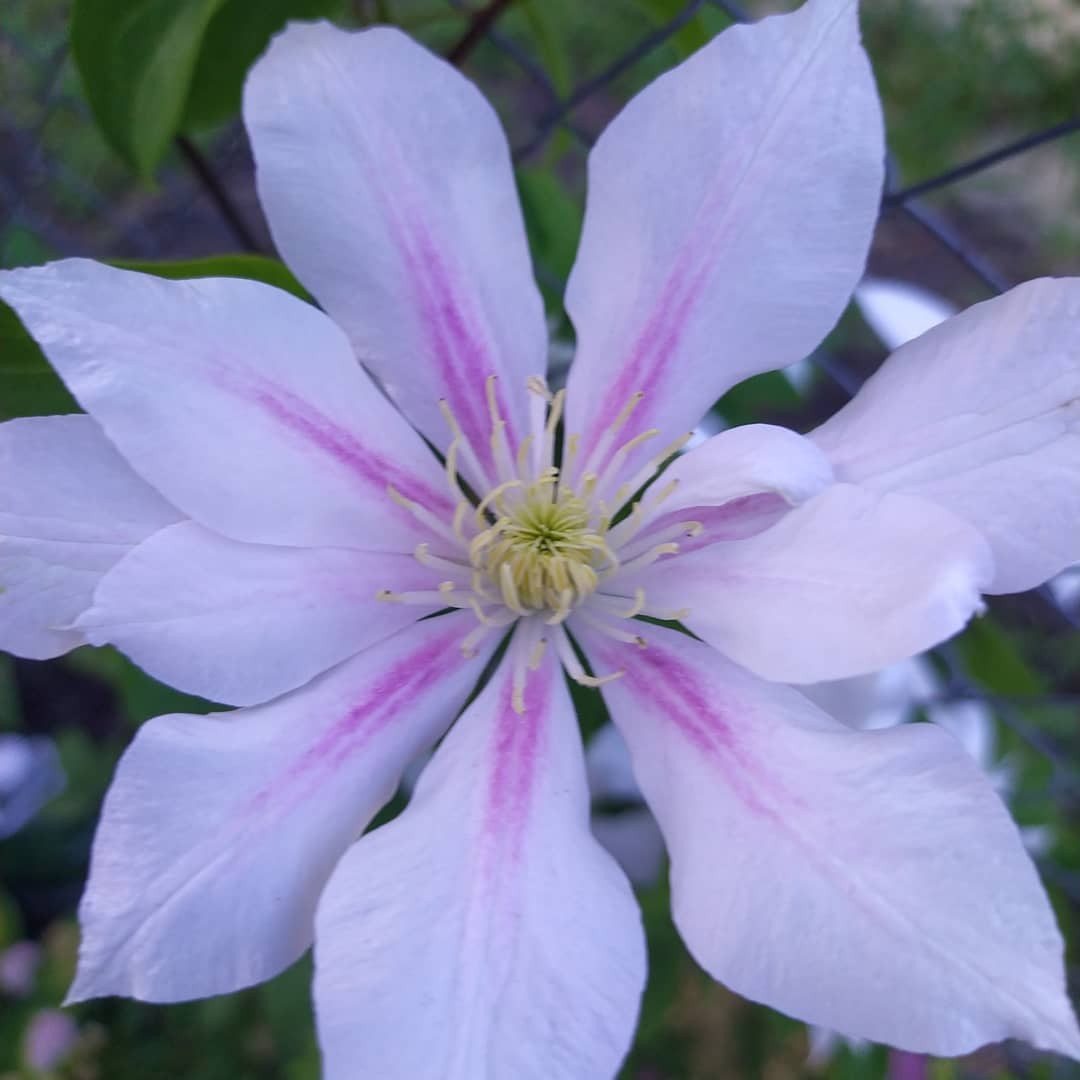
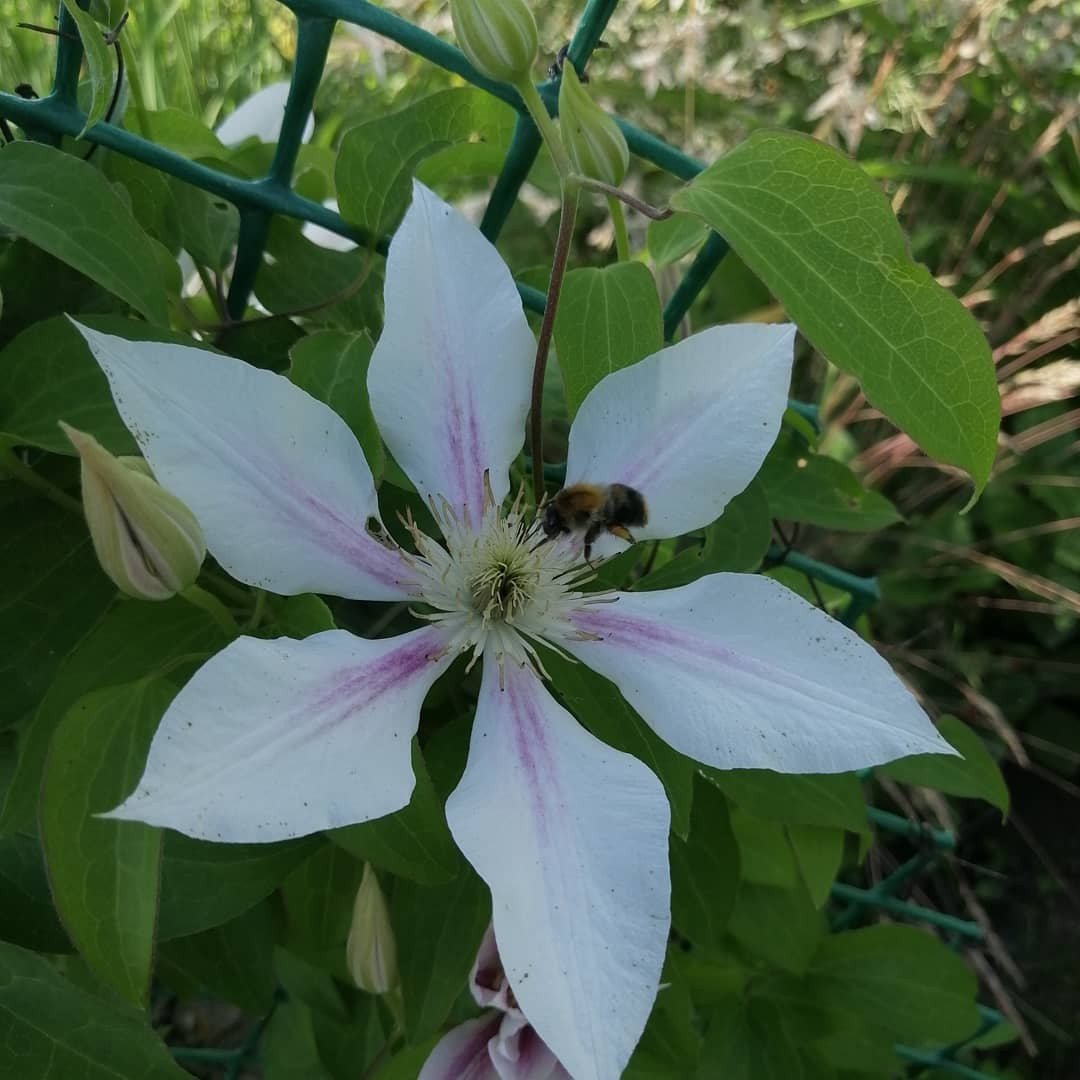
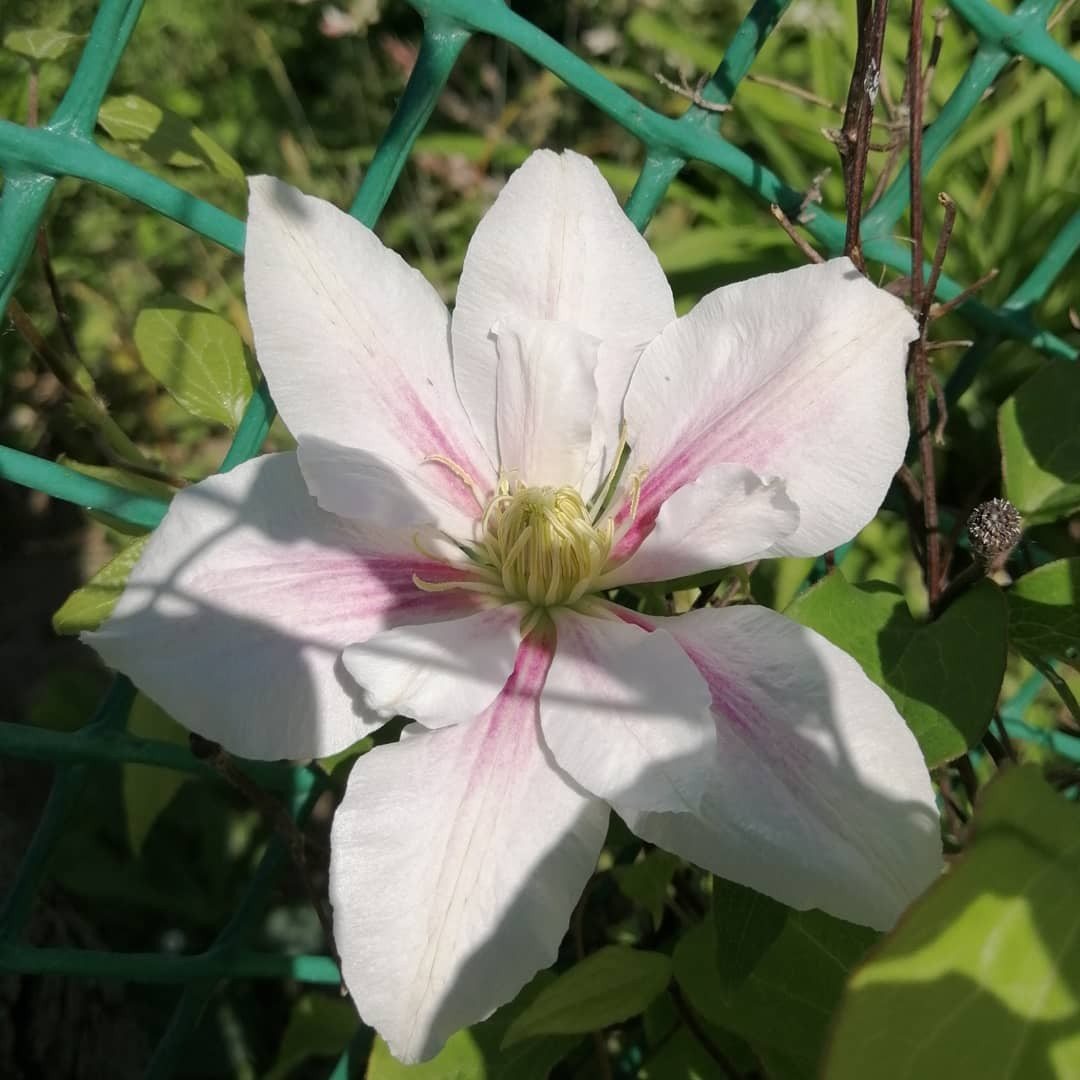



The variety is adapted to warm climates; in the middle zone it needs warm shelter.
Little Mermaid
Clematis blooms twice - May-June and August-September. The first flowering begins with last year's shoots. The flowers are double, large, and delicately salmon-colored. On one plant there are inflorescences of different sizes (8-12 cm).
Clematis cuttings: 5 useful propagation tips
On young shoots, ordinary, less often semi-double flowers open. The petals fade in the sun and become pale pink.
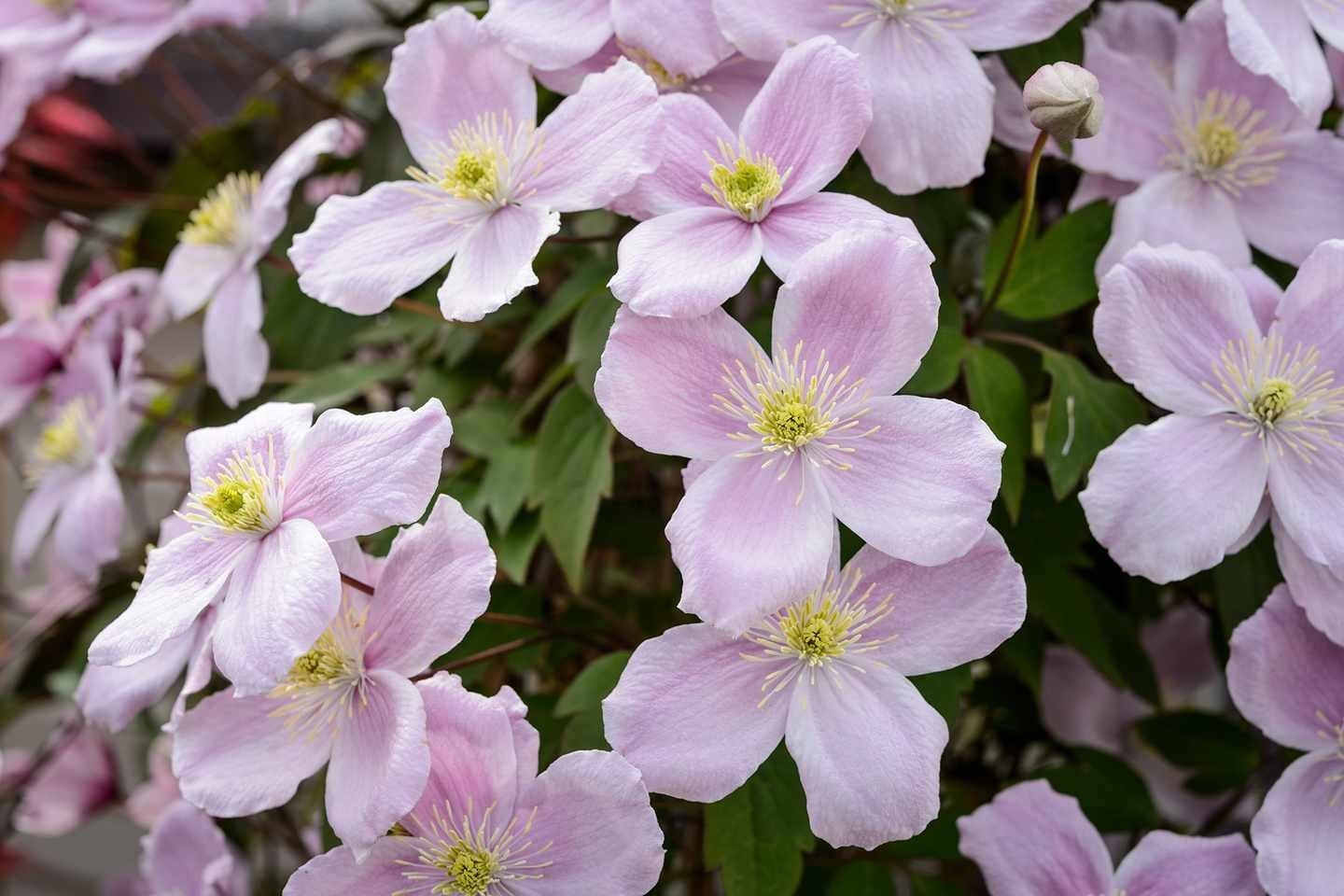
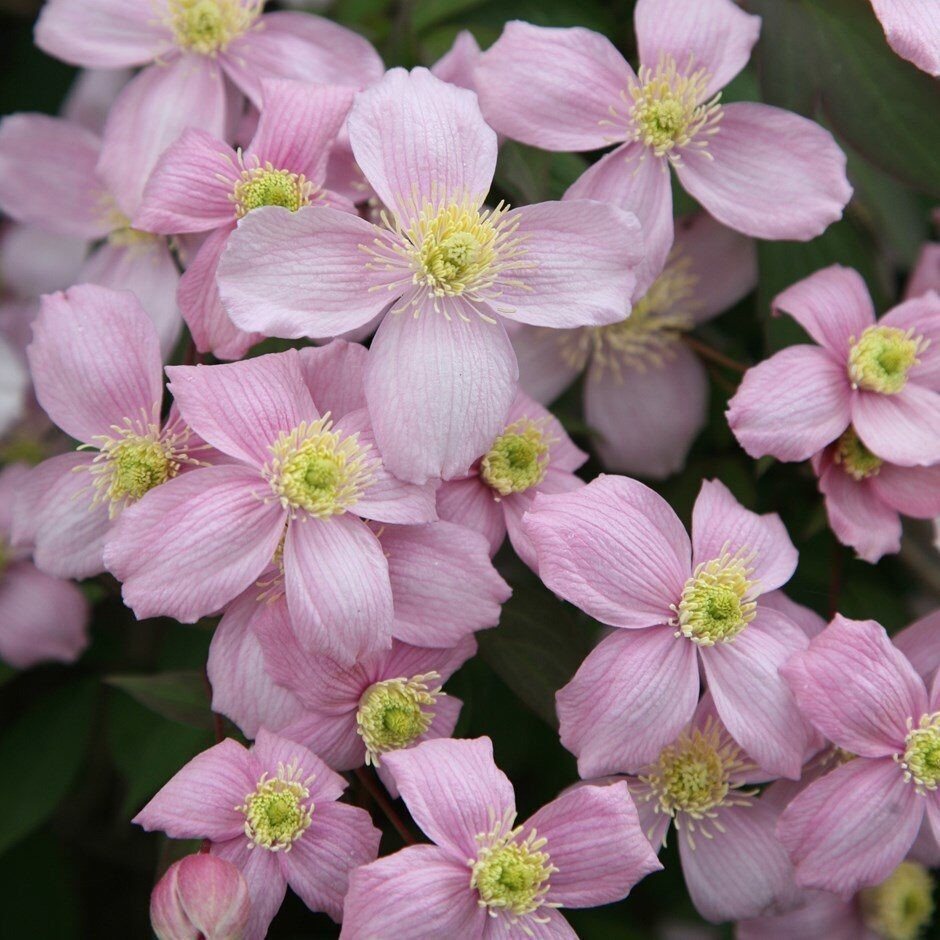
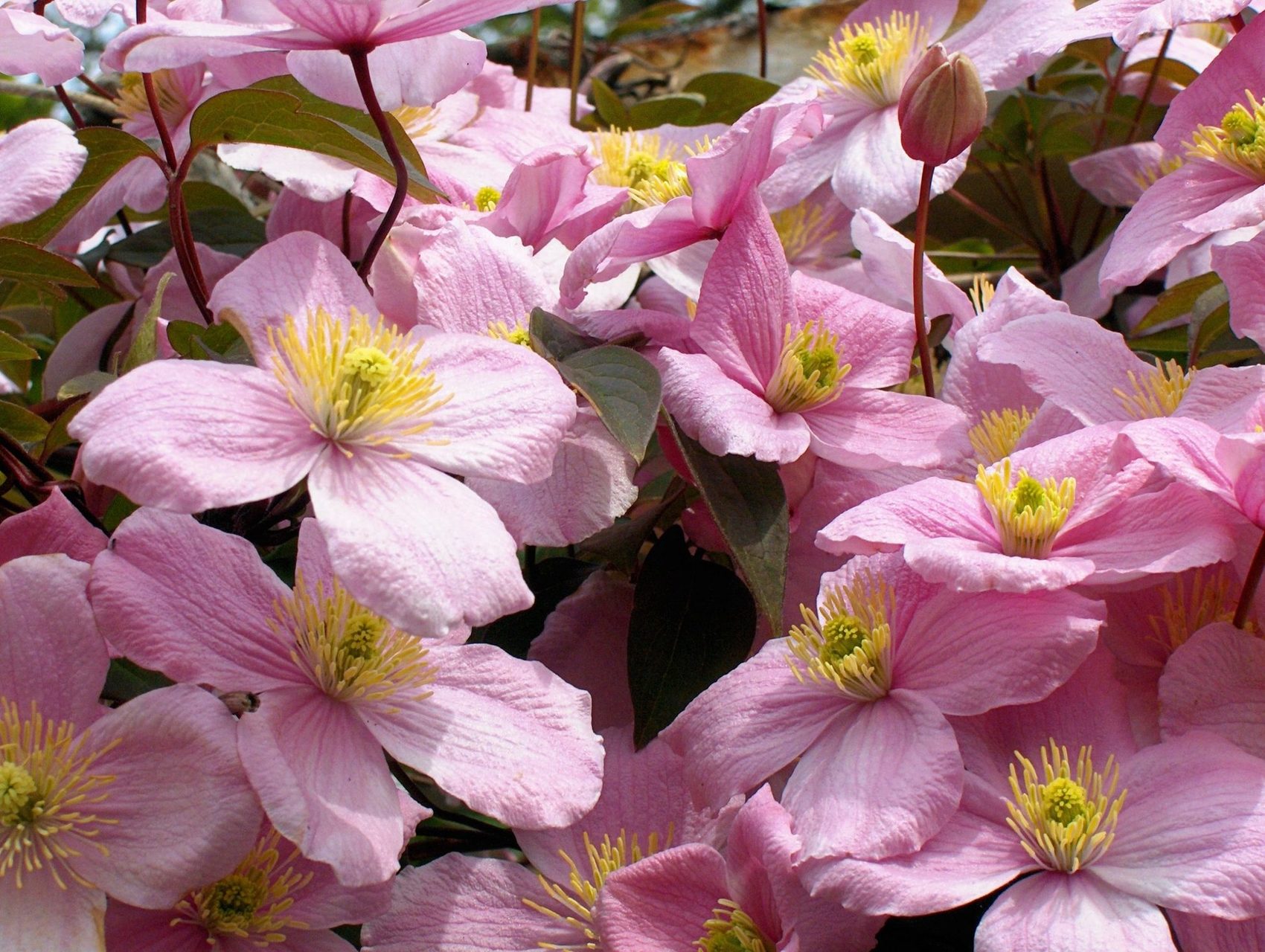



The bush will grow up to 2 m by the end of the season and is tightly covered with mulch for the winter.
Utopia
The large-flowered shrub grows up to 2 m. It blooms twice per season. The first double buds develop from overwintered shoots in June. In the third ten days of August, simple buds from young shoots open.
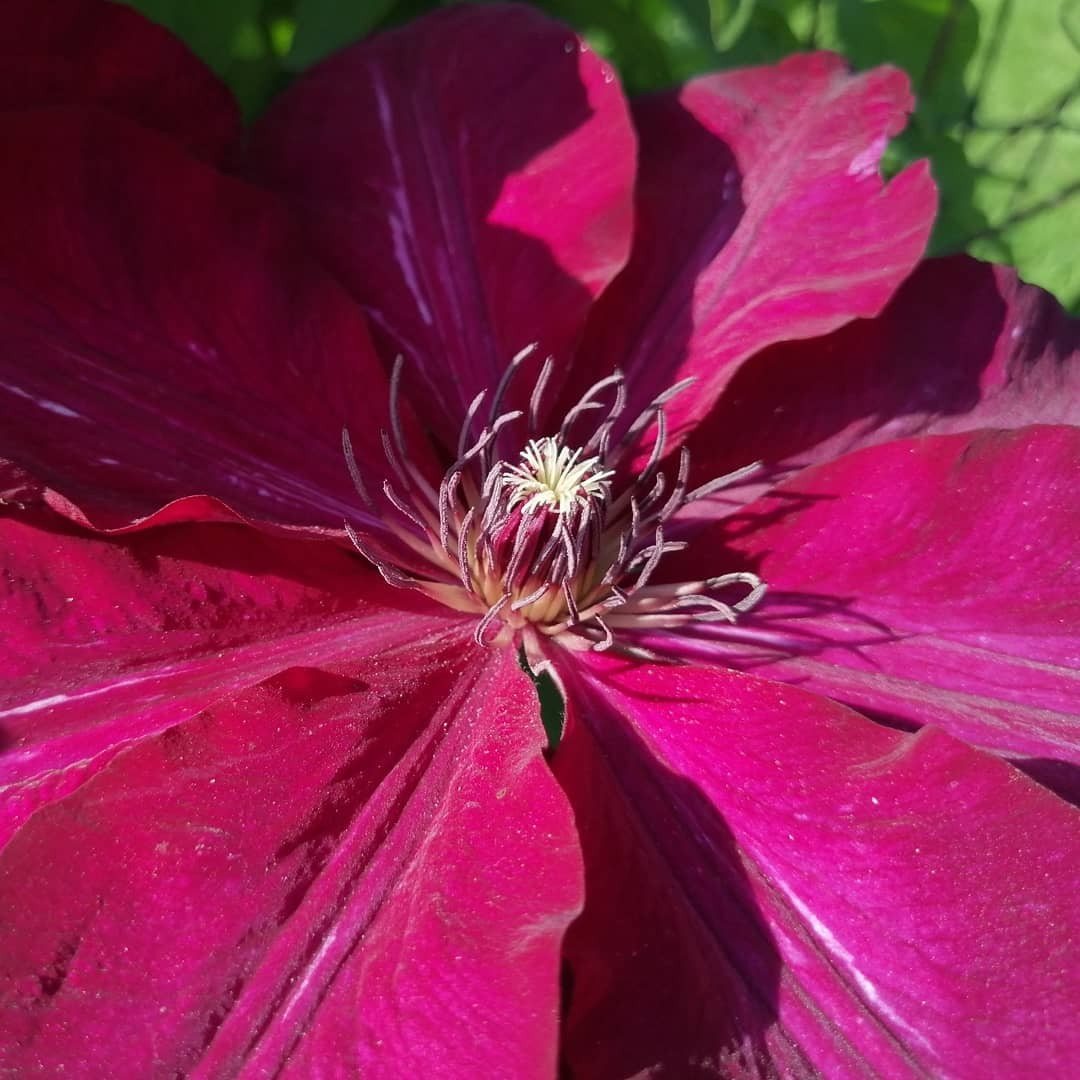
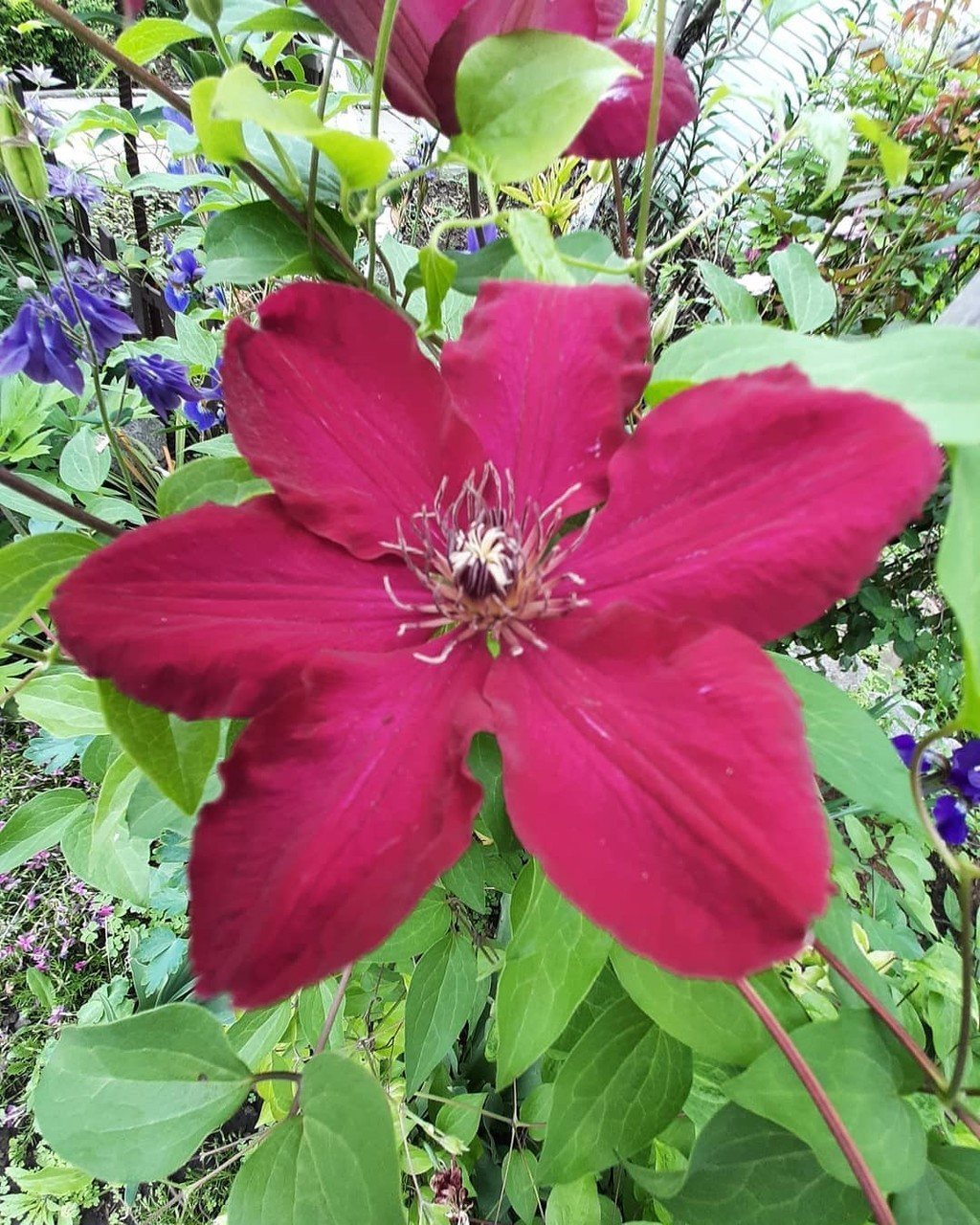
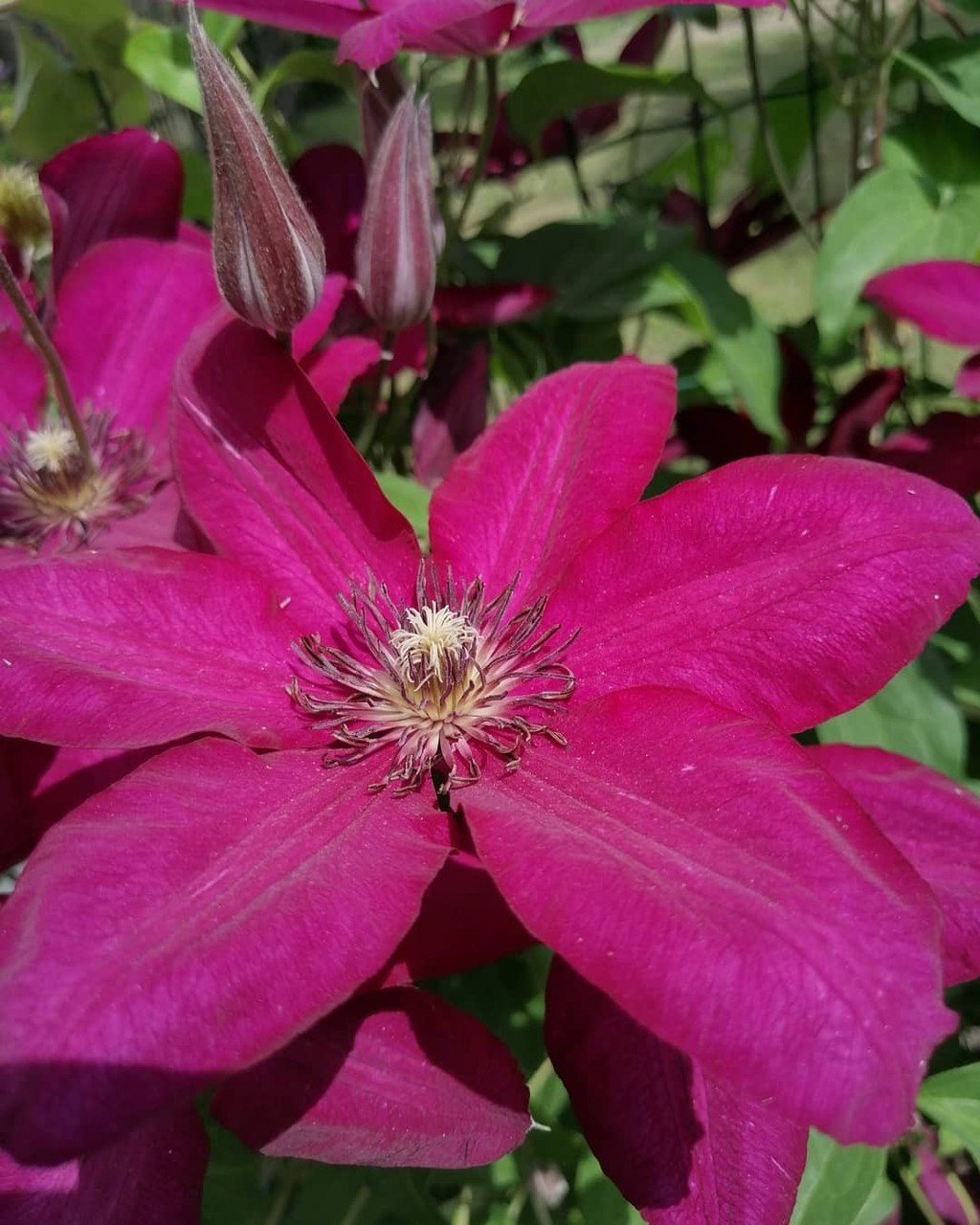



Flowers are 16 cm in diameter. The petals are oval with pointed ends, the color is pale pink with a smooth bright crimson gradient towards the top.
The leaves are dark, trifoliate-pinnate or ovate trifoliate.
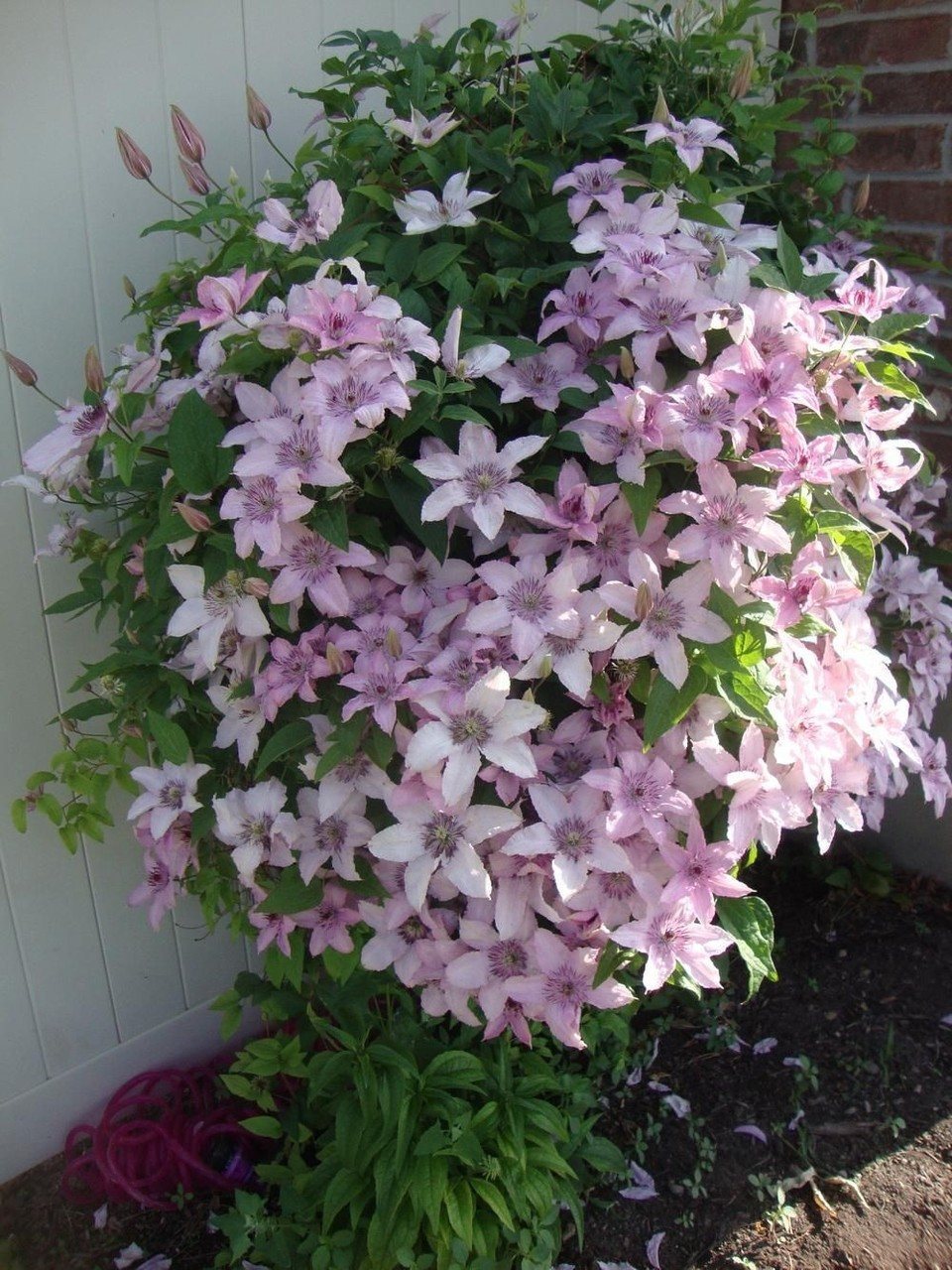
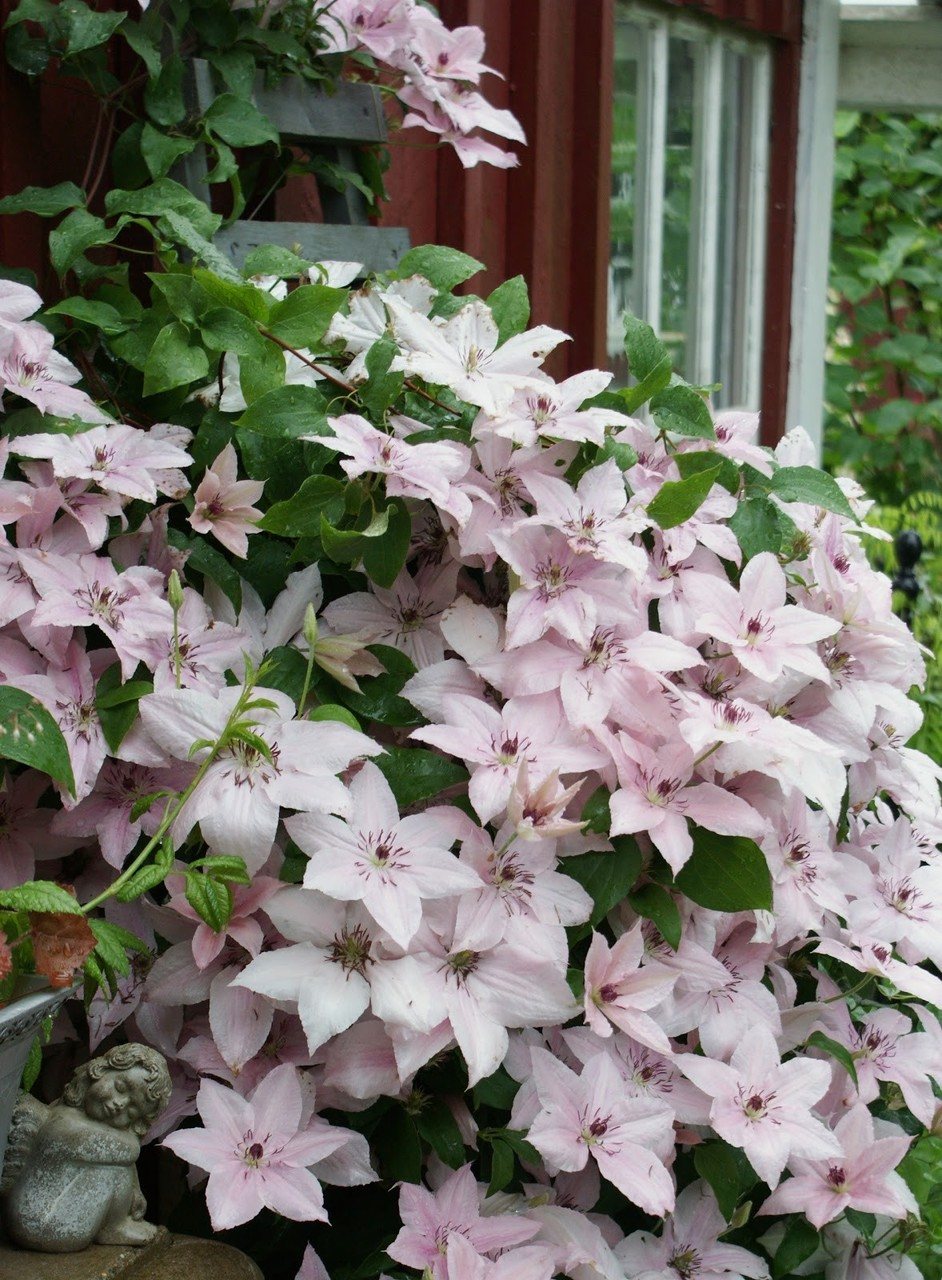
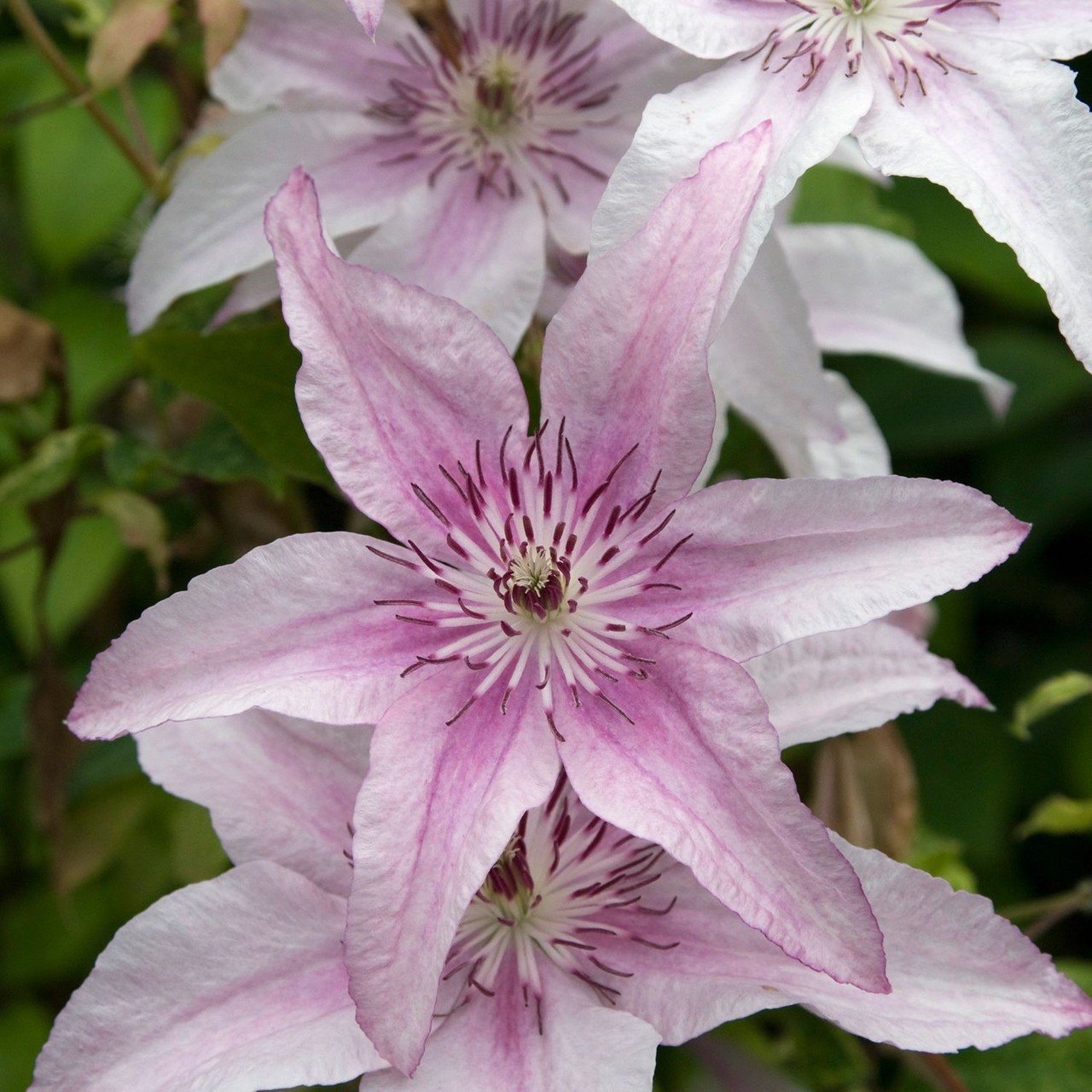



Warsaw night
The large-flowered plant is found under the name Warsaw Nike. The Patens group variety grows up to 3 m. The first wave of flowers blooms from last year's shoots in May-June. The flowers are purple, double. The second is from new stems in August-November (in warm climates). Young semi-double buds of a cherry hue. Inflorescences of 6-8 petals.
The leaves are wrinkled and ovate.
Warsaw Nike loves warmth and grows in partial shade. Withstands frosts down to -35°C.
Duchess of Edinburgh
The liana-like shrub is distinguished by large spherical snow-white flowers. The first flowers develop from old shoots at the end of May. The second period begins in September, the buds bloom less frequently.
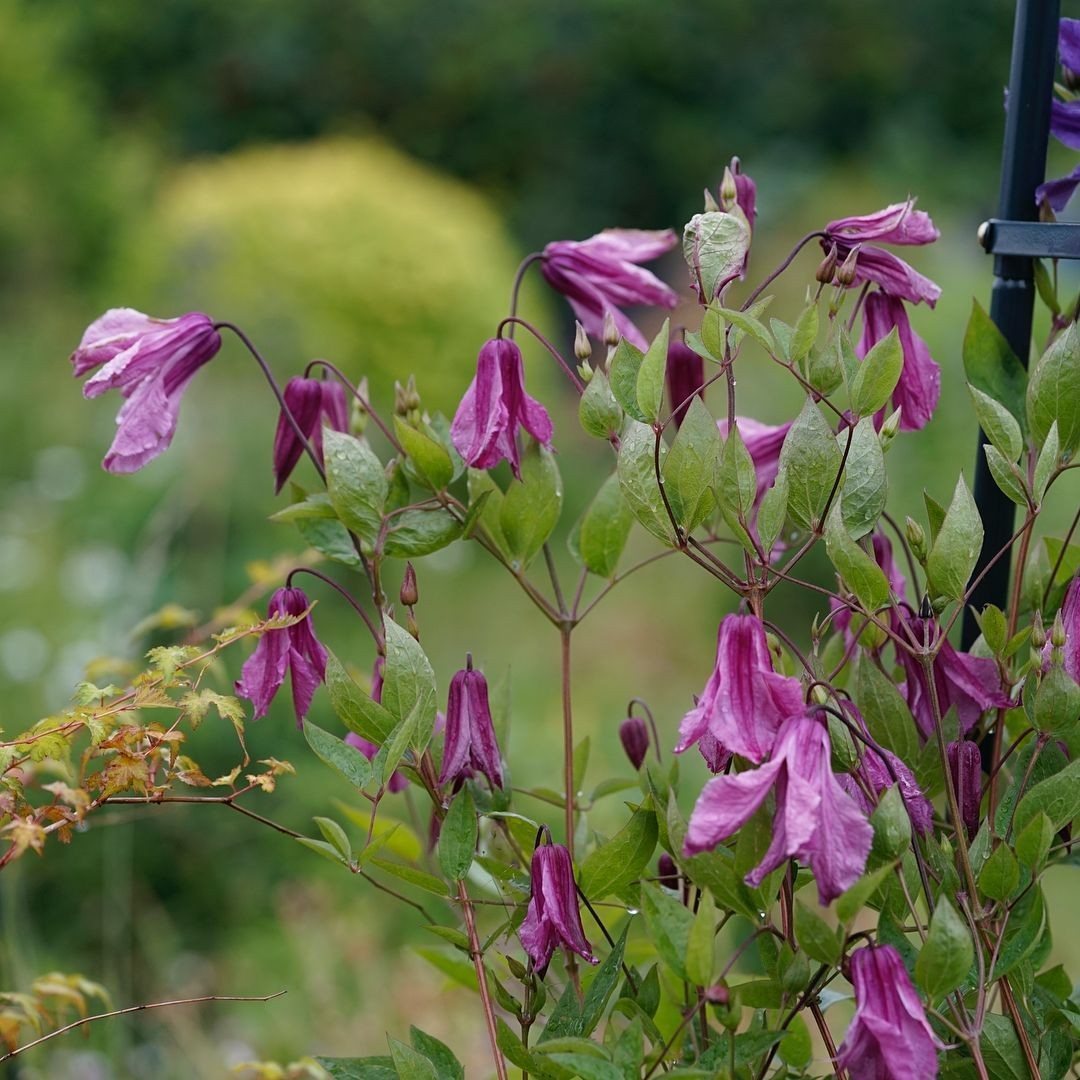
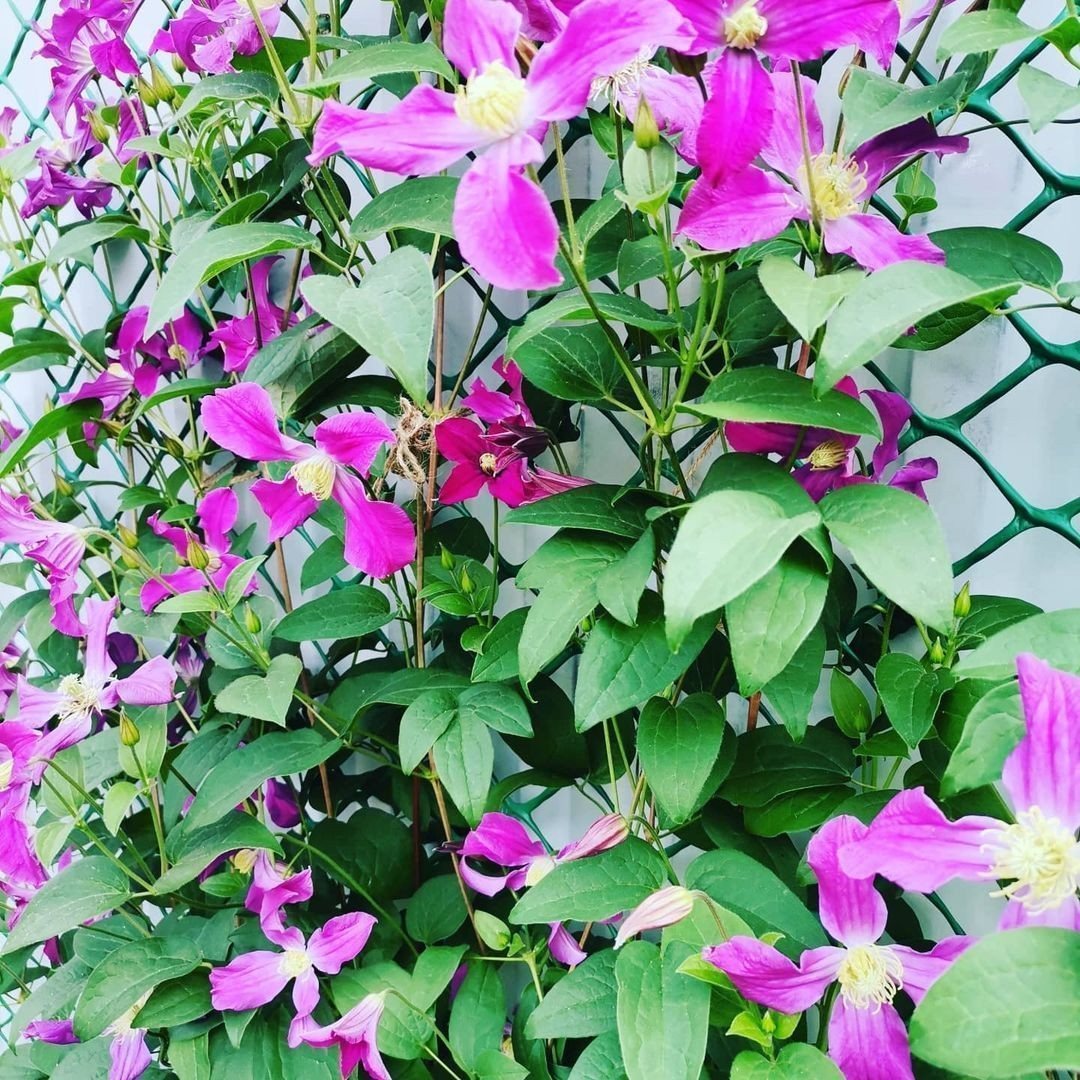
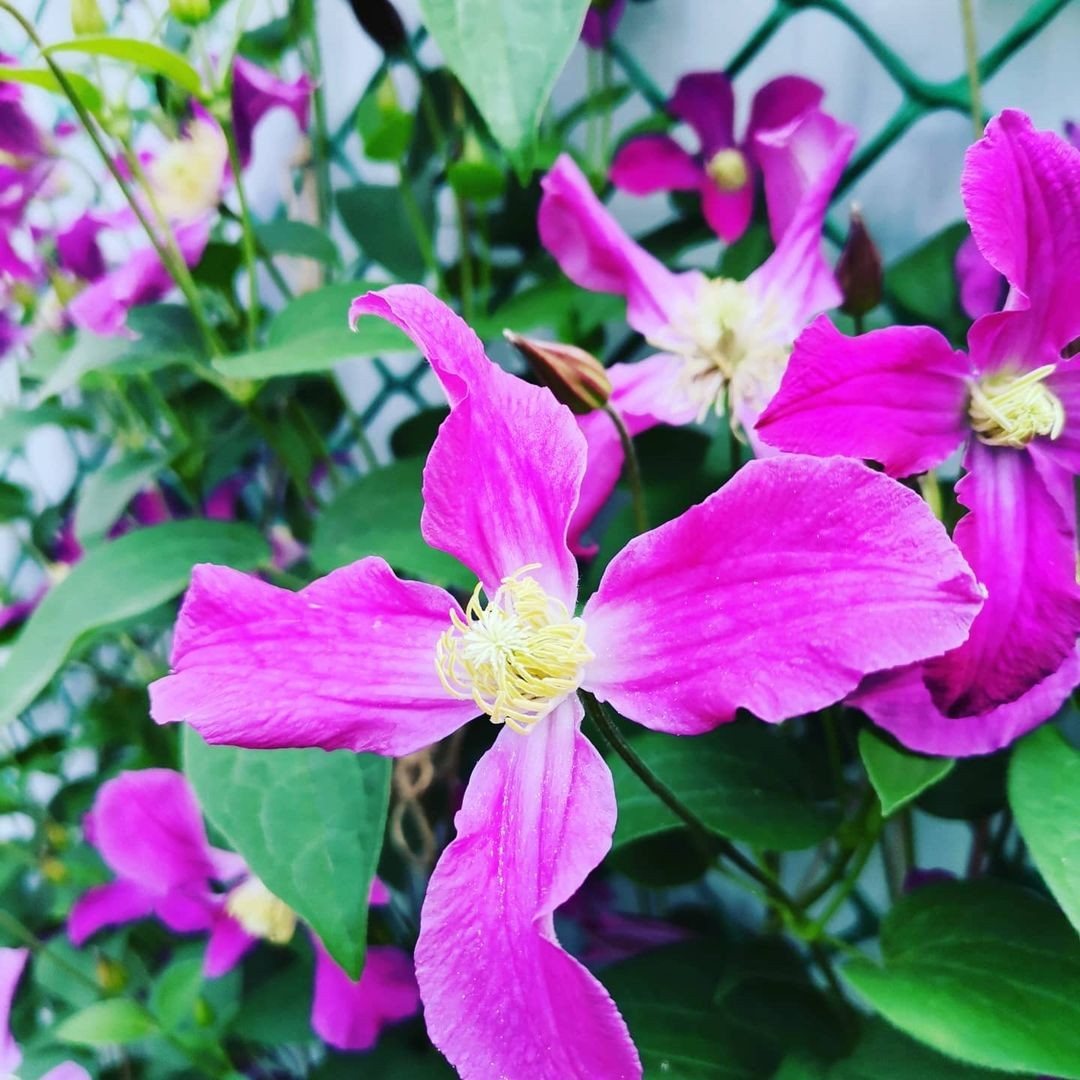



The flower is 16 cm in diameter, the petals are wavy, oval in shape with a pointed end. Stacked in several rows.
The leaves are dark, trifoliate with deep veins.
The winter-hardy variety can withstand prolonged frosts and is not very susceptible to damage.
Violet Elizabeth
Clematis blooms from May to June and August to September. The first flowering begins on last year's shoots. The flowers are semi-double, up to 20 cm. The second wave blooms from young shoots, all inflorescences are simple.
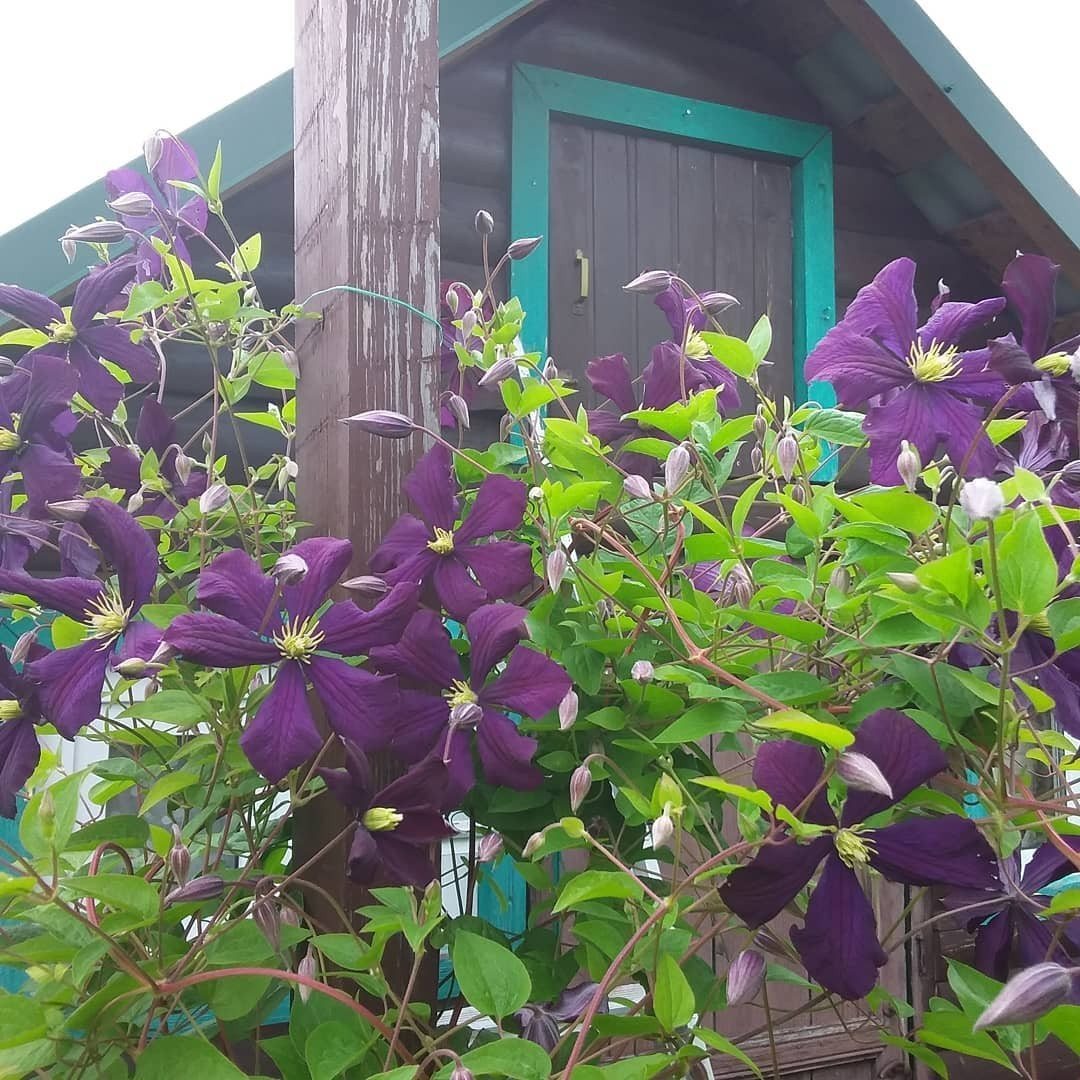
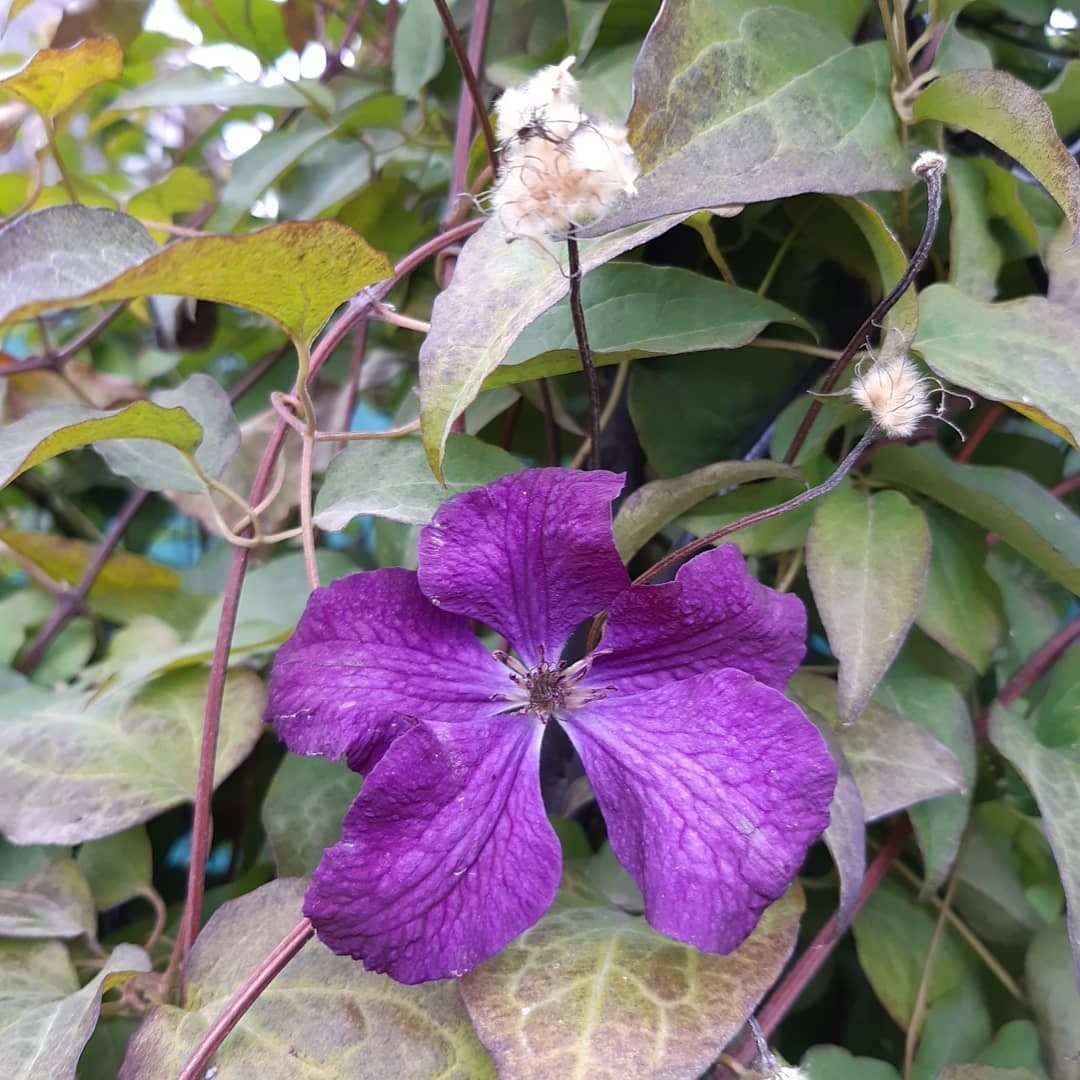
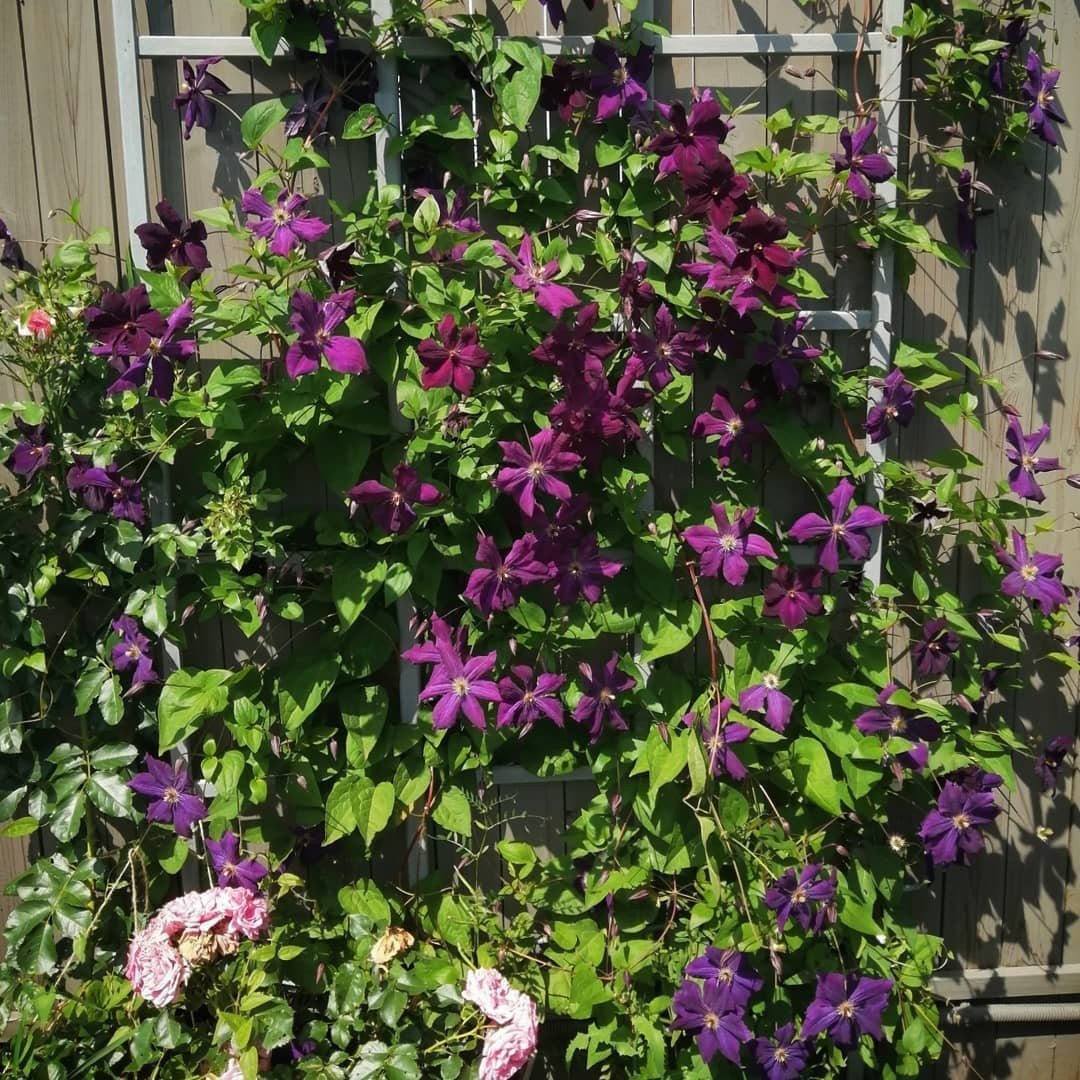



The sepals are lanceolate-shaped, the ends are pointed, pubescent. Slightly bent, wavy petals are painted soft pink or white. The anther is yellow. The leaves are bright green, complexly trifoliate.
The plant tolerates cold well. Grows in light or partial shade.
Miss Bateman
The height of an adult large-flowered plant of the Patens group does not exceed 3 m. In Russia it is known as “Miss Bateman”.
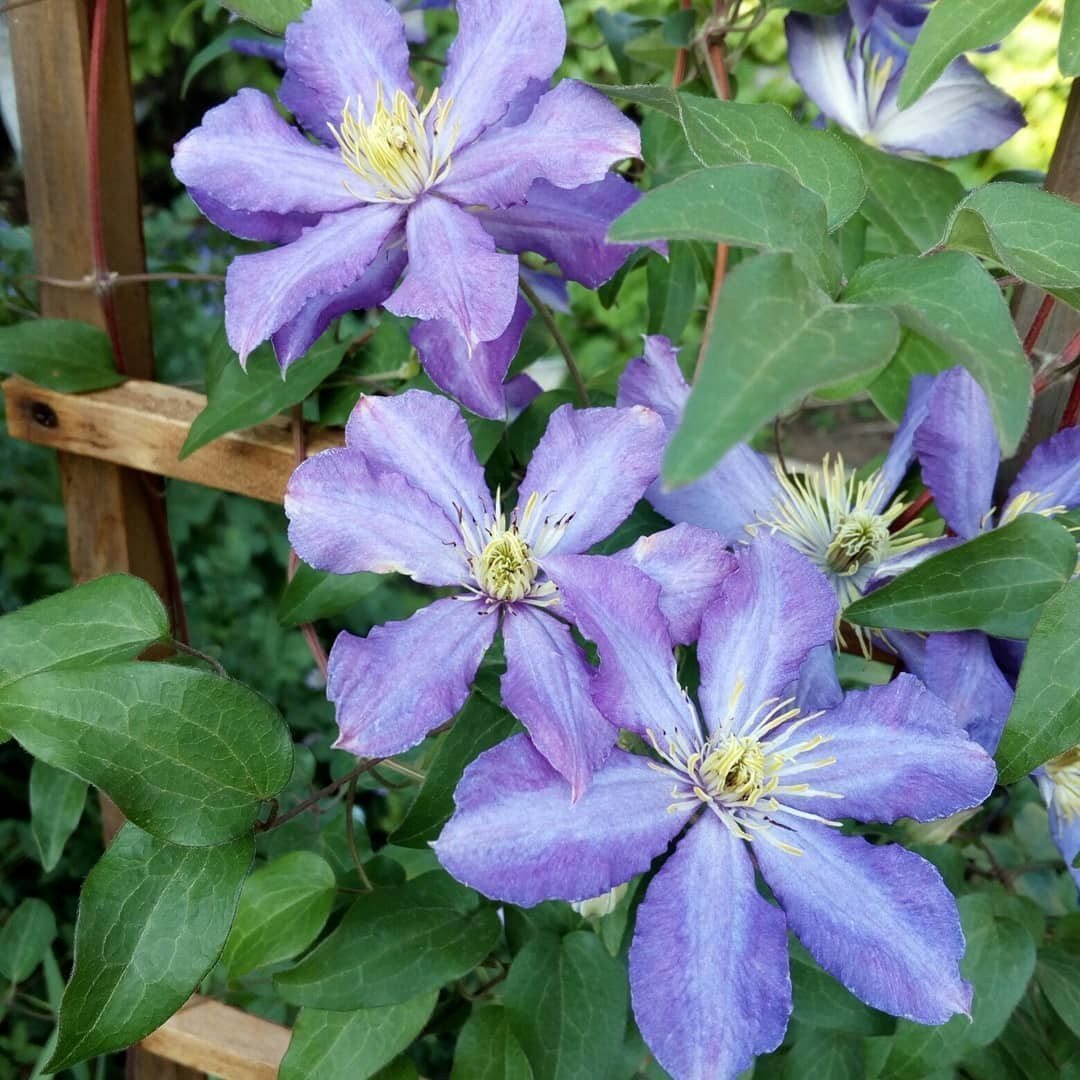

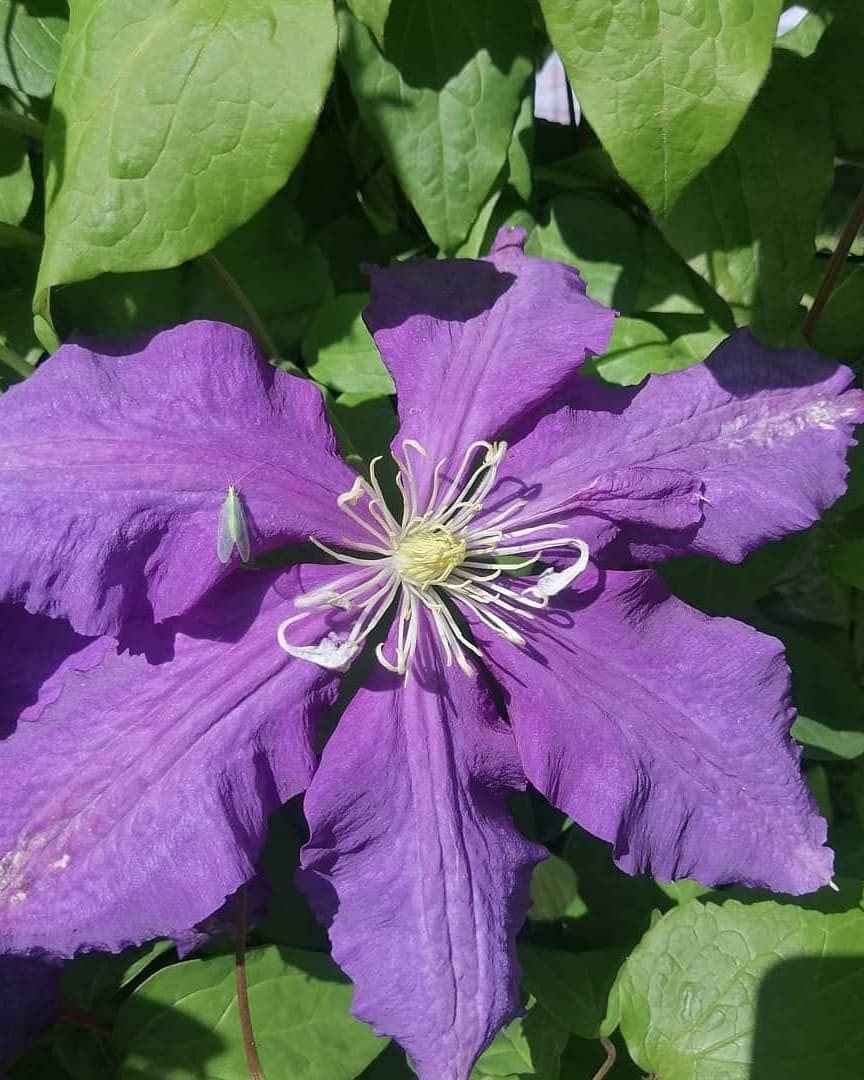



Lianas develop from last year's shoots and bloom in June in the third year. With proper care, flowering occurs twice per season.
The flowers cover the entire bush with flat inflorescences 15-17 cm long. The petals are milky in color with pale light green stripes. The anther is burgundy with light green stamens.
The foliage is medium trifoliate, oval in shape. The plate is bright green, veiny.
The variety does not like stagnant moisture in the soil and grows on the sunny side of the site. Withstands frosts down to -25℃.
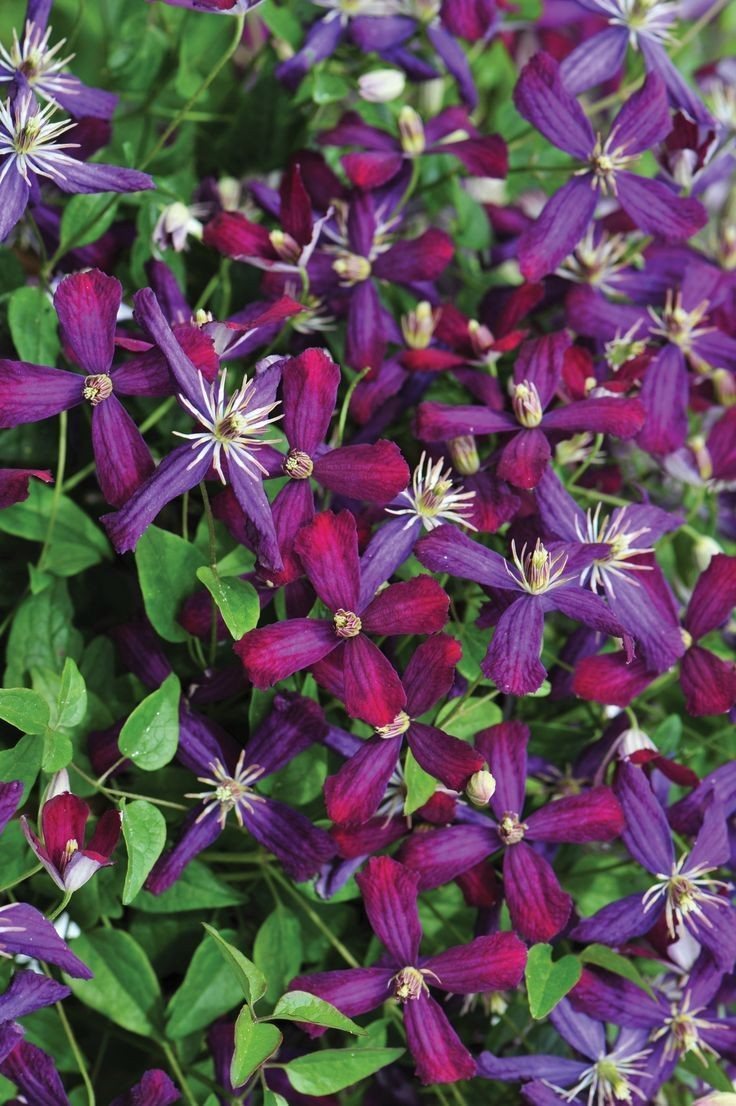
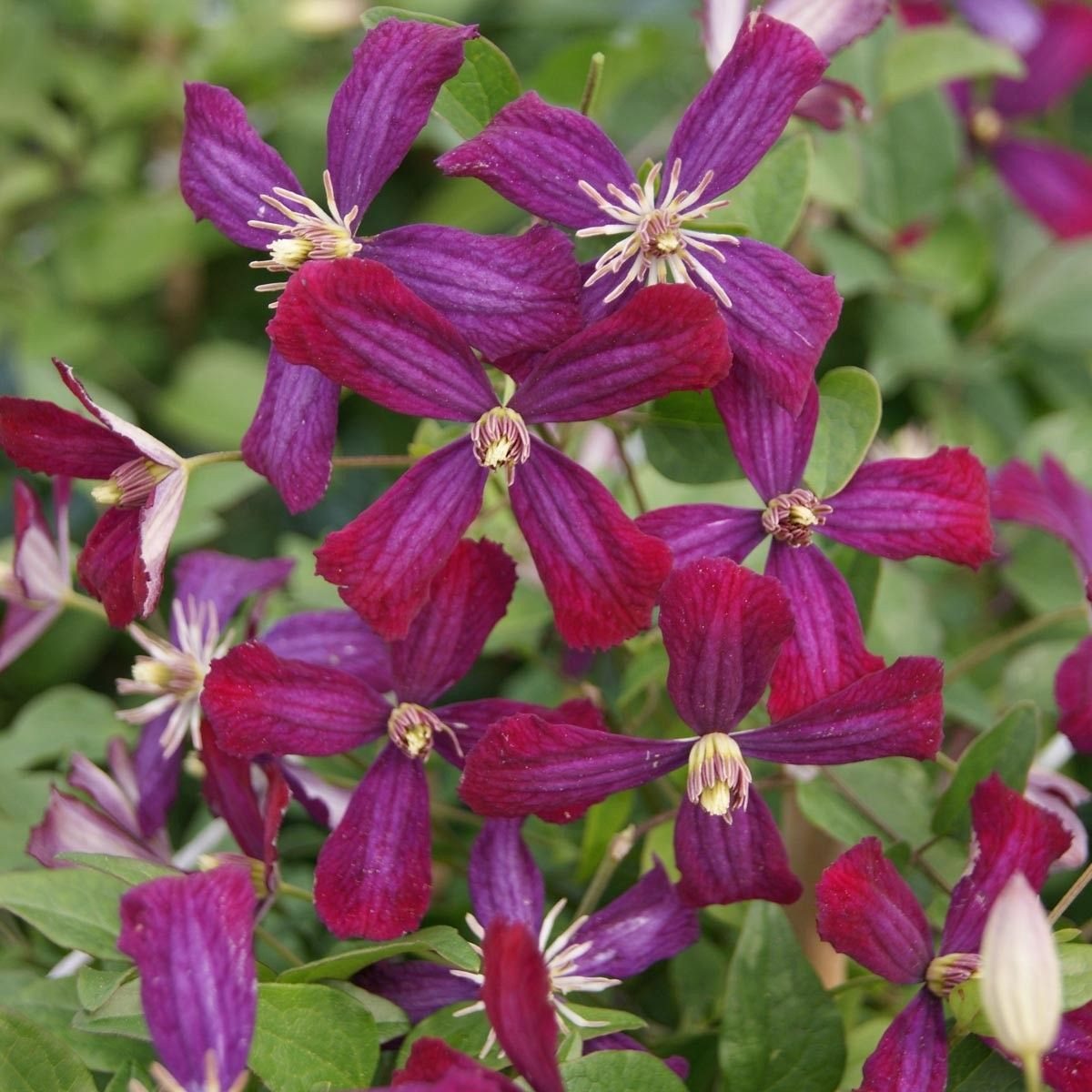
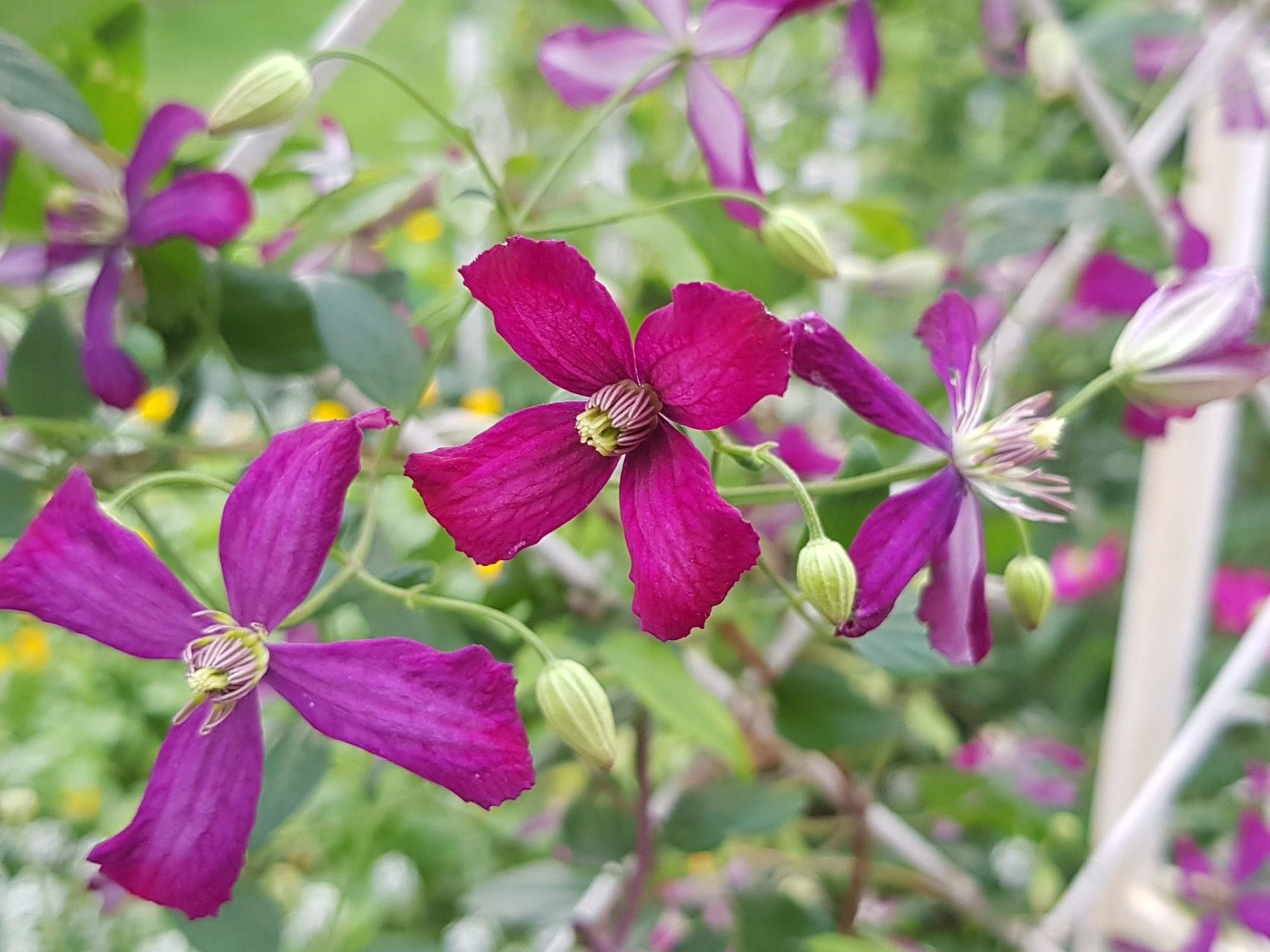



Andromeda
Abundantly flowering liana of the Lanuginosa group, 2.5 - 4 m in height. The large-flowered shrub blooms twice in the 6th year after planting. In mid-May, semi-double flowers 14-21 cm bloom from overwintered shoots.In September - simple buds on young stems.
The buds consist of 6-8 wavy lilac petals with a purple stripe in the middle.
Leaves are opposite, entire. The foliage is oval in shape, pointed at the ends.
Clematis is not frost-resistant and requires shelter for the winter.
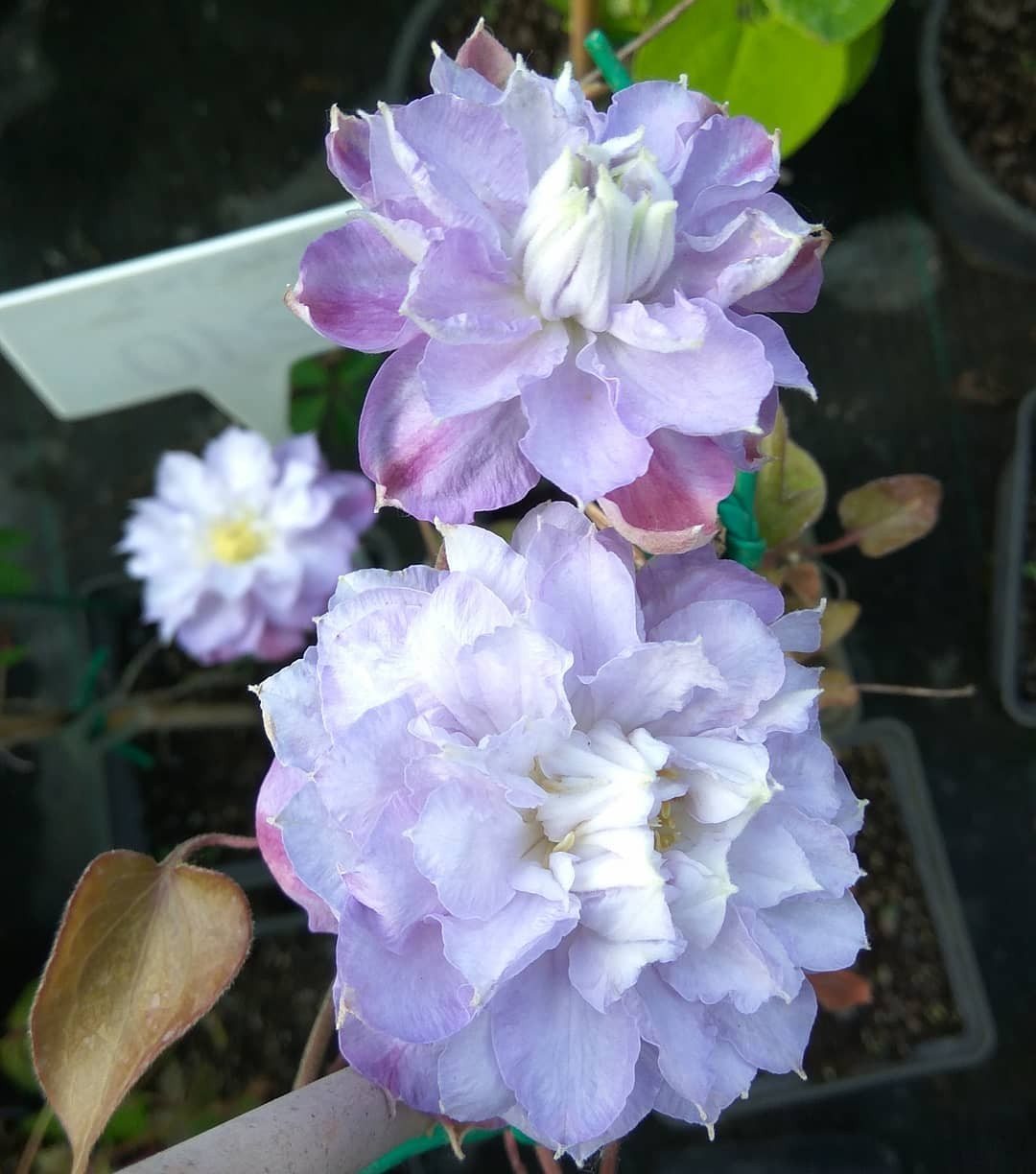
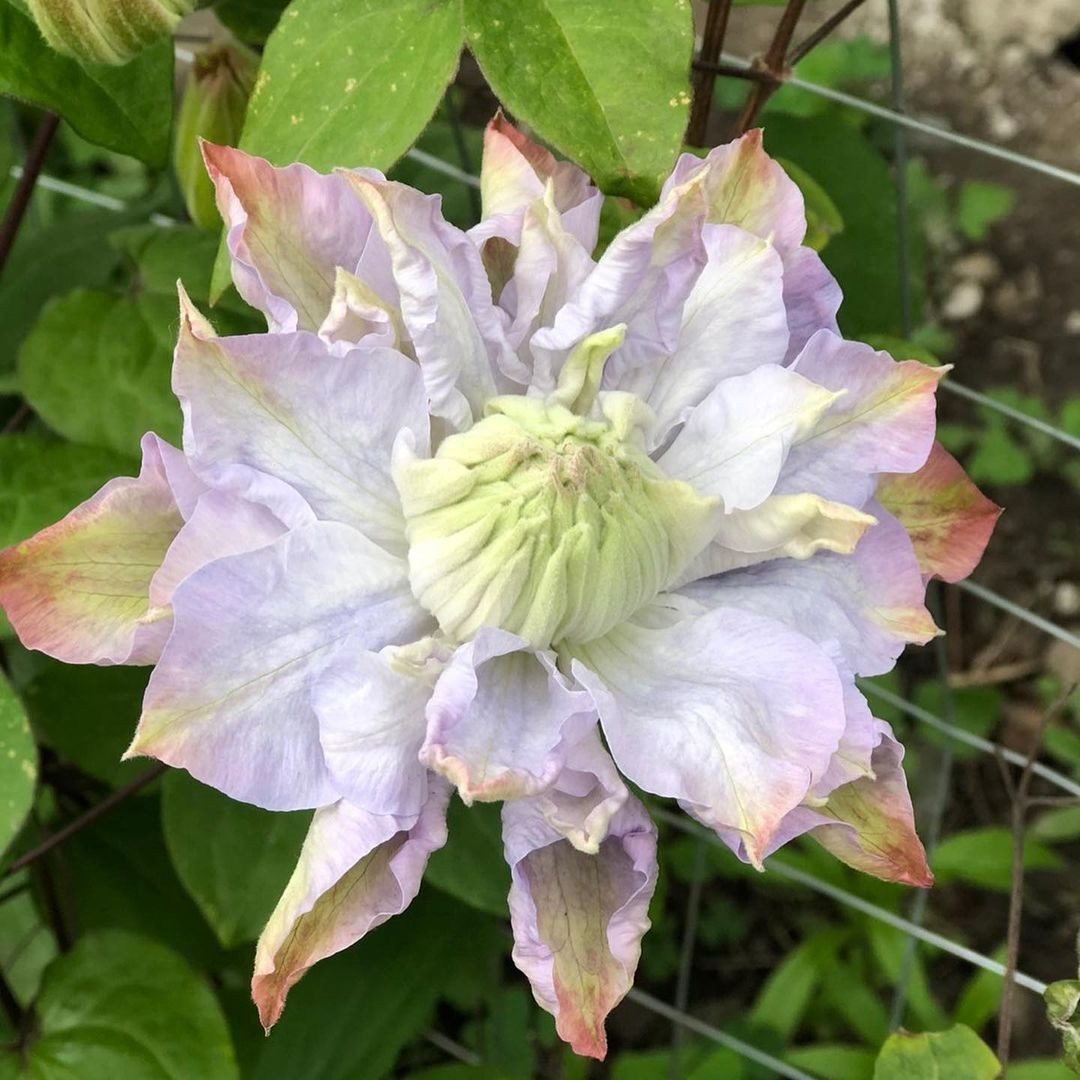
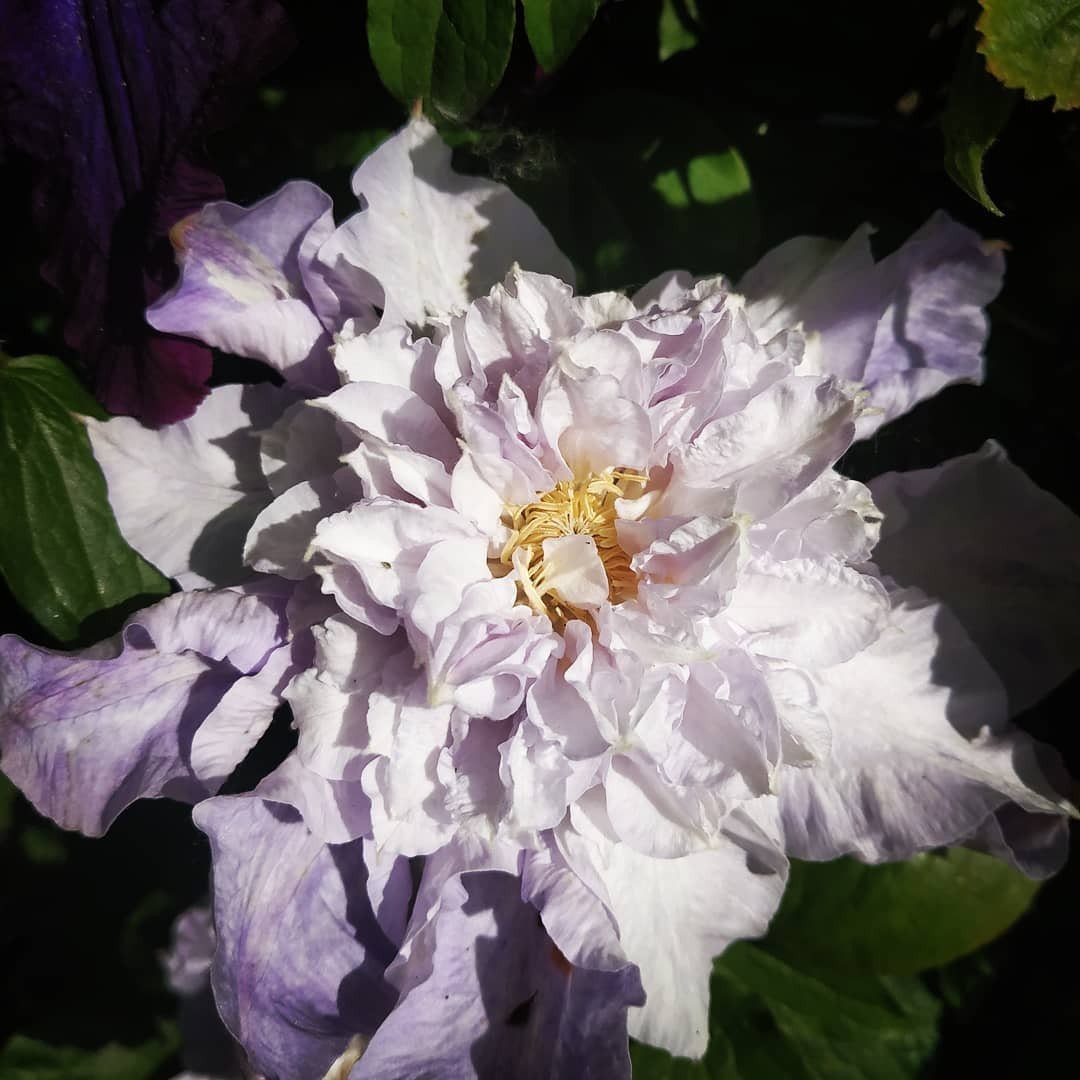



Rubens montana mountain
The small-flowered variety of the Montana group exceeds 6 m. The flowers are red or purple, collected in inflorescences of 5-6 pieces. Single sepals are found on the branches. The diameter of the buds is 5-6 cm with cross-shaped petals.
The mountain shrub blooms from early May to June, emitting a vanilla aroma.
The leaves are compound, trifoliate, opposite. In summer the foliage is green, turning yellow with the onset of autumn.

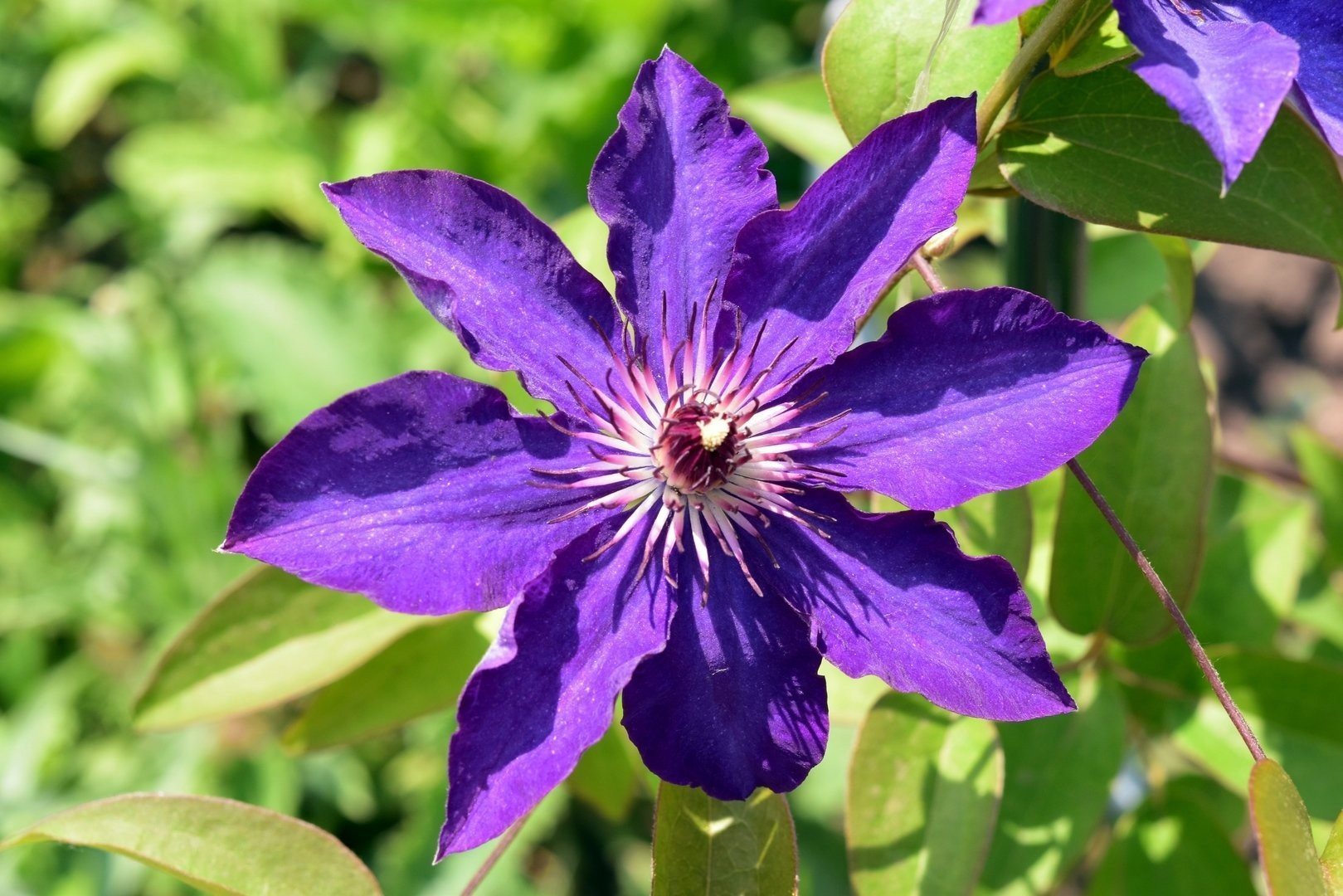
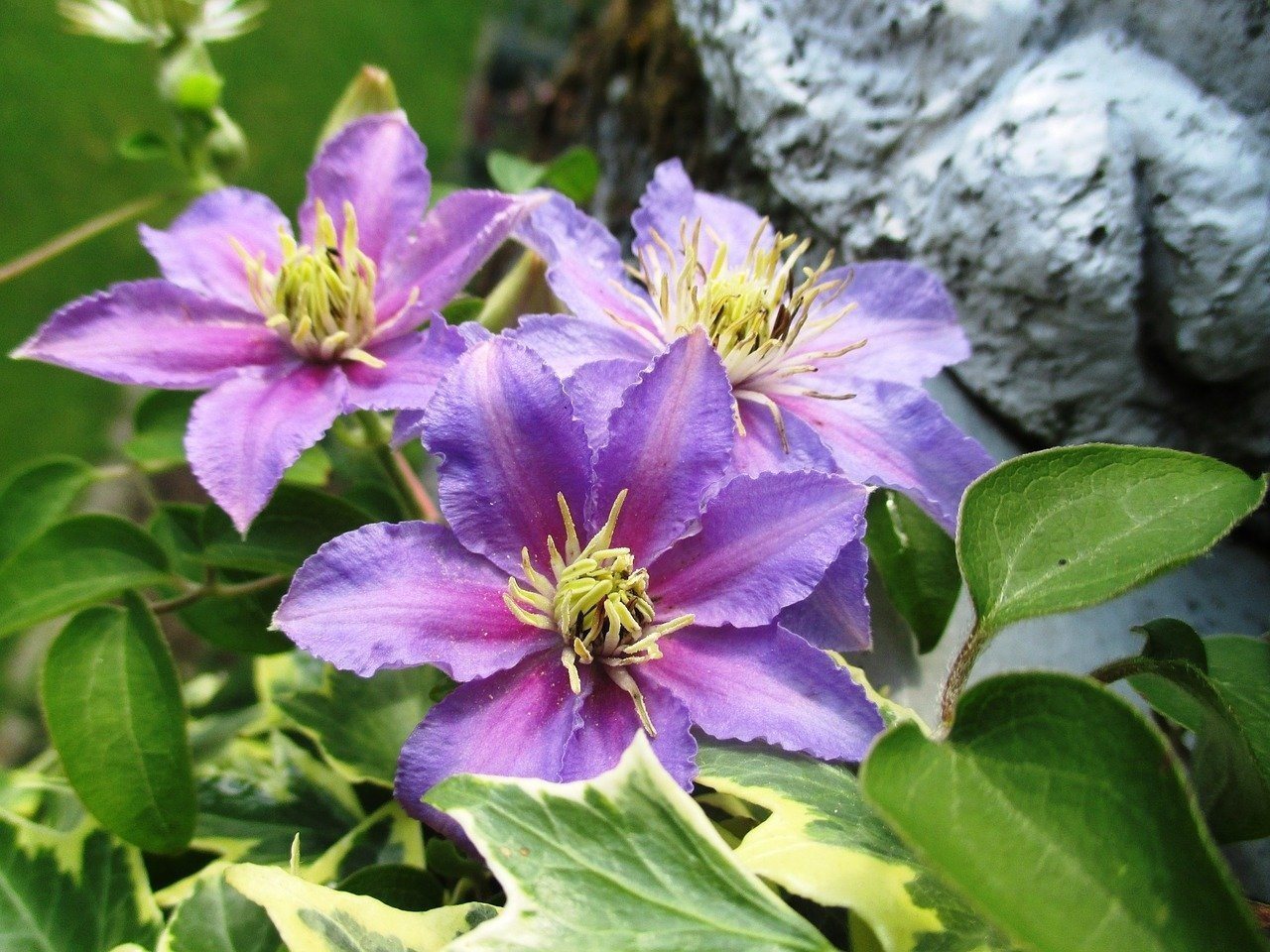



The plant tolerates low temperatures down to -15. With proper care, it is not susceptible to diseases and pests.
Solidarity
Full flowering begins 5 years after the first planting. Blooms from early May until the first frost. Double flowers of 6 sepals, oblong in shape. Petals are pale burgundy, spotted in places.
The leaves are lanceolate-shaped with a serrated edge, trifoliate, opposite.
Grows in sunny areas or partial shade. Tolerates cold down to -35°C.
Pink Fantasy
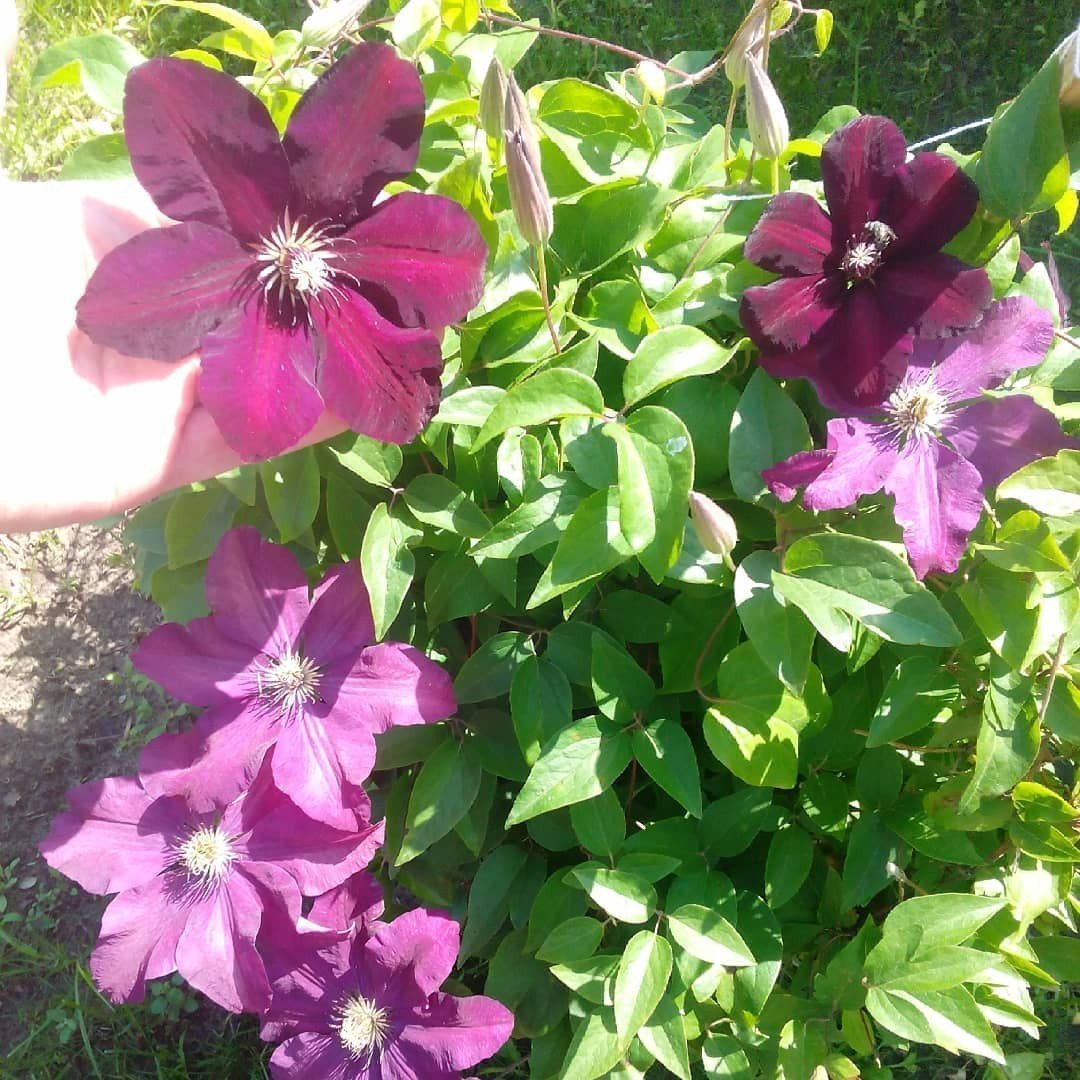
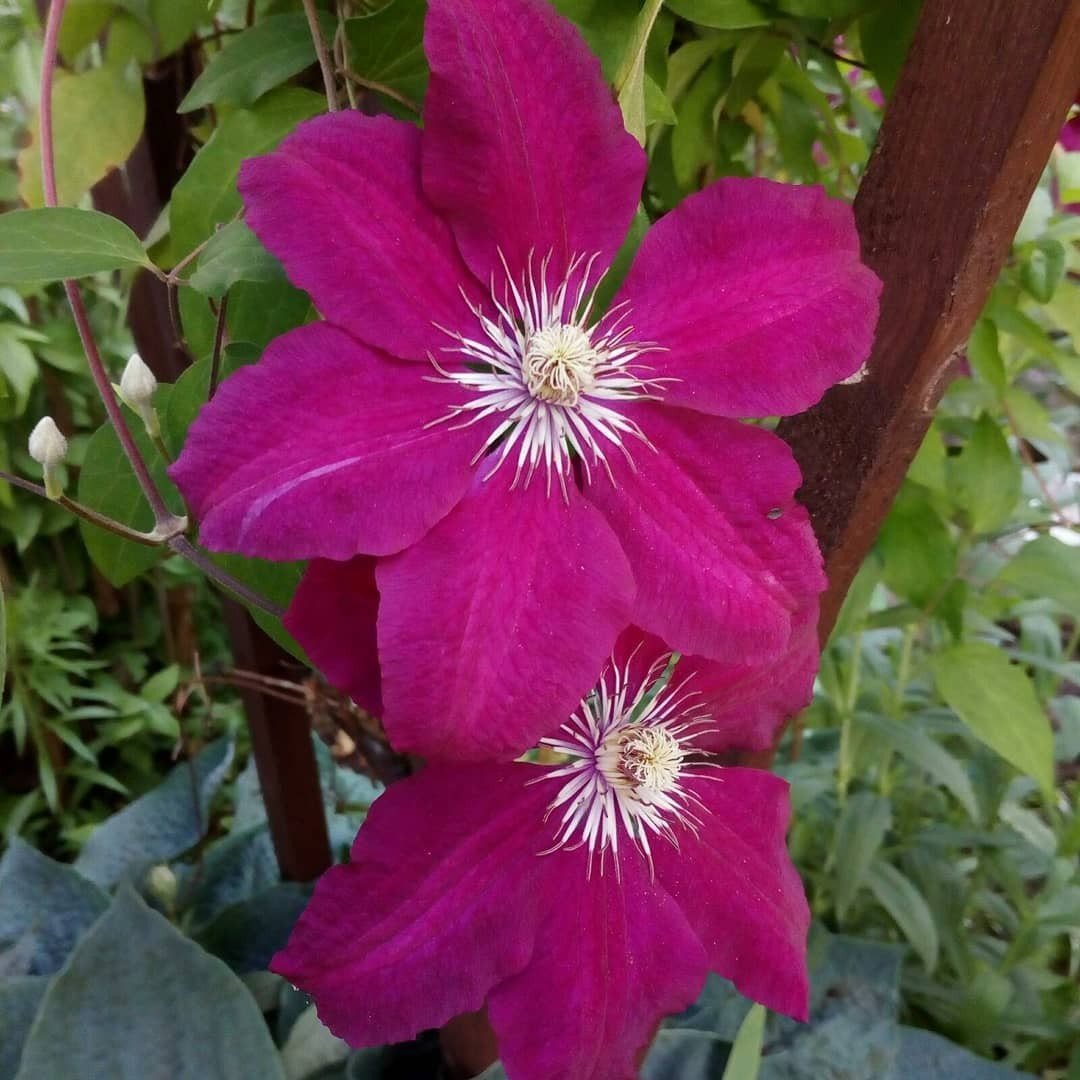
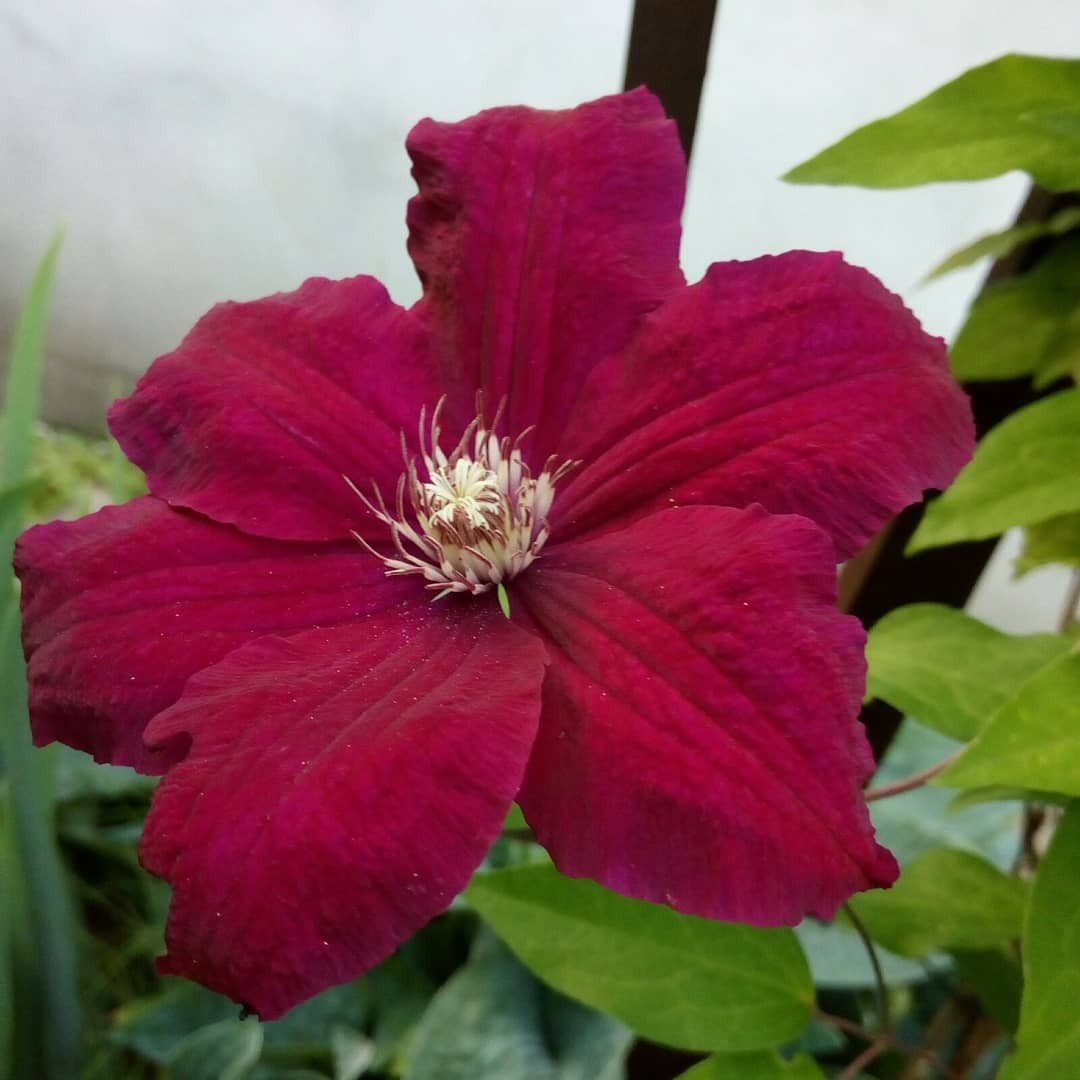



Belongs to the Patens group. Star-shaped flowers 10-15 cm develop from young shoots in early July. In one basket there are 5-7 wavy, ovoid petals of bright or pale pink with drooping ends.
By the end of the season, the variety grows up to 2.5 m. It can withstand severe, prolonged frosts down to -34°C.
Alyonushka
A small-flowered plant from the Knyazhik group reaches 2 m at the end of the season.
The subshrub blooms in the second year, in the first ten days of June. Abundant flowering does not stop until September. Up to 30 buds open on one vine.
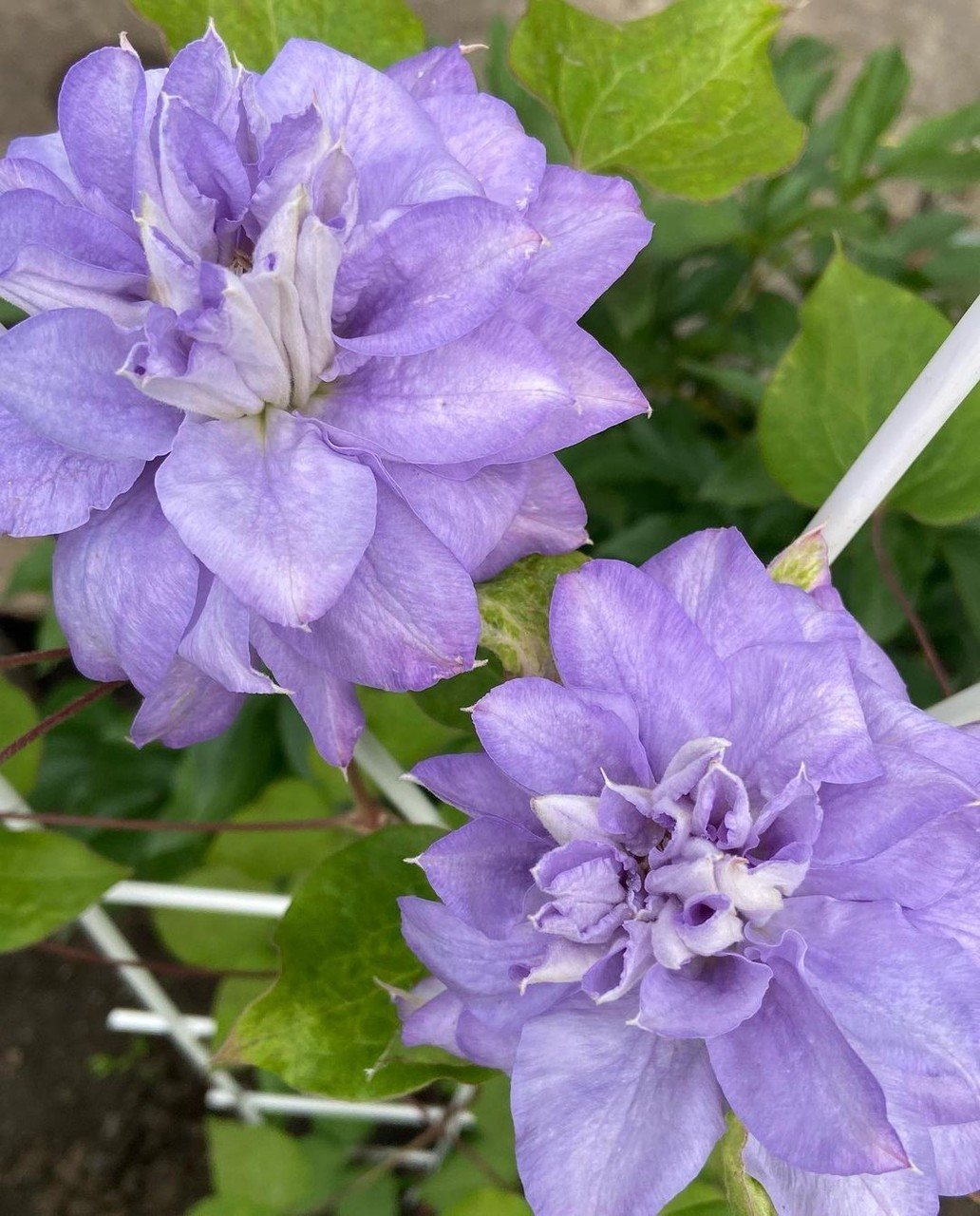
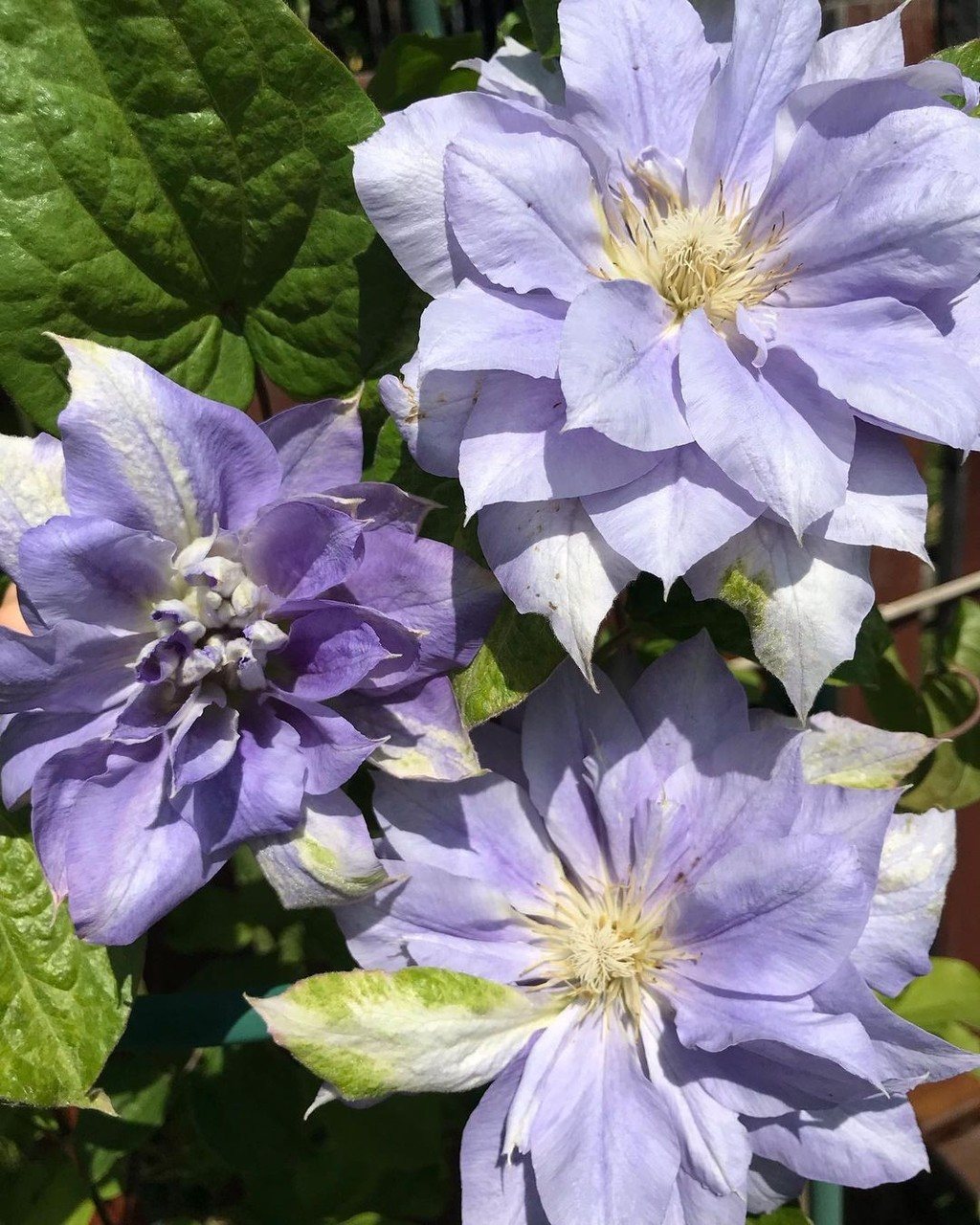
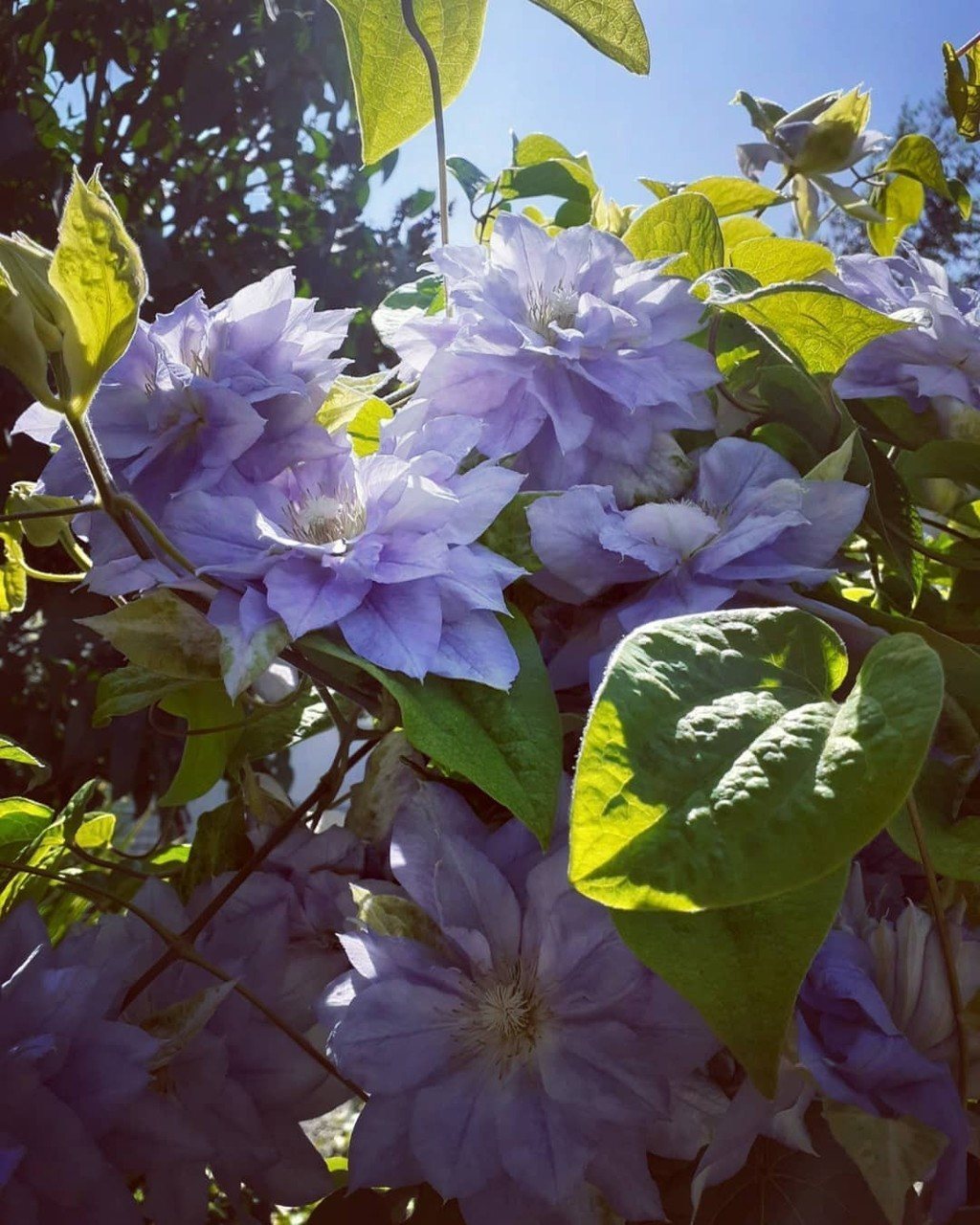



The flowers are simple, bell-shaped, drooping, 7 cm in diameter. One basket contains 6 petals of a soft pink shade. With prolonged heat they fade and become whitish.
The foliage is complex and simple, connected by 3-4 plates.
The variety tolerates frost and is resistant to diseases.
Etoile Violet
The Viticella group variety reaches 4 meters (in warm climates up to 6 m). Star-shaped simple flowers grow on young shoots, connected in three inflorescences, less often single.
Flowering in June-September. The purple petals are wrinkled, directed up or down, with wavy edges.
The foliage is complex, trifoliate, opposite. The plate is veiny, matte.
The frost-resistant variety survives frosts down to -20°C. Grows on the sunny, south side.

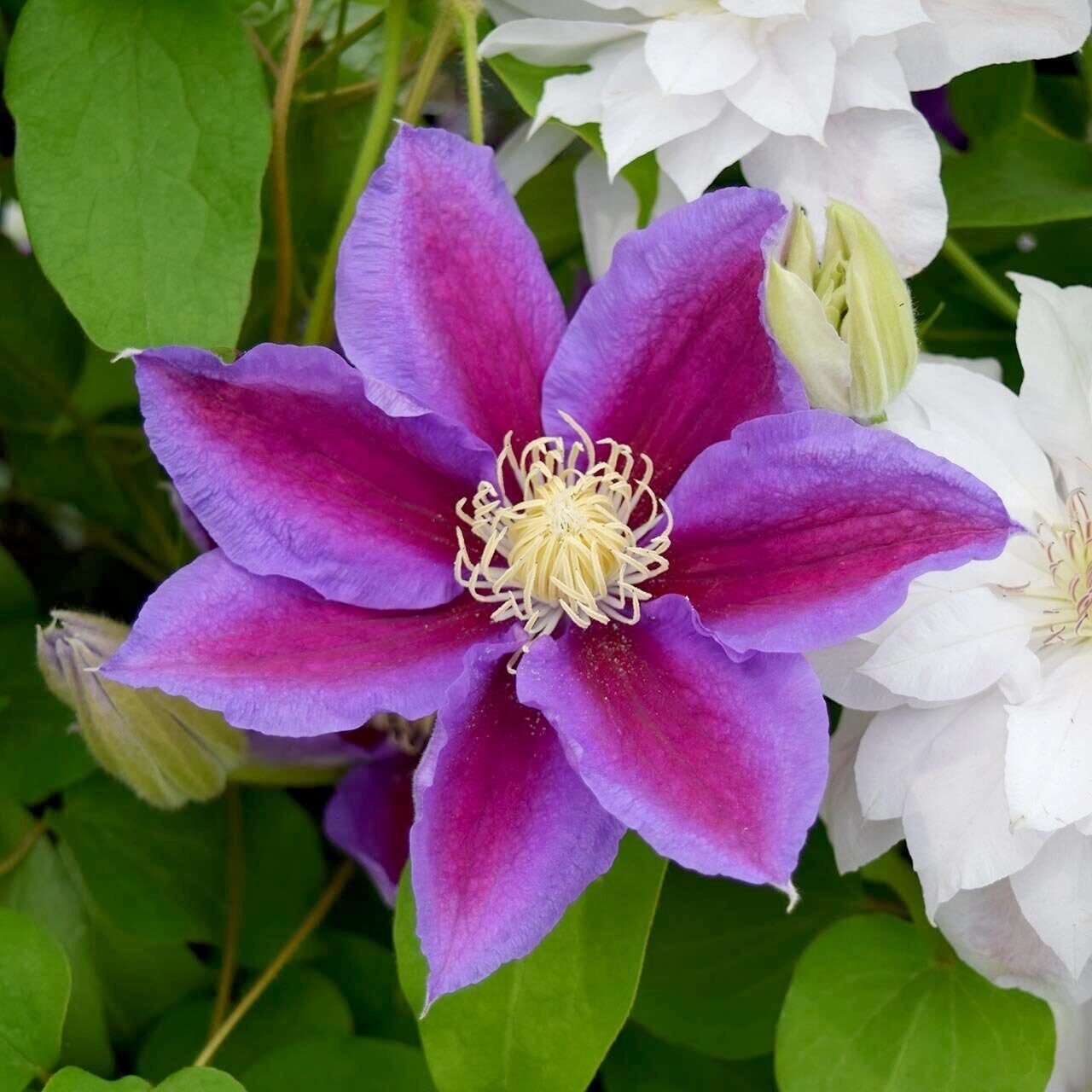
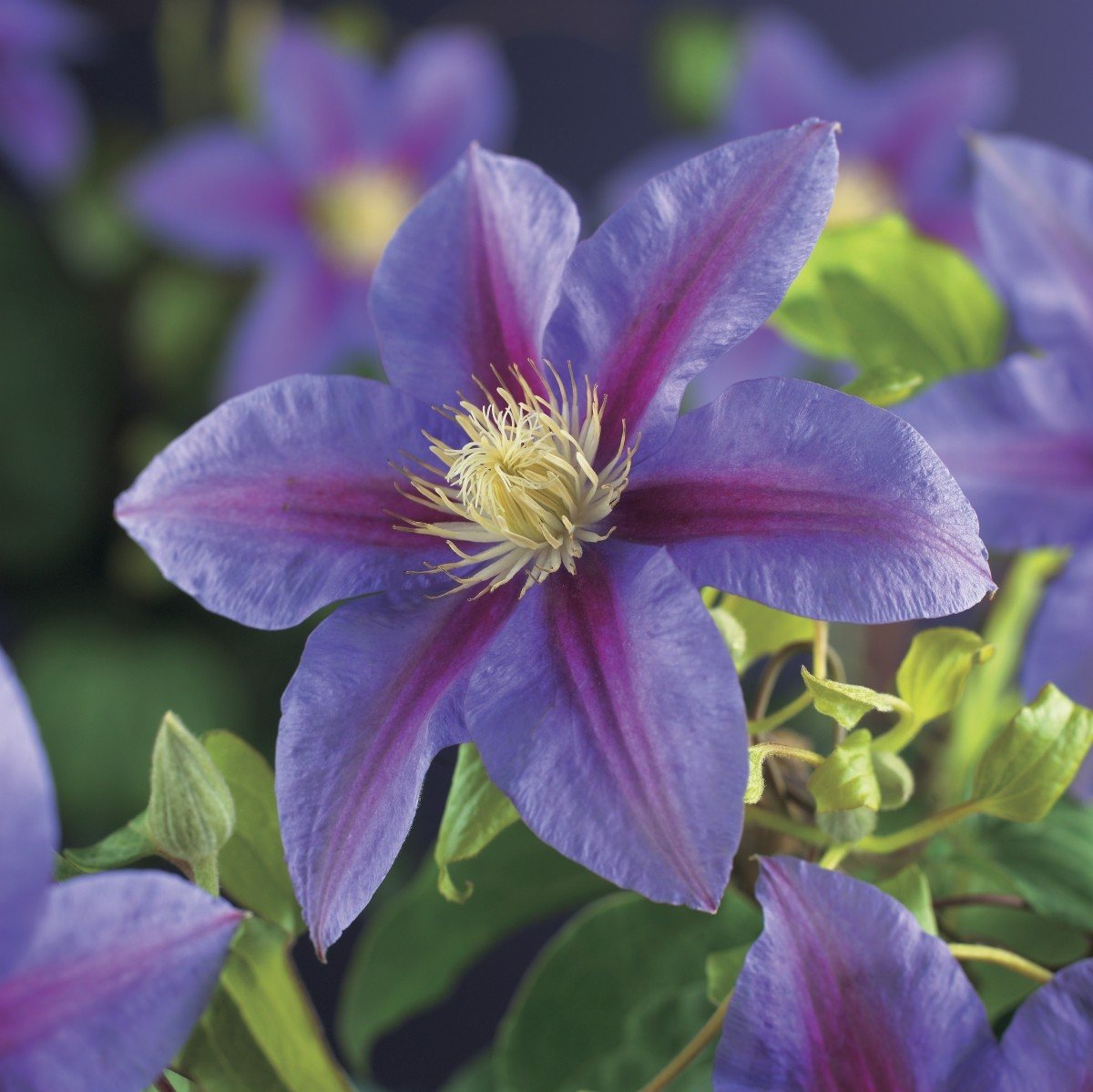



Luther Burbank
The large-flowered species of the Jacquemin group grows up to 4 - 5 m. When flowering, flowers of different sizes bloom, from 15 to 20 cm (in rare cases 26 cm).
The sepals are pubescent, consisting of 6 purple petals with a violet tint, superimposed on each other. Under the sun they fade and turn pale, but in cold weather they return to brightness. The leaves are compound, alternate from 3-5 plates.
The variety tolerates frosts down to -30°C and grows in sunny or shaded areas.

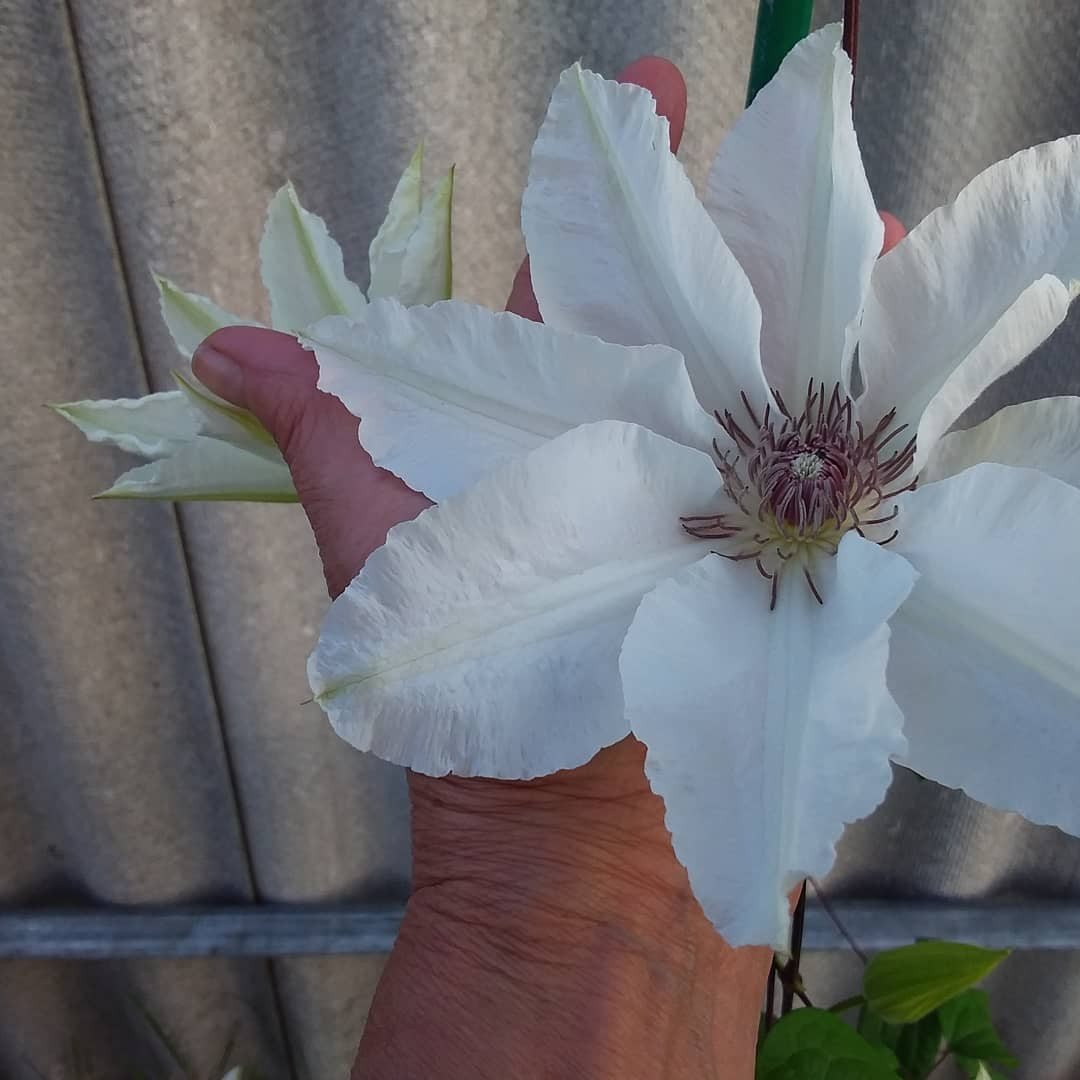
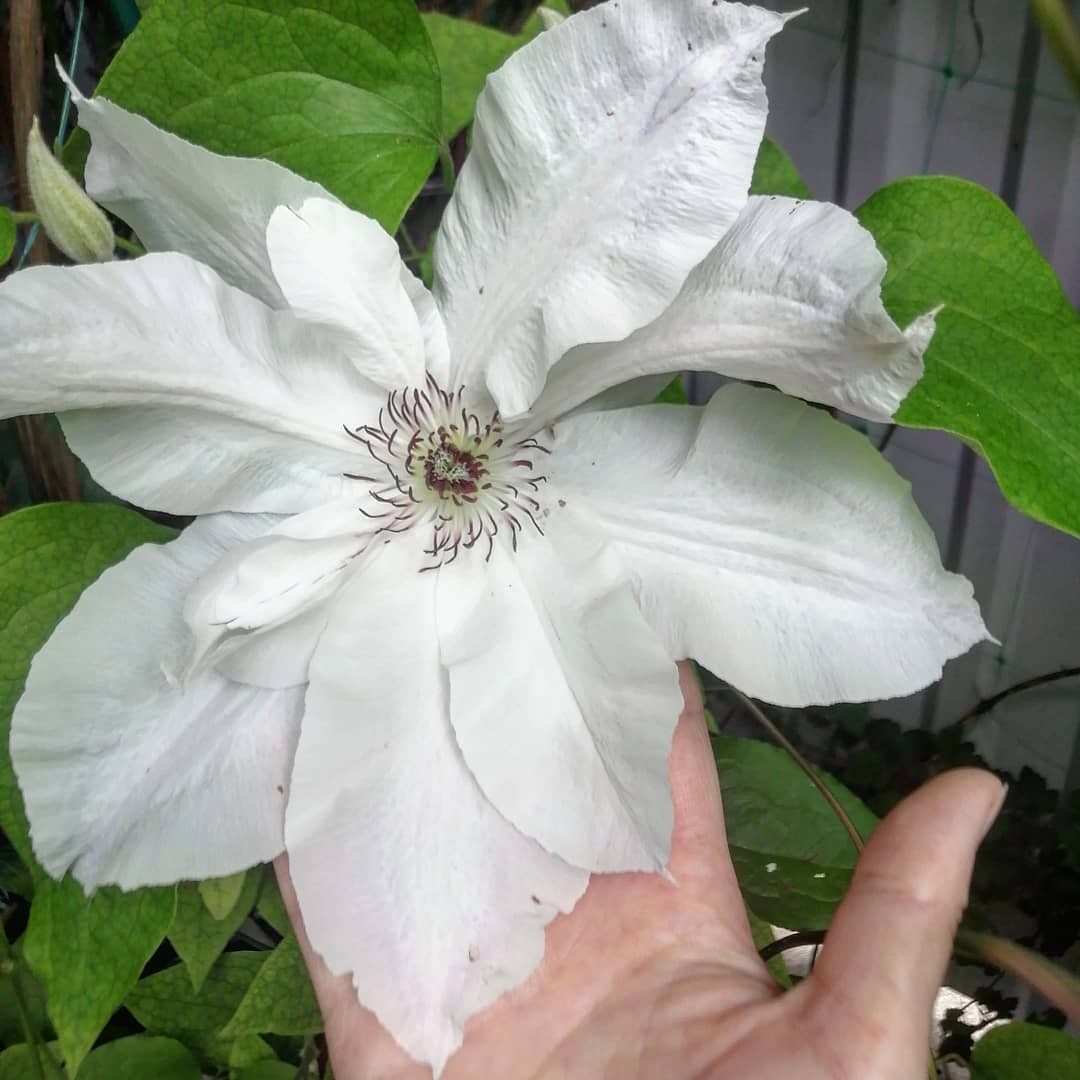



Sweet Summer Love
Small-flowered species, Viticella group.
The buds, collected in inflorescences, bloom from June to October. Flowers 4 cm are arranged crosswise. The petals are pale pink, slightly elongated with curved edges.
The leaves are dark green, entire-pinnate, trifoliate.
Grows on the sunny side. Does not withstand frosts below -29 °C.
Veronica Choice
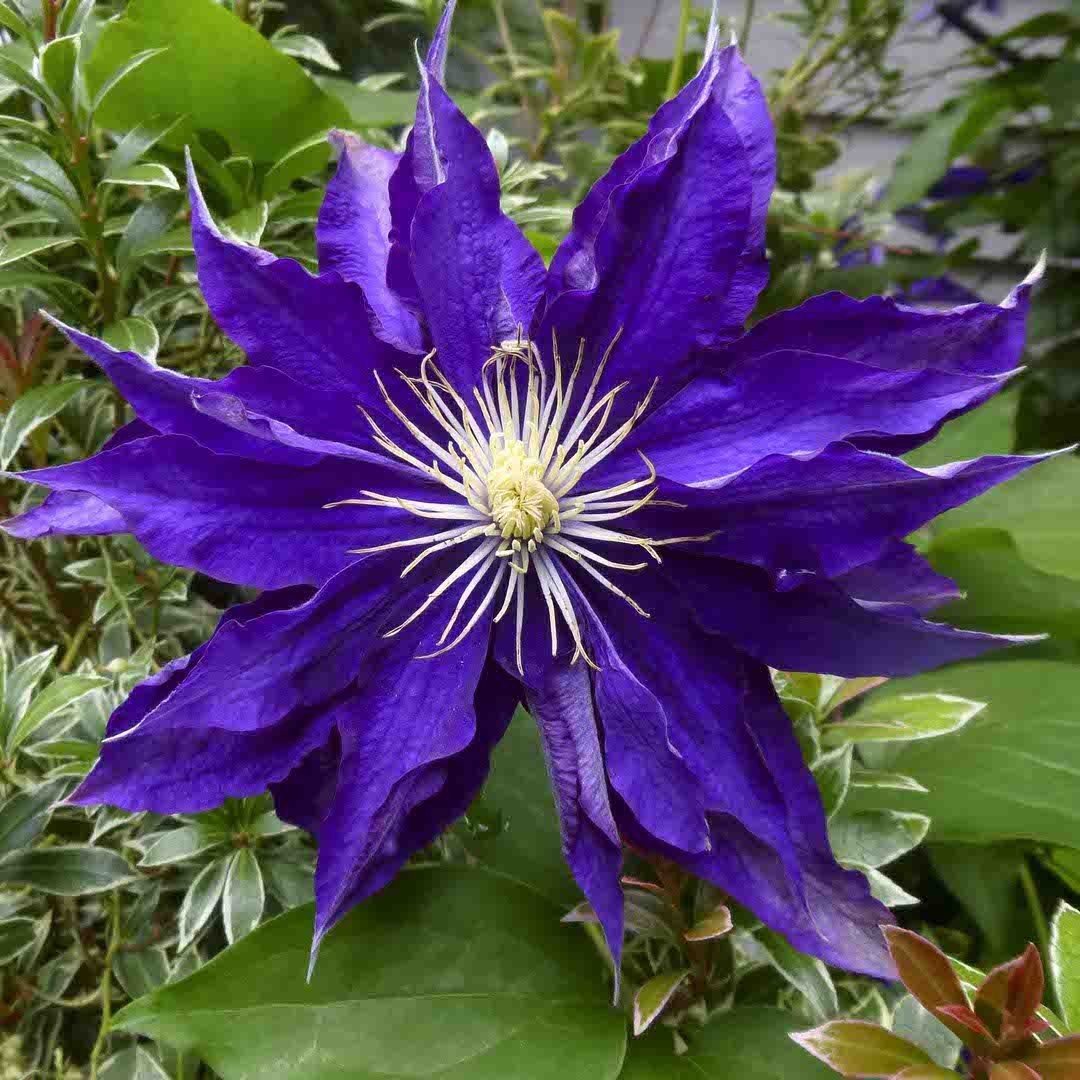
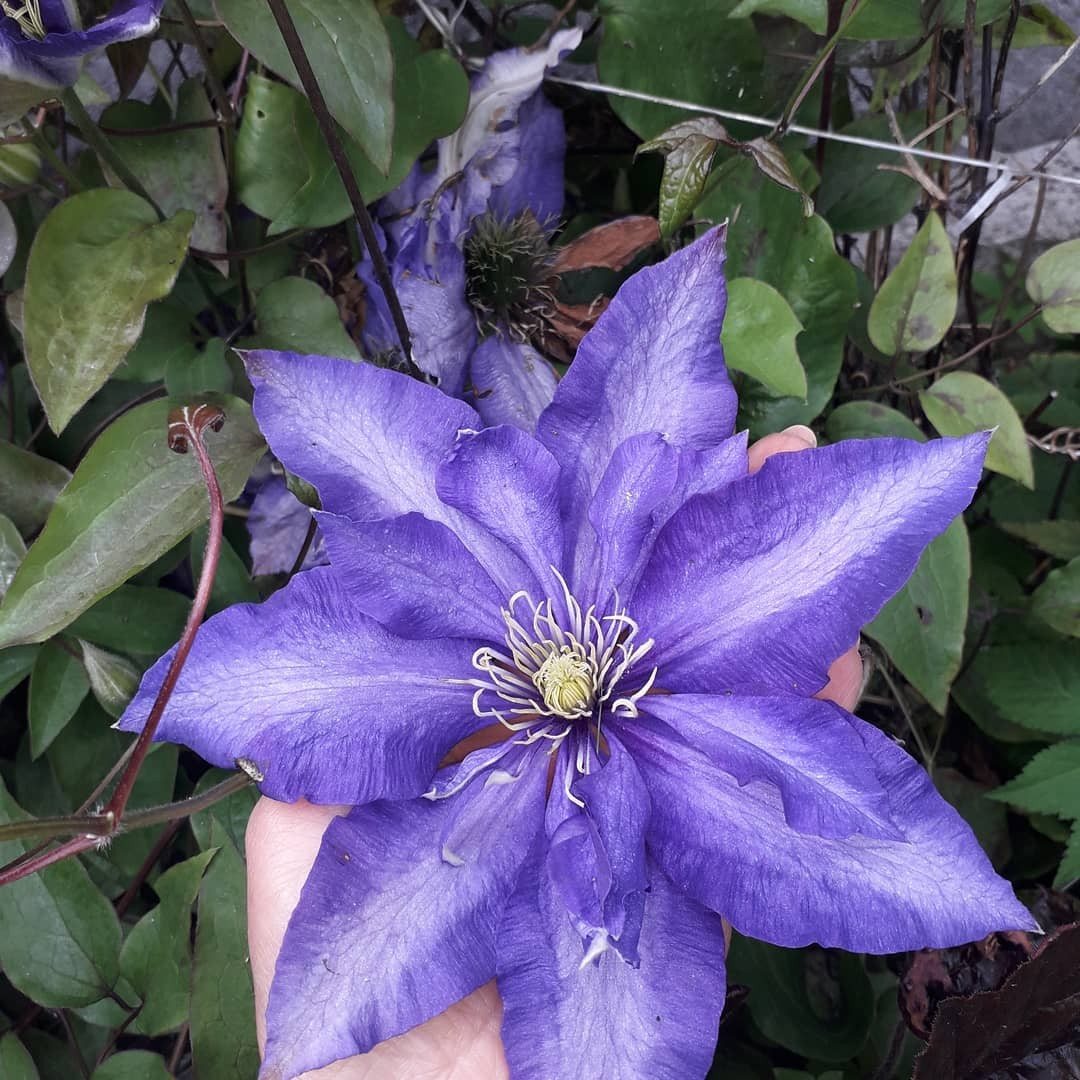
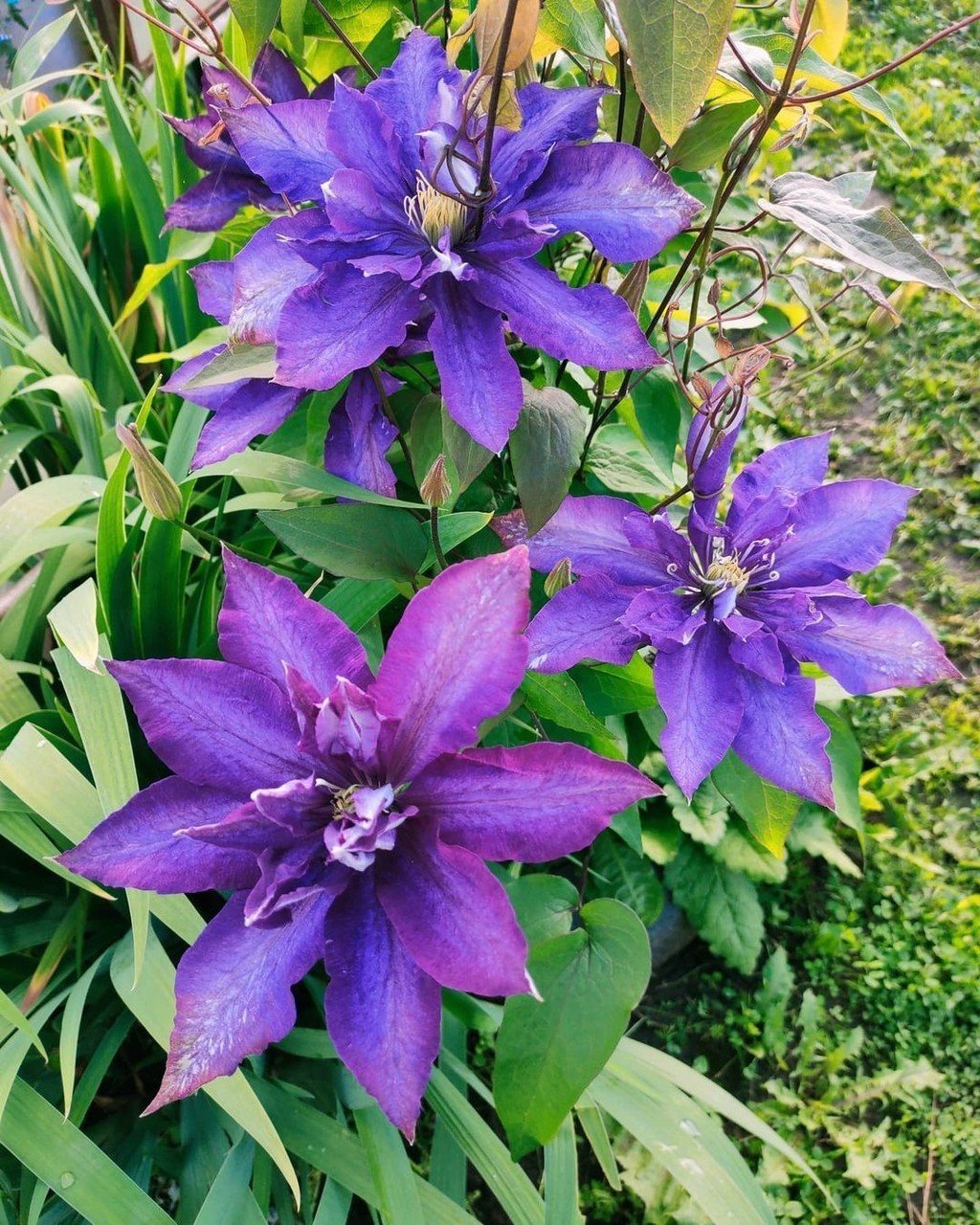



Large-flowered variety of the Patens group.
On last year's shoots, double and semi-double flowers are formed, which bloom in June. In August-September, simple 15-16 cm buds open from new stems. The petals are light lavender with a pale lemon longitudinal stripe.
The foliage is dense, dark green. The leaf blade is matte, complex trifoliate.
The frost-resistant bush is resistant to diseases and prolonged frosts.
Snow Stormy
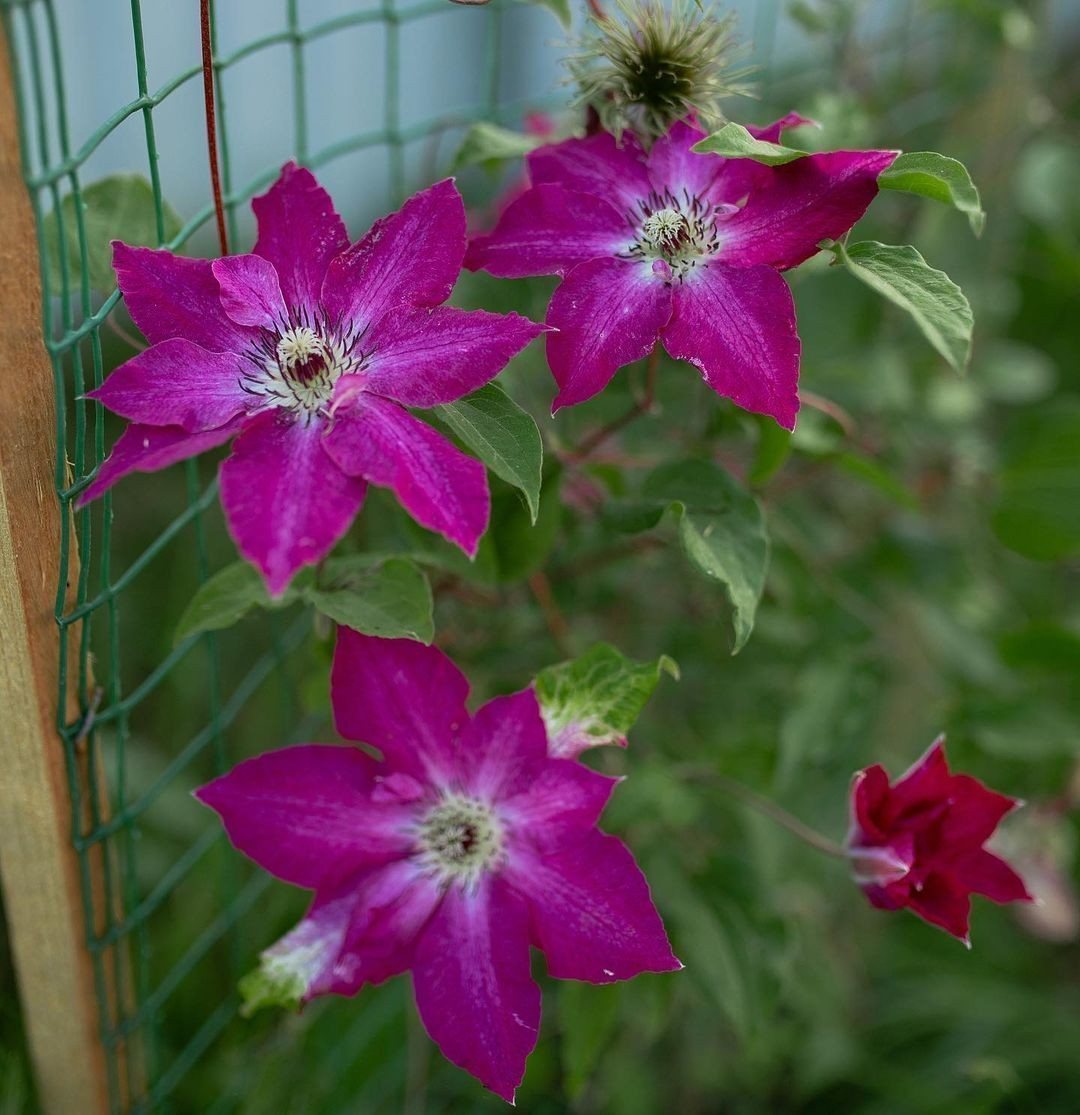
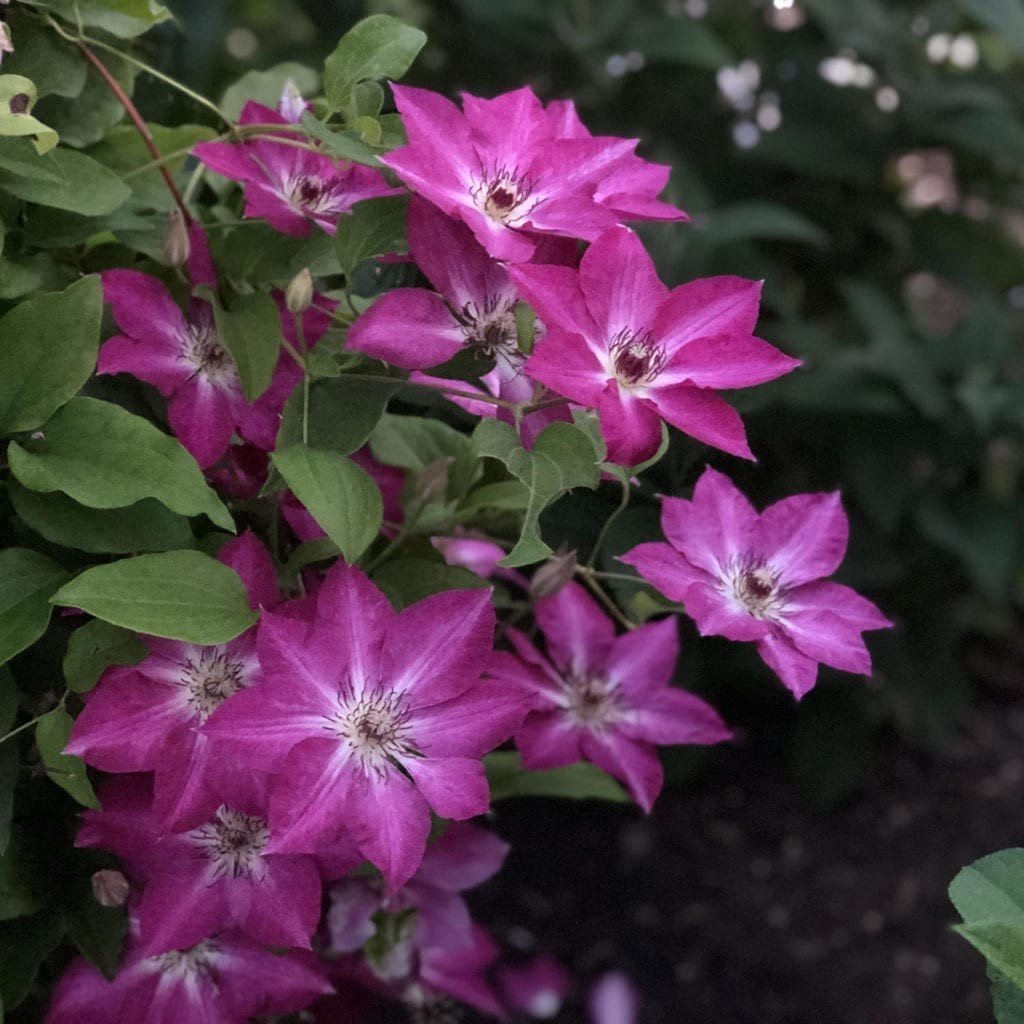
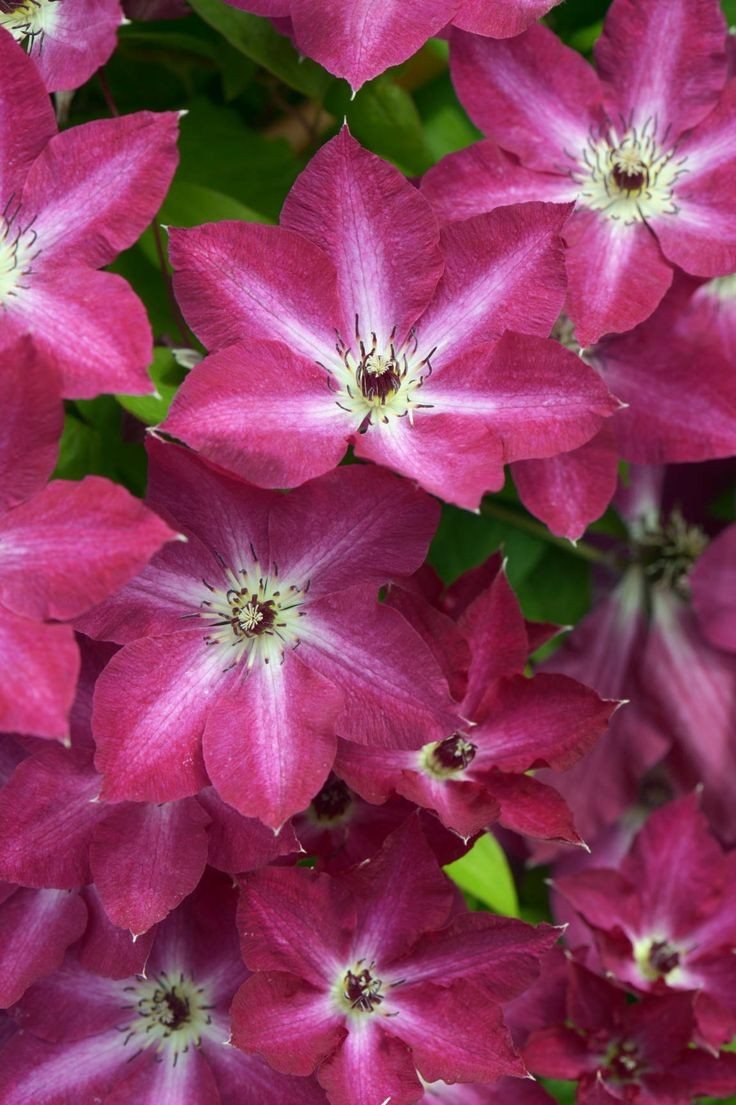



A large-flowered shrub from the Lanuginosa group grows up to 3 m in height. The first flowers bloom on young vines from the second decade of June until July inclusive. Buds from overwintered stems open less abundantly in September-October.
Sepals measuring up to 14 cm consist of 5-6 wavy milky-white petals with deep veins.
Westerplatte
The group is not defined (among gardeners it belongs to Jacquemin).
Height up to 3 m tall. Blooms twice per season. The first buds are 16 cm, growing on last year's shoots from the second ten days of May; in June there is a month-long break. The flowers of the second wave are smaller in number and size (bud diameter 10-12 cm). They open at the end of July and bloom until the first frost.

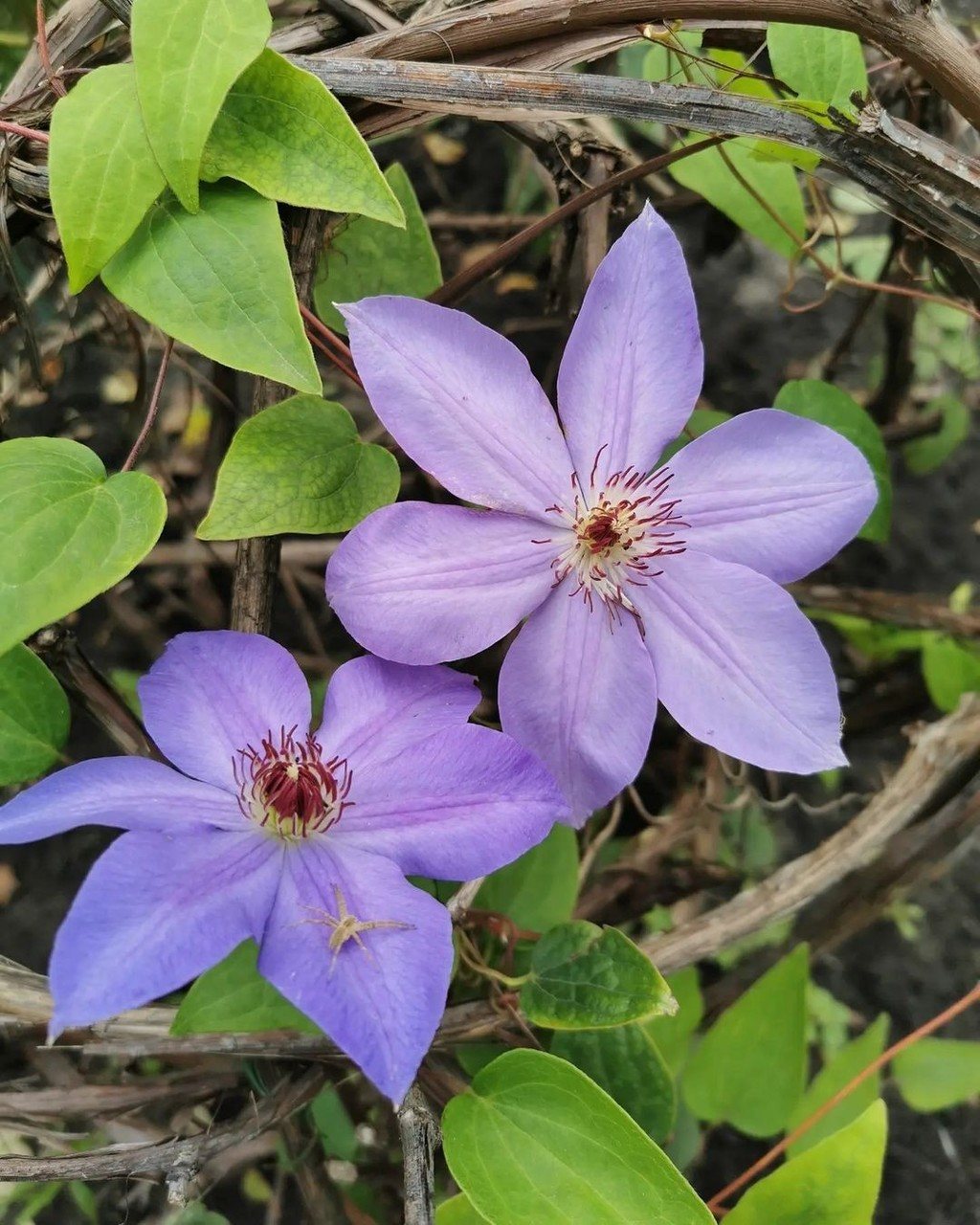
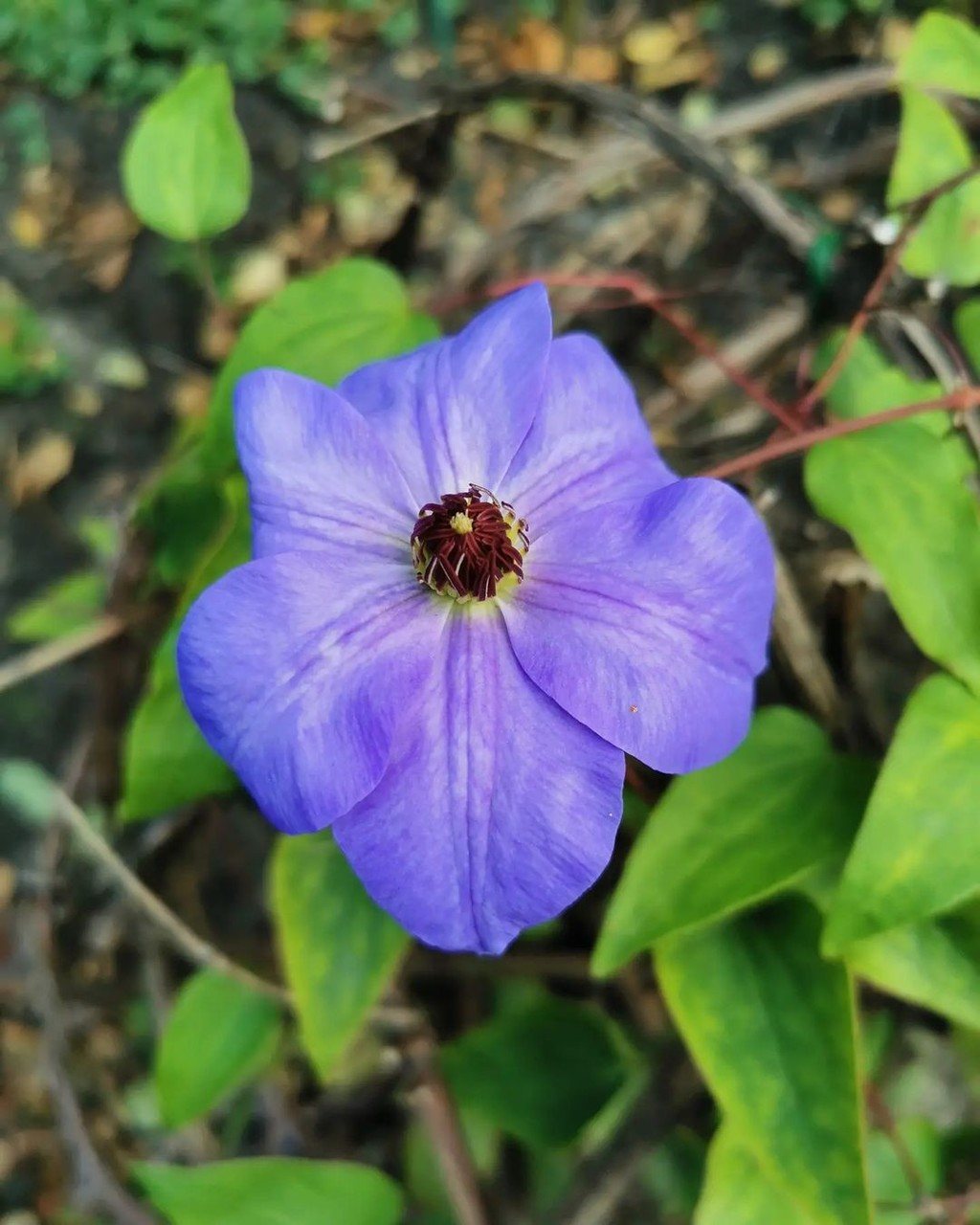



A sepal of 5-7 velvety petals of a deep red color.
The leaves are oval, obovate, compound trifoliate.
The shrub tolerates prolonged frosts. Resistant to pests and diseases.
Mazuri
Large-flowered variety, Patens group.
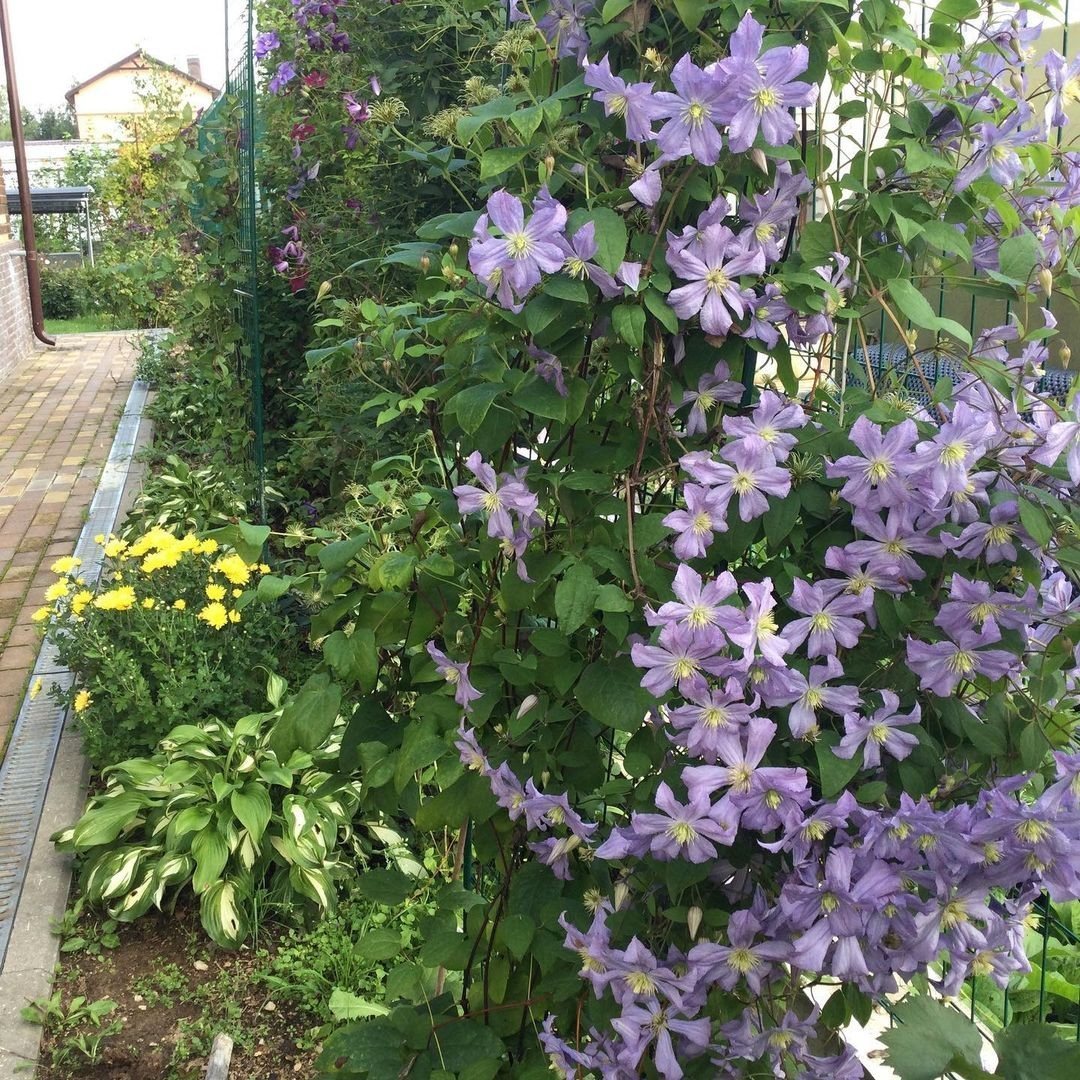
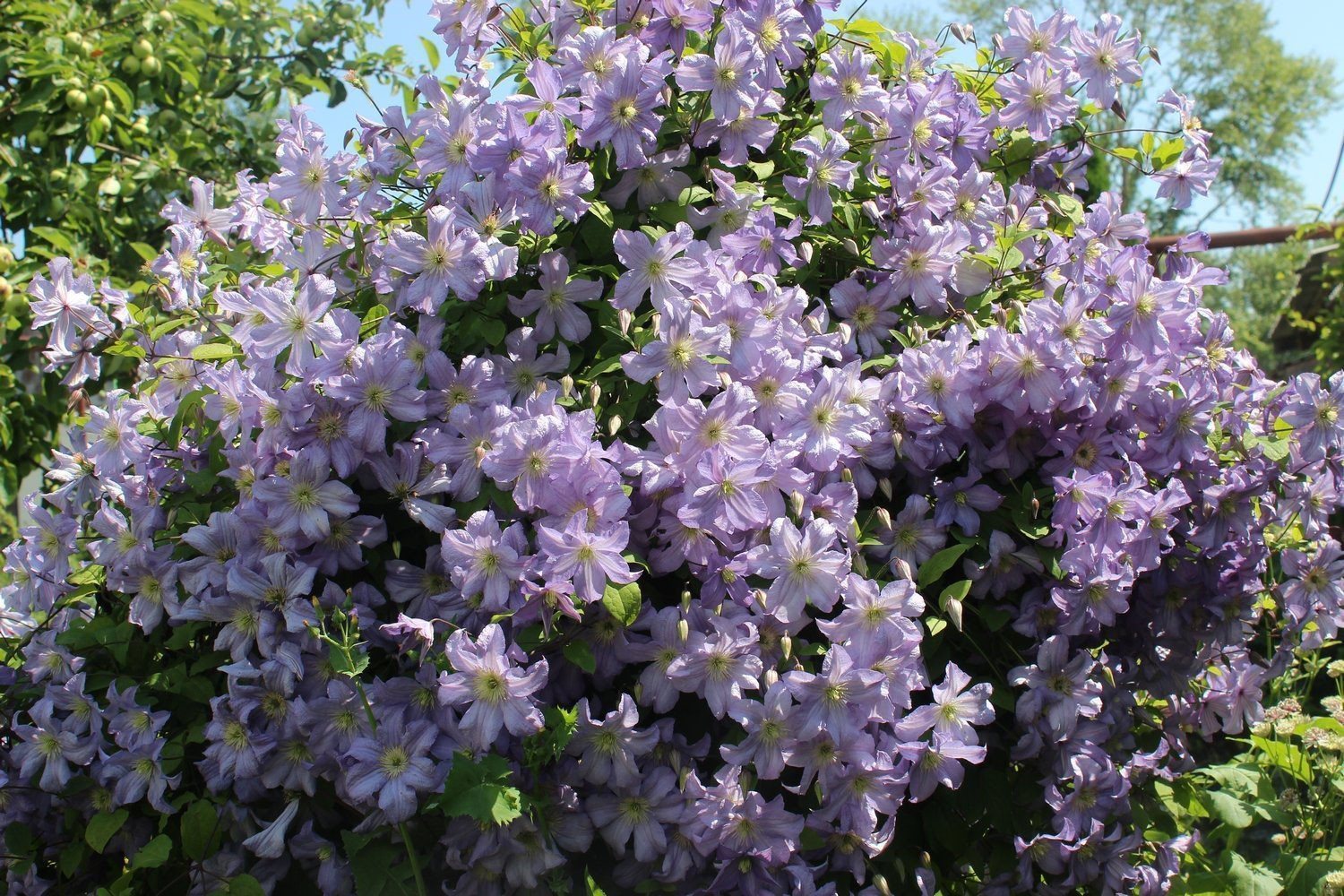
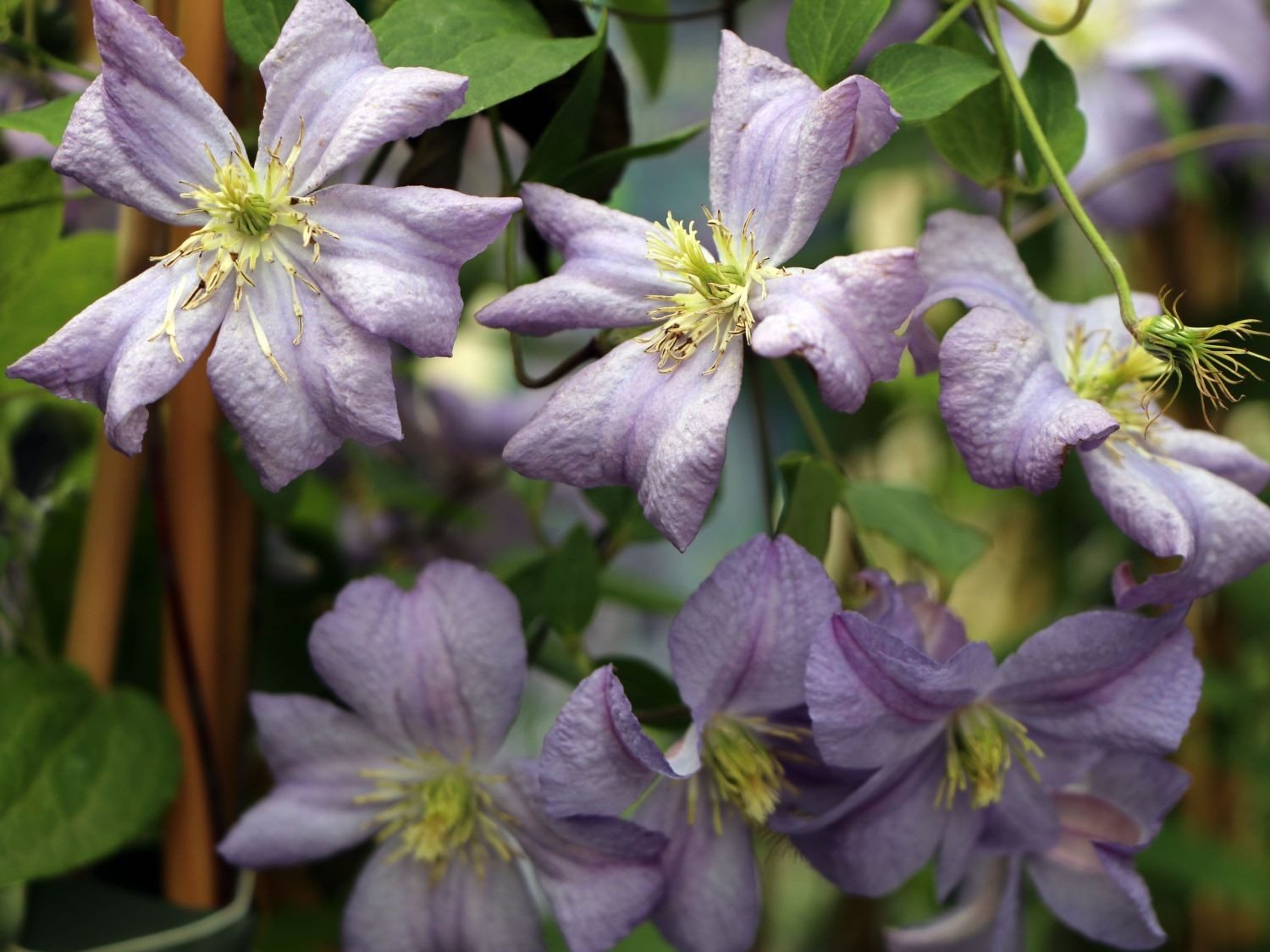



Double flowers appear on last year's growths. The buds are spherical, petals up to 17 cm with a rich gray-blue color. Flowering begins from July to September without interruption.
The leaves are large, oval with a pointed end.
Mazuri grows on the sunny side, sheltered from the wind. He survives the frosts of the northern part of Russia under cover. At the end of the season, the stems grow up to 3 m.
Barbara Jacqueman
Large-flowered plant of the Jacquemman group.
The variety is short-growing (up to 1.5 m) and tall (up to 4 m). Flowers develop on young stems from May-June to September inclusive (in the middle zone until early autumn).
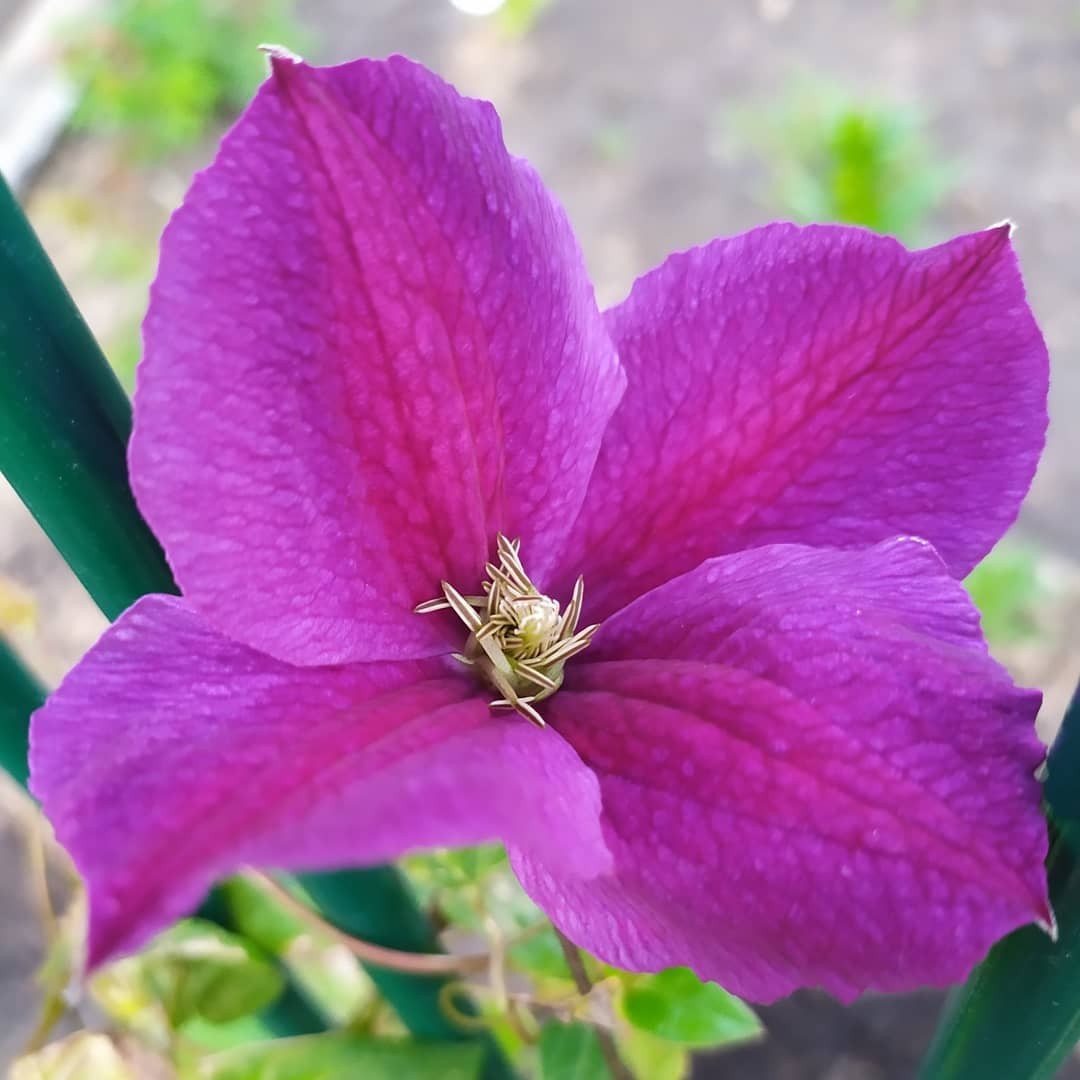
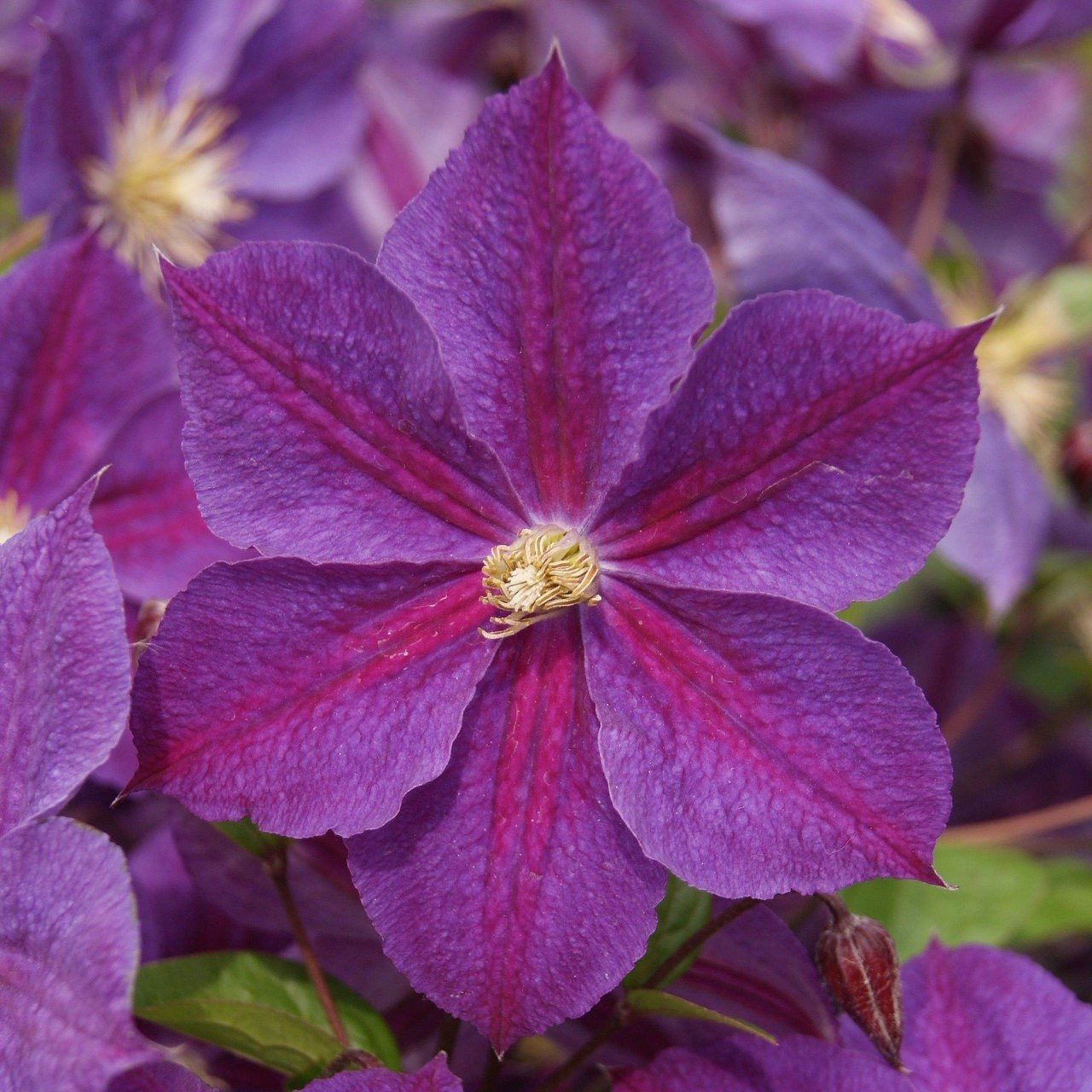
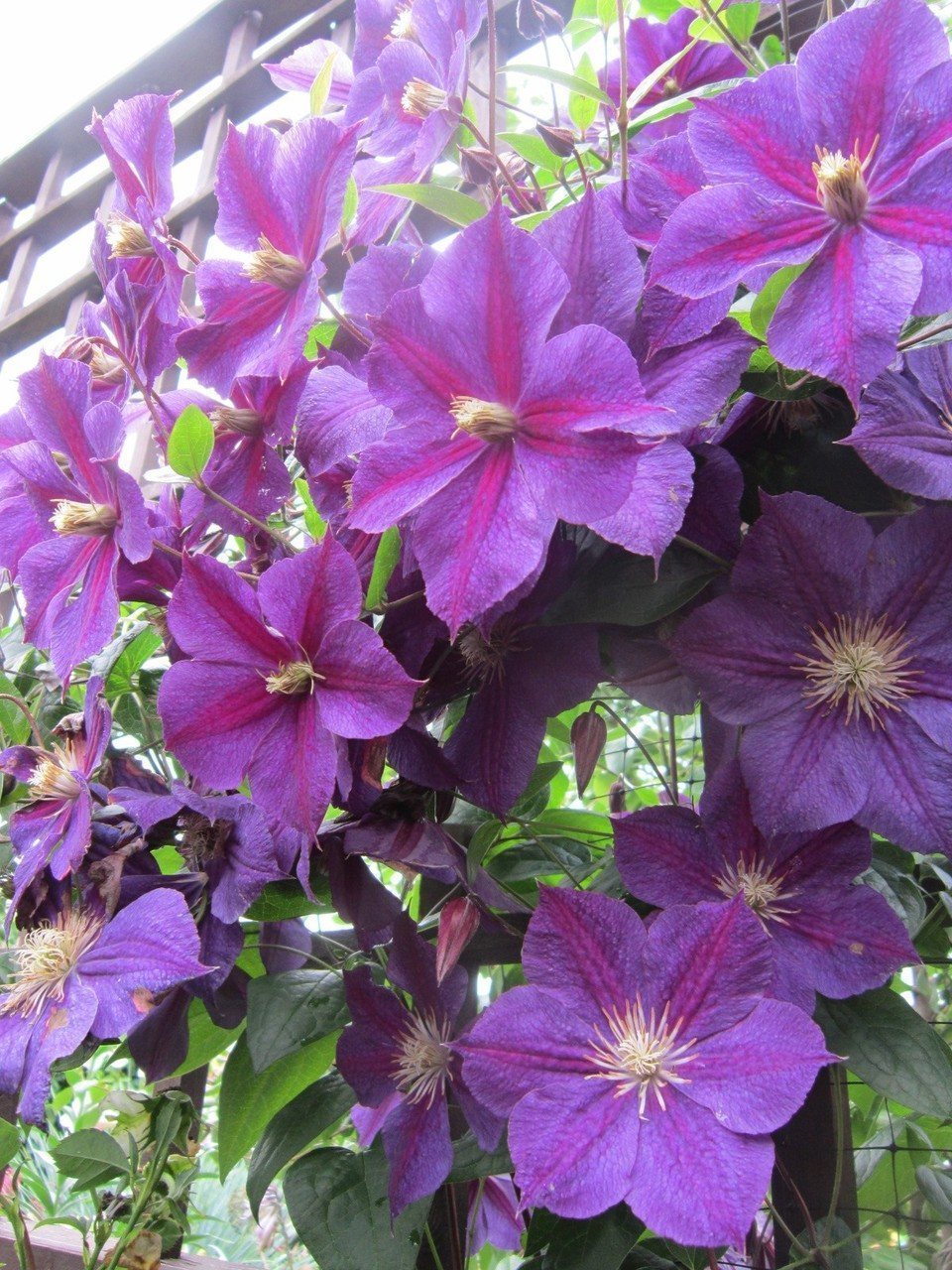



The buds are elongated-conical, varying from 15 to 20 cm in diameter. They consist of 4-7 ellipse-shaped petals with pointed ends directed upward.
There are bushes with purple, blue, or brighter shades.
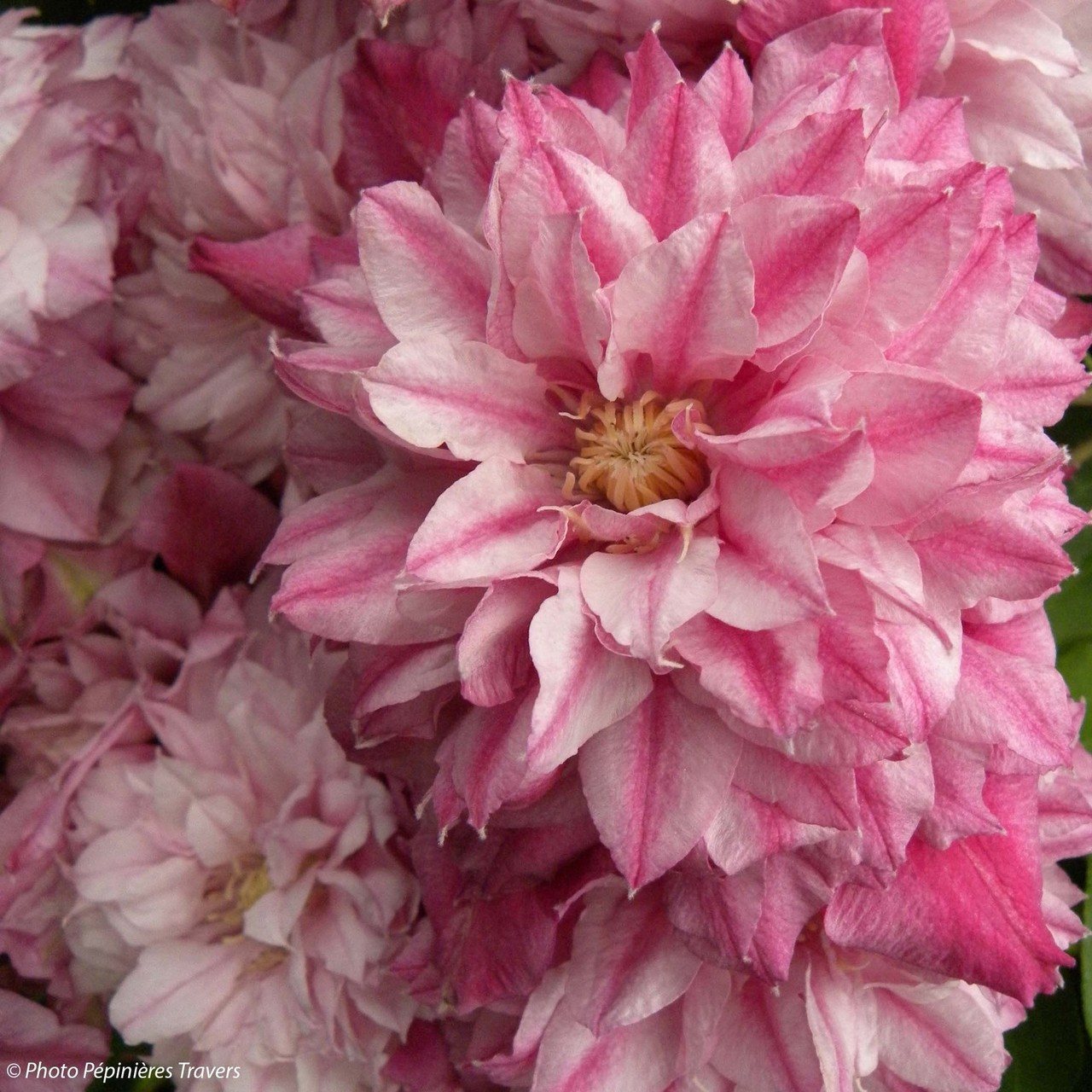
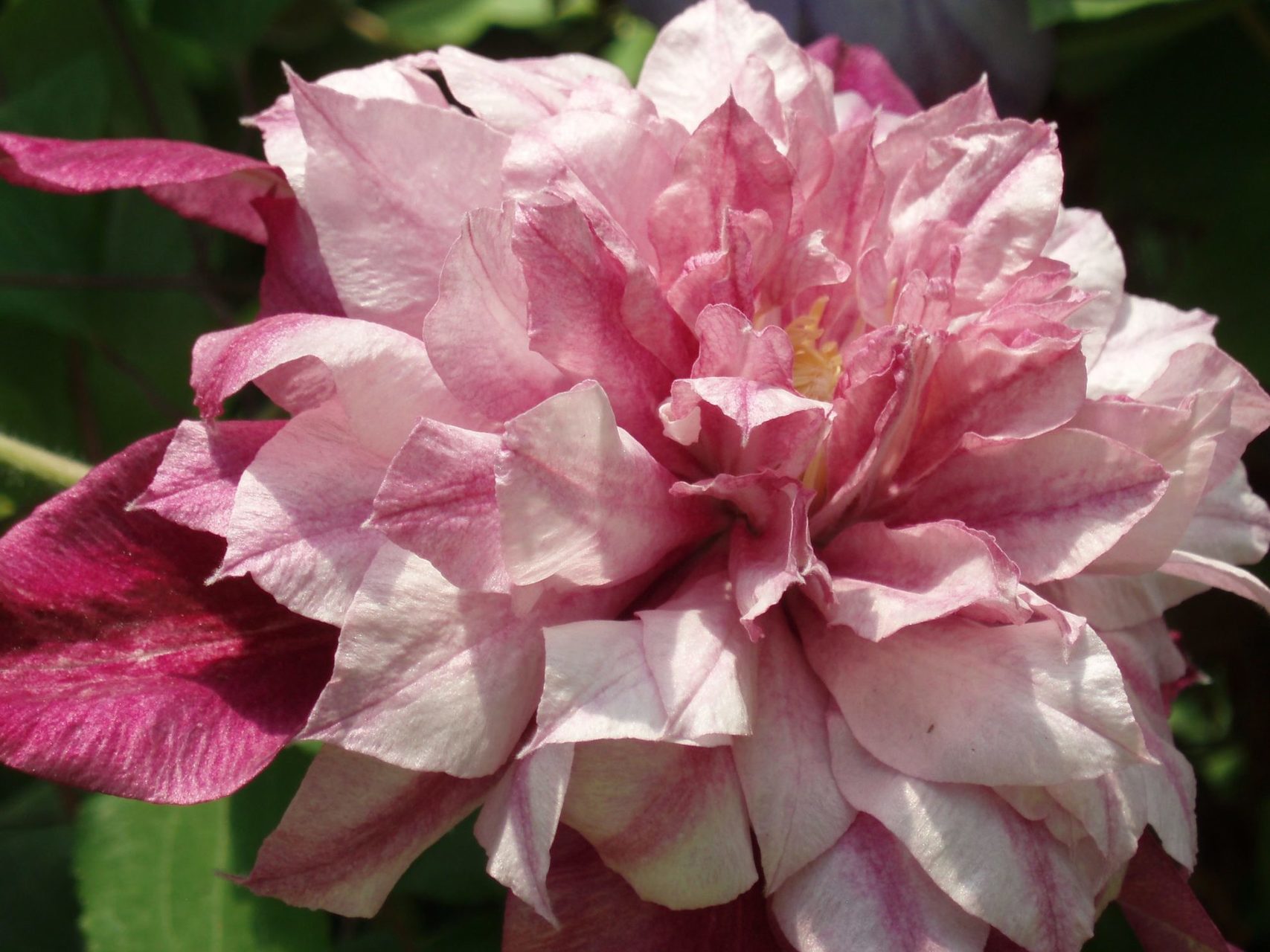
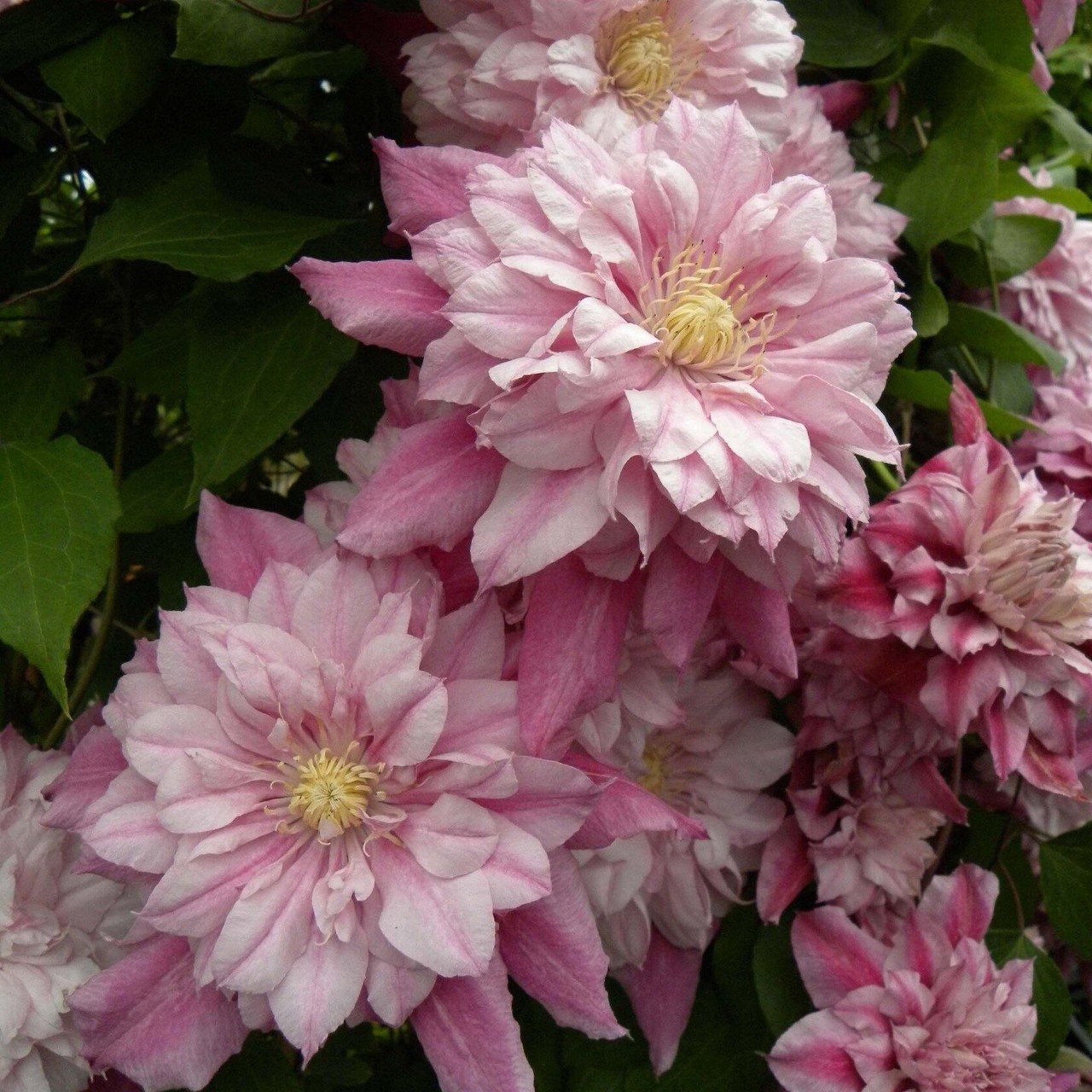



The leaves are bright green, sinewy, opposite.The edges are wavy with a red rim.
Plants have different effects on different diseases. Frost-resistant, tolerate drought and frost.
Beautyful Bride
Large-flowered species, Patens group.
The shrub blooms in two stages. Large simple flowers up to 25 cm grow from last year's shoots from May to June. At the end of August, the variety bears buds from young shoots up to 16 cm. Star-shaped sepals contain 4-6 white wide-oval petals with pointed edges. The leaves are bright green, opposite, ovate.
The frost-resistant variety can withstand up to -30 °C without shelter.
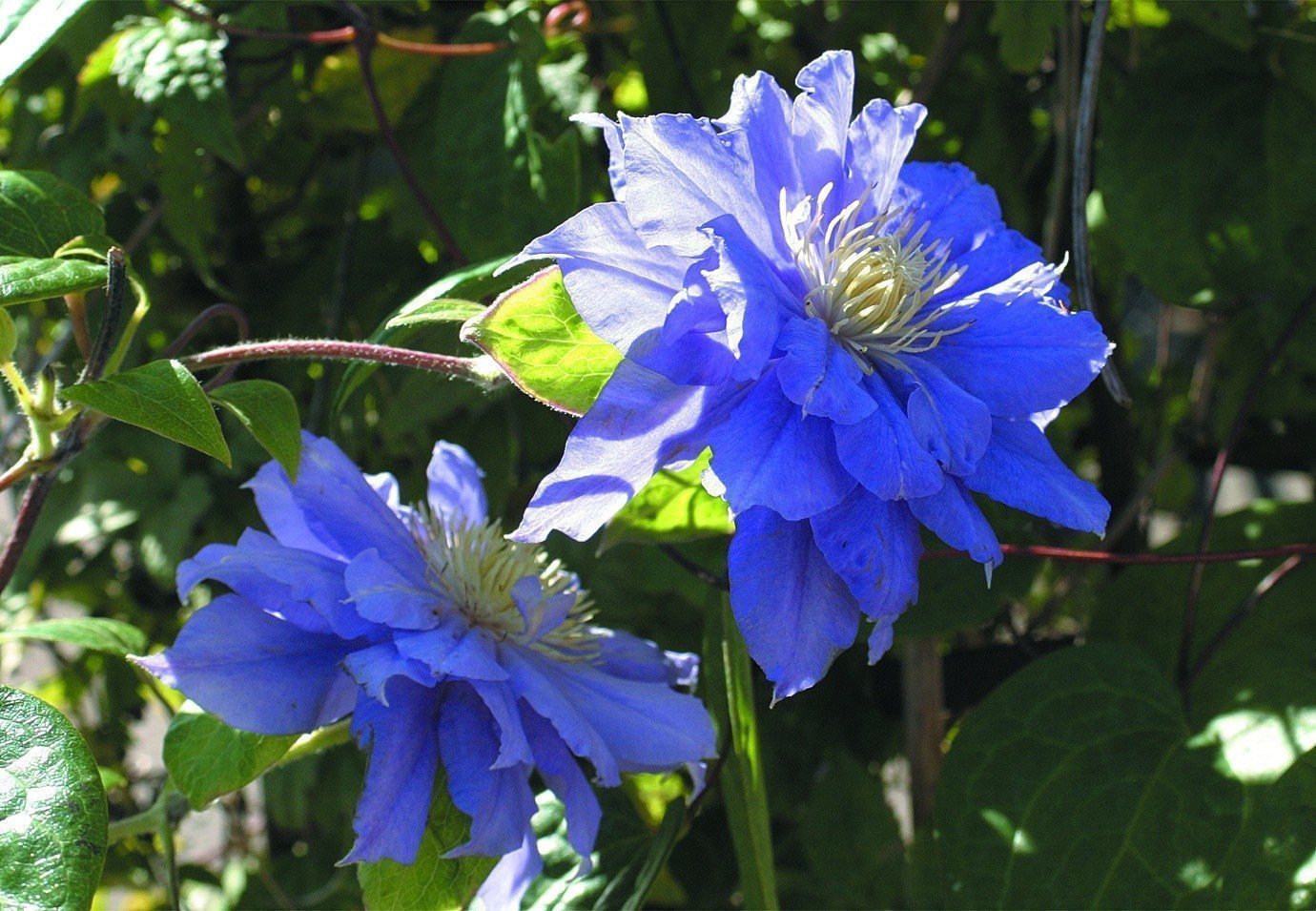
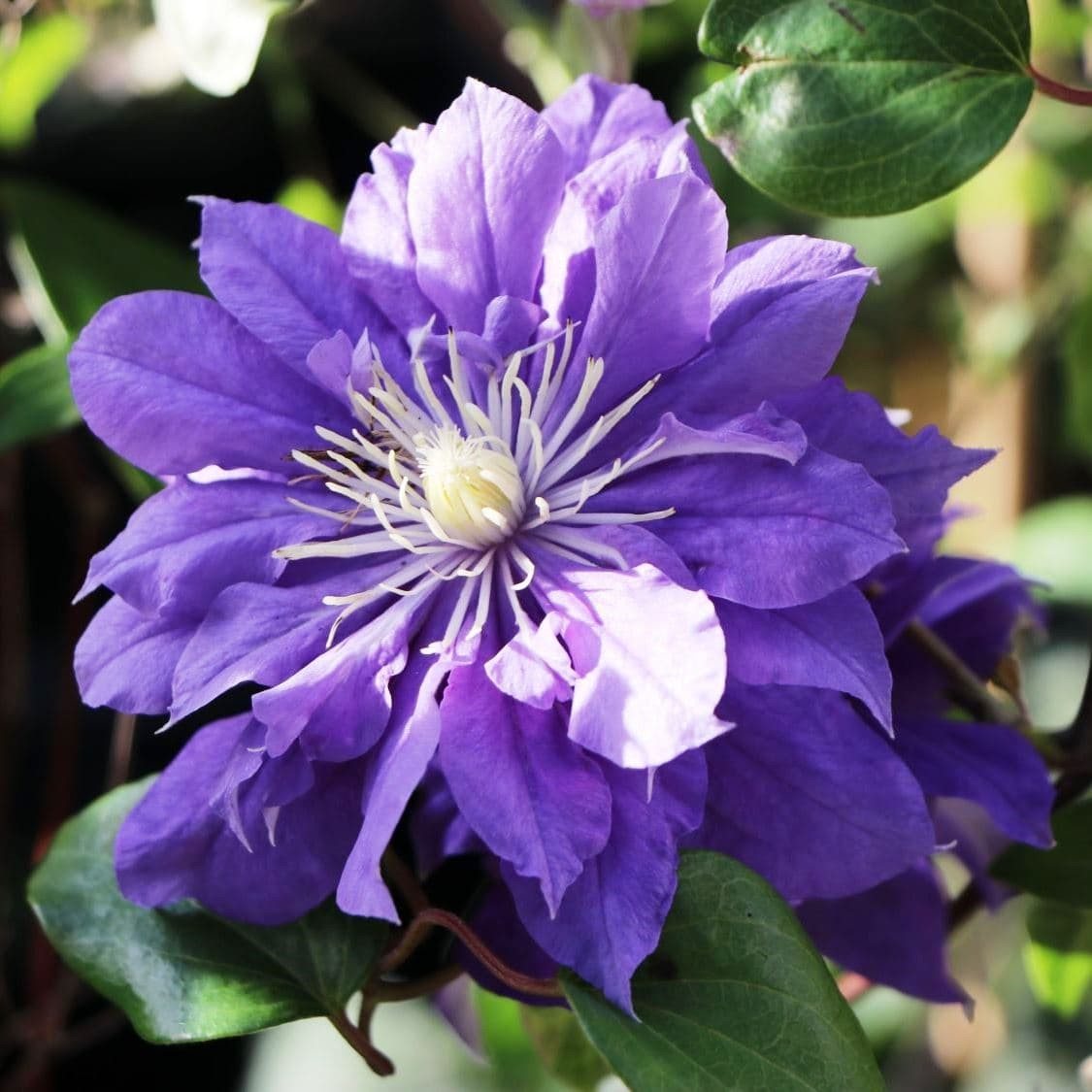
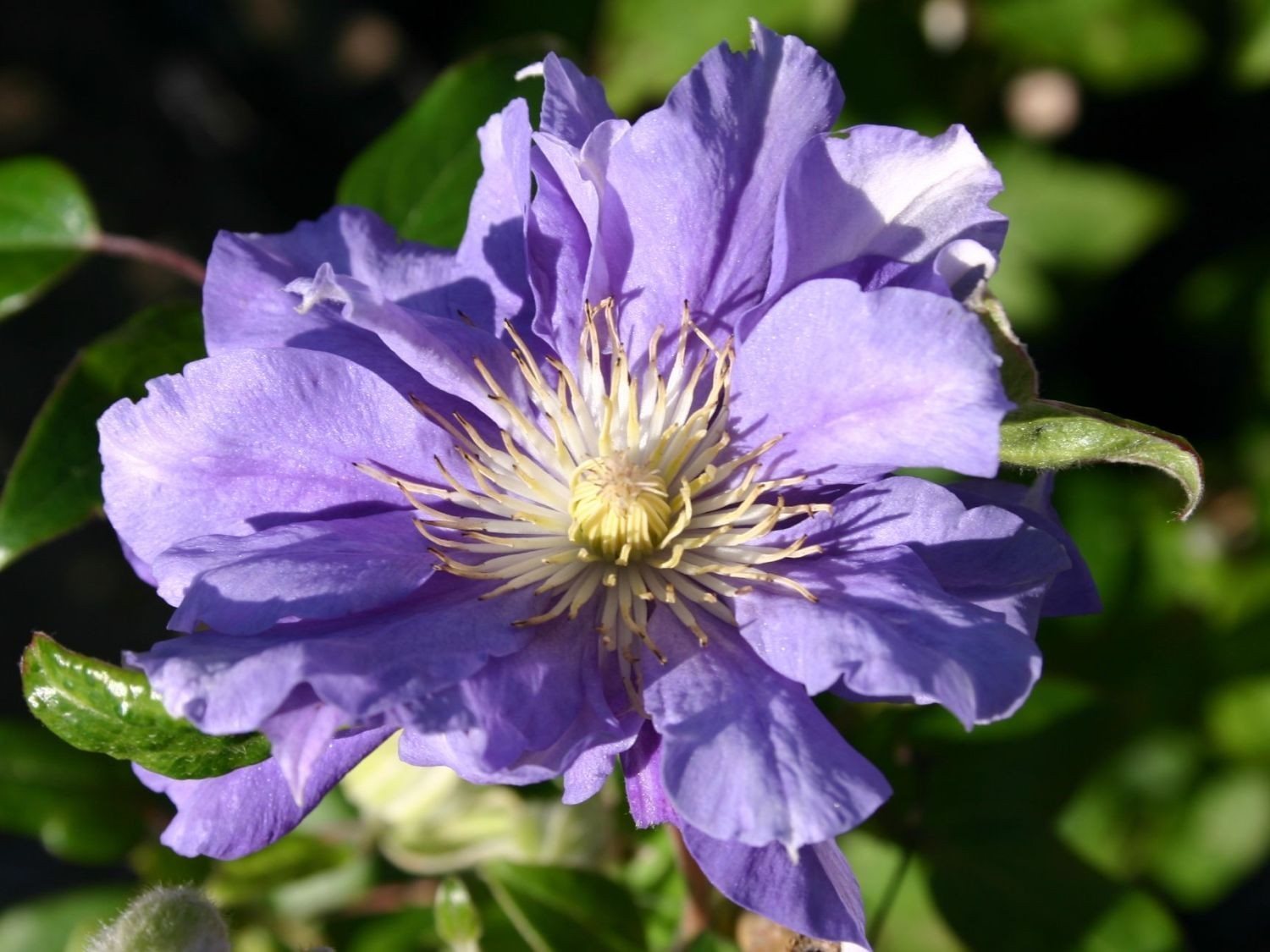



Daniel Deronda
Florida group, large-flowered species.
Liana-like stems grow up to 3 m. Large buds bloom on new and last year's shoots 2 times. Double or single flowers with 60 petals open from May to June on older stems.
The second wave has been forming since the beginning of September on old shoots. Simple inflorescences of 5 sepals have 8 pointed petals of a blue-violet tint, up to 23 cm in diameter.
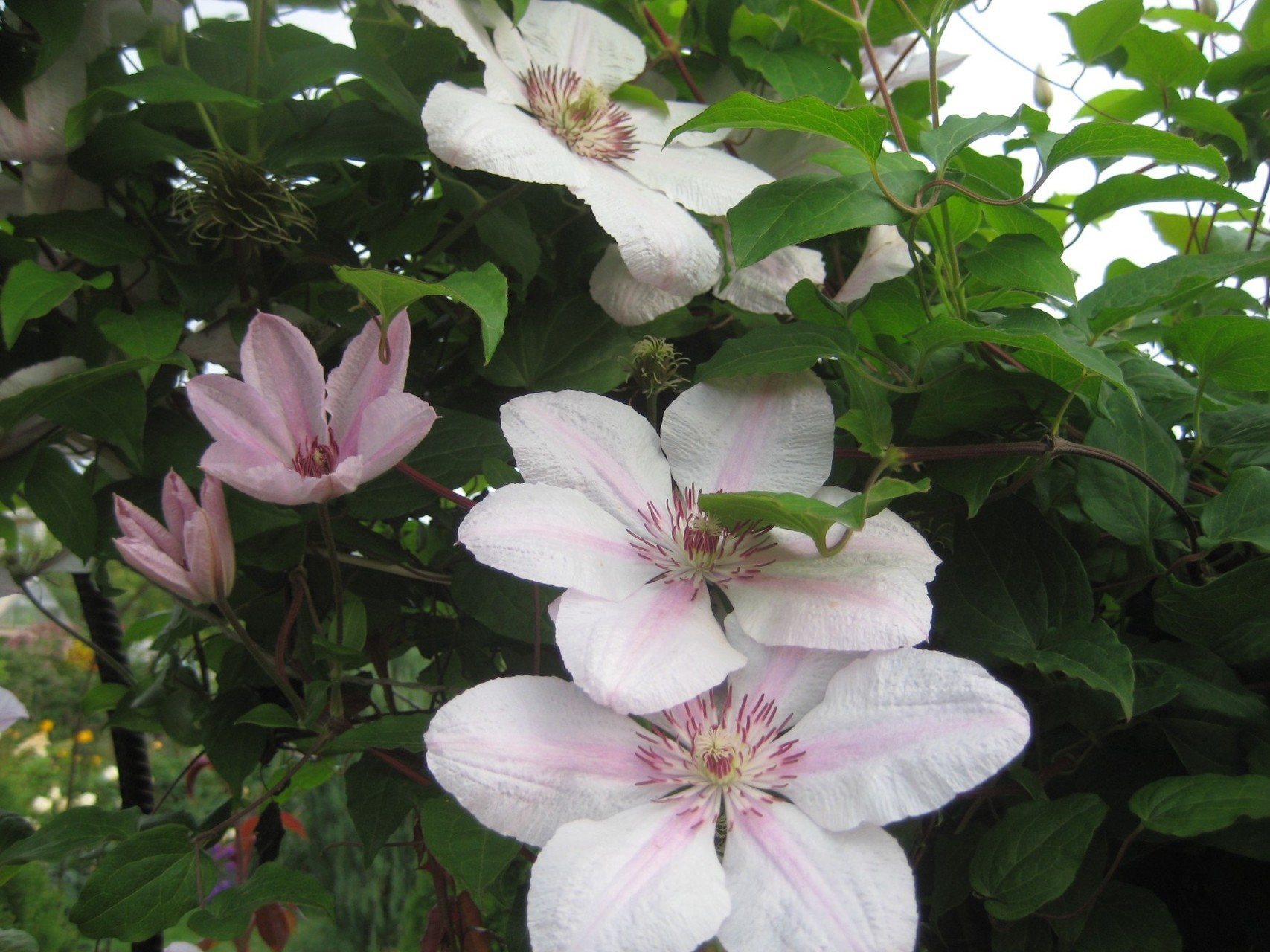
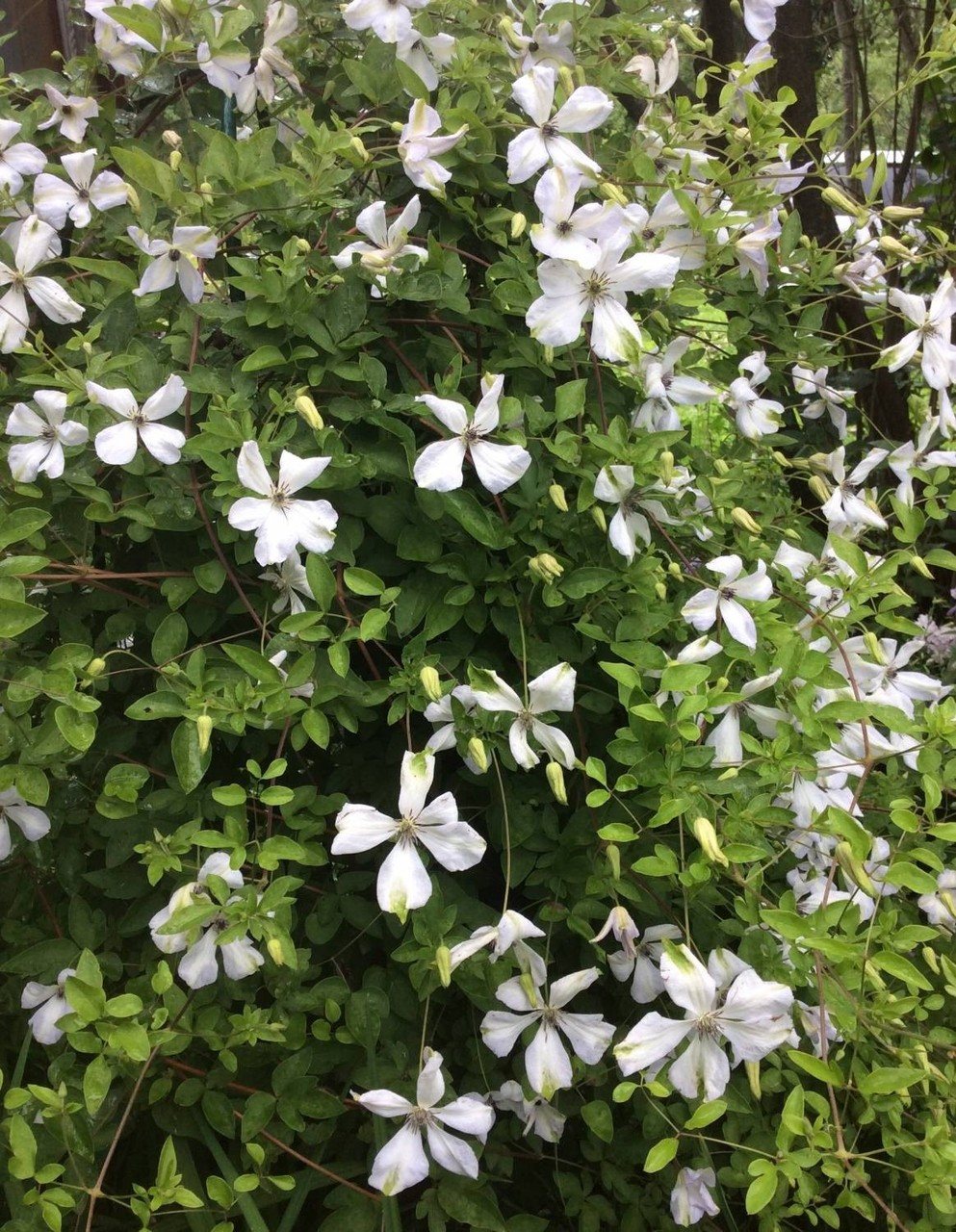
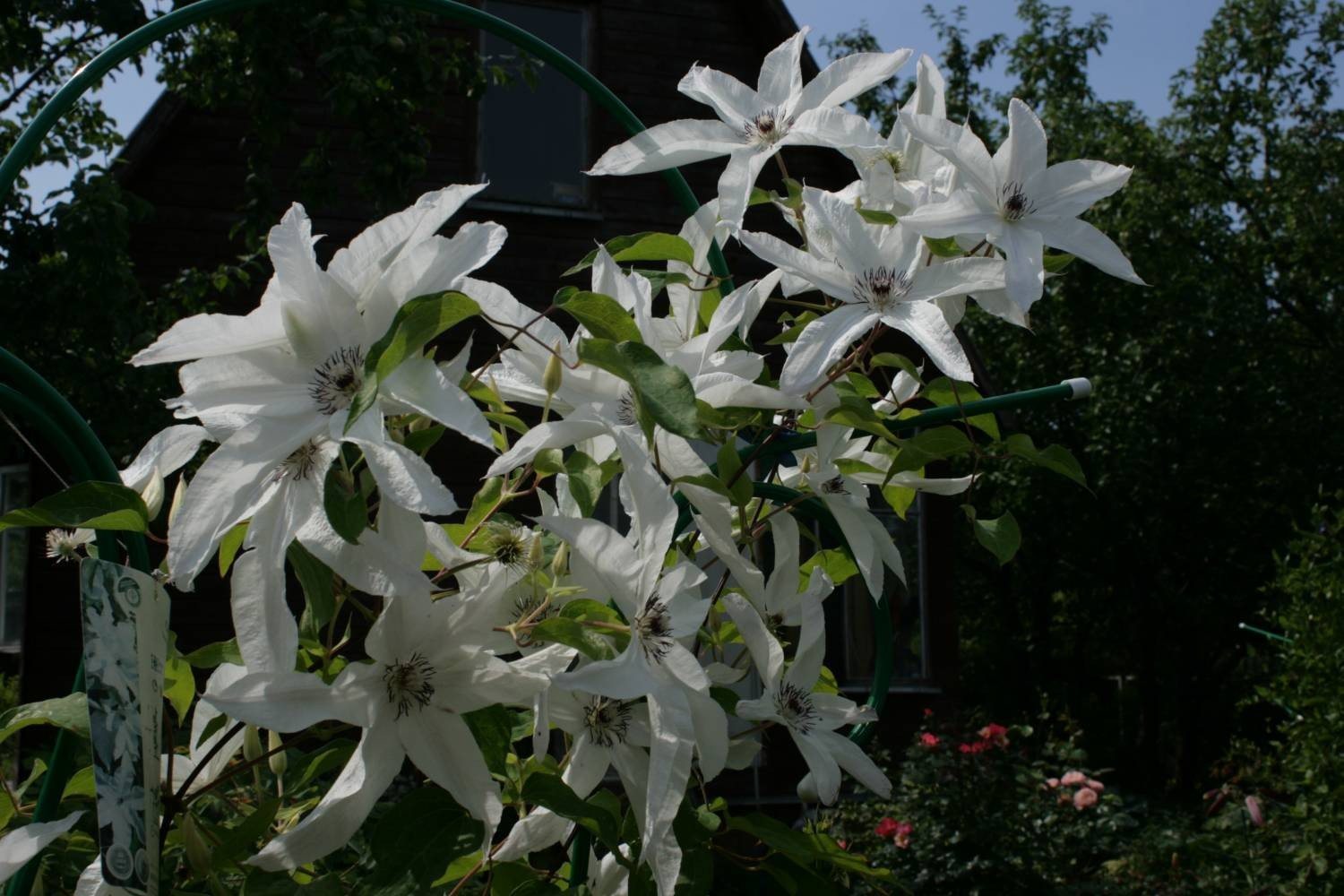
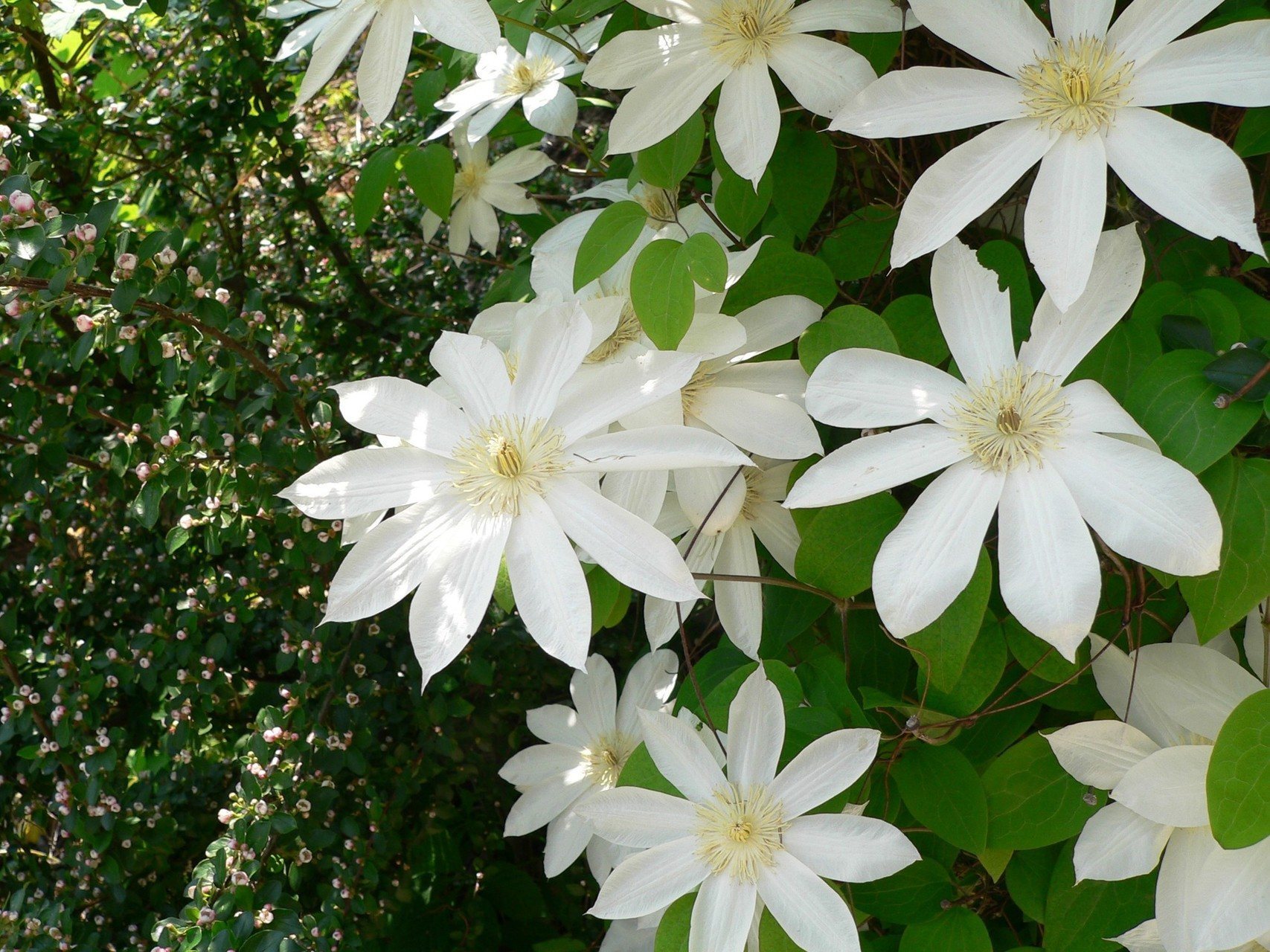
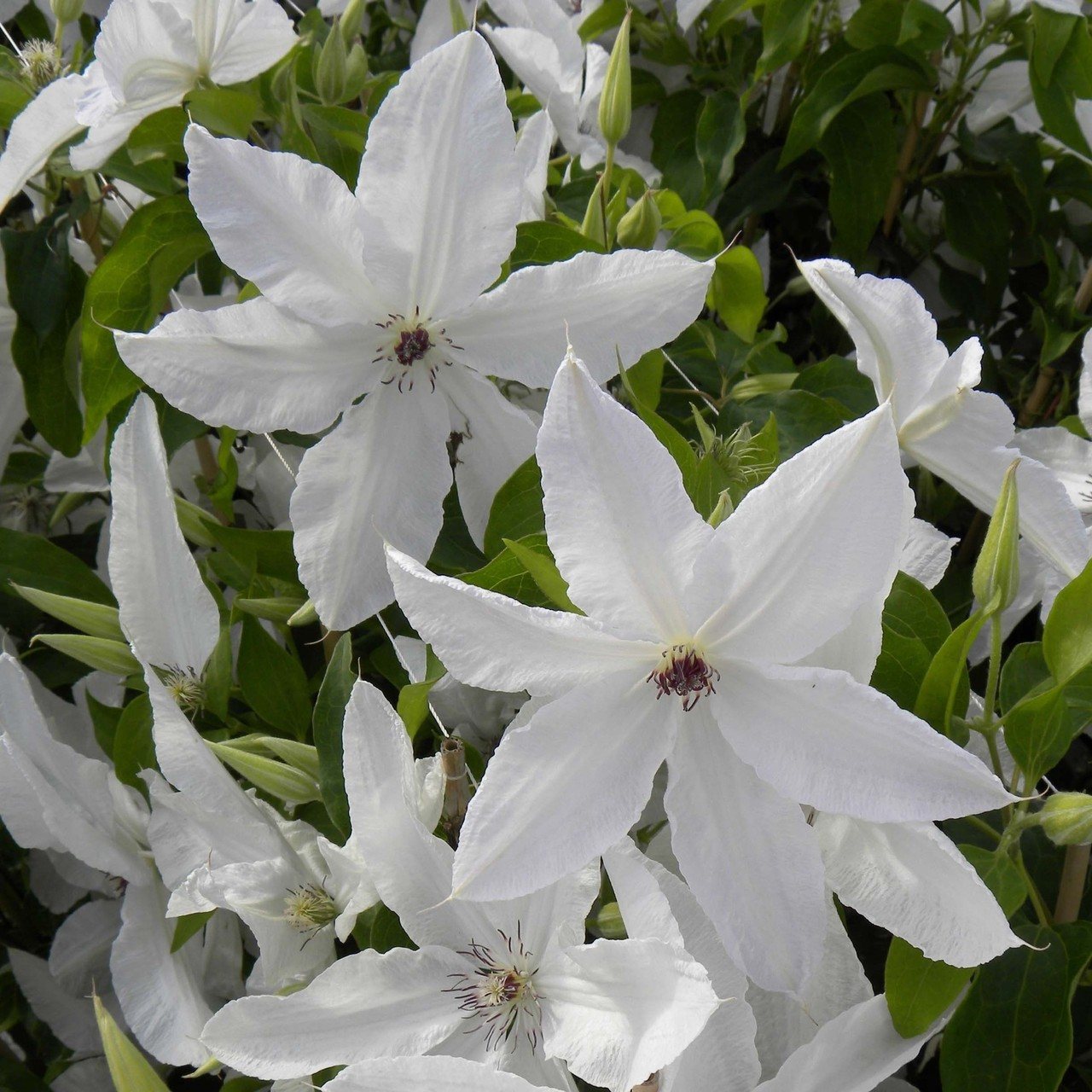





The leaves are trifoliate, sometimes simple, entire. The first foliage is emerald green, young leaves are bright, ovate with a pointed tip.
The variety actively resists fungal diseases and tolerates frosts in the middle zone.
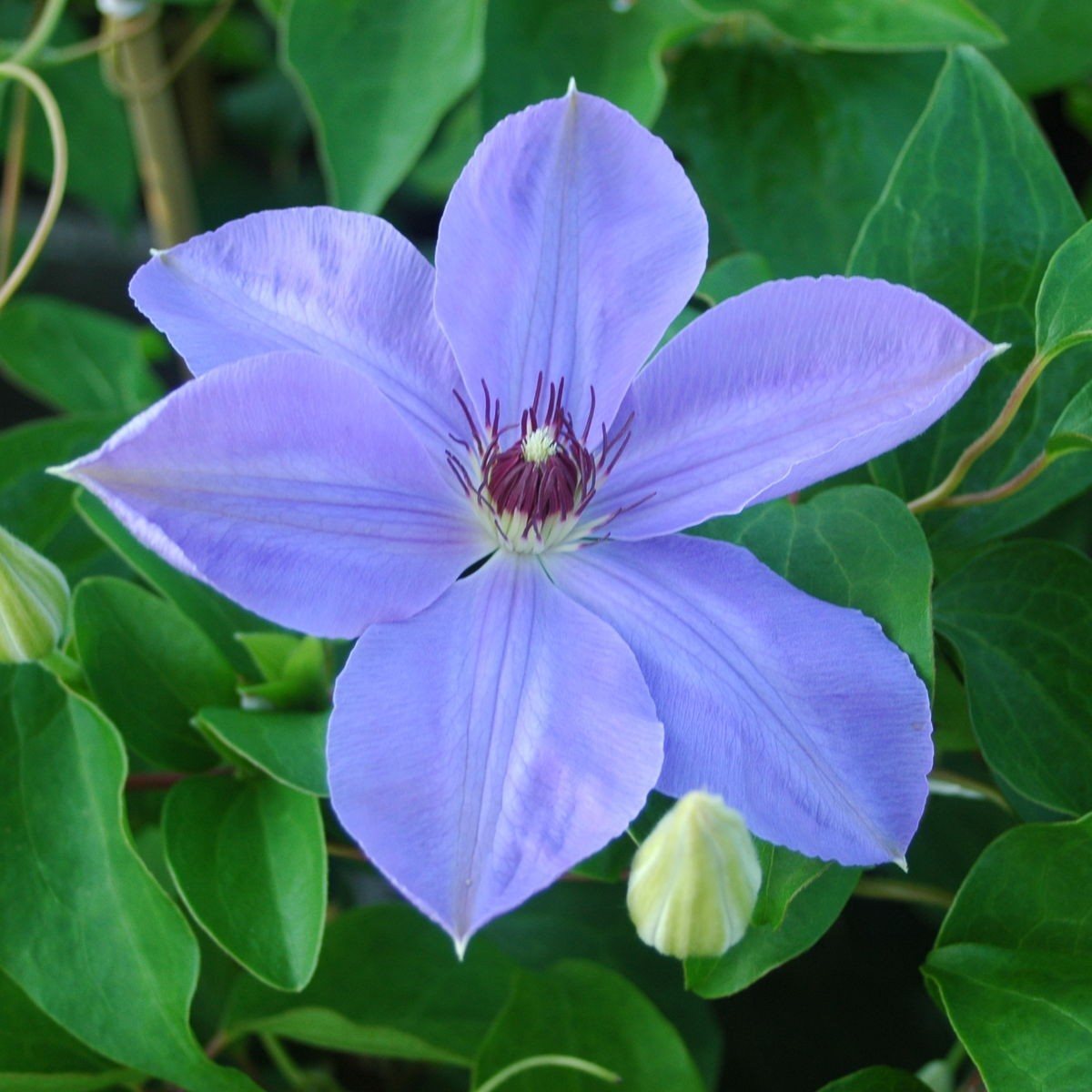
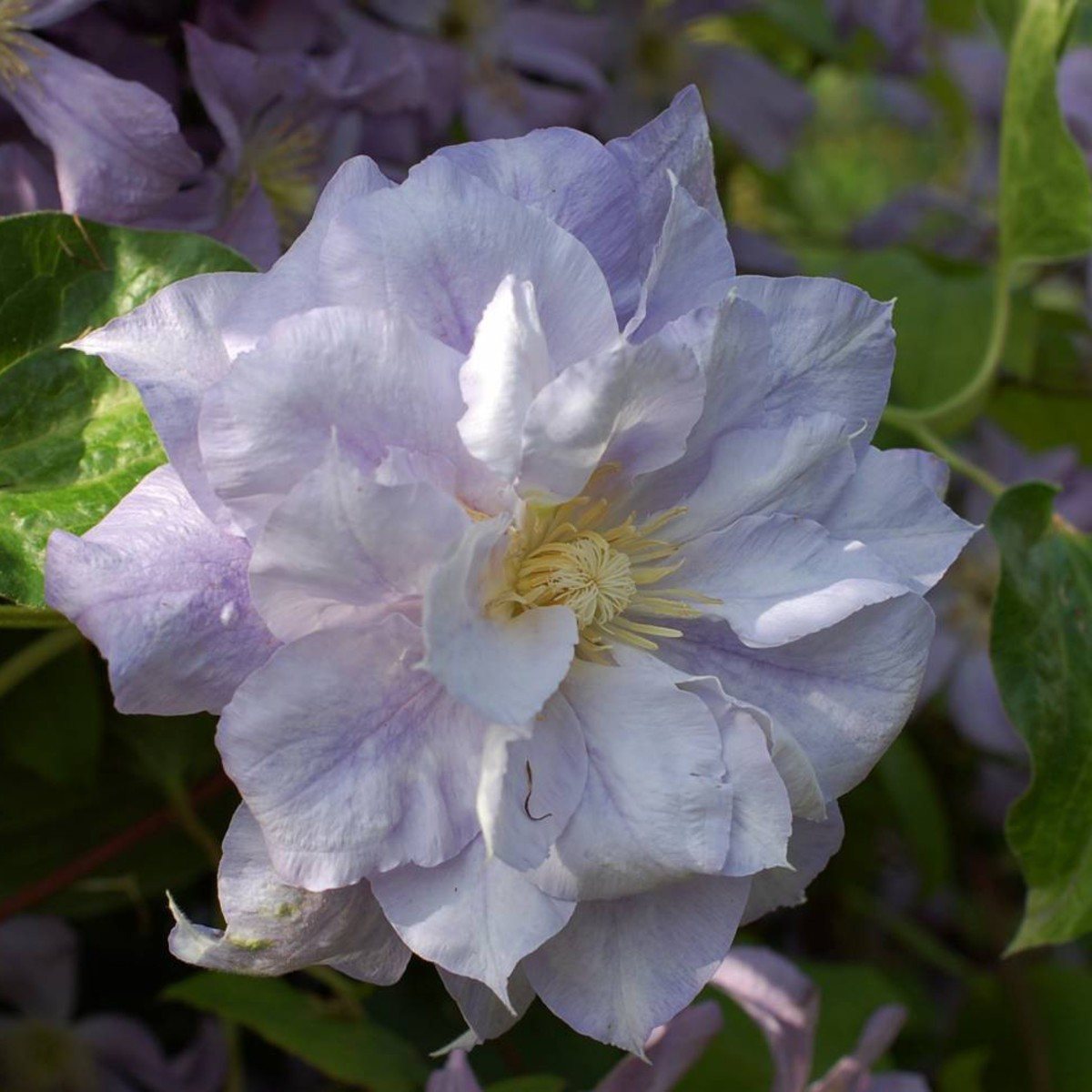
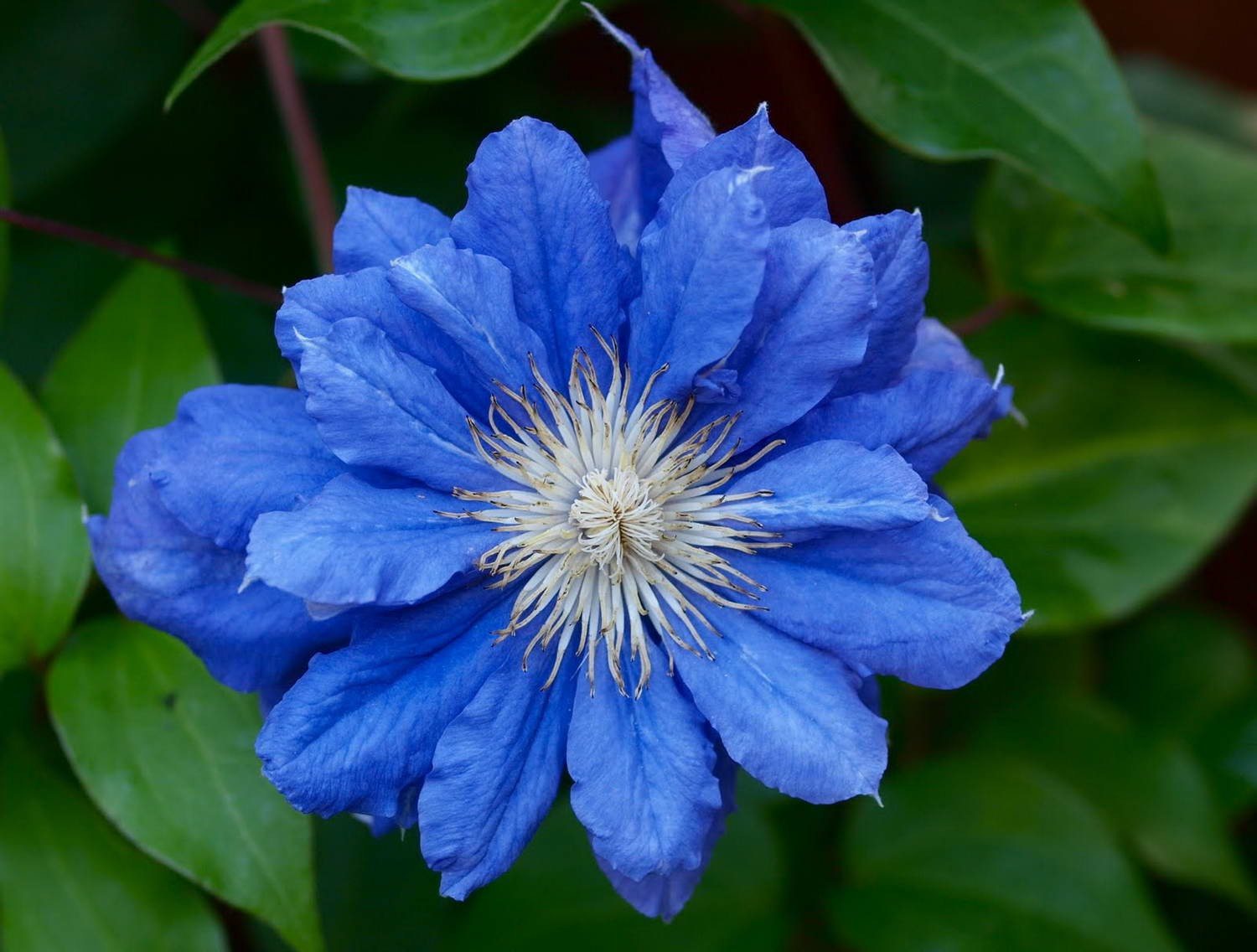
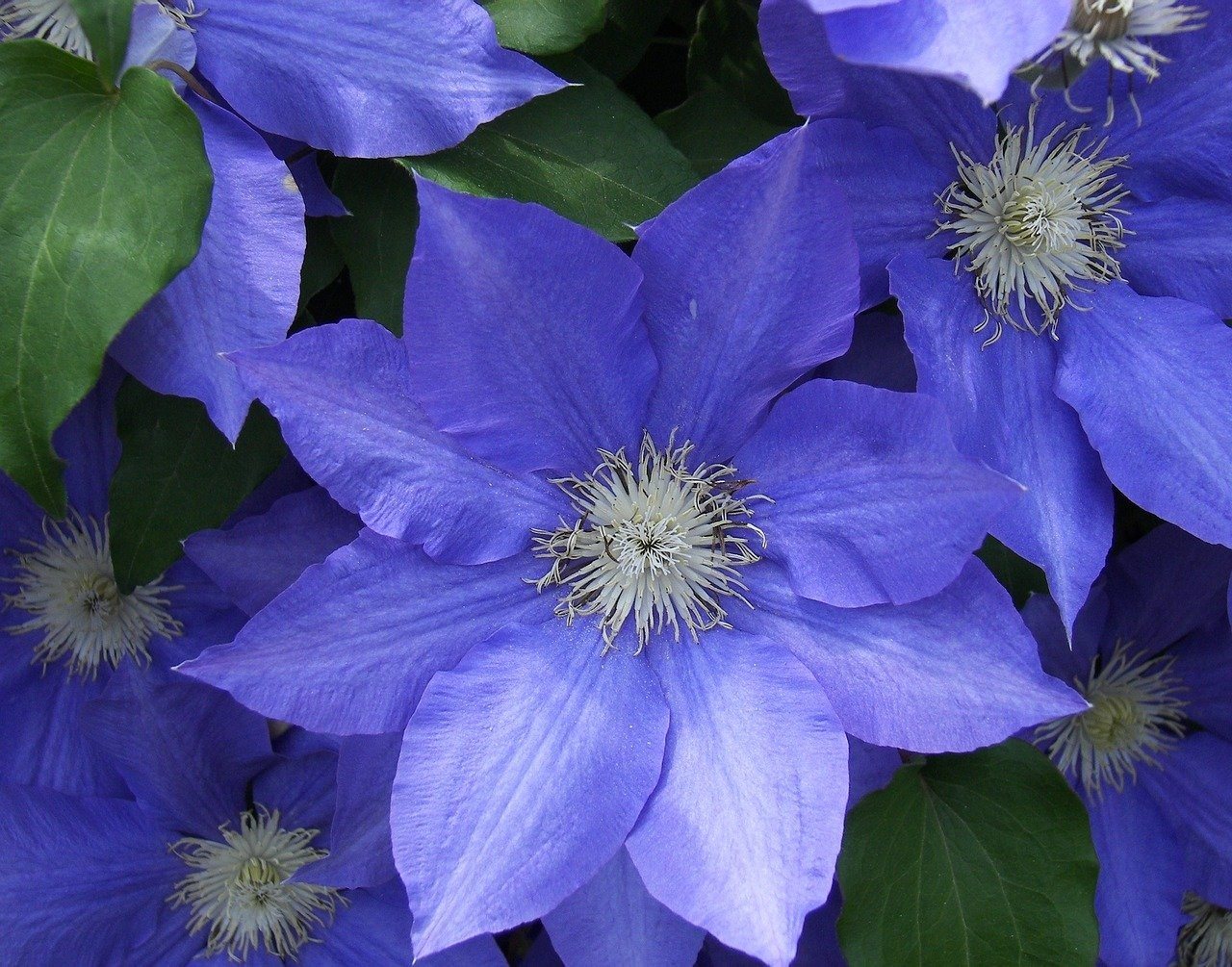
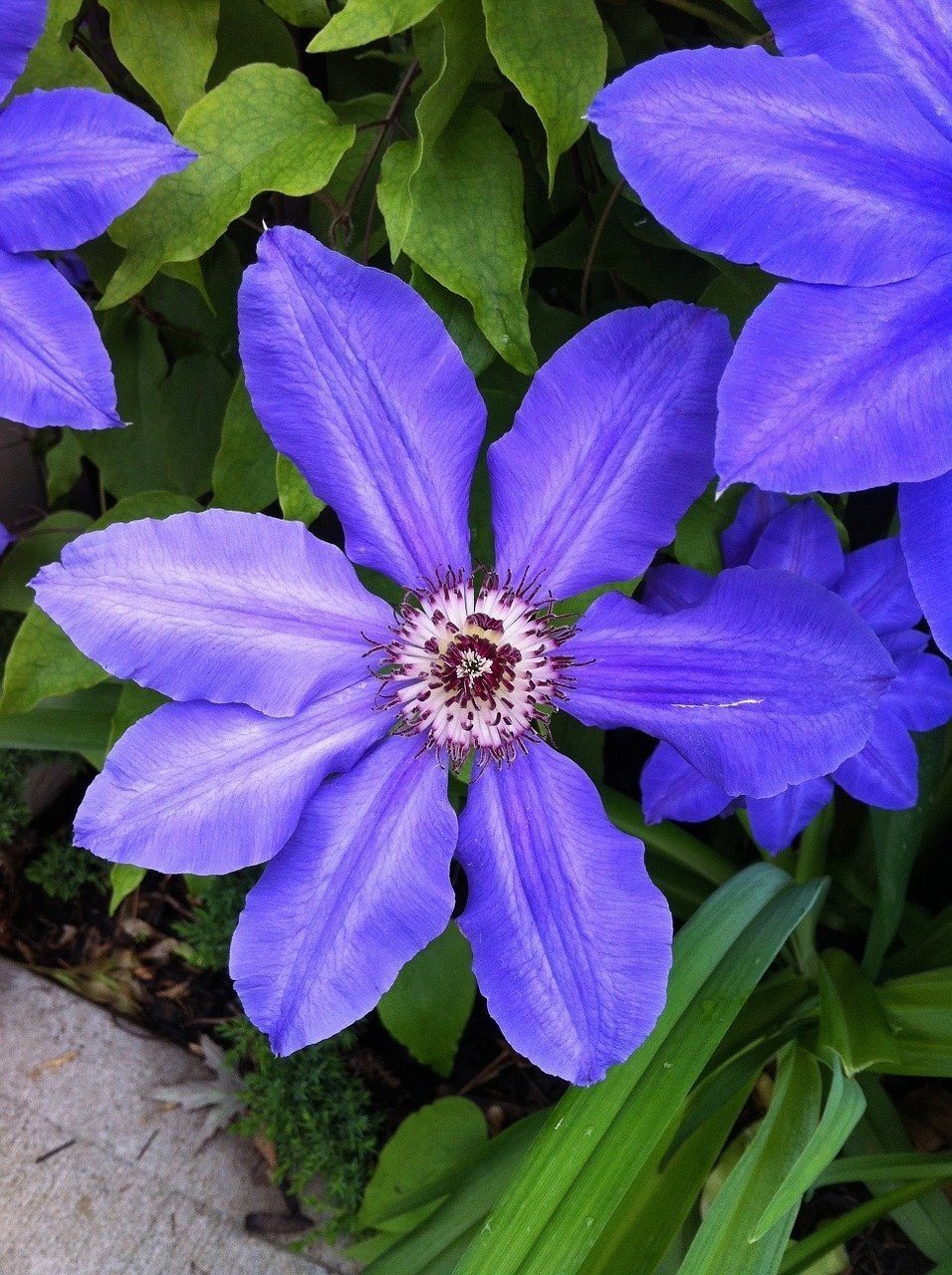





Viva Polonia
A plant from the Patens group grows up to 2 m. The buds bloom on last year's shoots in May-June, have 6-8 purple petals with a white center, 12-15 cm in diameter.
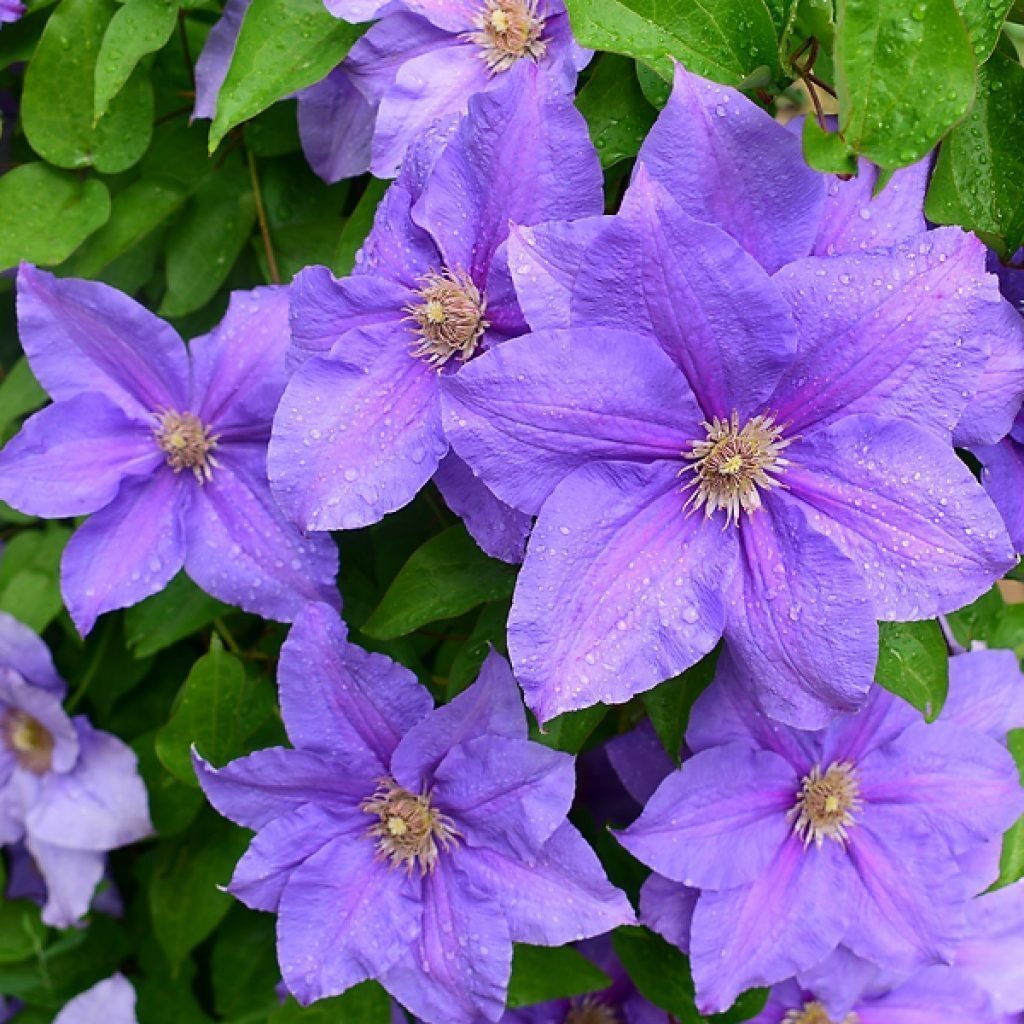
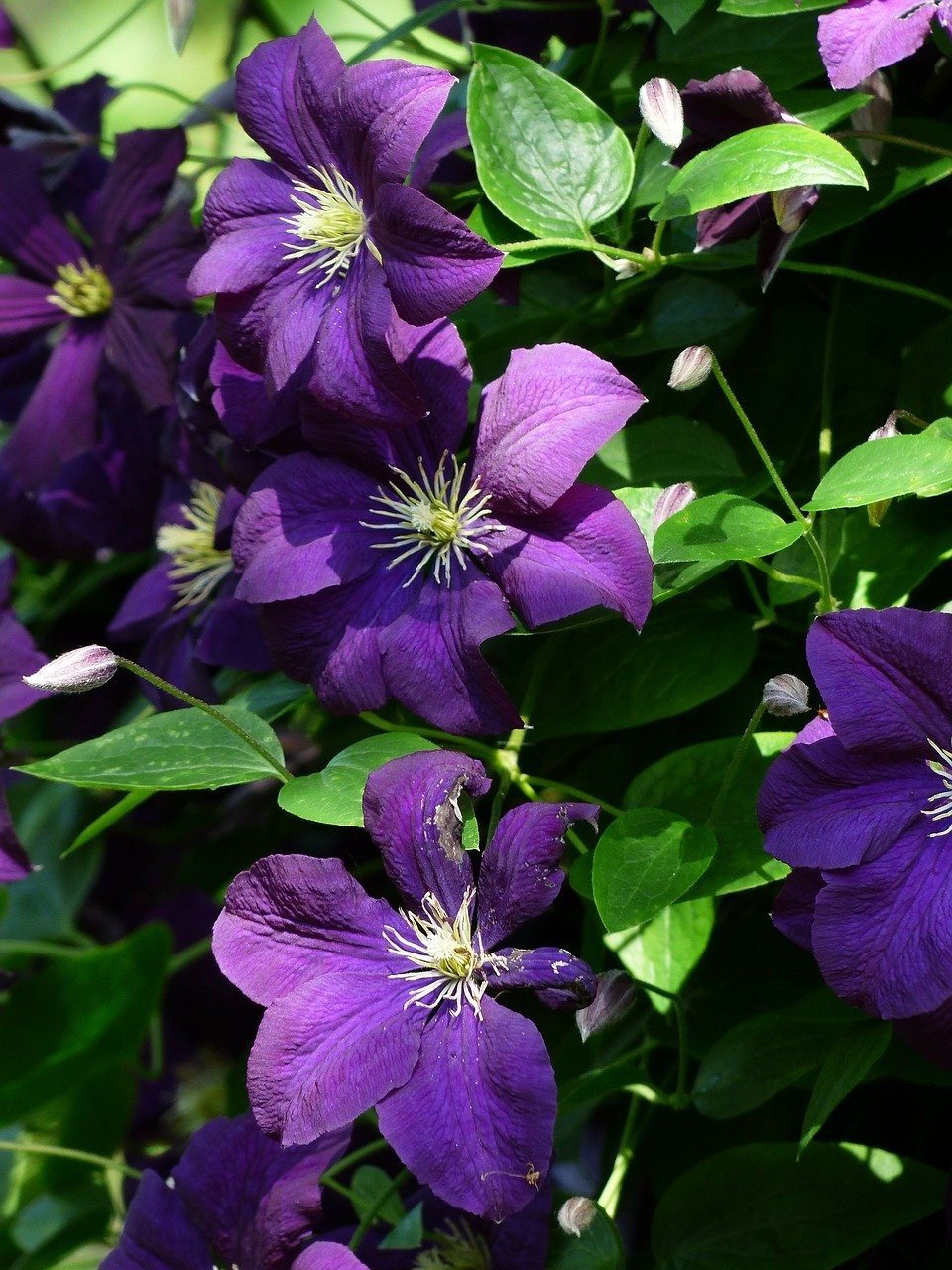
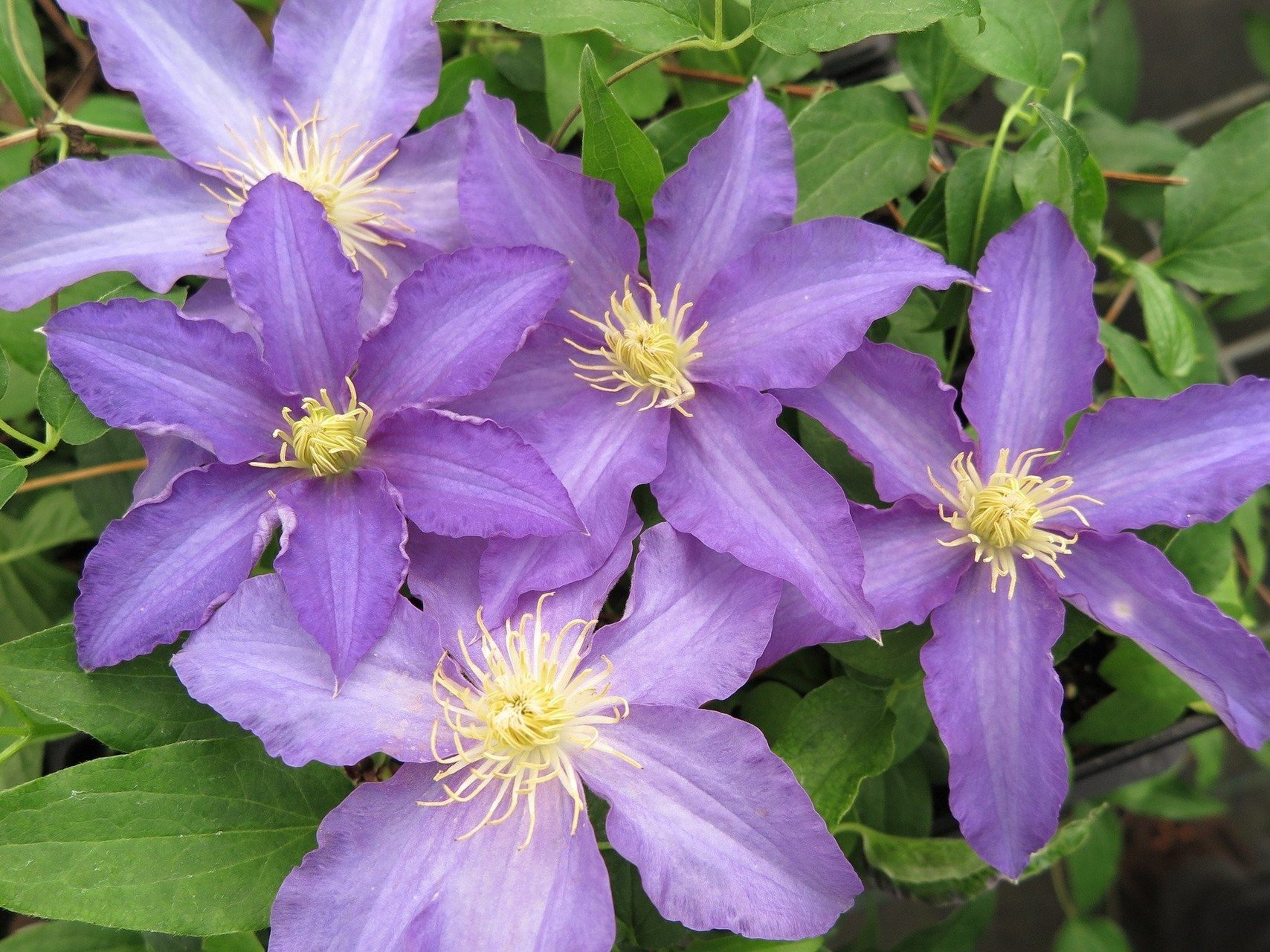
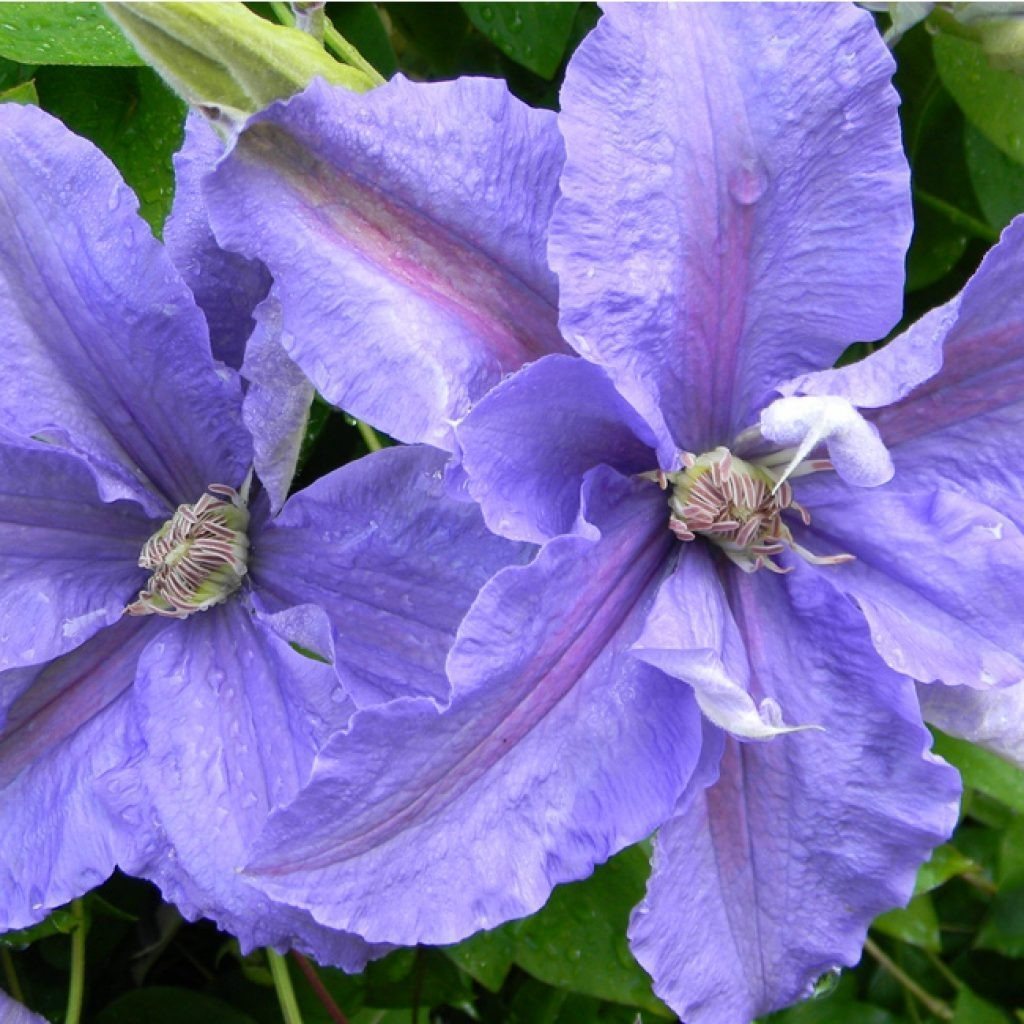
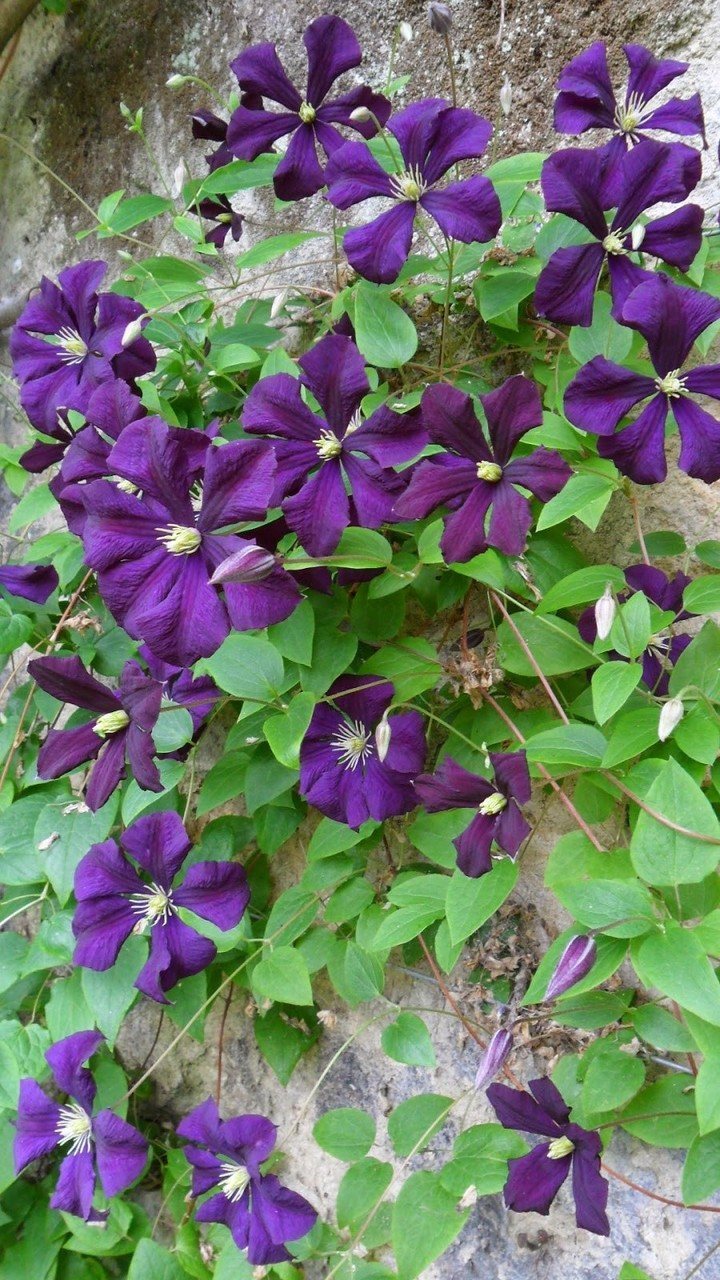





In the sun, the color of the sepals changes to pale lemon shades.
The leaves are matte, bright green, trifoliate-opposite.
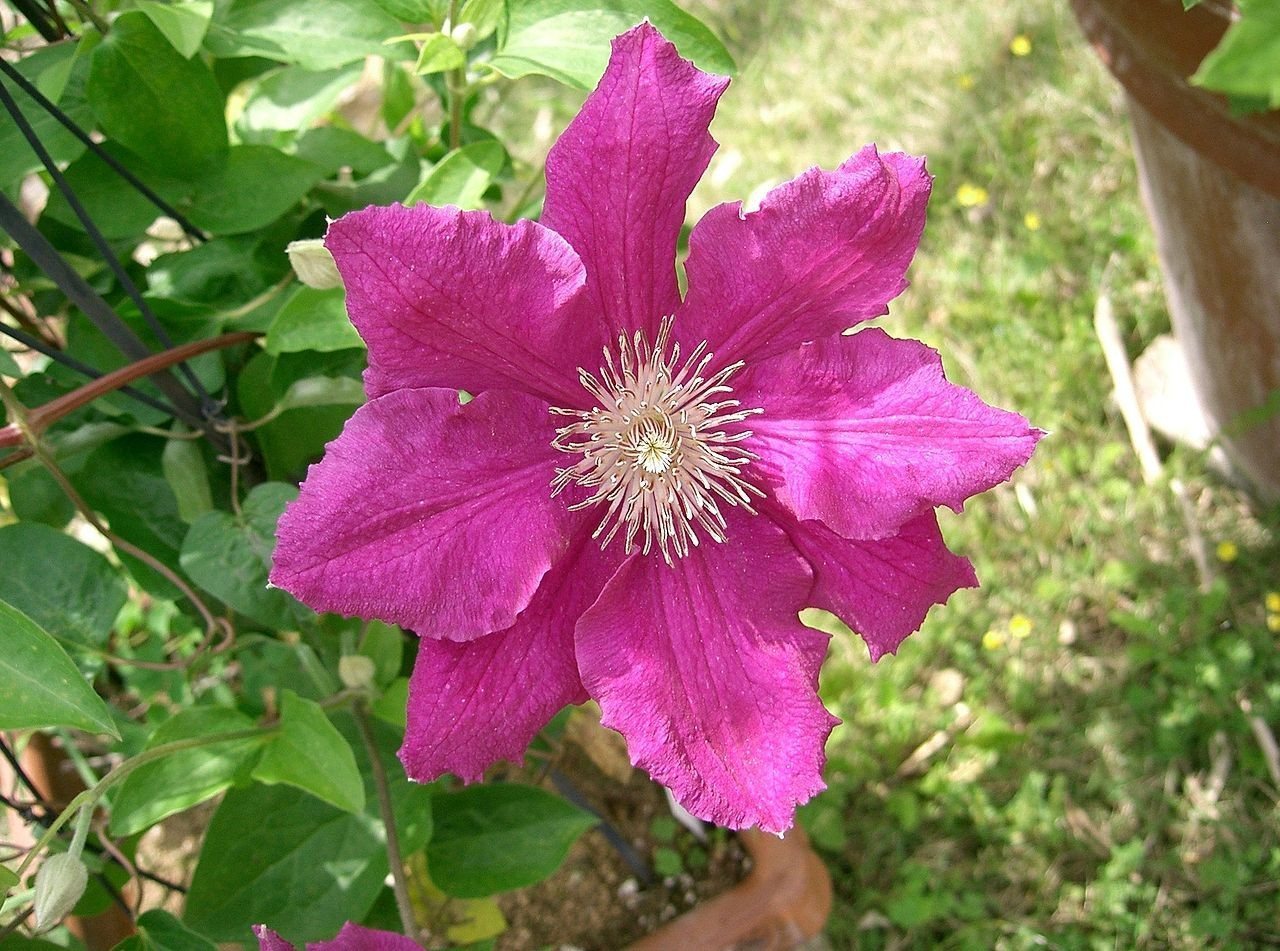
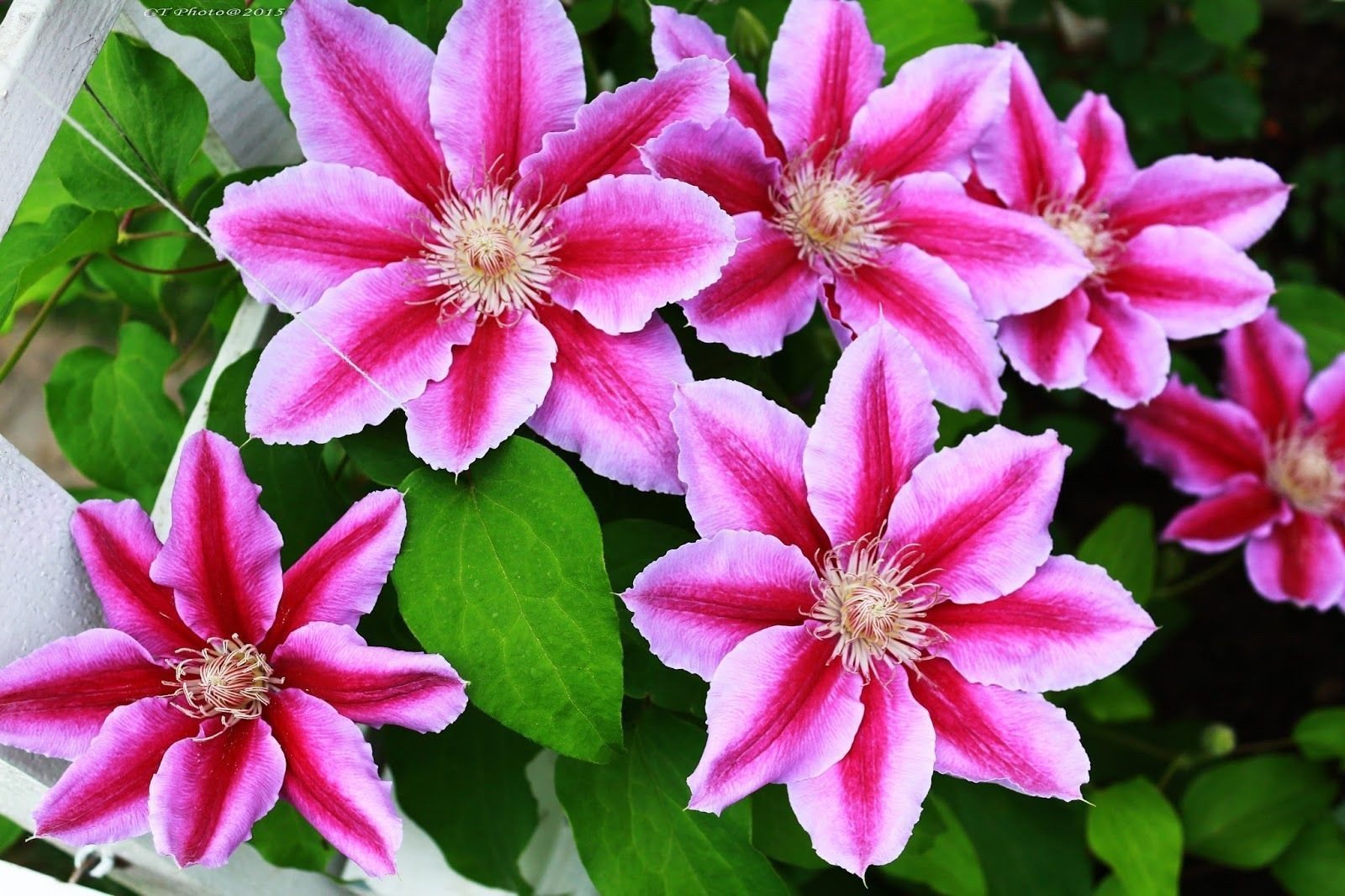
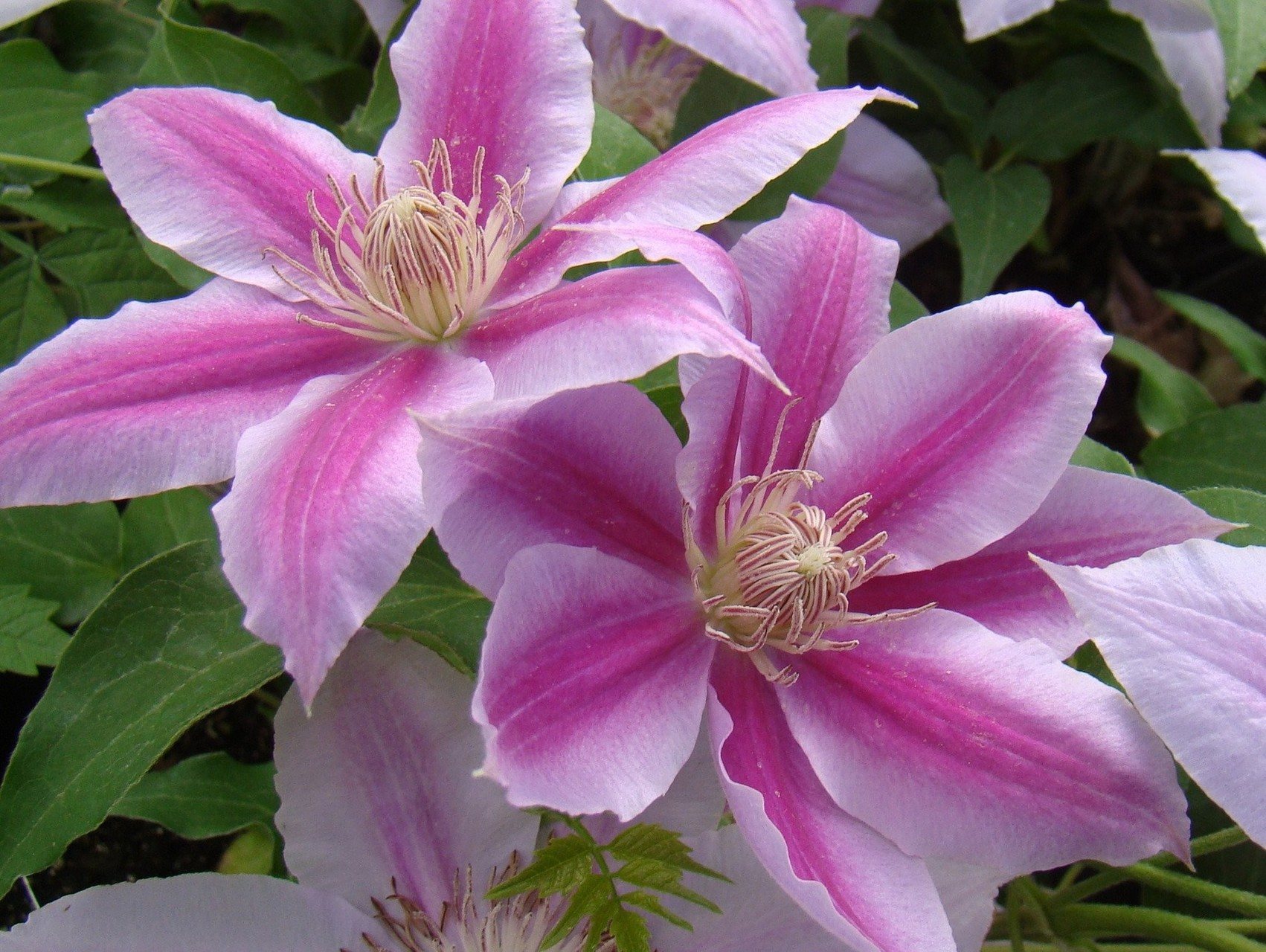
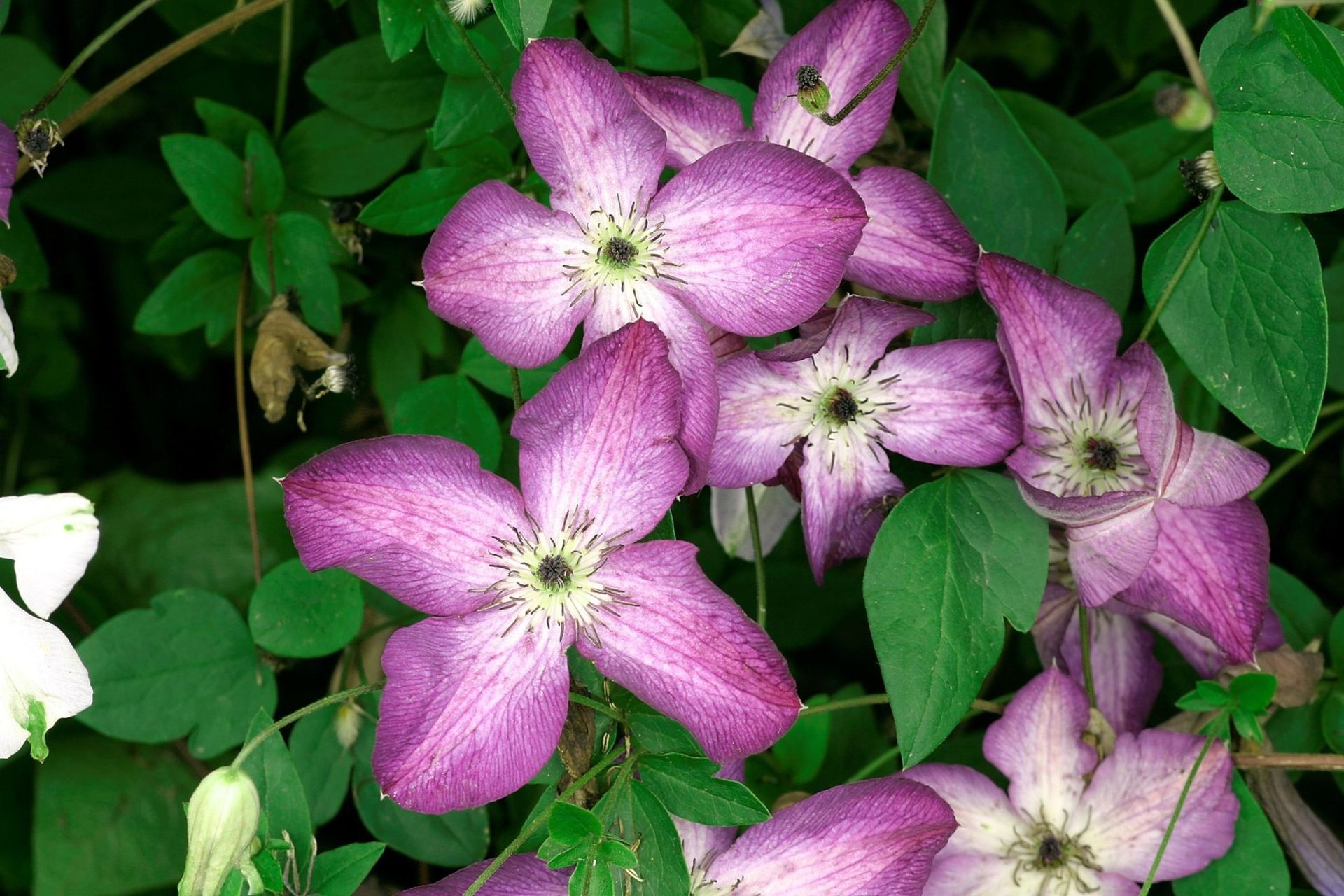






Viva Polonia freely tolerates the frosts of the northern strip of Russia without shelter. Resistant to diseases and viruses.
Flower Ball
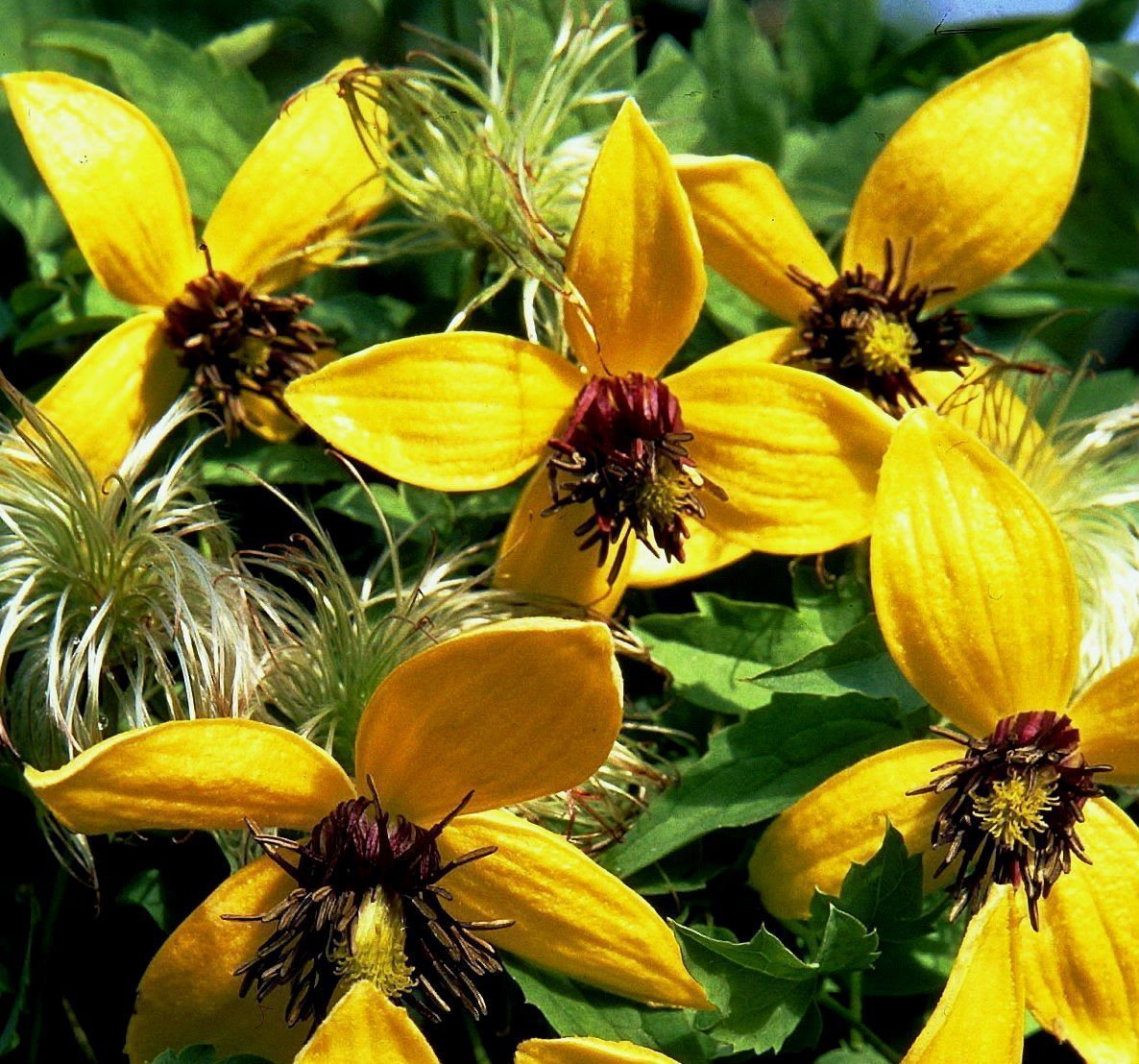
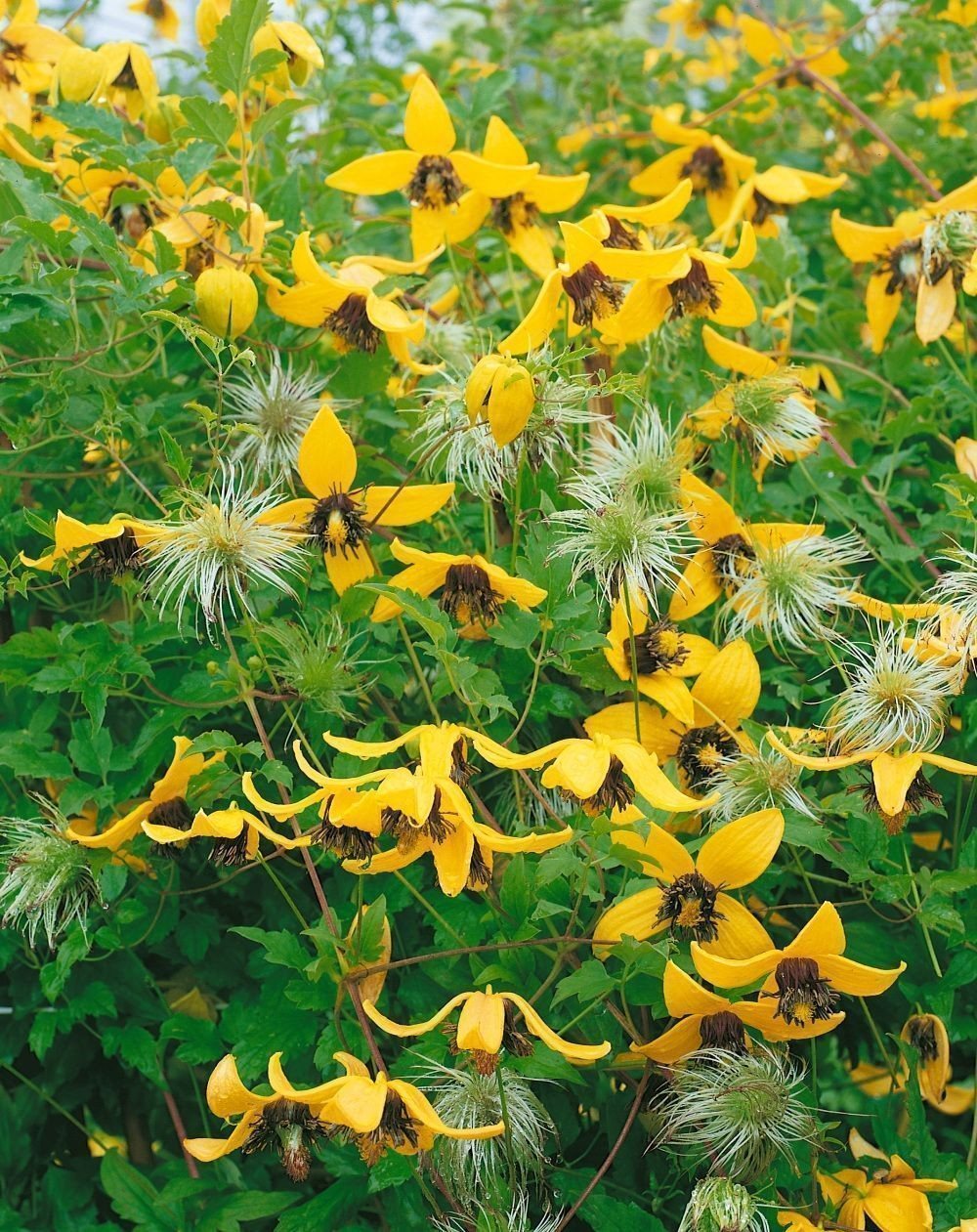
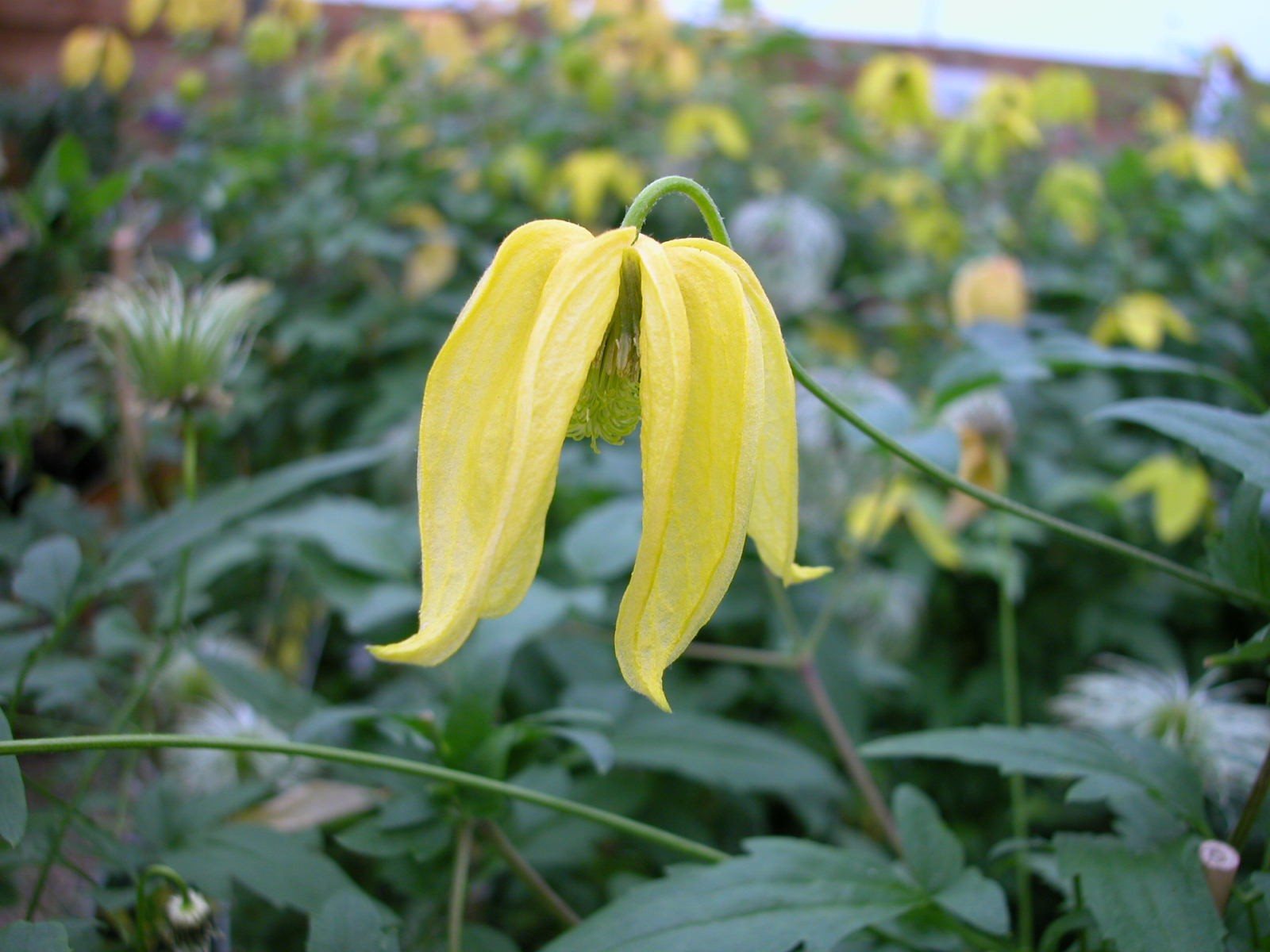
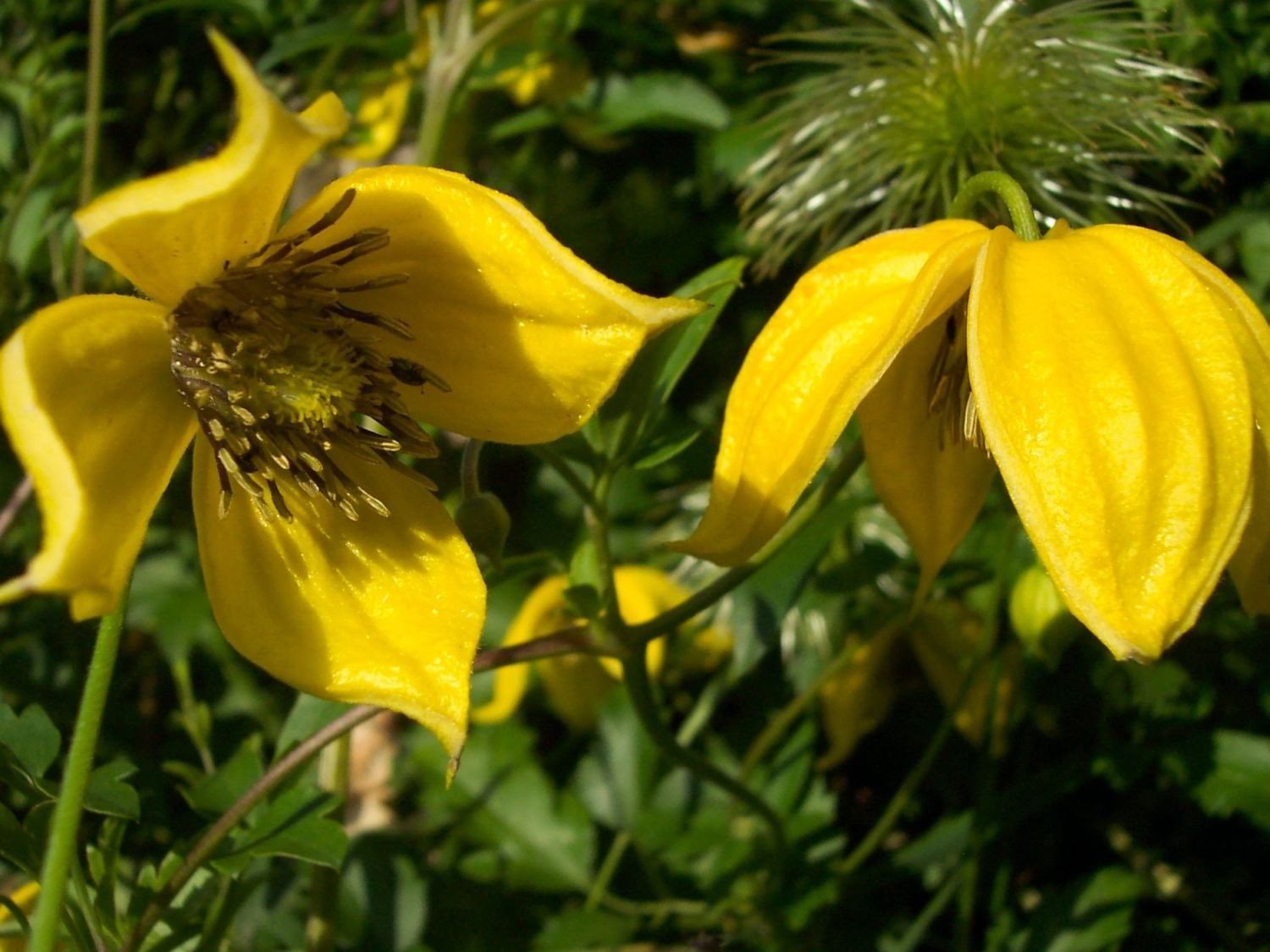
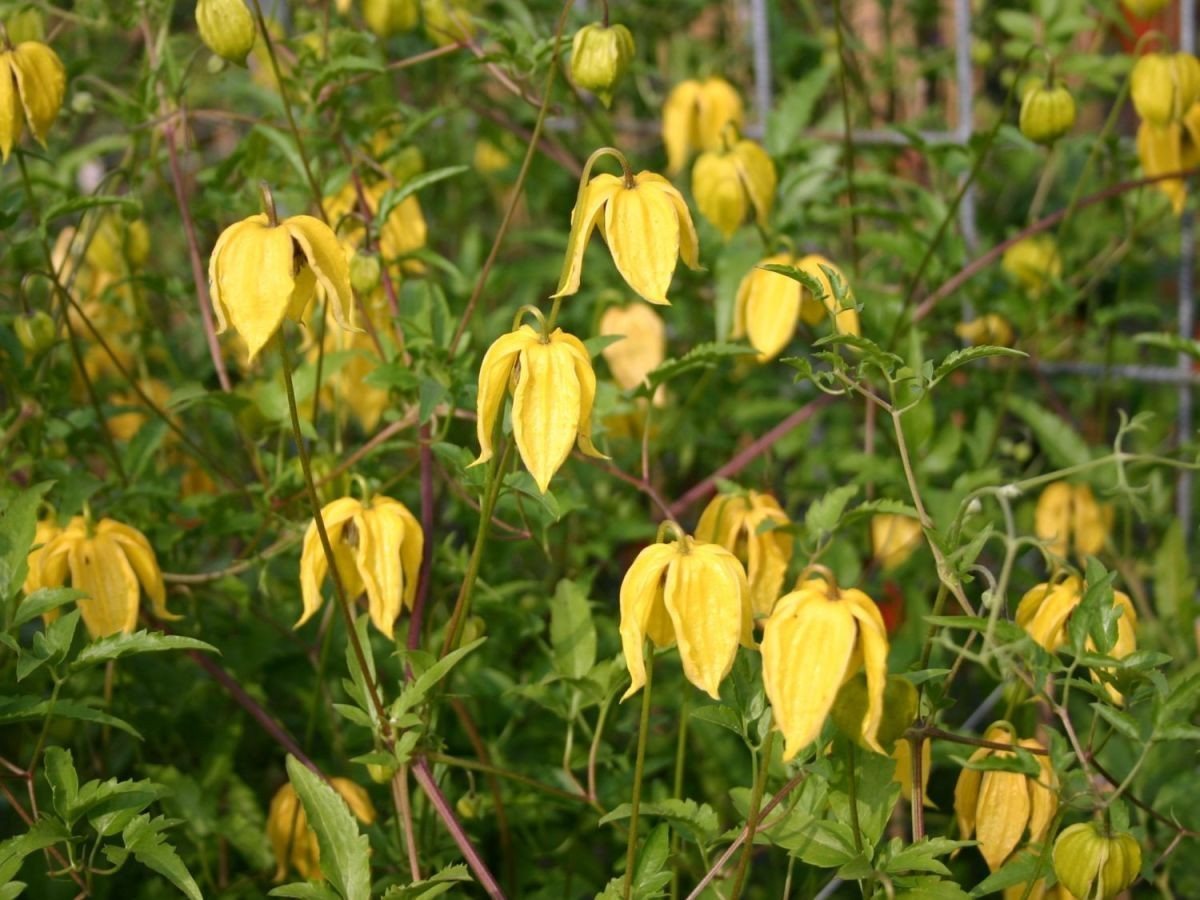





The Lanuginosa group variety exceeds 3 m in height. The first flowering occurs on last year's shoots, the second flowering develops from young shoots.
Teppeki insecticide: instructions for use to protect plants from pests
- The sepals consist of 8 ellipsoidal shapeless petals. Purple-violet flowers with a faint pale pink stripe are collected in inflorescences of three buds or grow singly.
- Leaves are opposite, compound trifoliate.
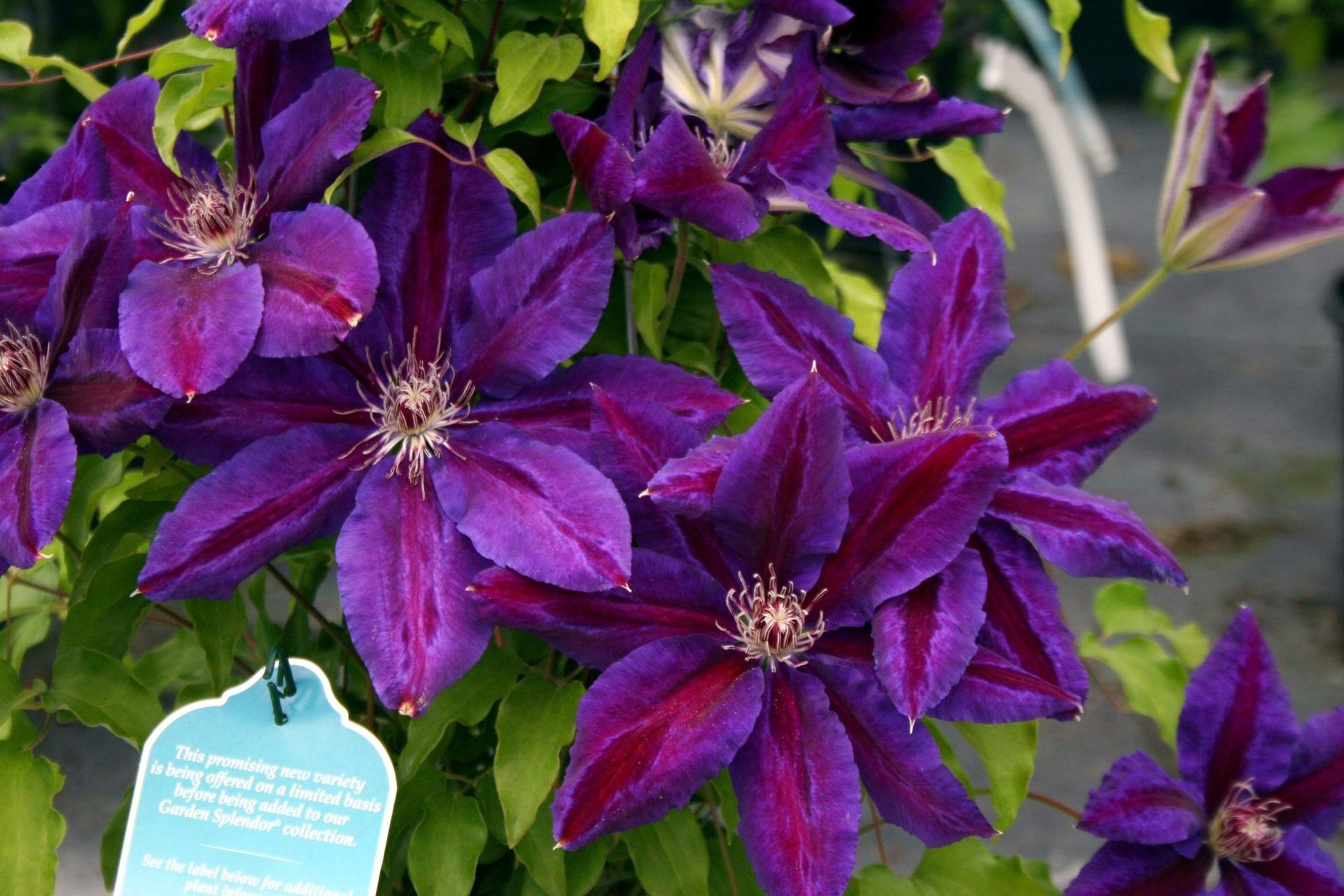
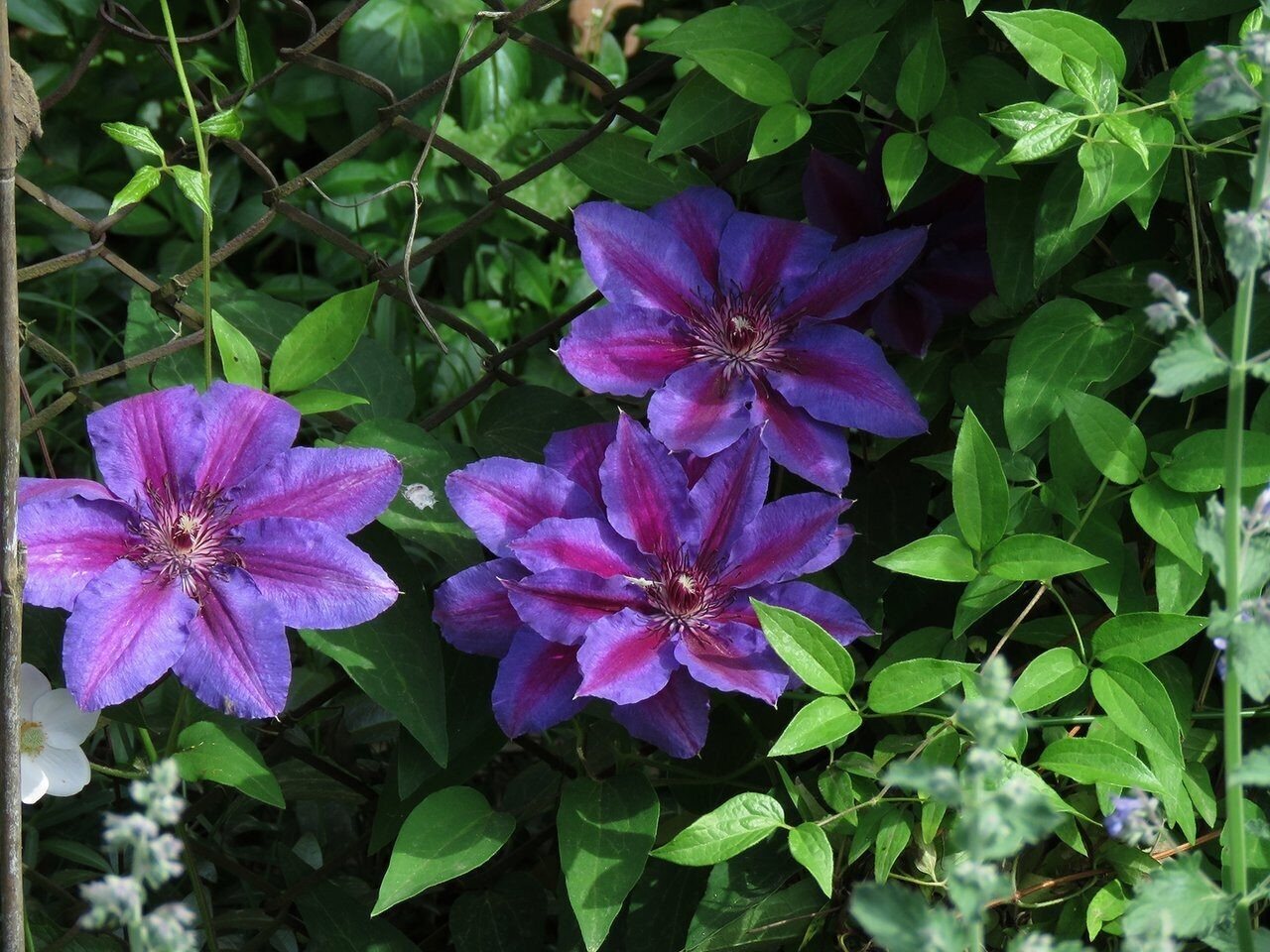

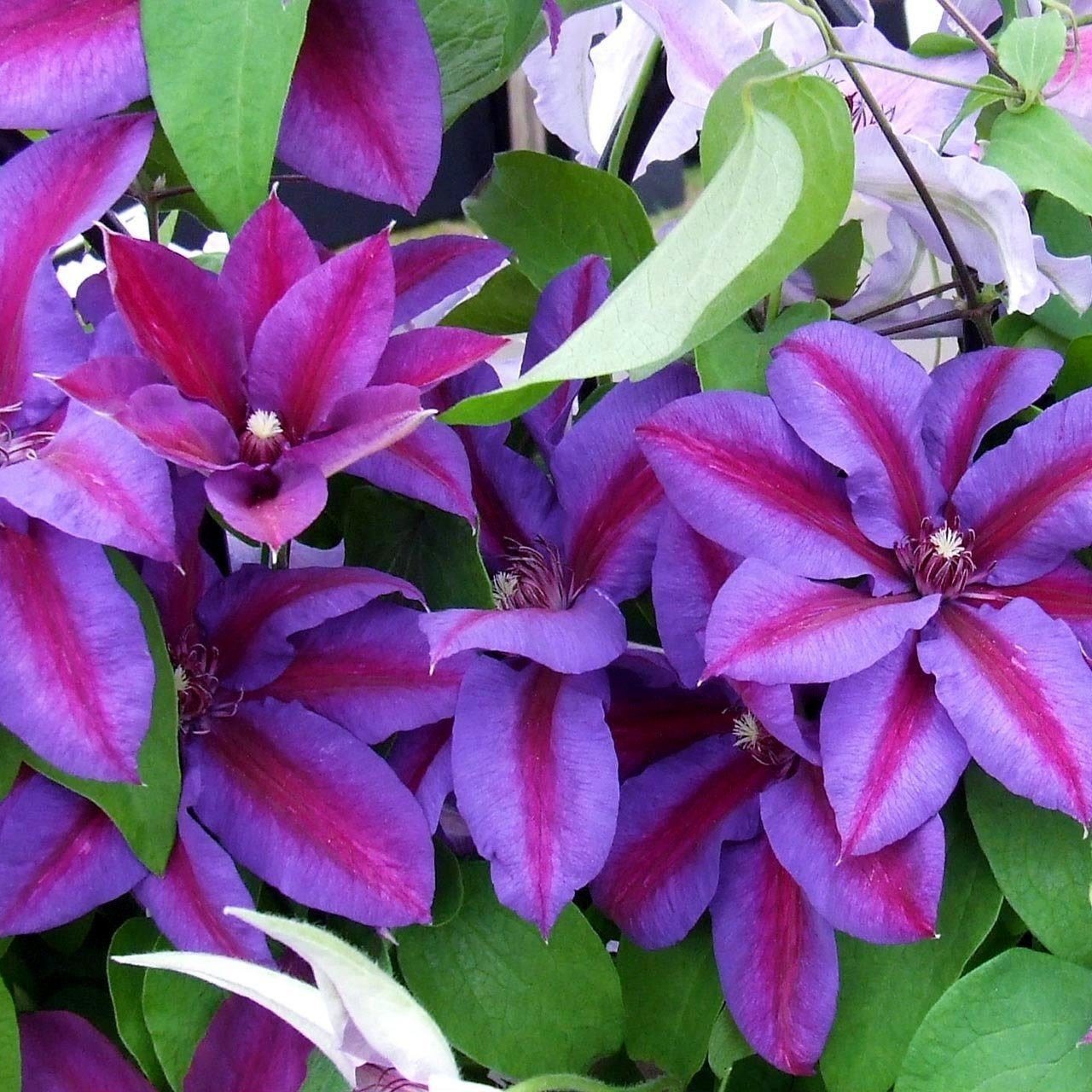
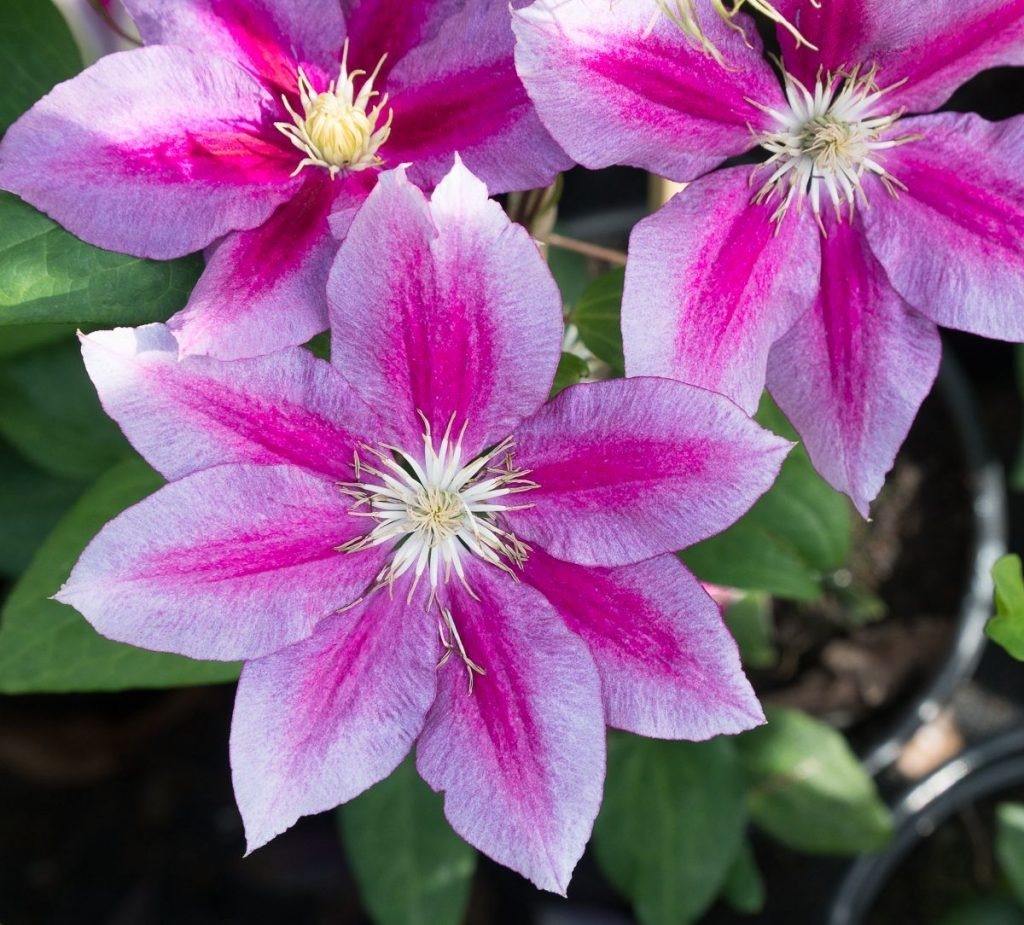





Ball of Flowers grows on the south side of the site and does not tolerate winter well without shelter. Needs additional feeding.
Prince Charles
Medium-flowered species, Viticella group.
The shrub does not exceed 2.5 m. Subtle purple or violet flowers grow up to 10 cm in diameter. They bloom profusely from June to September. One sepal has 4-6 drooping oval-shaped petals.
The foliage is matte, alternate, trifoliate.
Grows in areas protected from the wind. Resistant to diseases and tolerates frost well without shelter.
Star of India
Clematis of the Jacquemman group grows up to 3-4 m. A simple star-shaped flower 12-15 cm develops from young shoots from the first year of planting. Flowering occurs from June to September.4 years after planting, Star of India pleases with the abundant flowering of the shrub.
Lilac sepals consist of 5-6 lilac petals with a bright crimson longitudinal stripe. Closer to cold weather, the flowers turn purple.
The foliage is bright green, entire, opposite.
Kiri Te Kanawa
Large-flowered clematis belongs to the patens or florida groups.
An early-flowering variety blooms large double inflorescences up to 15 cm twice a season. The first flowering is from mid-May to June, the second flowering is in July-August. Stems grow up to 3 m.
The petals are dark blue, arranged in rows. The edges are wavy, the ends turn outward.
The leaves are oval-shaped, pointed, opposite. The color is dark olive.
The frost resistance of the variety is high, up to -40 °C. In winters with little snow, plants need shelter.
What colors does clematis come in?
Varieties of clematis have a variety of colors from delicate to variegated flowers.
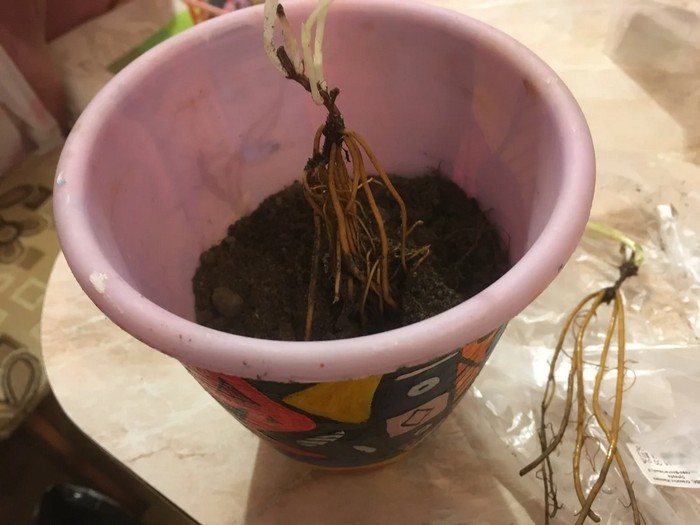
White
John Paul II, Alba Luxurians, Albiflora, Andromeda Anita, Anna Carolina, Astra Nova, Ballerina, Beautyful Bride, Henry.
Light blue and blue
Fujimusume, Diamond Ball, Anastasia Anisimova, Ramona, Askotiensis, Betty Corning, Prince, Blue Puppy, Blue Rain, Mazuri.
Violet
Anna German, Arabella, Astra Nova, Ashva, Flower Ball, Baltic, Blue Surprise, Black Prince, Blue Pilar, Beauty of Worchester, Gabriel Narutowicz, Gisela, Daniel Deronda, Jackmoney, Gypsy, Copernicus, Multi Blue, President.
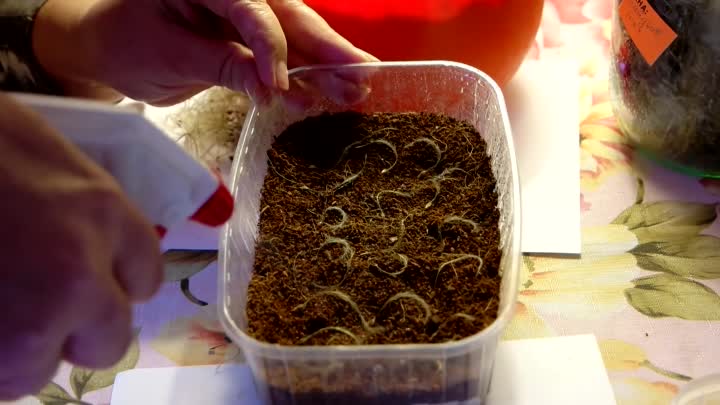
Pink
Abilene, Abundance, Ai-Nor, Alyonushka, Asao, Skirt Ballet, Dancing Smile, Danuta, Joan Picton, Doctor Ruppel, Josephine, Innocent Blush, Innocent Glance, Caen, Pink Swing, Heather Herschell, Agnieszka Admiration.
Yellow
Bill Mackenzie, Love Radar, My Angel, Golden Tiara.
Others
In addition to the most famous varieties, there are:
Red and burgundy: Nubia, Sharman, Rebecca, Chania, Rouge cardinal.
Multicolor (combine several shades): Akaishi, Wildfire, Utopia.
House conditions
Clematis do well indoors. Miniature plants do not exceed 1.5 m in height. For comfortable growth, the plant needs space and proper care.
Humidity indicators
Plants do not tolerate very wet soil. The roots are protected from rotting by a special mound.
Room humidity is no less important. A poorly ventilated room provokes the spread of fungal infections.
For abundant flowering, it is recommended to make a short drop in temperature to -6°C.
Lighting
Potted weed grows in a well-lit place, protected from direct sunlight to avoid burns.The plant is exposed to the sun for at least 7 hours.
If the container is dark, wrap it with film or a rag to avoid overheating the soil.
Where to keep
In spring and summer, the home bush feels great in any room and on the balcony. For the winter, it is put away on a glazed balcony, warehouse, or left in the hall at temperatures up to 8°C. At high temperatures the buds will not open.
Have you tried growing clematis at home?
Yes
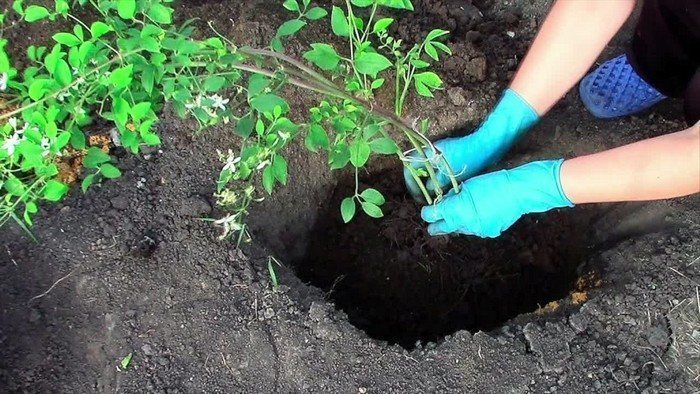
No
Voted:
Home care
Domestic clematis bloom less profusely, but delight with their flowers longer. Slow-growing varieties are chosen as ornamental houseplants.
Priming
The soil for home growing should be loose, airy, and not too dry. If natural soil is used, it should be slightly alkaline or neutral. The soil is prepared a year before planting the sprout.
The drainage layer includes a mixture of earth, sand and humus in a ratio of 1:1:1.
Tara
Even the decorative variety has a powerful root system. The flower pot is selected from 20 liters in volume, high, diameter 45 cm.
Wooden boxes, ceramic, concrete pots or large plastic containers should have a tray for watering and feeding the plant. For air circulation, 3-5 holes are made in the soil.
Watering
Household clematis is watered more often than street ones. The liquid is introduced from below, through a special tray.
The first year after planting, 2 waterings in 7 days (30 liters per bush) are sufficient.In the third year, watering is reduced to 1 per week. In hot weather, plants are watered more often.
Spraying
When processing clematis at home, gentle biological products are used. Fitosporin and Glyocladin are used for diseases.
Against pests - Fitovem. The product eliminates spider mites, which often infect home bushes. To enhance the effect, pour onion peel infusion.
Fertilizer
During the flowering period, the vine is fertilized with compost or granules. Fertilizers for roses are introduced once every 2 months. Additionally, a product rich in potassium is added.
For the winter, clematis is fertilized with ash, which will strengthen the plant and prepare the plant for flowering.
Trimming
- At the end of autumn, the vines are pruned according to crop groups.
- The 1st group is pruned only after flowering, no more than a third. The remaining stems are covered.
- In the 2nd, the stems are cut in the fall, up to three nodes. During flowering, only young branches are pruned and covered with special material.
- The 3rd group is pruned during the flowering period, then in late autumn. Covered with non-woven material.
Transfer
Clematis develops very quickly and does not like frequent transplants. In the 2nd year after planting, a container of 45-50 liters is selected for it. In the 4th year, the plant is planted in open ground for natural restoration.
Rest period
- Preparation for winter takes place in late autumn. The indoor ornamental plant sleeps until the first warm weather.
- Growing in open ground
- When growing clematis in open ground, it is necessary to take into account the composition of the soil, climatic conditions and a number of other factors.
Choosing a place
The clematis does not like frequent movements, so it is necessary to determine a suitable place in advance. The plant can grow in one place for about 20 years.
Clematis grow in partial shade or sunny areas, well protected from the wind.
- Soil
- Clematis is very capricious in relation to the soil. The soil is slightly alkaline, neutral or slightly acidic.
- The first shoots will take root well in light, drained soil, located as far as possible from groundwater.
- When digging a hole, it is important to put gravel or small brick on the bottom. Fill it with a compacted mixture of peat and humus with the addition of 250 g of wood ash.
- Planting dates
In the southern regions (Kuban, Caucasus), plants will take root better in early April. In central Russia (Moscow), planting occurs in mid-April.
In Siberia and the Urals, planting occurs in early May.
In spring, planting occurs before flowering begins — the third ten days of April — early May (depending on the region).
In autumn, when the intensive growth of green mass has ceased, but the roots are still growing. The plant needs 1.5 to 2 months to strengthen before the onset of frost. If early frosts occur, Clematis is transferred to a pot.
Watering
The plant is watered into the hole, without touching the leaves, so as not to provoke the development of a fungal infection and wilting.When growing clematis in open ground, it is necessary to take into account the composition of the soil, climatic conditions and a number of other factors.
Selecting a location
Lozinka does not like to move frequently, so it is necessary to determine a suitable place in advance. The plant can grow in one place for about 20 years.
Clematis grows in partial shade or sunny areas, well protected from the wind.
The soil
Clematis is very capricious in relation to the soil. The soil is slightly alkaline, neutral or slightly acidic.
The first shoots will take root well in light, well-drained soil, located as far away from groundwater as possible.
When digging a hole, it is important to place gravel or small bricks on the bottom. It is filled with a compacted mixture of peat and humus with the addition of 250 g of wood ash.
Landing dates
In the southern regions (Kuban, Caucasus), plants will take root better in early April.
In central Russia (Moscow), planting occurs in mid-April.
In Siberia and the Urals they are planted in early May.
Landing
In spring, planting is carried out before flowering begins - the third ten days of April - early May (depending on the region).
In autumn, when the intensive growth of green mass has stopped, but the roots are still growing. The plant needs 1.5 - 2 months to strengthen before the onset of frost. If early frosts set in, Clematis is transferred to a pot.
Watering
The plant is watered into the hole without touching the leaves, so as not to provoke the development of a fungal infection and wilting.
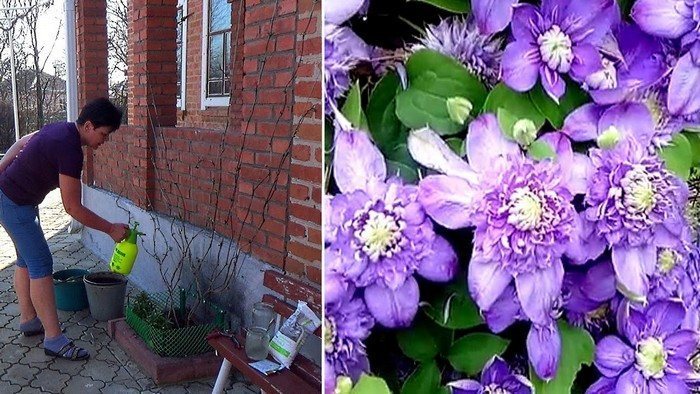
Young bushes are watered once a week, 5 liters per plant. Adults - once every two weeks, 10 liters per bush.
Fertilizer
At the beginning of flowering, the tree trunk circle is fertilized with ammonium nitrate (1 tablespoon per 10 l) or urea (up to 8 g). Growth stimulating drugs will be used. After 10 days, the fertilizer is repeated.
After two weeks of rest, combined fertilizers are applied and repeated for the second flowering.
In the fall, they are treated with a 0.5% phosphorus-potassium solution to increase frost resistance and accelerate the development of shoots.
Before wintering, add a solution of superphosphate with sulfate (1 tbsp.per 10 liters of water per 1 adult bush).
Trimming by groups
Each variety of grapevine belongs to a specific pruning group. They differ in timing and cut-off level.
1 group
The stems of the bush are removed after flowering, in July. Weak or broken branches are cut off to a height of at least 1.5 m.
These include:
Knyazhiki Group;
Mountain clematis;
Orientalis Group;
Montana.
2nd group
Pruned after the first flowering (old branches), at the end of the season (all vines up to 1 m).
Groups of this type include:
Lugnosa;
Florida;
Patens (some varieties).
3 group
The stems are heavily pruned in the fall. The entire bush up to 30-50 cm is removed.
The group includes:
Jacquemin;
- Oriental;
- Texensis;
Viticella;
Straight.
Supports
Strongly growing clematis need a supporting structure.
Tomato variety Sanka: description and characteristics, reviews and photos
The best material for supporting flowering clematis: chain-link mesh, metal perforation, wooden picket fence, metal tubes.
The supports can have different shapes and sizes, but are selected based on the height of the shoots.They are buried deeply (up to 500 cm), reinforced with soil or concrete.
Dormant period
The final processing of clematis occurs in late autumn. Before the first warming, the plant falls asleep.
Preparing for winter
To prepare clematis for winter, it is necessary to carry out proper agricultural preparation.
The main stage is fertilization. The last feeding contains potassium and phosphorus, carried out in early September. In central Russia, at the end of September, a mixture of ash (250 g) and sand (250 g) is scattered.
The bushes are watered exclusively under the root until the end of October, the soil is loosened.
At the beginning of November, shoots are removed from the 2nd and 3rd pruning groups (partially or completely).
The next stage is hilling. The soil is enriched with humus or compost, a mound of 10-15 cm is created.
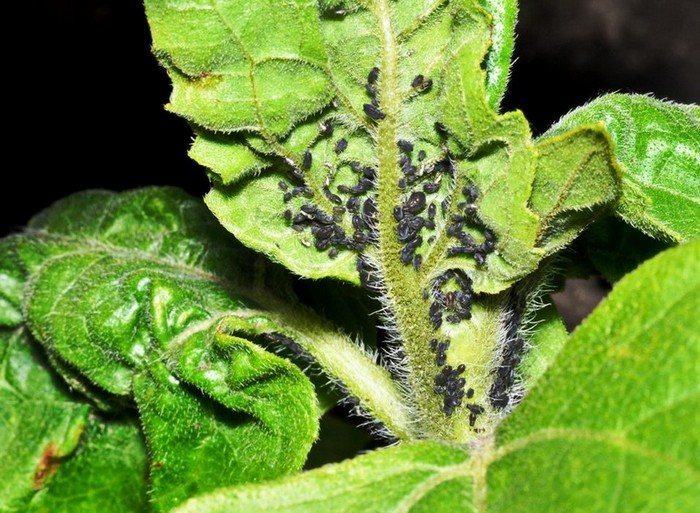
Young and frost-resistant vines are covered with mulch or a special cloth.
Spring processing
With the onset of warmth, the covers are carefully removed. This is done in several stages to prepare the plant for sunlight.The plant and soil are sprayed with copper sulfate or Bordeaux mixture (1%).
The excess is cut off, the branches are distributed and tied to a support. The 1st group undergoes sanitary pruning - diseased, damaged branches and inflorescences are removed.
In bushes of the 2nd group, last year's vines up to 1.5 m are removed. Then they undergo sanitary pruning. Bushes of the 3rd group are pruned completely to 20 cm from the ground.
In rainy weather, the bushes are not watered, only loosened. If rains are rare, water once a week. In dry spring, watering is carried out once every 5 days. The roots of an adult clematis are watered with 30-50 liters per bush.
Fertilizer is administered three times. The first is at the end of April, mineral fertilizer with nitrogen is introduced. For example, ammonium nitrate (20 g per 1 bucket of water), urea or dry fertilizer. The latter are scattered around the bush and into the soil. Liquid fertilizer is poured at the base of the stem.
The second feeding is introduced a week later. Organic fertilizer is used - chicken manure (1:20), horse and cow manure (1:10).
The third stage of feeding is complex.Rich in minerals, add 2 weeks after the second.
As a preventive measure against diseases and bacteria, remove all weeds on the site in the spring, as well as broken branches, fallen leaves and dried fruits.
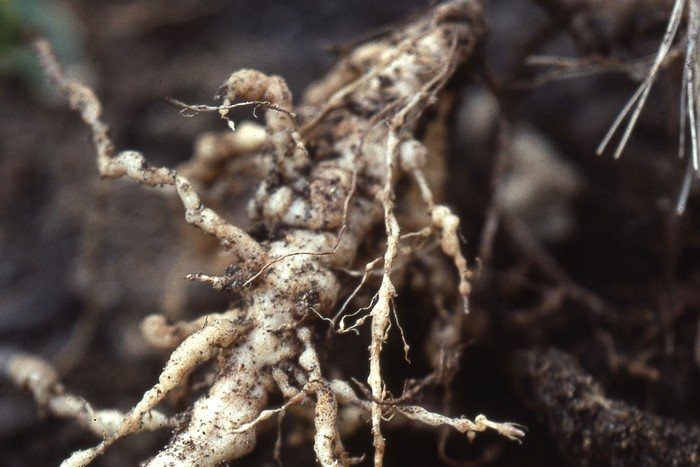
Features of caring for a first-year plant
Young clematis is planted in pre-fertilized soil or soil, so it does not need additional fertilizers. The first year, one bush takes 2 buckets of water per week. After watering, the soil is loosened to prevent stagnation of liquid. With the strengthening of the roots, loosening is stopped.
The plant must be mulched, the soil must be cleared of weeds.
If one shoot has grown, it is pinched to stimulate the lateral stems. The buds of the first year are cut off. The growing branches are tied to the supporting structure.
For the winter, the stems are cut to the first bud at the base, covered from the cold. Reproduction
Many gardeners independently propagate clematis for their plots. The popularity of the variety has led to variability in reproduction.Rich in minerals, added 2 weeks after the second.
As a preventive measure against diseases and bacteria, in the spring, remove all weeds on the site, as well as broken branches, fallen leaves and dried fruits.
Features of caring for a plant in the first year
Young clematis is planted in pre-fertilized soil or soil, and therefore does not require additional fertilizers. The first year, one bush needs 2 buckets of water per week. After watering, the soil is loosened to prevent stagnation of liquid. As the roots become stronger, loosening stops.
The plant must be mulched and the soil must be cleared of weeds.
If one shoot has grown, it is pinched to stimulate the lateral stems.The buds of the first year are cut off. Growing branches are tied to the supporting structure.
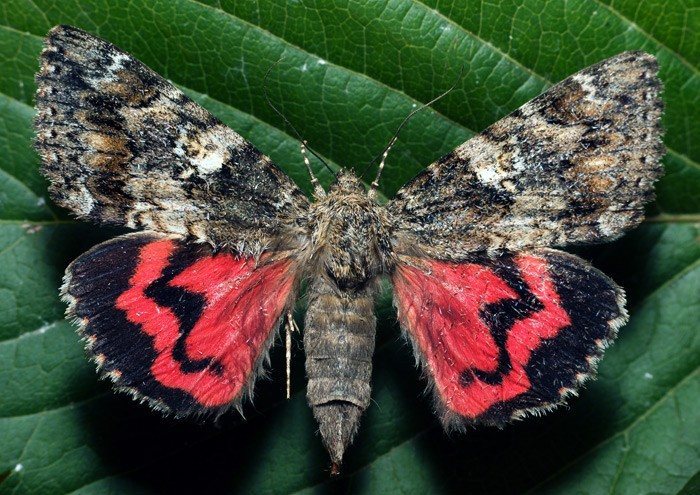
For winter, the stems are cut to the first bud at the base and protected from the cold.
Reproduction
Many gardeners grow clematis for their own plot. The popularity of the variety has led to variability in reproduction.
For propagation, young green and woody two-year-old cuttings are taken. Spring breeding takes place in May. Take cuttings of the 1st and 2nd pruning groups.
Summer cuttings have a high survival rate, up to 95%. For propagation, cuttings of strong bushes are taken during flowering. They are planted in a soft substrate made from a mixture of compost, peat and sand.
The cuttings are placed in disinfected soil at an angle, up to the internode.
Autumn propagation is carried out on two-year-old shoots. Prepared cuttings are planted in the ground 1.5-2 months before the cold weather.
In conditions of early frosts, cuttings are stored in boxes at temperatures up to 3°C in a dark room. In spring they are planted in open ground.
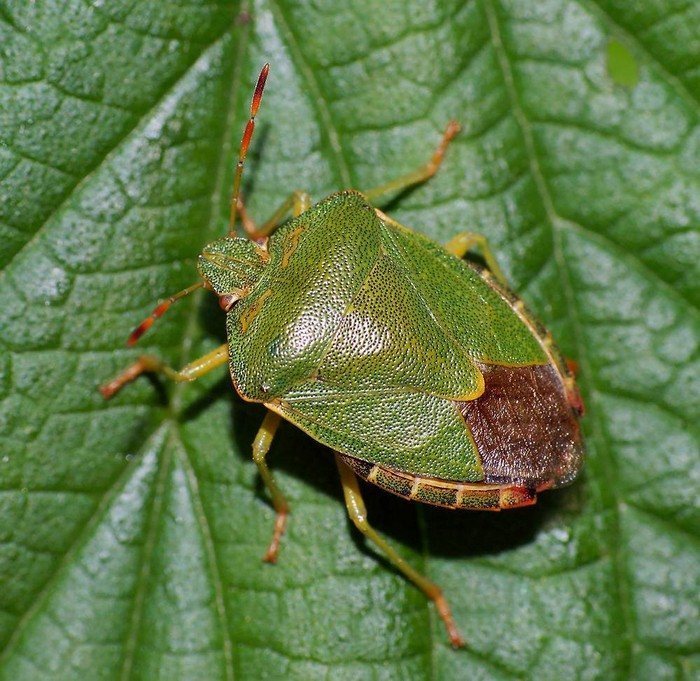
Dividing the bush
Reproduction is carried out on five-year-old clematis. Shrubs are watered abundantly and dug around the circumference.
Using pruning shears, cut the stems down to 25-30 cm, and remove the leaves completely. The root system is cleared of soil and washed. The roots are divided into 3 parts, maintaining branches with shoots.
The separated roots are immersed in a solution that stimulates growth for 3-4 hours.
By layering
One of the available types of reproduction. They take root at the end of May.
Dig holes to a depth of 9 cm, next to an adult bush. A shoot is planted, the shoots at the internodes are attached to the soil with sticks, and covered with earth. The whip is placed 20 cm above the soil. The earth is slightly moistened.
When young shoots appear, the holes are filled up. During the summer, the soil is moistened as it dries, and complex fertilizing is introduced. For the winter they cover themselves with spruce branches.
Vaccinations
Difficult to root varieties are propagated by grafting. The process is carried out outdoors in June-August.
The rootstock is 2-year-old seedlings or roots of wild shrubs (Chinese, grape, burning). To obtain the necessary roots, wild varieties are grown in 3-liter boxes. The finished roots are washed and trimmed to 20 cm.
The vaccine is administered in two ways:
Split. The top of the root is cut and a cutting is applied. Tie tightly.
Butt. A longitudinal slit is cut from the base of the kidney. The root is also cut to 3 cm. They are applied to each other and wrapped.
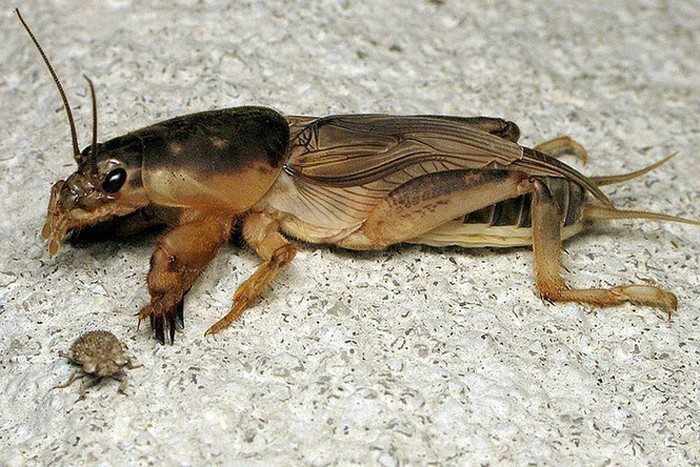
They grow in a greenhouse, covered with film at temperatures up to 20°C. The regrown sprouts are pinched at a height of 15 cm and unwound. Planted to a depth of 30 cm.
Seeds
This method is used in selection. Hybrid and selection varieties are not suitable for propagation by seeds. Autumn sowing - large and medium seeds are placed in open ground to a depth of 5-7 cm.
Sowing in spring is carried out with seeds of any size. Medium and large seeds are prepared in advance (kept at temperatures up to 20°C, then at 4-6°C).
Planting material is kept for several days in water at room temperature. Add stimulants (Zircon). The solution is changed after 5 hours.
- The next stage is oxygen saturation of the liquid in which the seeds are located.
- Pests
- Perennial clematis is regularly attacked by insects. They carry diseases, completely destroying the variety. It is important to immediately recognize the type of pest and prevent it.
Beet aphid
The insect lays eggs in the fall. In spring it feeds on sap from leaves and shoots. The sticky liquid secreted by aphids destroys the leaves. The pest attacks in colonies and lives on the underside of the leaf.
A clear sign of aphids are ants. They carry fragile, hatched insects.They feed on their secretions.
A small group of insects can be eliminated with water pressure. Ladybugs or wasps are placed on the leaves. You can attract birds.
Special preparations are used - the insecticide Fitoverm (2 ml per 1 liter of water), or folk remedies - tincture of tomato leaves, horseradish or wormwood. Spray the leaves and stems generously.

For prevention, garlic or onions are planted nearby. The pungent smell will repel pests. Before flowering, spray with fungicidal preparations.
Snails
Insects eat greens with the onset of warm nights. When they reach the kidneys, the snails cause growth to stop. A fungal virus penetrates the bite site.
To combat snails, baits (fallen leaves, weeds) with poisoned granules are used.After the soil has died, it is necessary to clear it of debris and burn it.
An alternative option is to treat the above-ground stems with a solution of ammonia (2 tbsp. per 1 liter of water).
To prevent a snail invasion, it is important to clear the soil of debris in a timely manner.
Nematodes
Roundworms damage the root system and the base of the shoots. After which they affect the leaves. Infected clematis stop developing, the leaves decrease. For plants planted this year, an attack by nematodes is fatal.
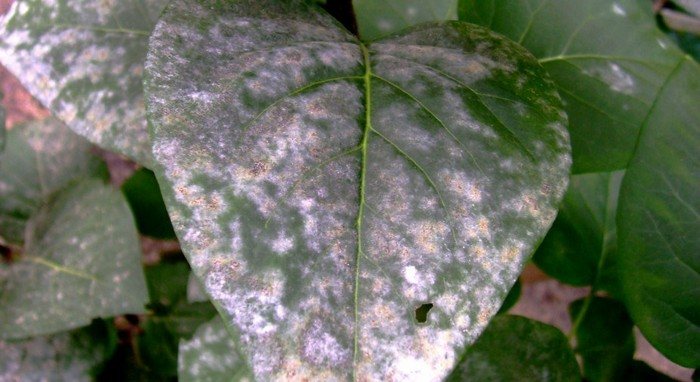
There is no targeted remedy for the destruction of roundworms. Therefore, it is necessary to carefully examine the roots of the plant before planting and treat them with hot water, above 60 ° C.
Quarantine is maintained in the soil where the nematodes developed.Calendula and marigolds planted next to the bushes prevent the appearance of harmful insects.
Spider mite
The pest is active during the summer drought. It covers the entire above-ground part of the shoots with cobwebs. The leaves become speckled with yellow, become covered with cobwebs and dry out.
Removing a tick is not easy. The web is sprayed with gentle agents - Fitoverm, Bitoxibacillin. A heavily infected plant is treated with chemicals - Actellik or Anti-Mite (1 ml of the drug per 1 liter of water). The wrong proportion will burn the plant and damage the soil.
Preventive measures are carried out with folk remedies - garlic infusion (200 g per 10 l), dishwashing liquid (after spraying, cover with polyethylene for at least 3 days).
Night owl
A large dark red moth lays eggs on leaves. There are about 70 larvae in one clutch. Voracious green or brown caterpillars chew through the stems and eat all the vegetation.
For the winter, insects bury themselves under the plant and wrap themselves in a cocoon.
During the flowering period, gentle biological products are used to eliminate caterpillars in several stages. During the winter, the soil is dug up and the fallen cocoons die.
Calendula planted nearby will repel the night armyworm. Its aroma drives away insects. After the season, deep digging of the earth is carried out. The top layer of soil (20 cm) is replaced with a new one.
Once every 7 days, the shoots are sprayed with Decisa or Tsitkora.
Prevention is possible with folk remedies. The branches are sprayed with tinctures of burdock, onion or wormwood. The most effective is a decoction of hot pepper (100 g of red pepper per 1 liter of water). Boil for about an hour. One bush requires 9 liters.
Garden slug
The nocturnal insect eats young shoots and leaves of clematis. During the day, the main carriers of diseases hide from the sun.
| To combat pests, the soil and plant are sprayed with ammonia diluted with water - 2 tbsp. l. products per 1 liter of liquid. In places where slugs accumulate, granulated Ferramol crumbles. | Tomato variety Mongolian dwarf: description and characteristics, reviews and photos |
| Timely checking of Clematis for the presence of slugs and their removal will reduce the risk of plant disease.Cabbage leaves or tree bark are used as bait. | Bedbugs |
| Garden bugs are green. They attack young leaves from the back side from the beginning of May. The foliage becomes stained and dries out. Eggs laid in holes at the ends of the stems slow down the development of the bush. Flowering stops. | Bedbugs are destroyed with insecticides. Treatment is carried out twice - after the attack and closer to autumn. |
| The appearance of bedbugs is prevented by spraying with special anti-bedbug agents in the spring. | Rodents |
| Field mice and hares attack willows in winter. They chew the stems and dig under the roots. | Rodents are exterminated with poisoned bait or a mousetrap.An alternative solution would be elderberry infusion, which repels rodents. |
| As a preventive measure, branches of nettle, cilantro or garlic are laid out near the hole. | |
| Shields | Heat-loving insect pests live in the southern regions. They attack leaf blades in colonies. They release a sticky liquid. |
| You can get rid of scale insects with an alcohol solution or potassium soap (4%). They wipe the foliage, brushing away pests. | Preventive measures - the stems are periodically watered with Aktara solution (1.4 g per 10 liters of liquid). |
| Medvedki | Insects attack the root system from underground with the onset of spring. Particularly dangerous for young vines. |
| You can get rid of mole crickets with a water-soap solution (10 liters per 20 g) with the addition of 2 tbsp. l.oils The liquid is poured into the holes. | An alternative option would be a special remedy against mole crickets or Metarizin (an environmental insecticide). |
| You can get rid of mole crickets in the fall, when you loosen the soil. The larvae are selected from the ground and destroyed. | Diseases |
| Among clematis, there are about 30 pathogenic microflora pathogens. Plants are more susceptible to fungal diseases. | Wither or Wilt |
| Wilting is caused by fungal spores. The ideal environment for development is high humidity with poor watering. | Attacks weakened shoots with external damage. In the process, they dry out and die, and the leaves fall off. |
| The initial stage of the disease is treated in several stages: | the soil is watered with a 3% solution of foundation, the above-ground part of the shoots is treated with Bordeaux mixture (1%); |
| spraying with biological fungicides; | wiping leaves with wood ash. |
The wilted parts are destroyed, the surviving areas and the soil are abundantly watered with enhanced fungicides (Naftifin).
For preventative purposes, all cut shoots are destroyed in the fall. At the beginning of flowering, the bush is treated with copper sulfate.
Phomopsis wilt
The fungal infection begins to spread in June. It affects leaves at the base of the shoot. In mild stages of the disease, they acquire yellow-brown spots. Without treatment, the wilting intensifies and covers the entire leaf.It dies and the disease spreads to the flowers.
- Treatment. Infected leaves and buds are destroyed, all stems are treated with Previkur. For prevention in the spring, use 3% copper sulfate.
- Yellow mosaic
- Viral patterned spots cover the leaves of clematis unnoticed by gardeners. Many people mistake yellow stripes or stains for plant characteristics.
- The mosaic slowly dries out the stems, while the bush looks healthy. The flowers of the affected plant become smaller and the ability to reproduce is lost.
The plant affected by the yellow mosaic is destroyed.
The disease actively affects the leaves and buds of clematis in July-August. A white fluffy coating slows down development and deforms flowers. Quickly spreads to neighboring plants. Infected areas are cut off and burned. The surviving areas are treated with folk remedies (1 tablespoon of powdered mustard per 5 liters of water or ethyl alcohol with salicylic acid 1:1). Fungicides are also used.
To prevent the disease, products containing copper are used. Rust
Weeds are considered carriers of spores. Rust overwinters on wheatgrass and begins to spread in the spring. The disease is characterized by small convex spots of dark red, rusty color.The spots grow, destroying the plant. To combat the disease, Bordeaux mixture (1-2%) is sprayed onto the affected areas. Timely elimination of all weeds on the site prevents the appearance of rust.
The disease is identified by brown spots on flowers and leaves. In the process, they dry out and curl. Treat clematis with copper oxychloride. All plants on the site are generously sprayed.
Copper sulfate is used as a preventative measure. It is important to plant plants at a distance to maintain ventilation. Problems during cultivation
In the first year after planting, slow development of stems is observed. Growth stops at the beginning of summer, when the plant has grown 20-25 cm. This is due to poor care. The plant cannot develop independently and requires additional complex fertilizers containing nitrogen. The number of waterings increases.
Cause of the defect
Red spots on shoots
Heat, drought



